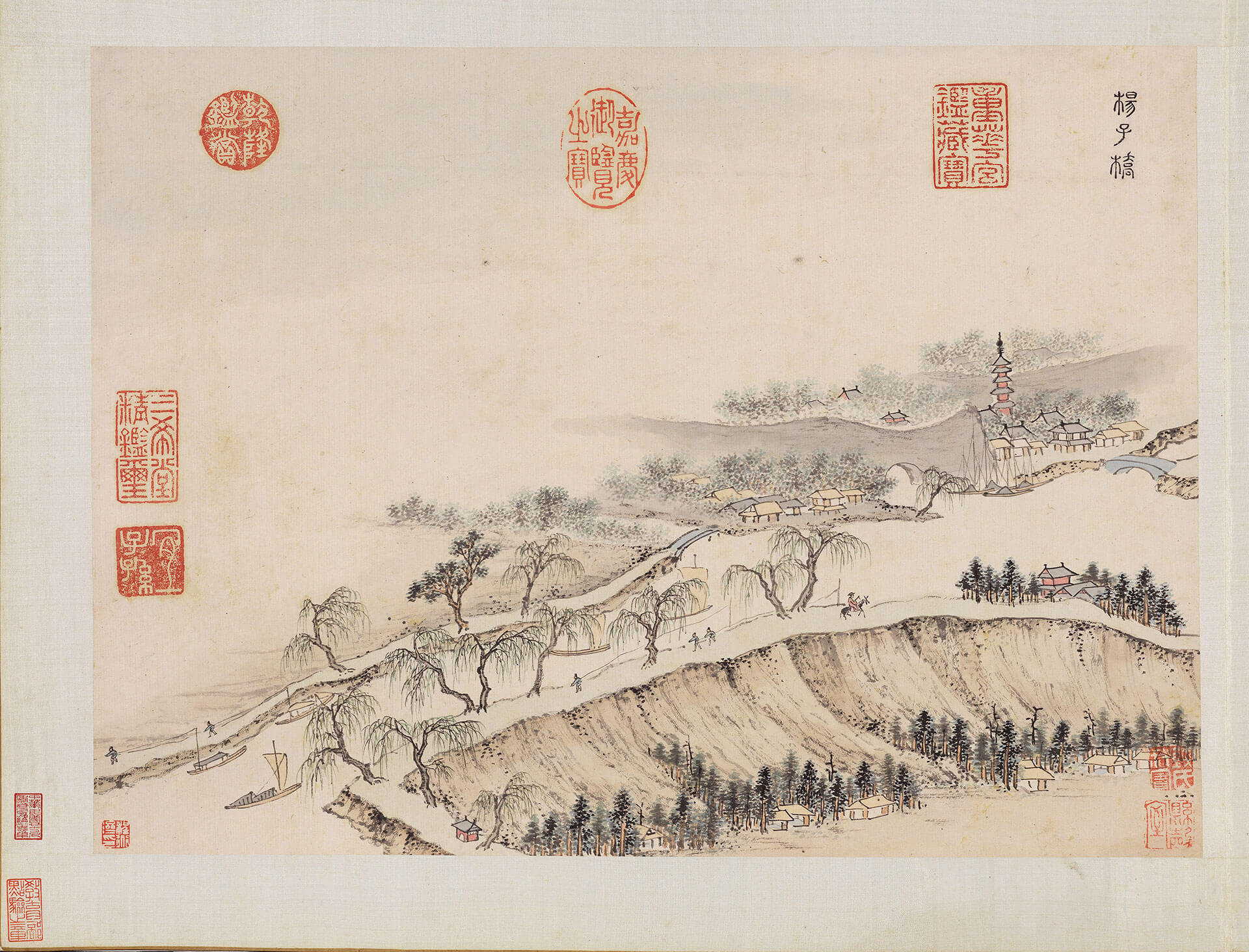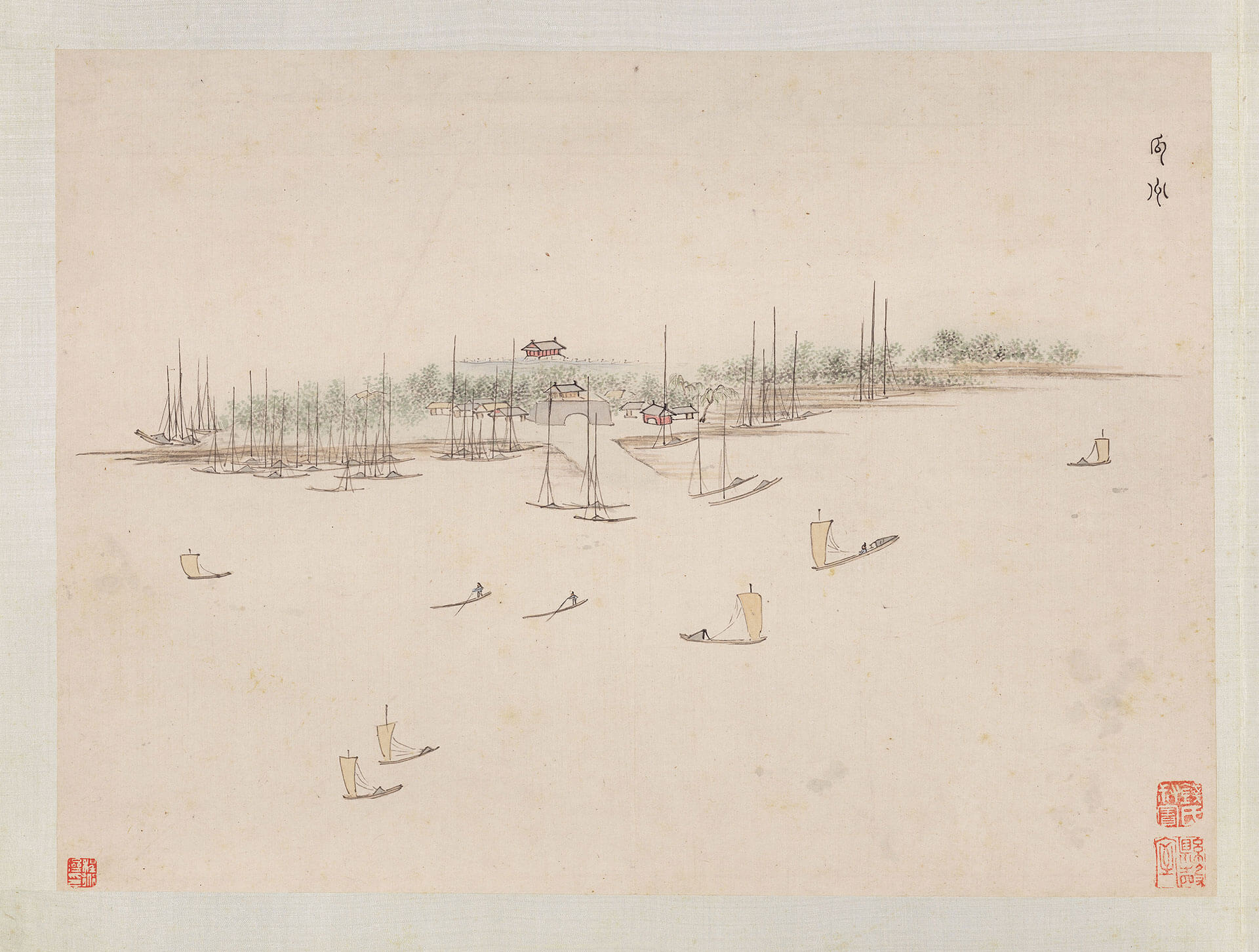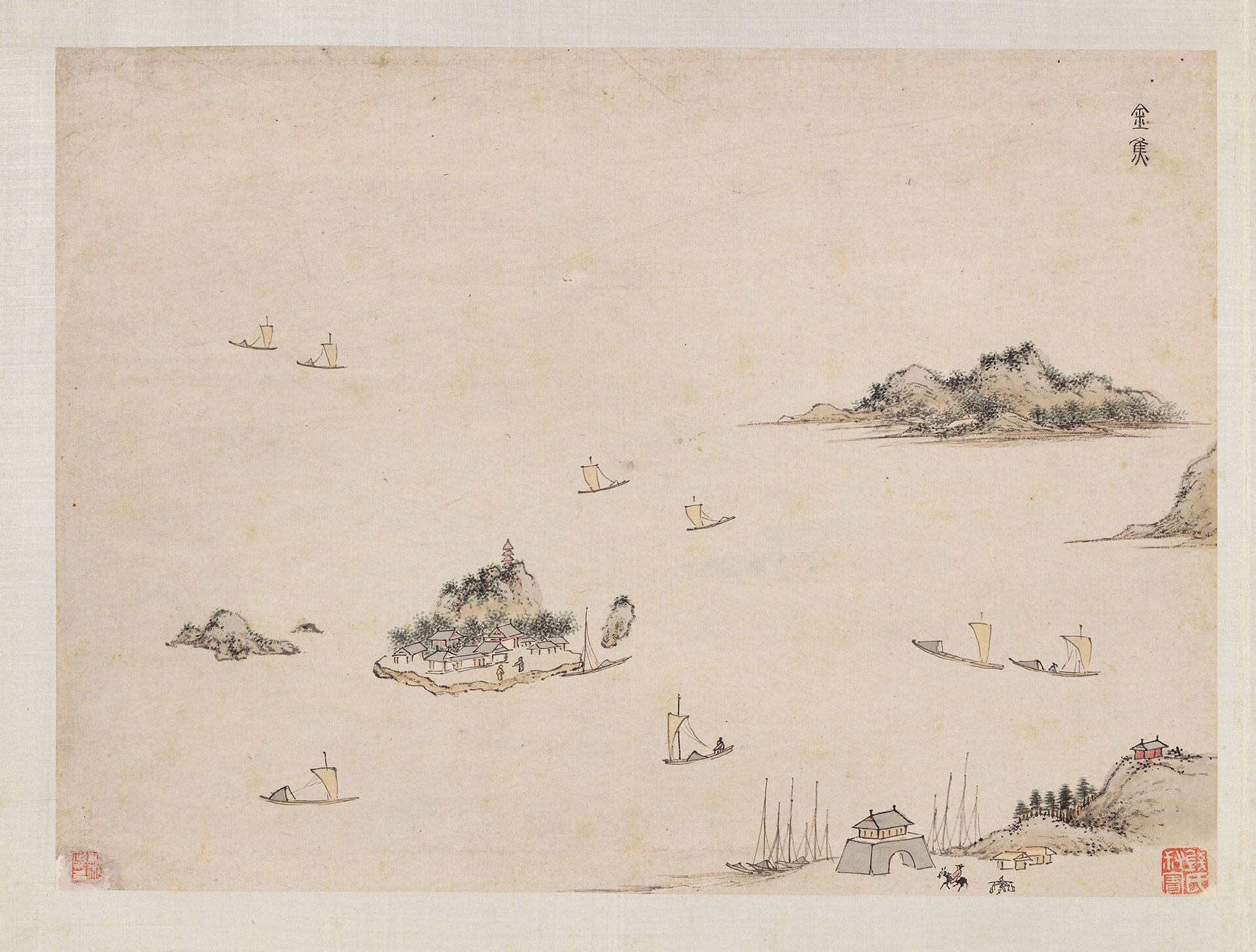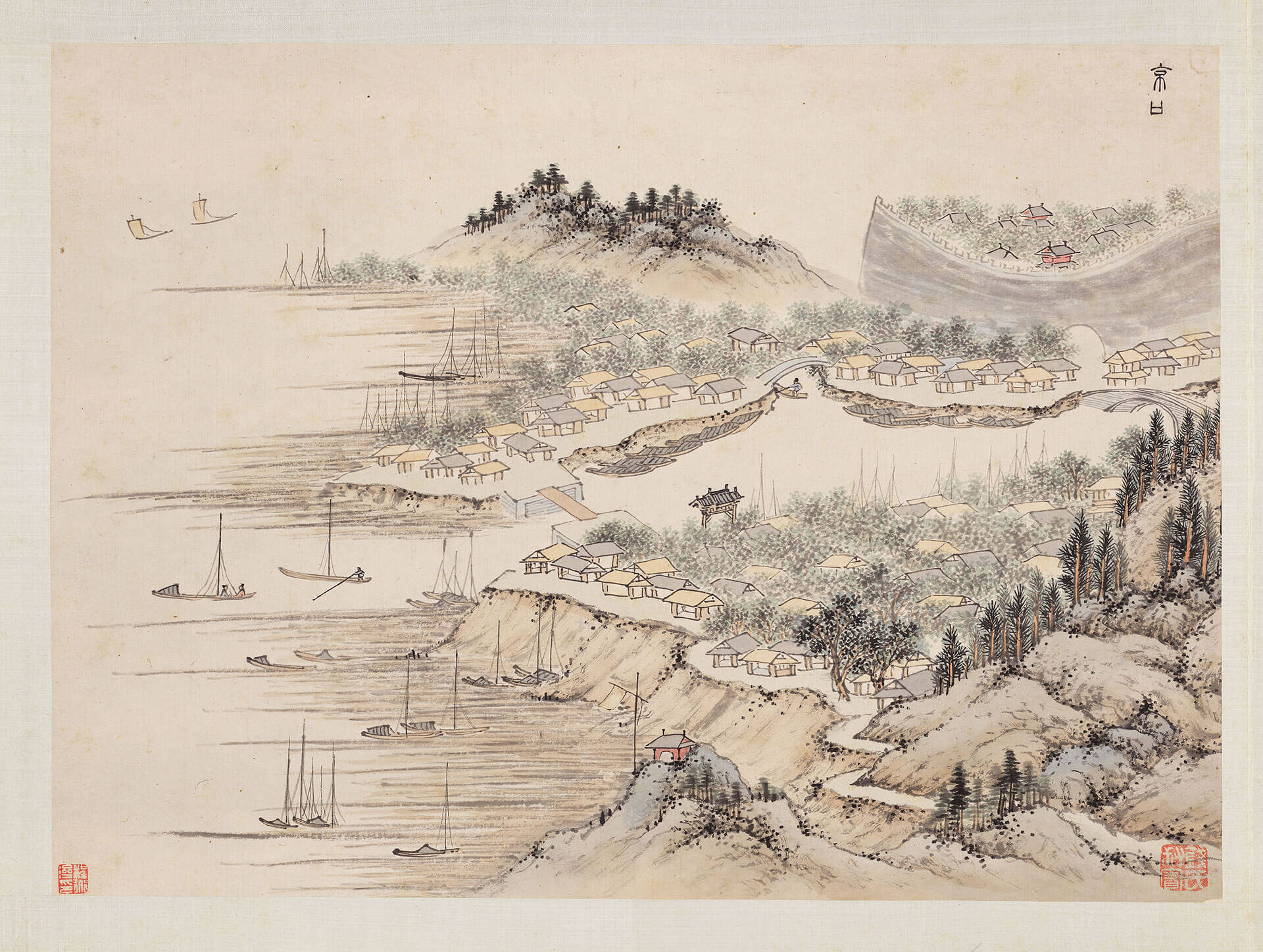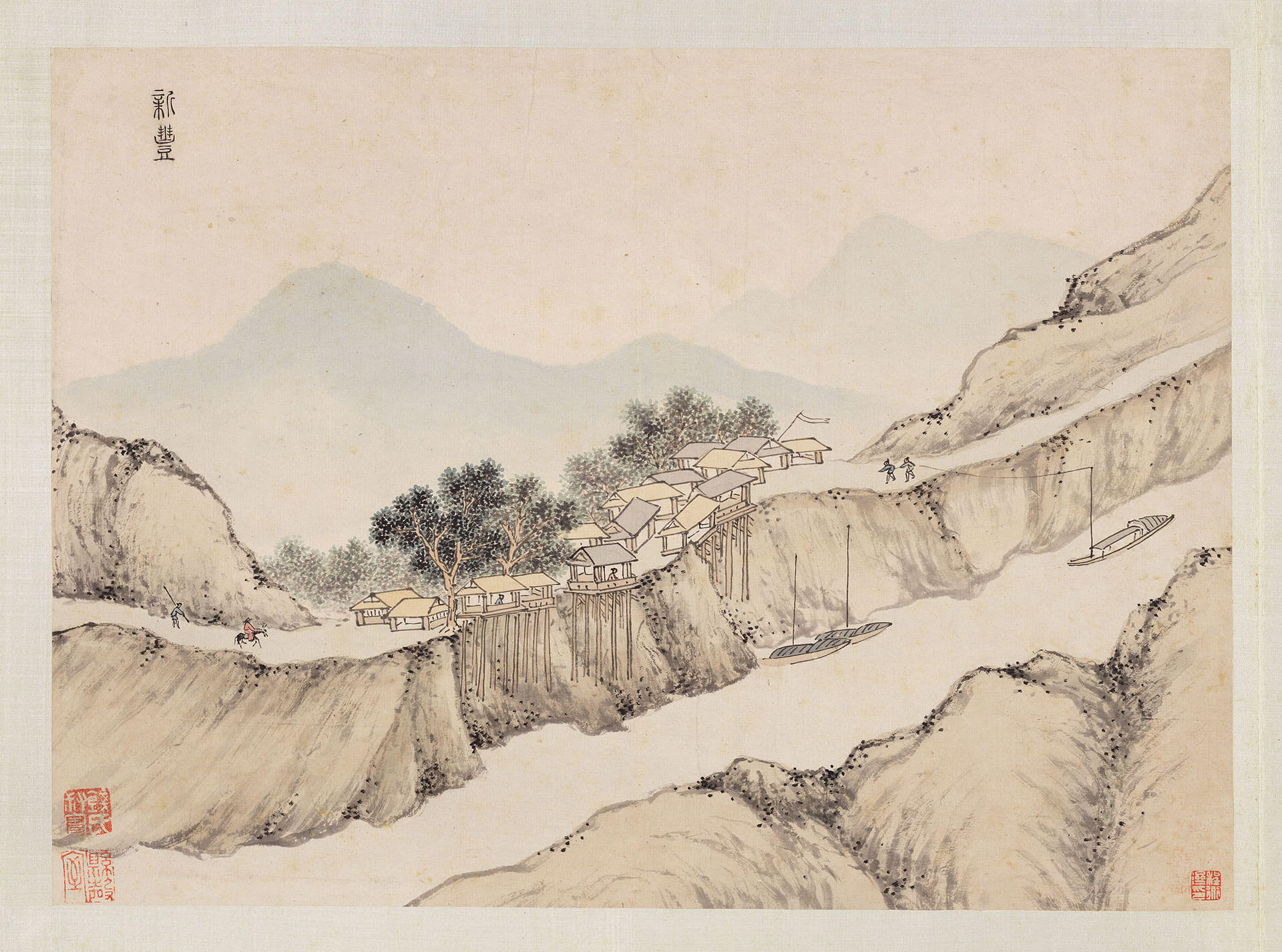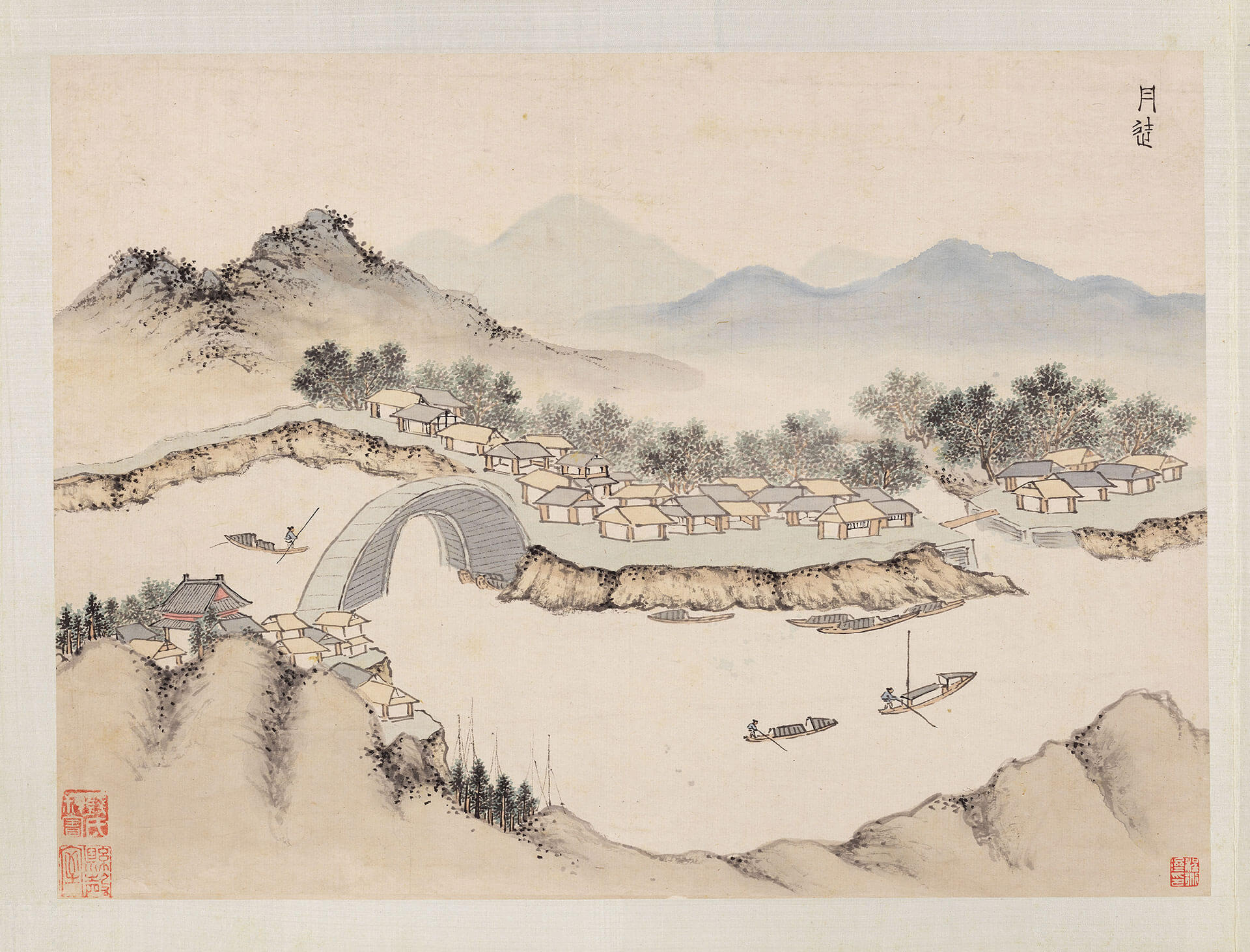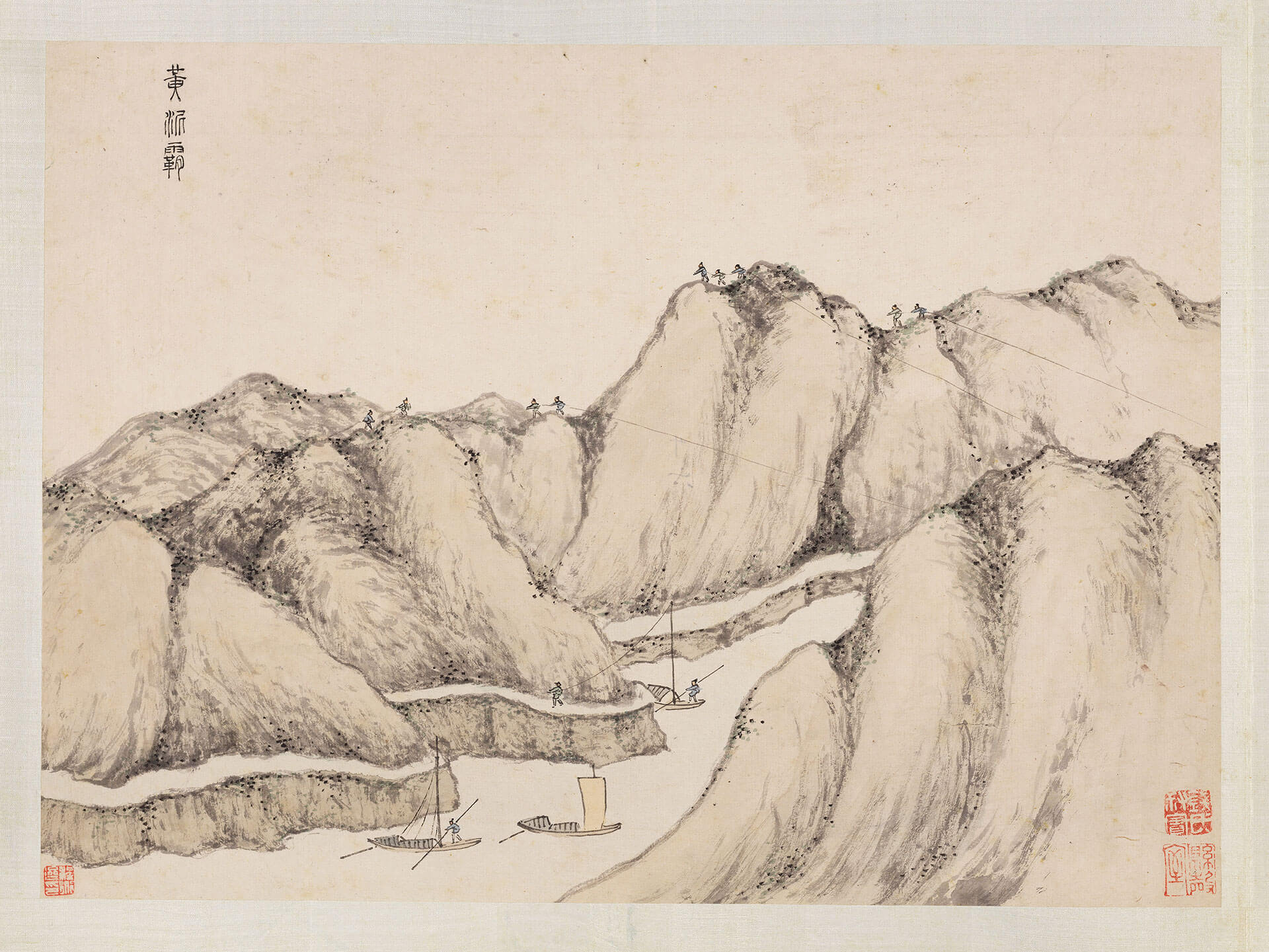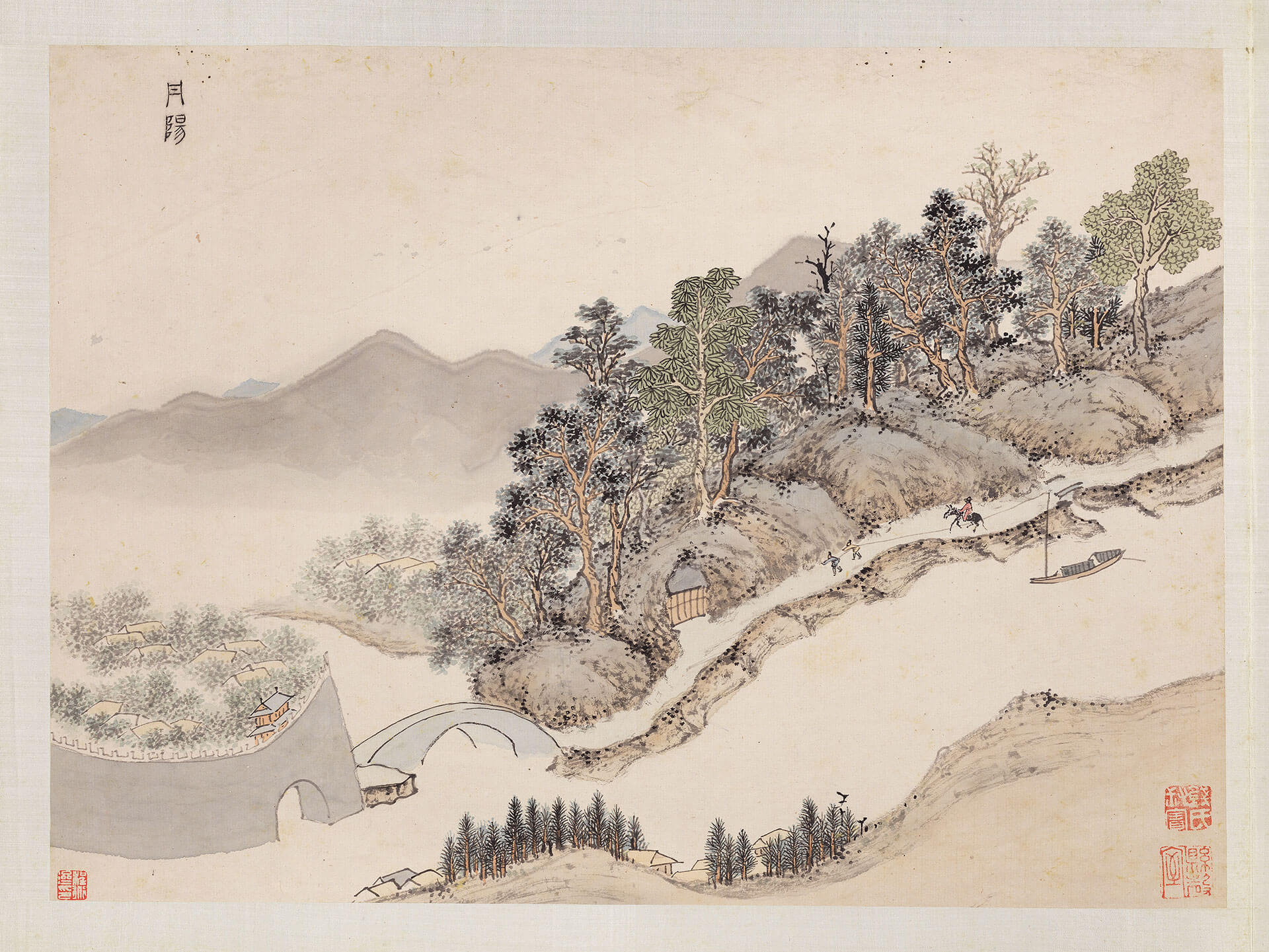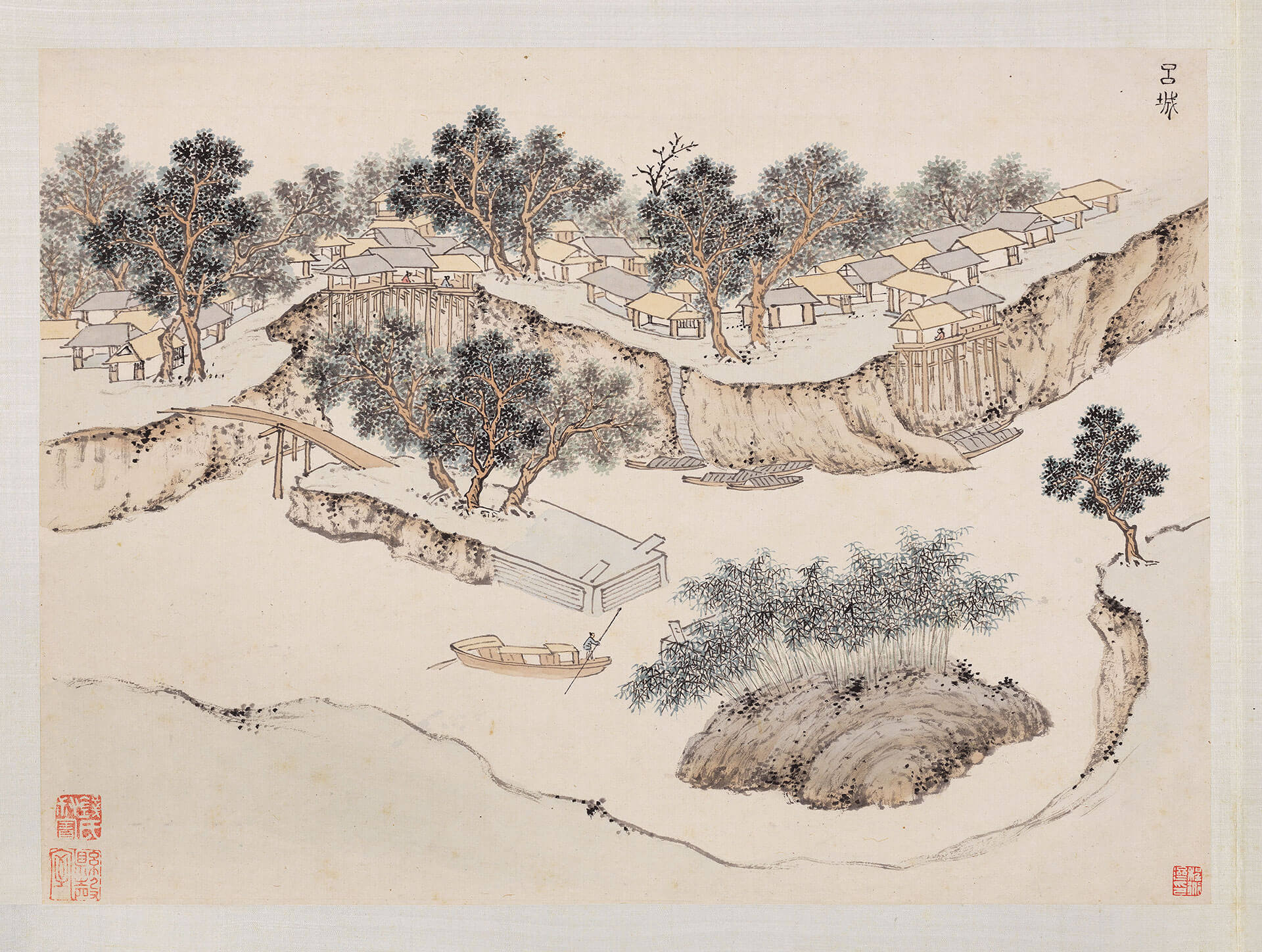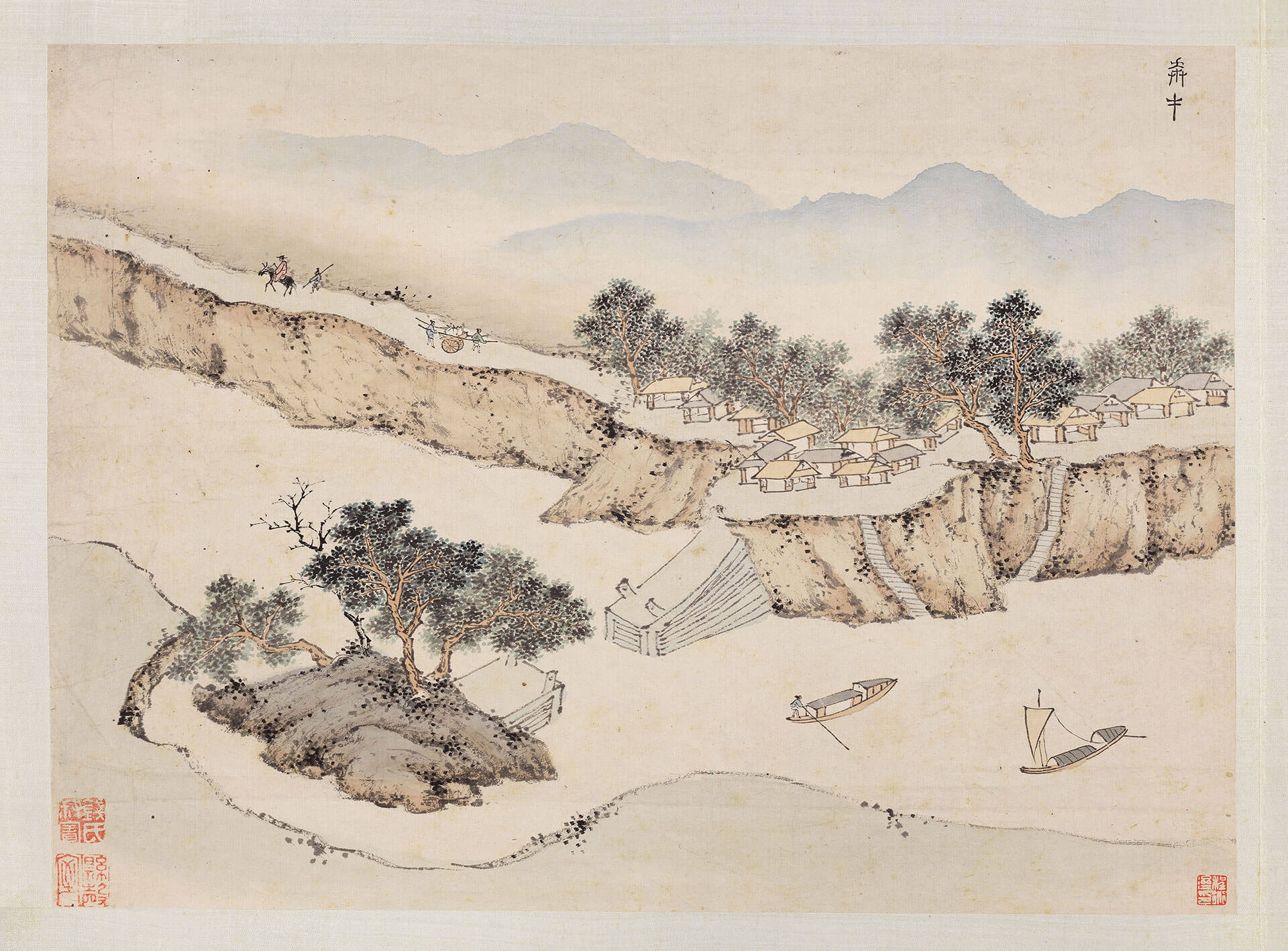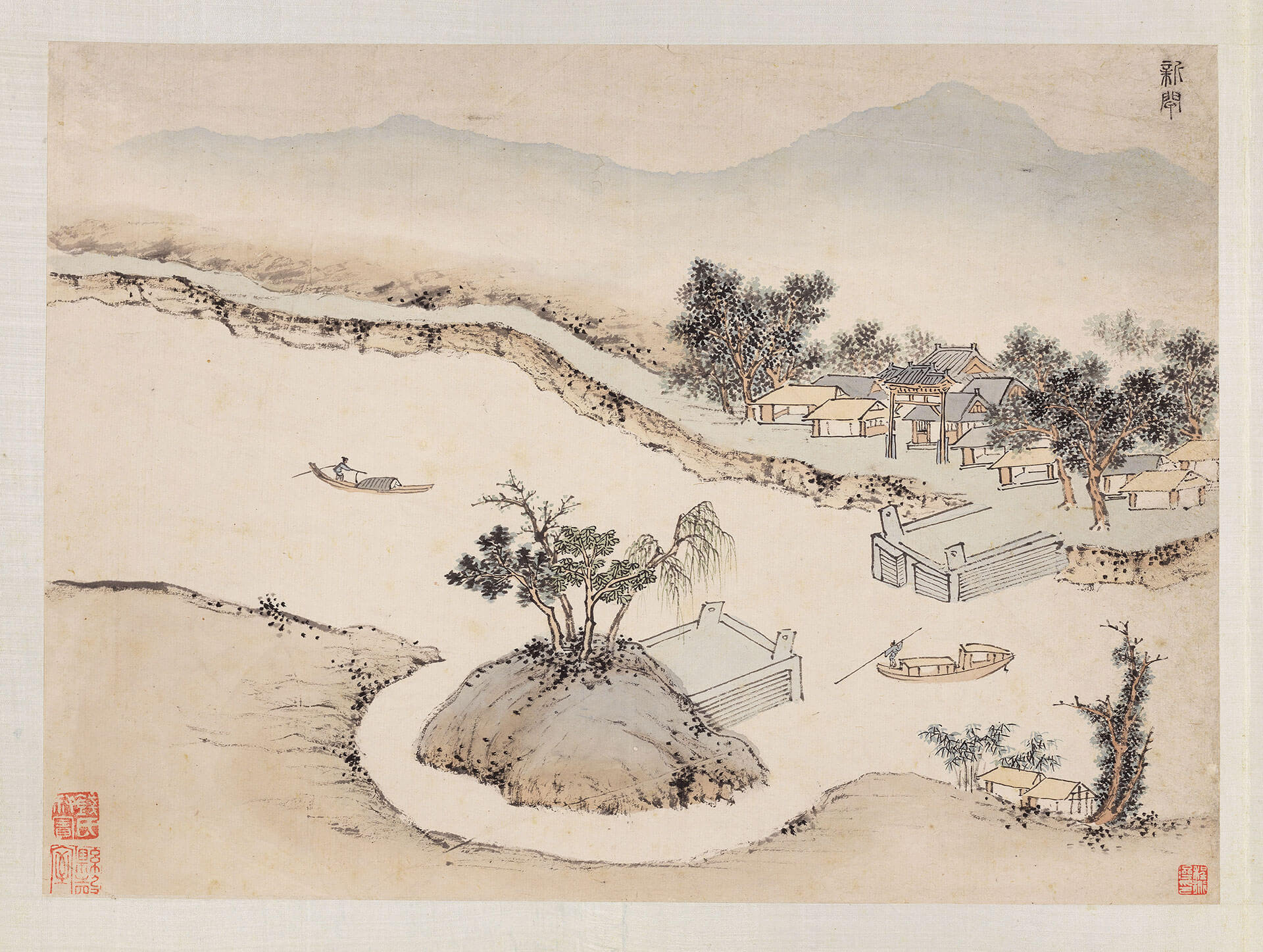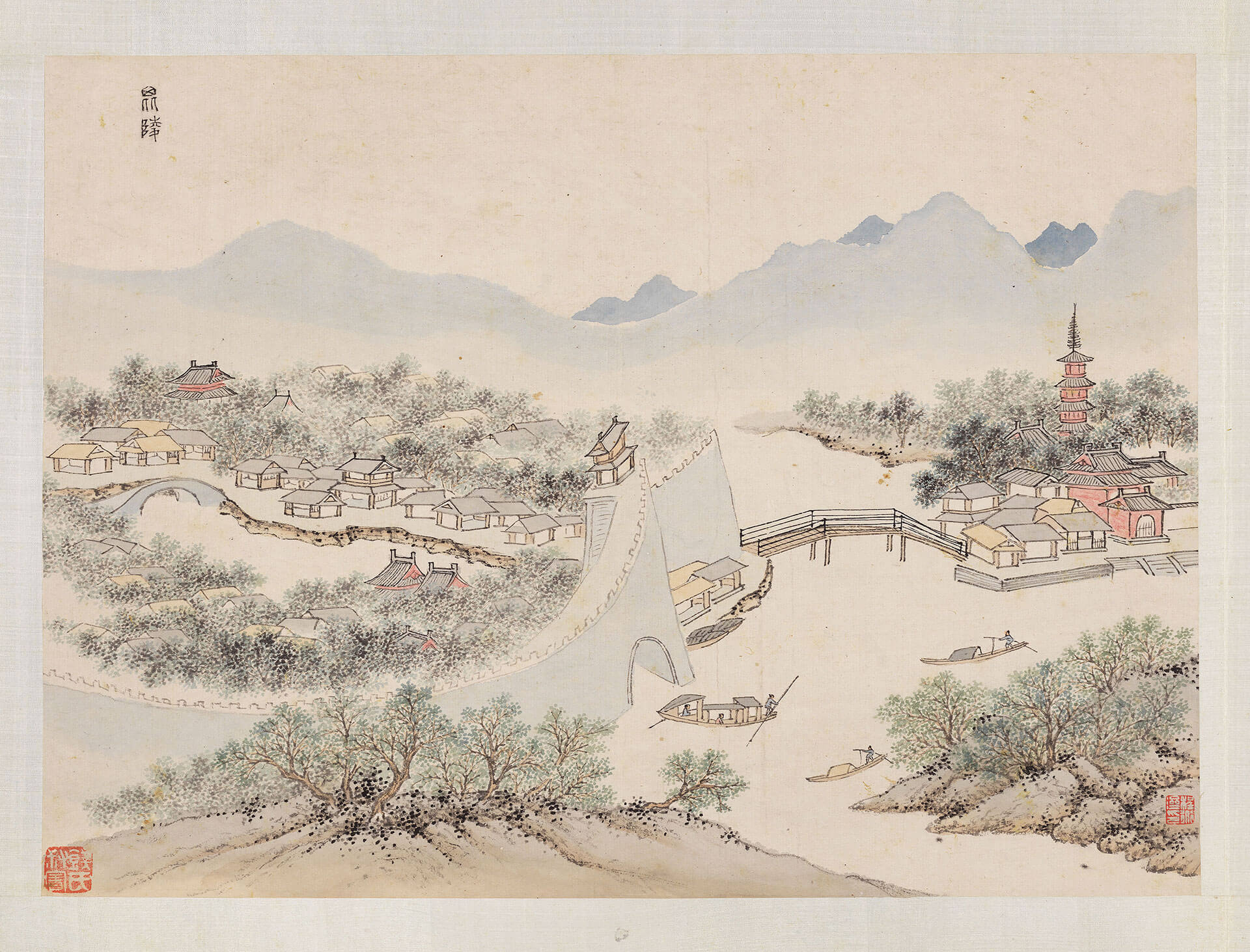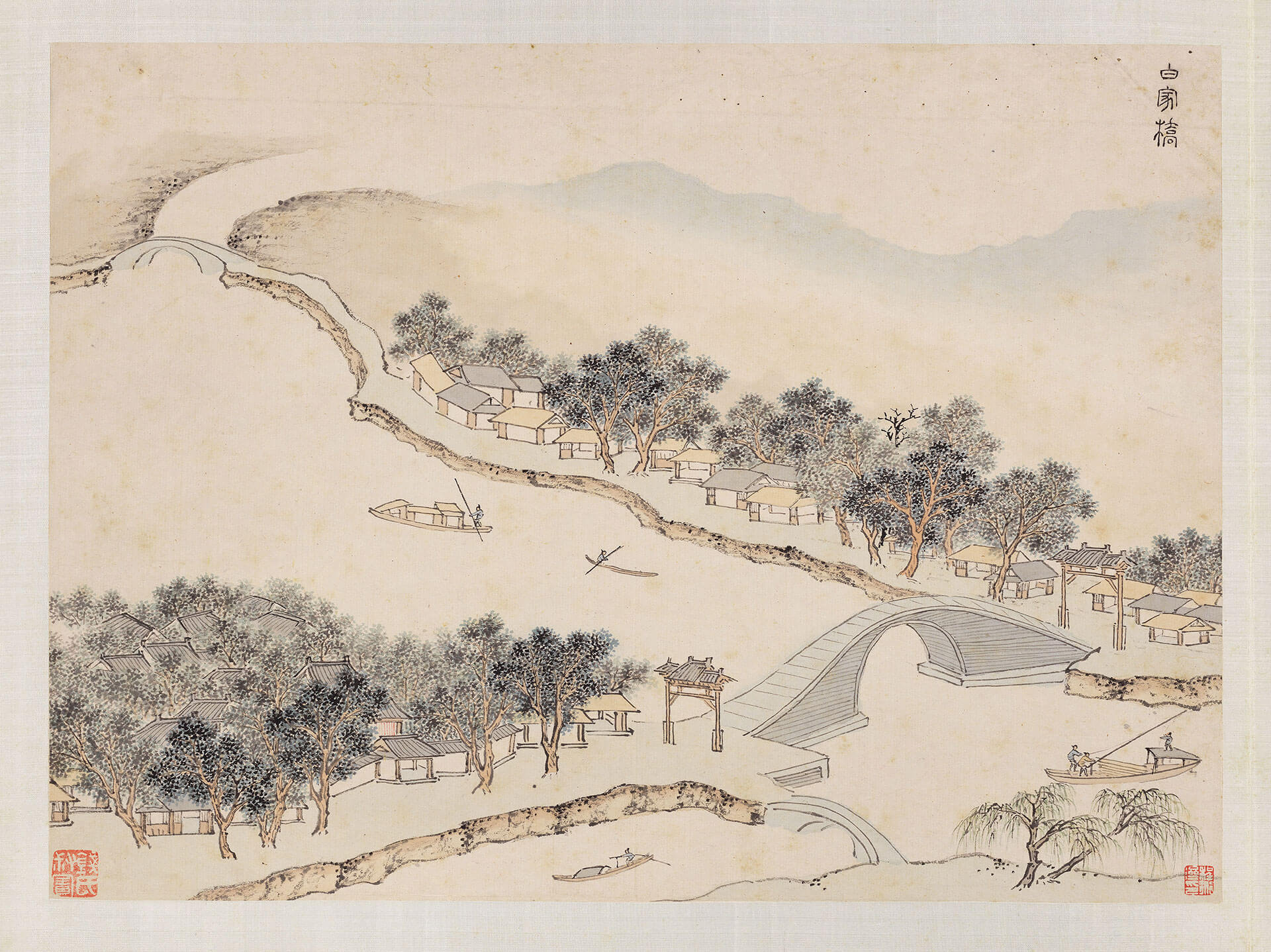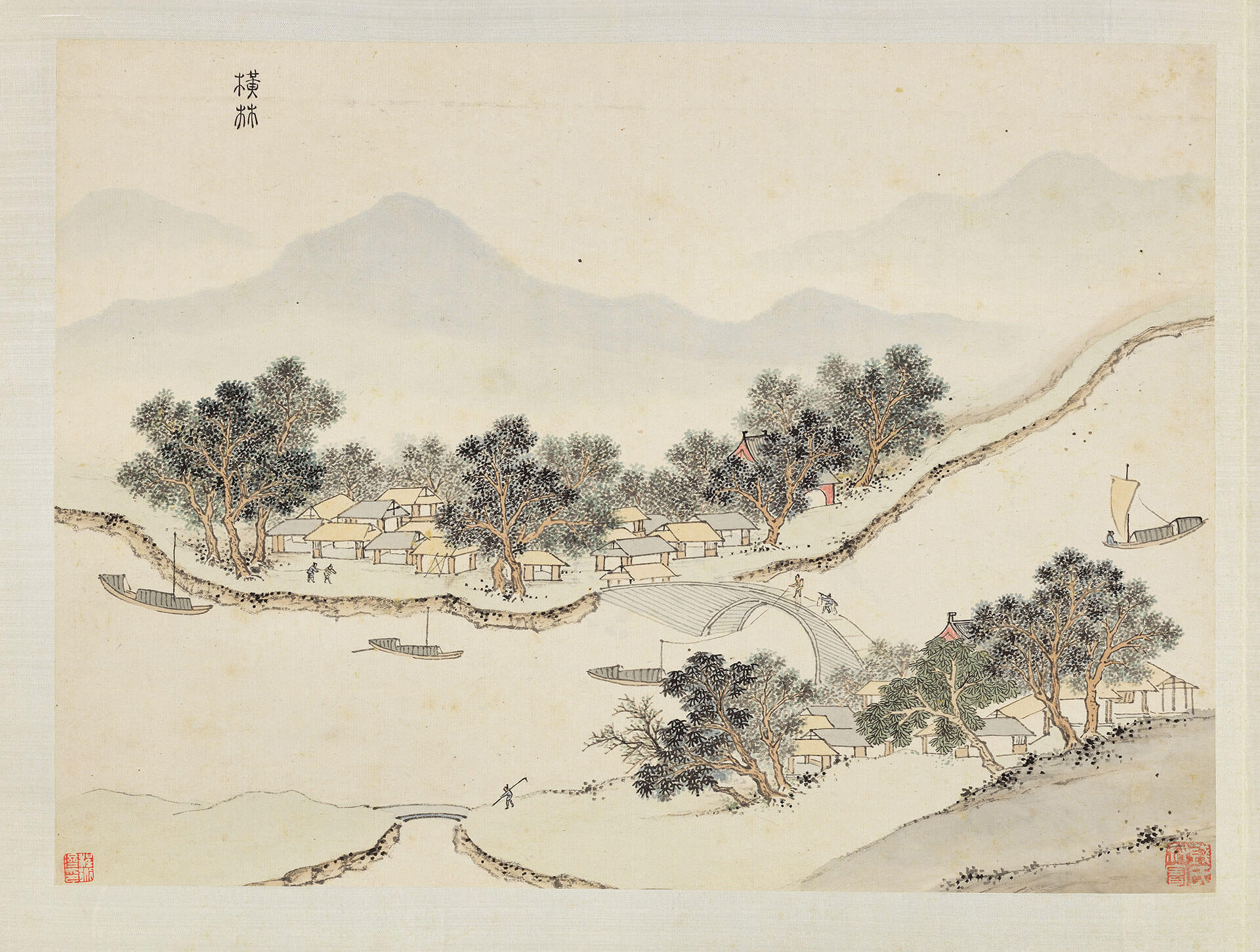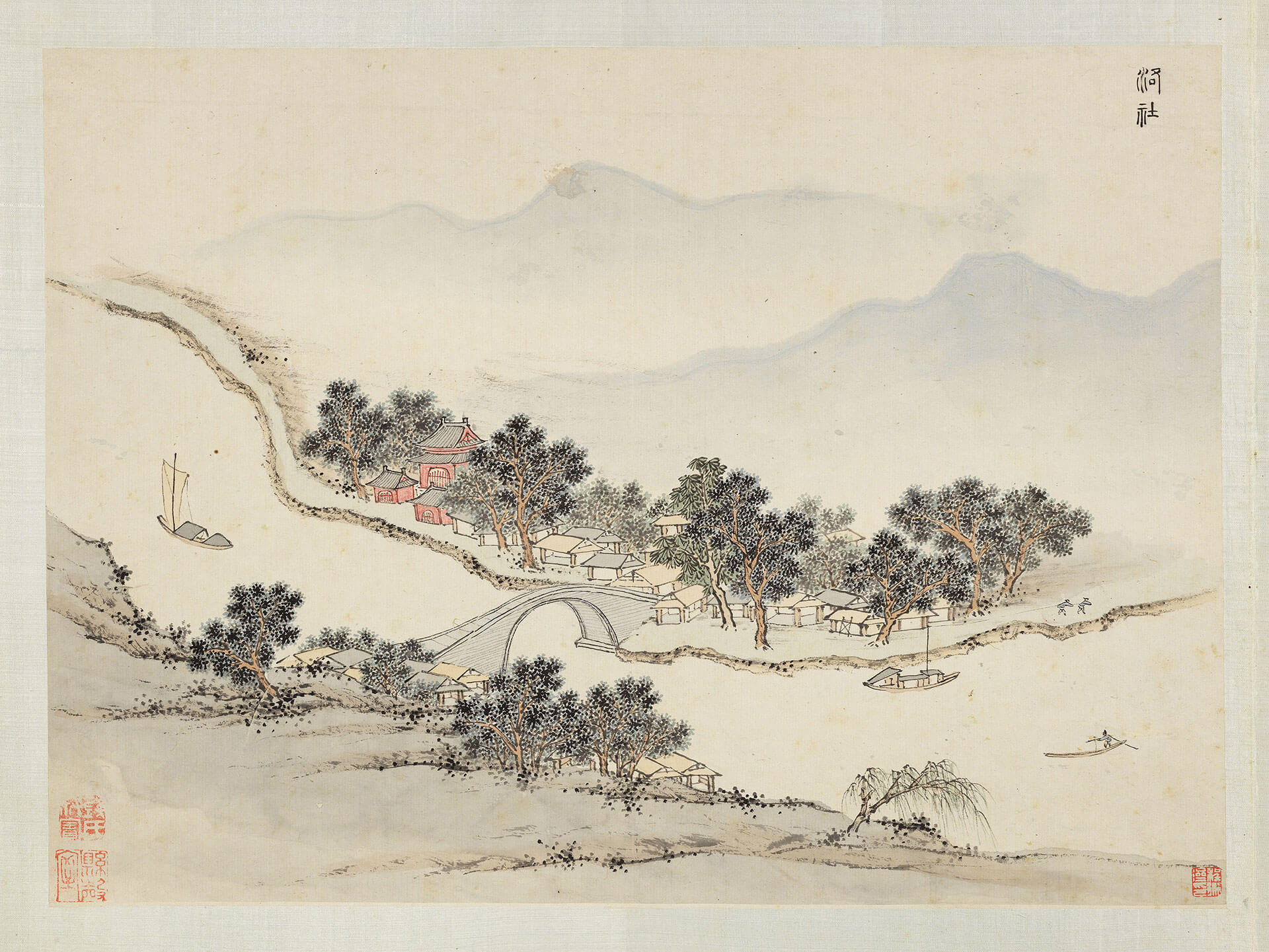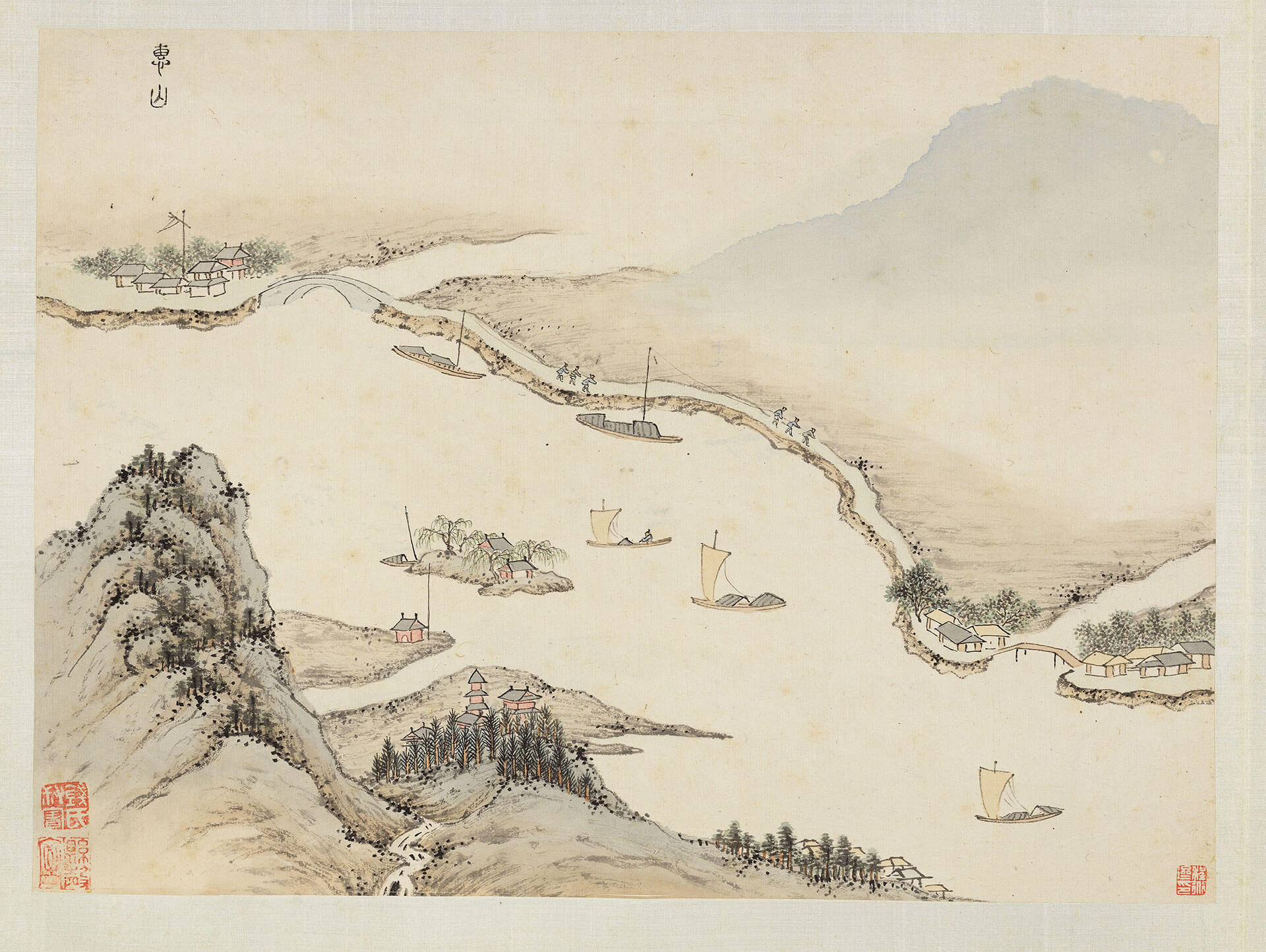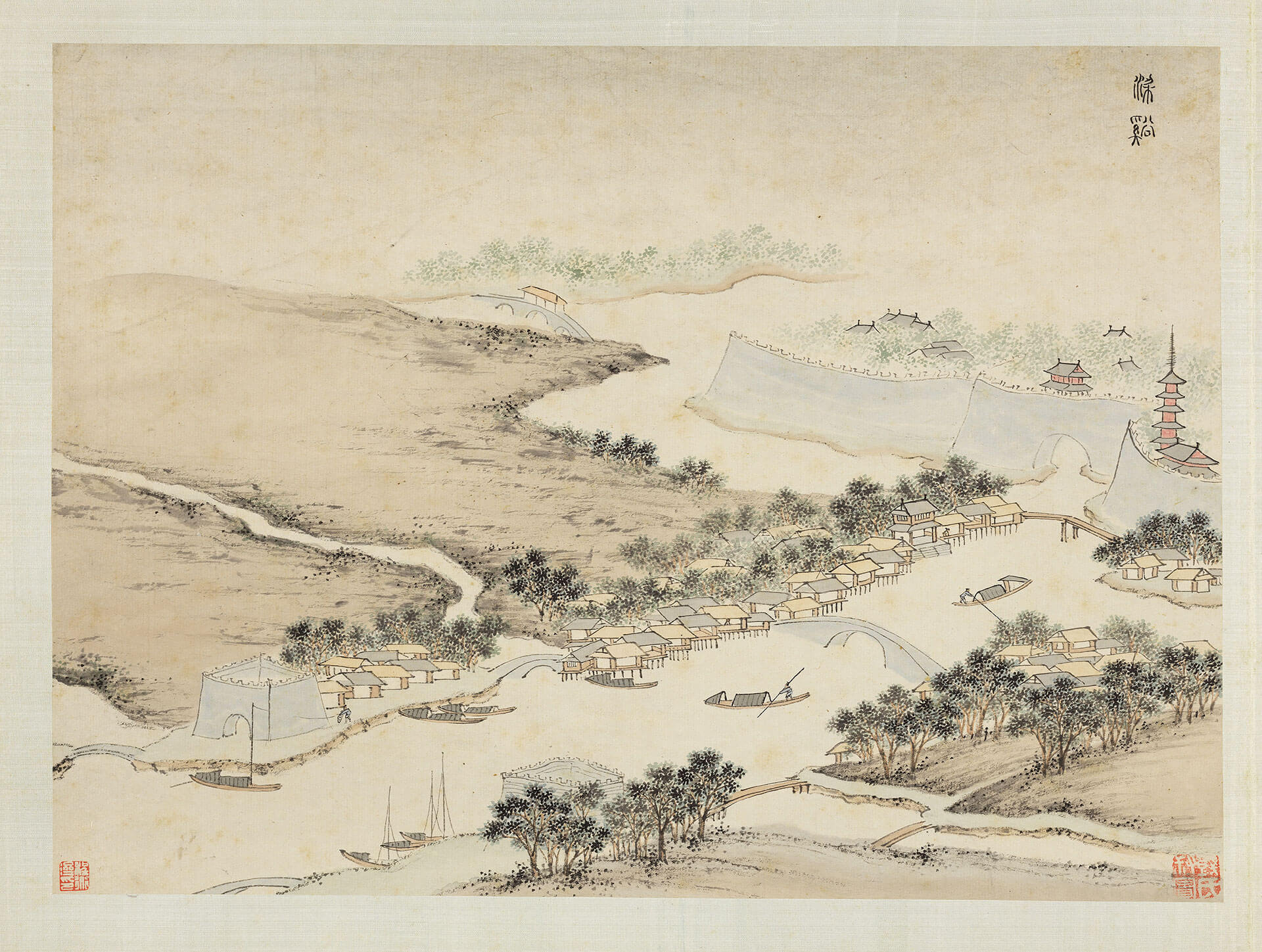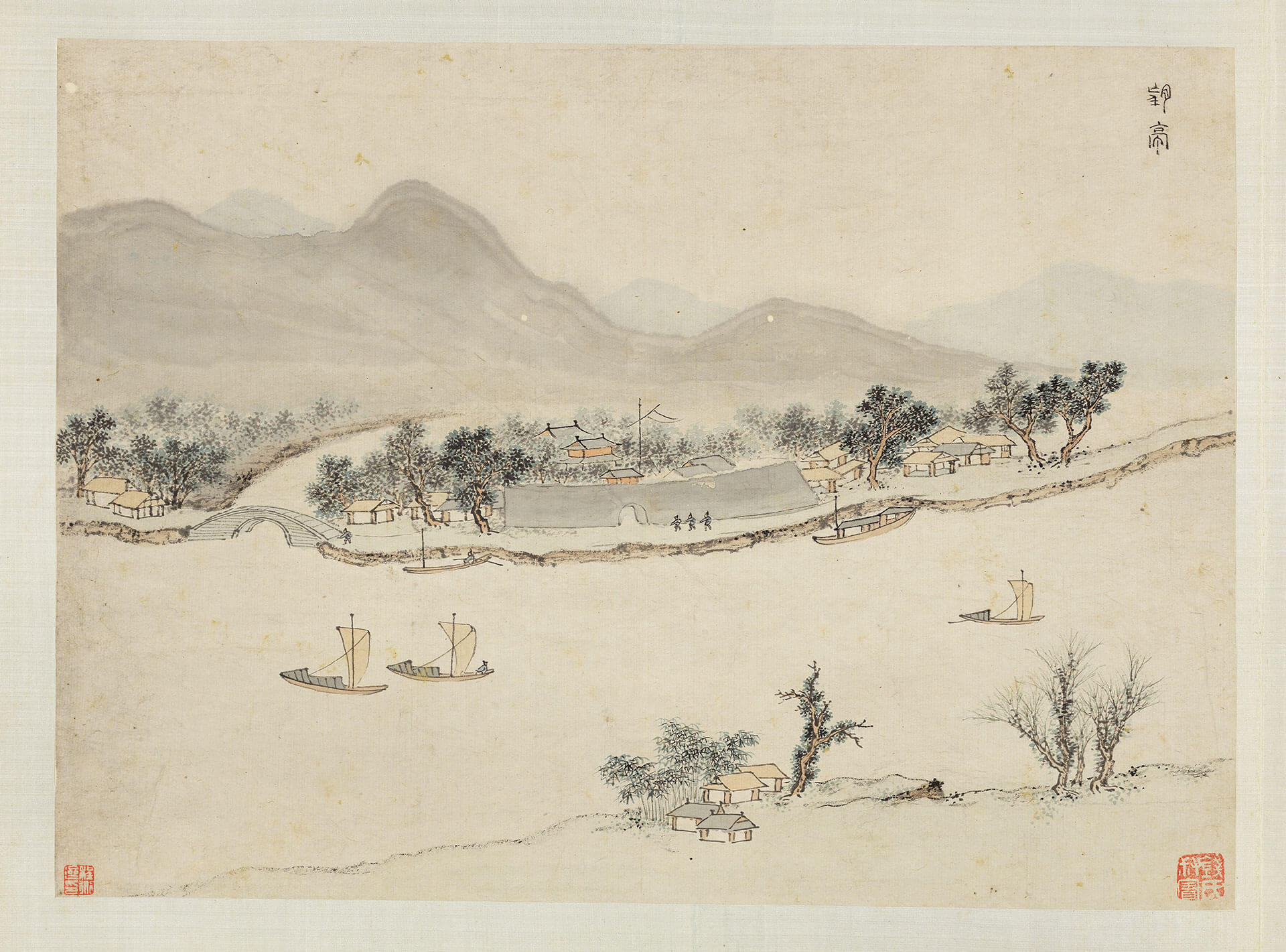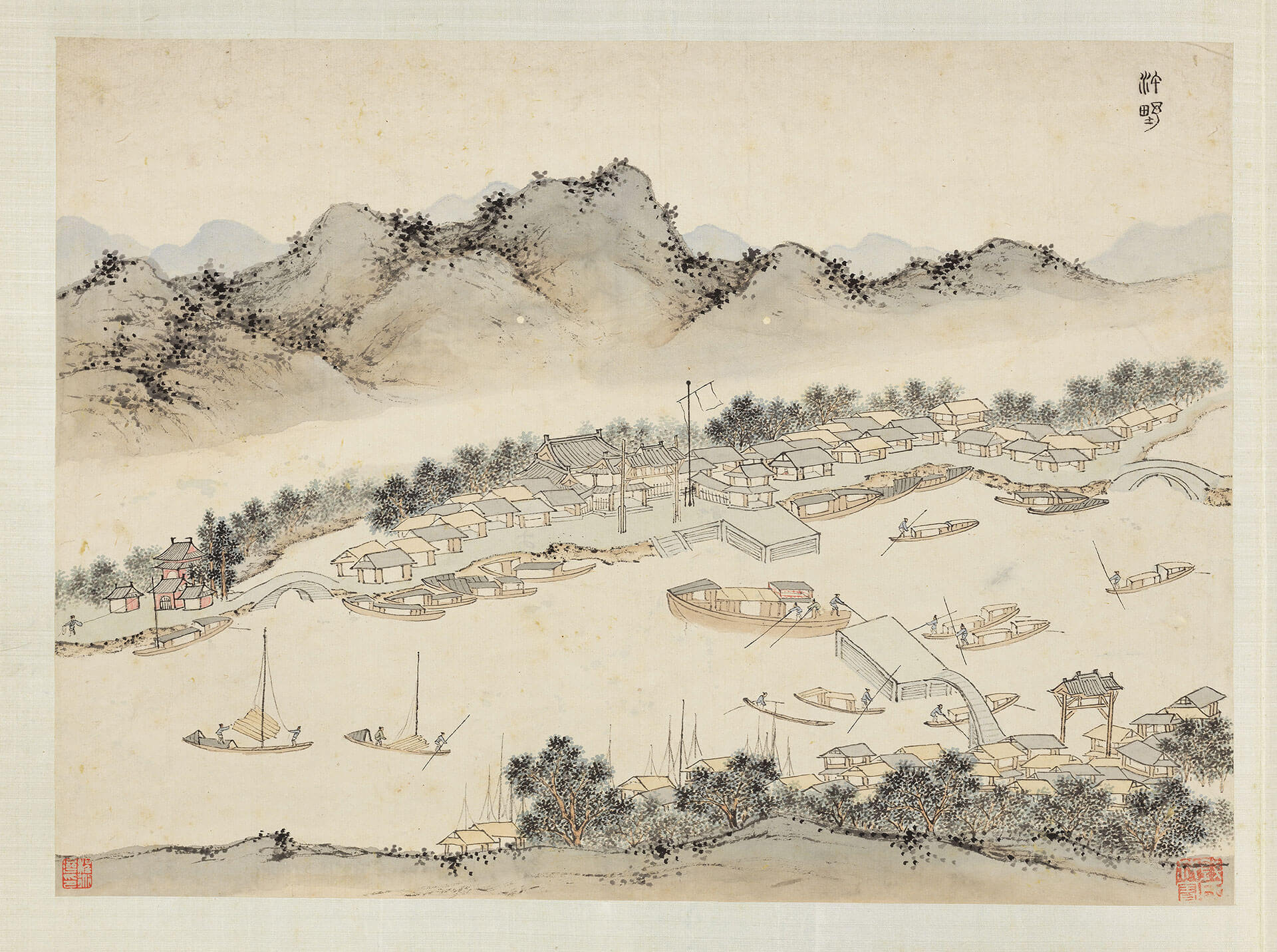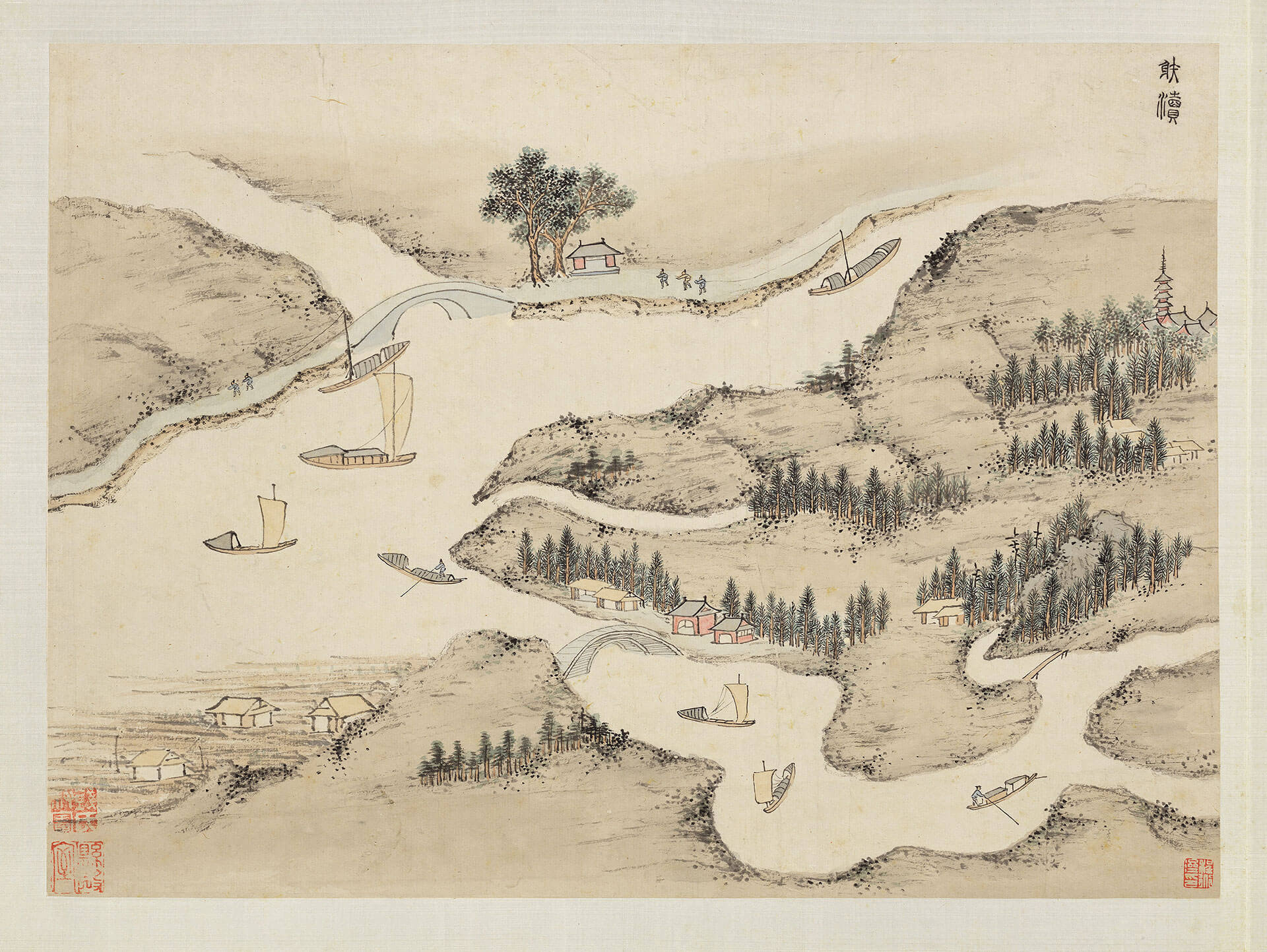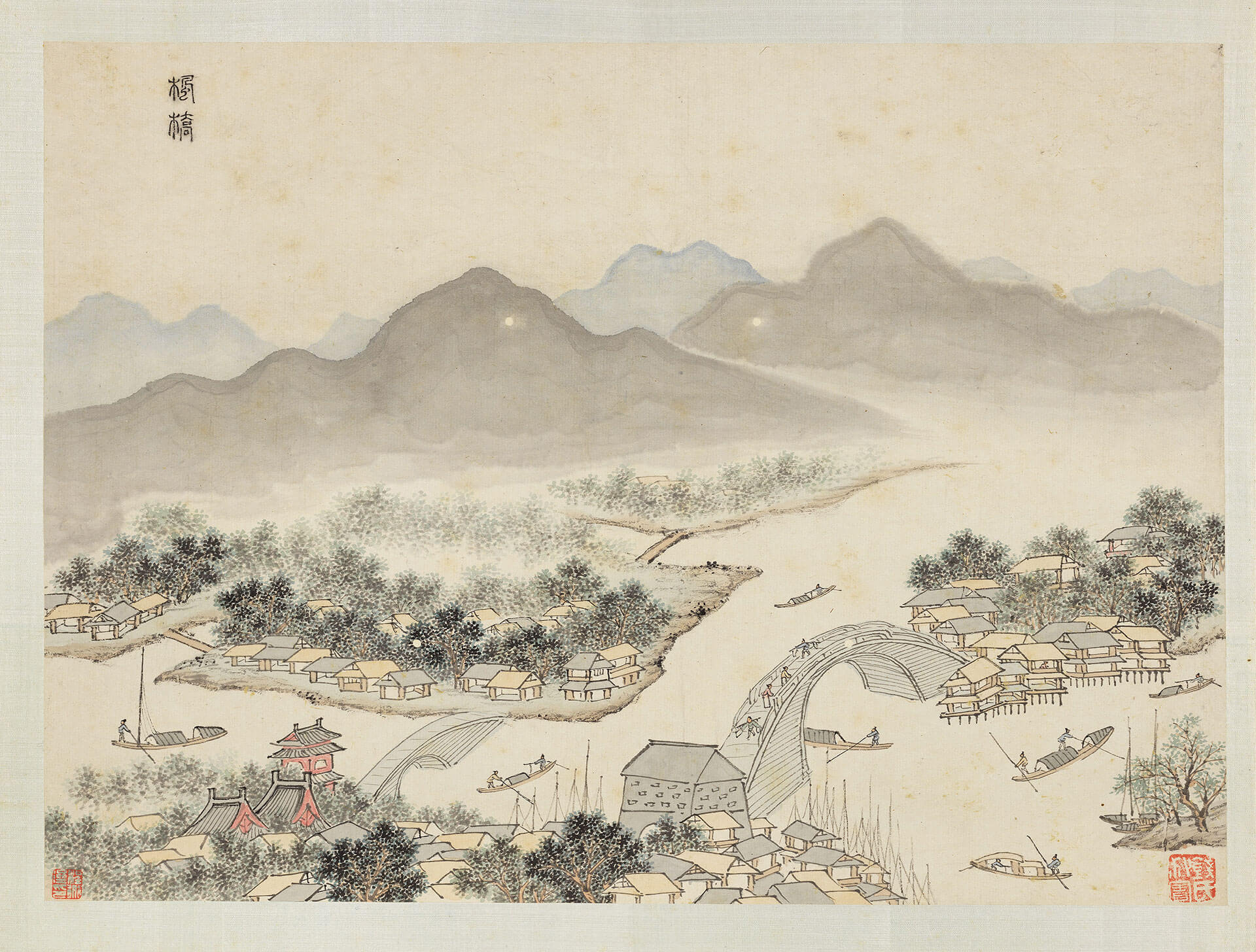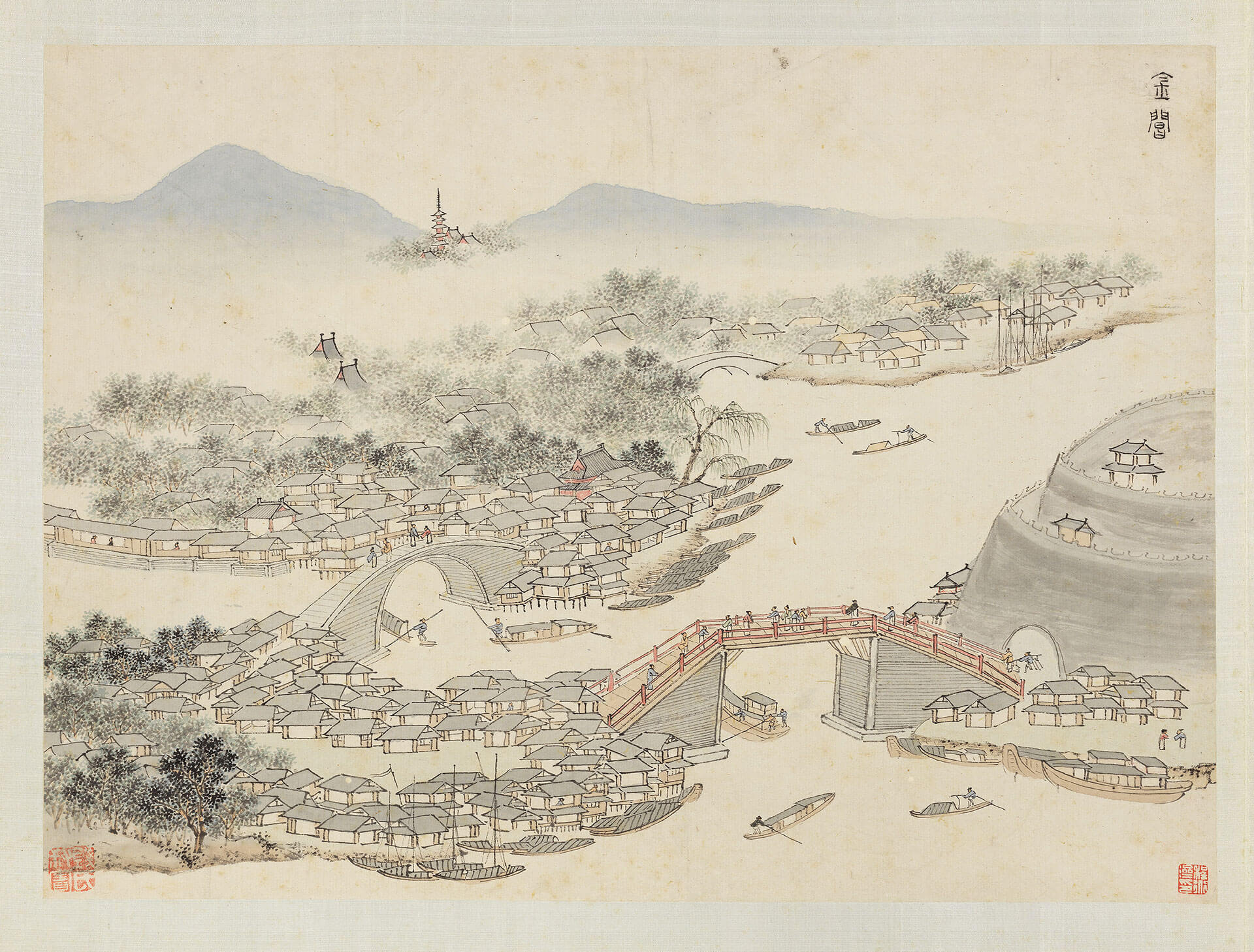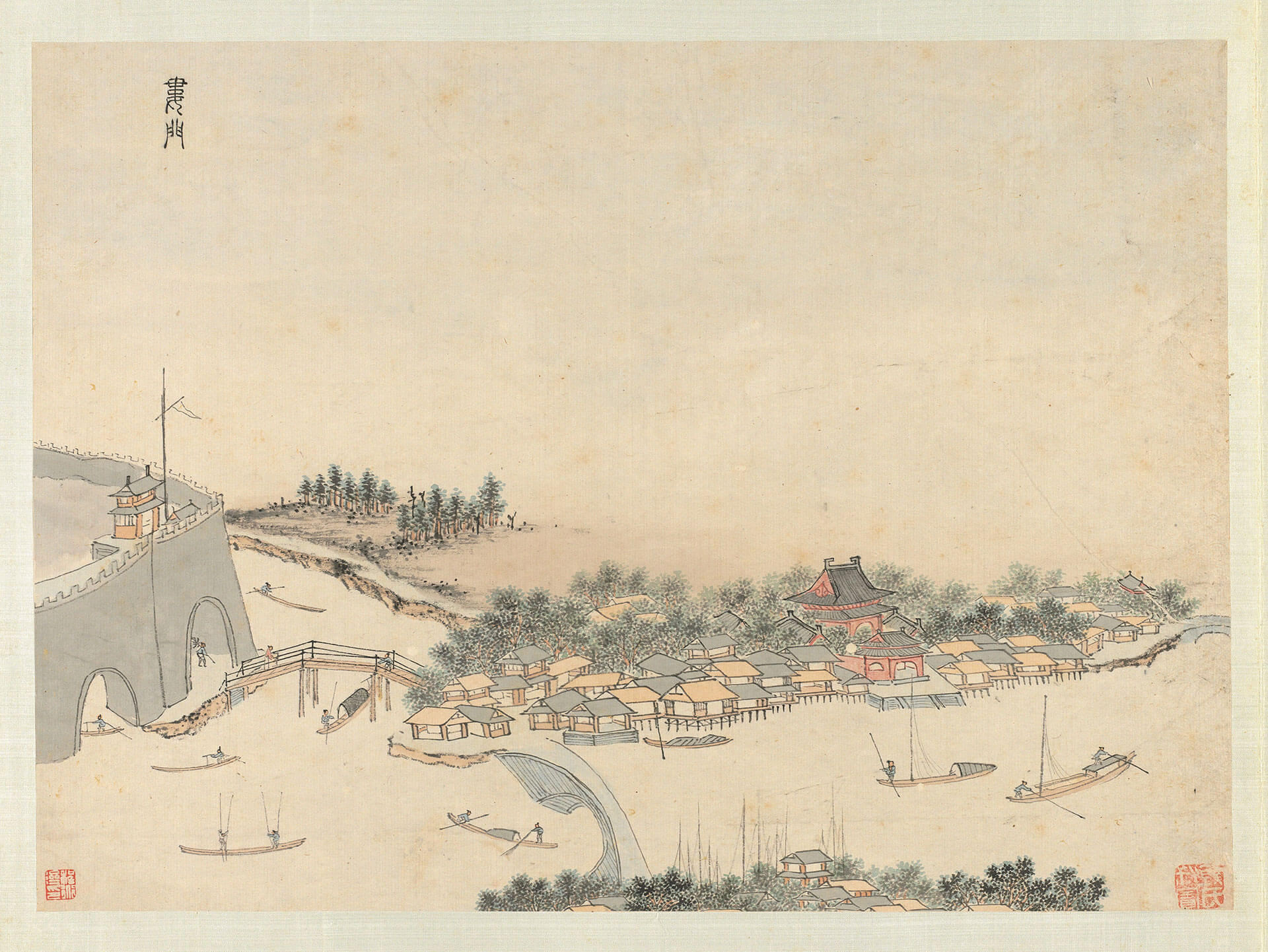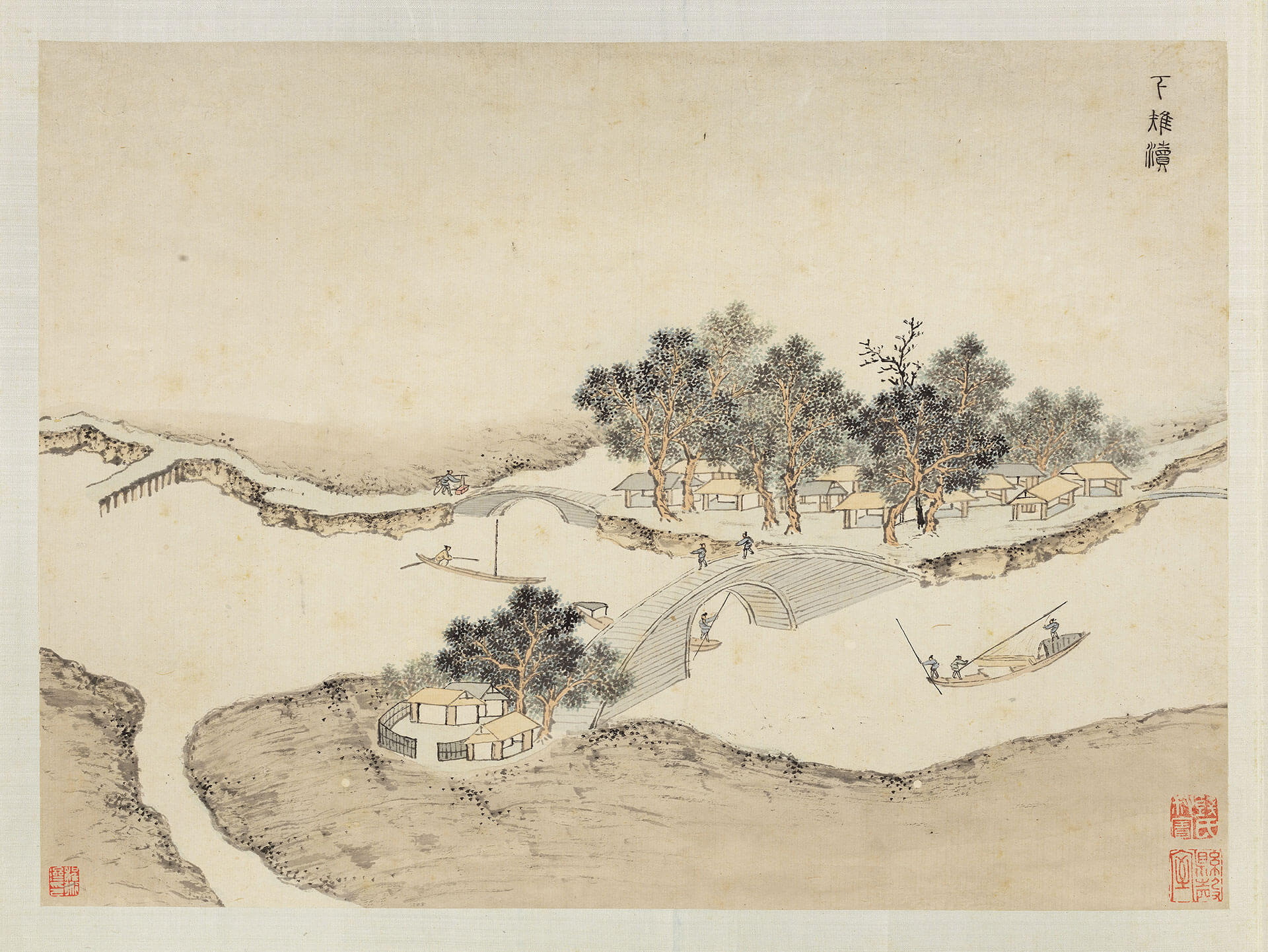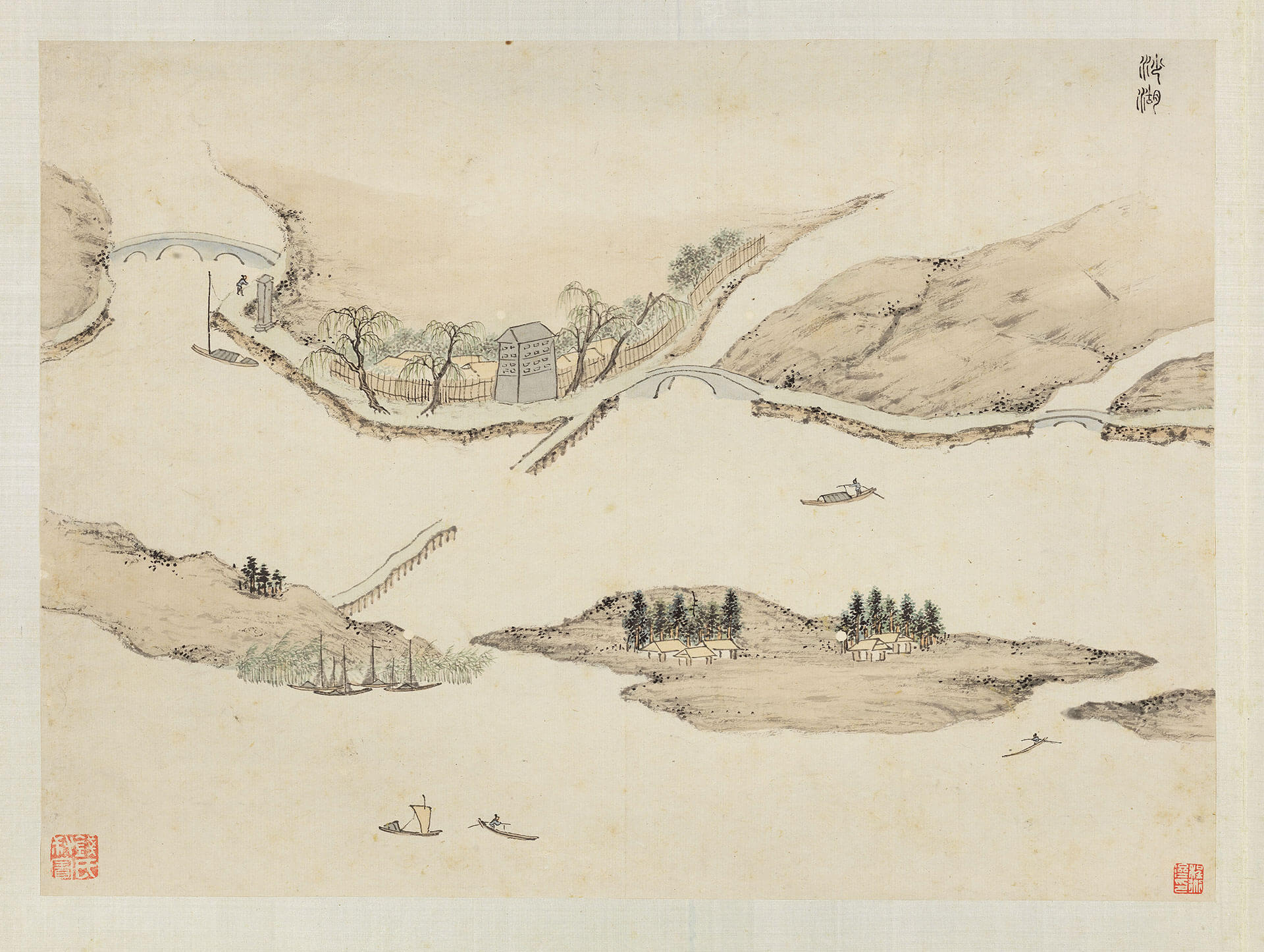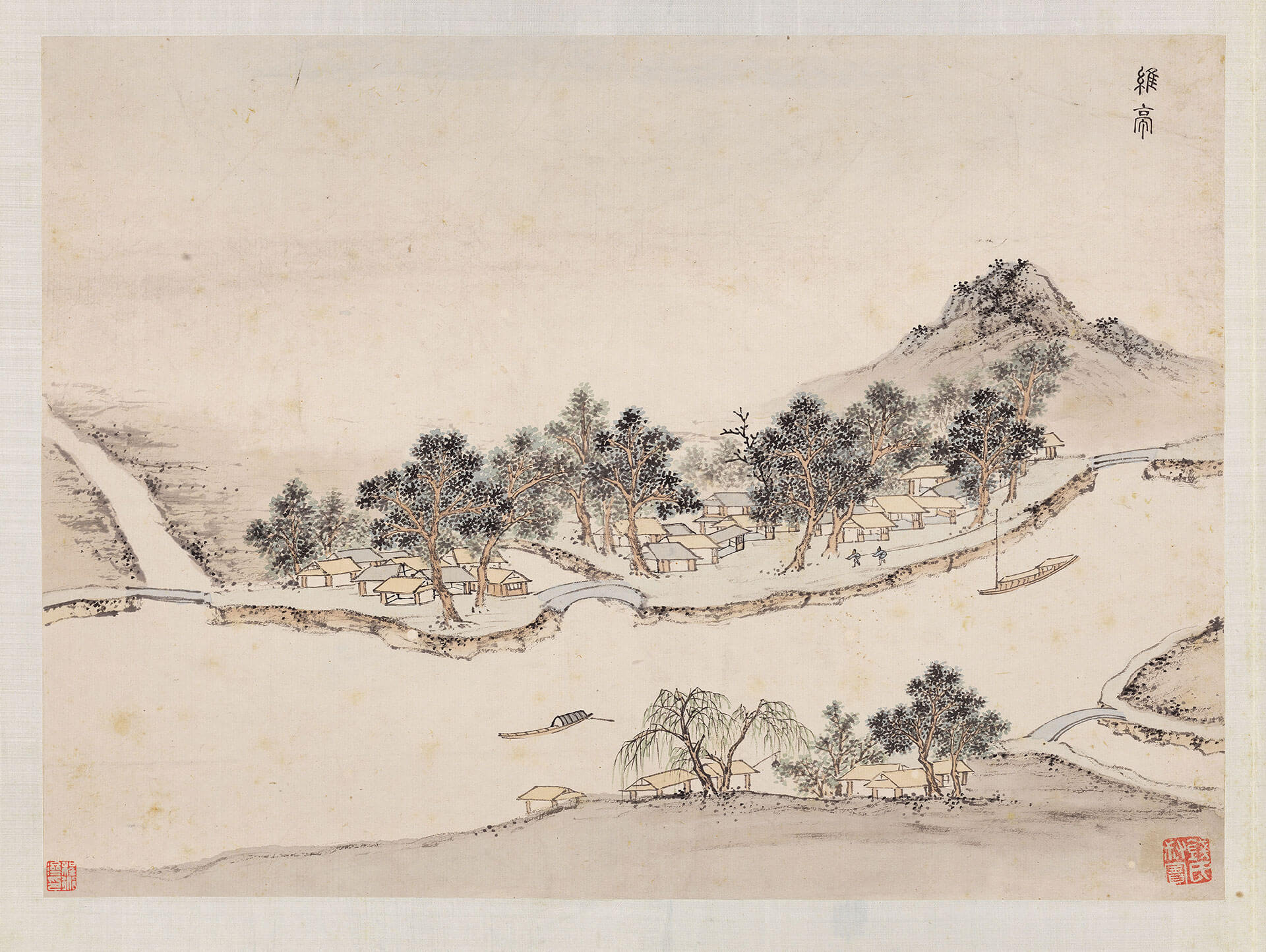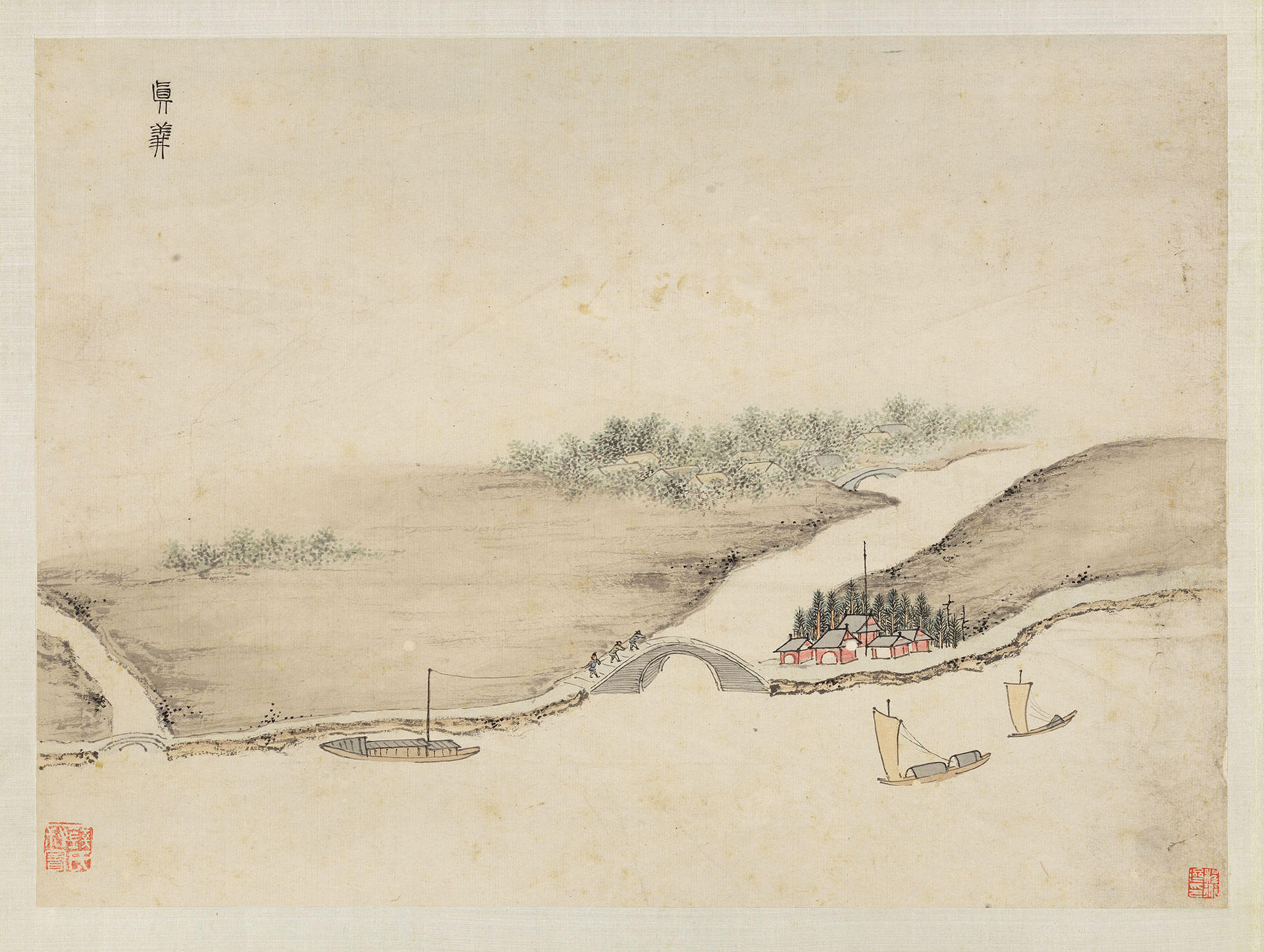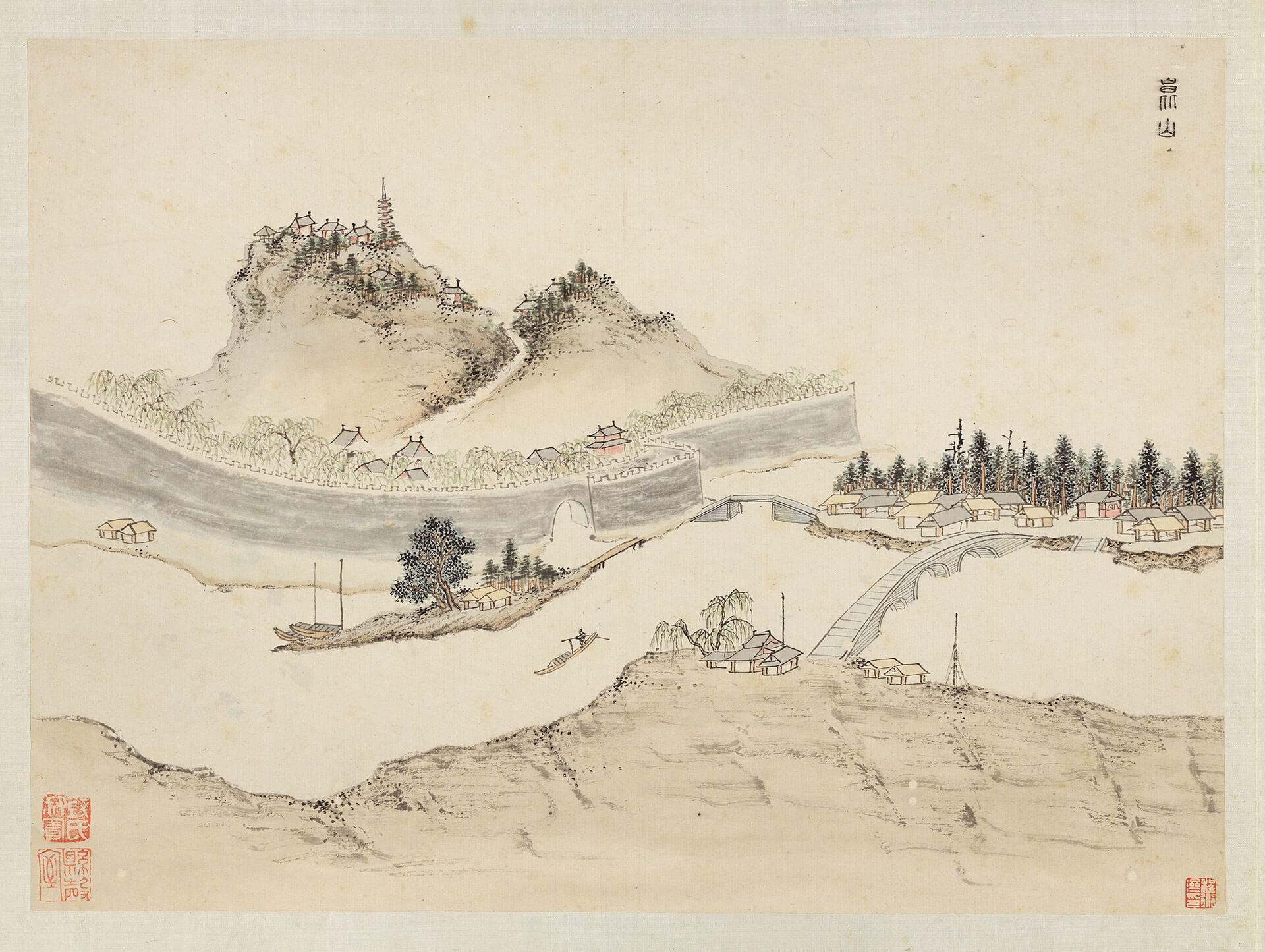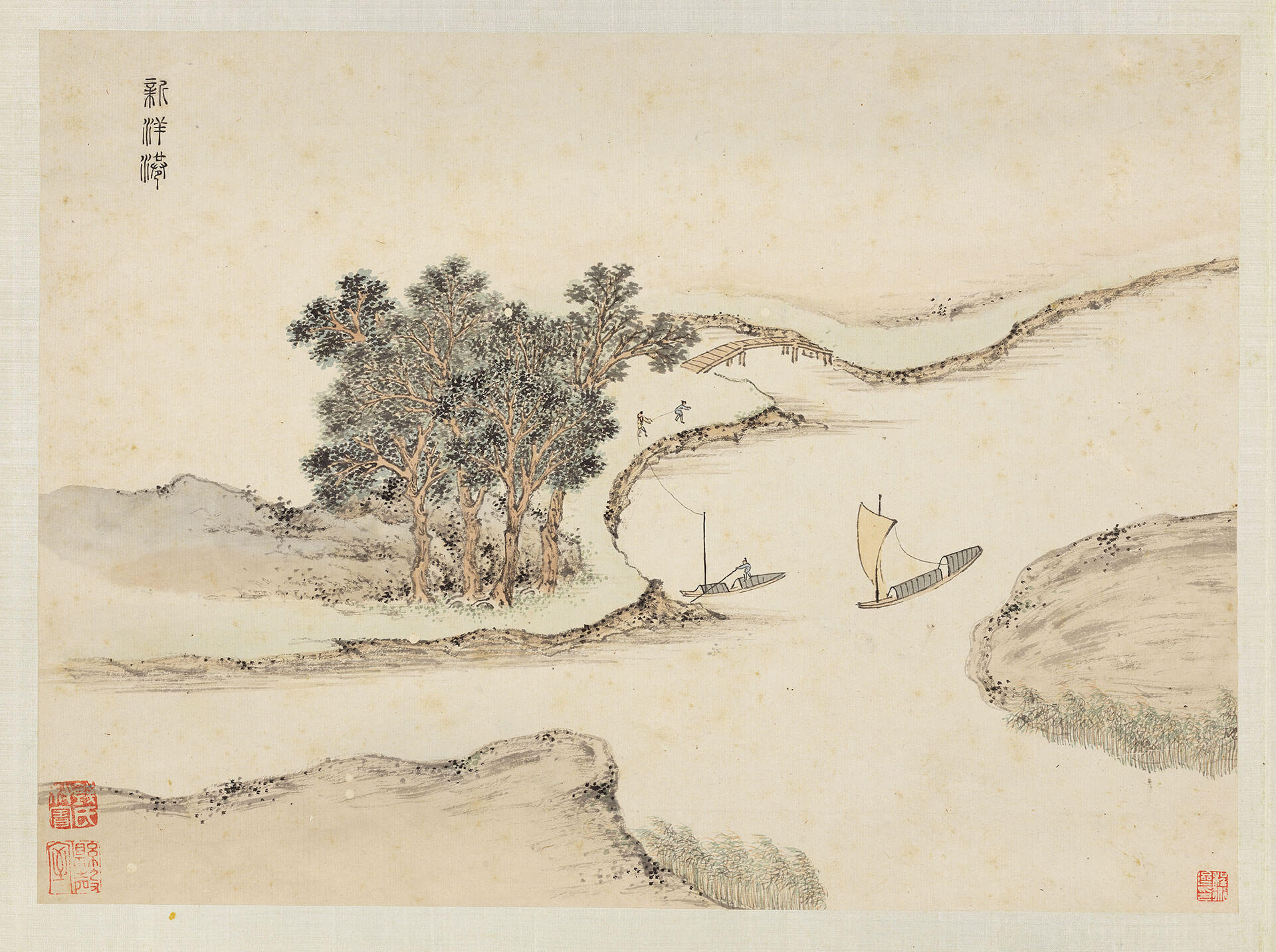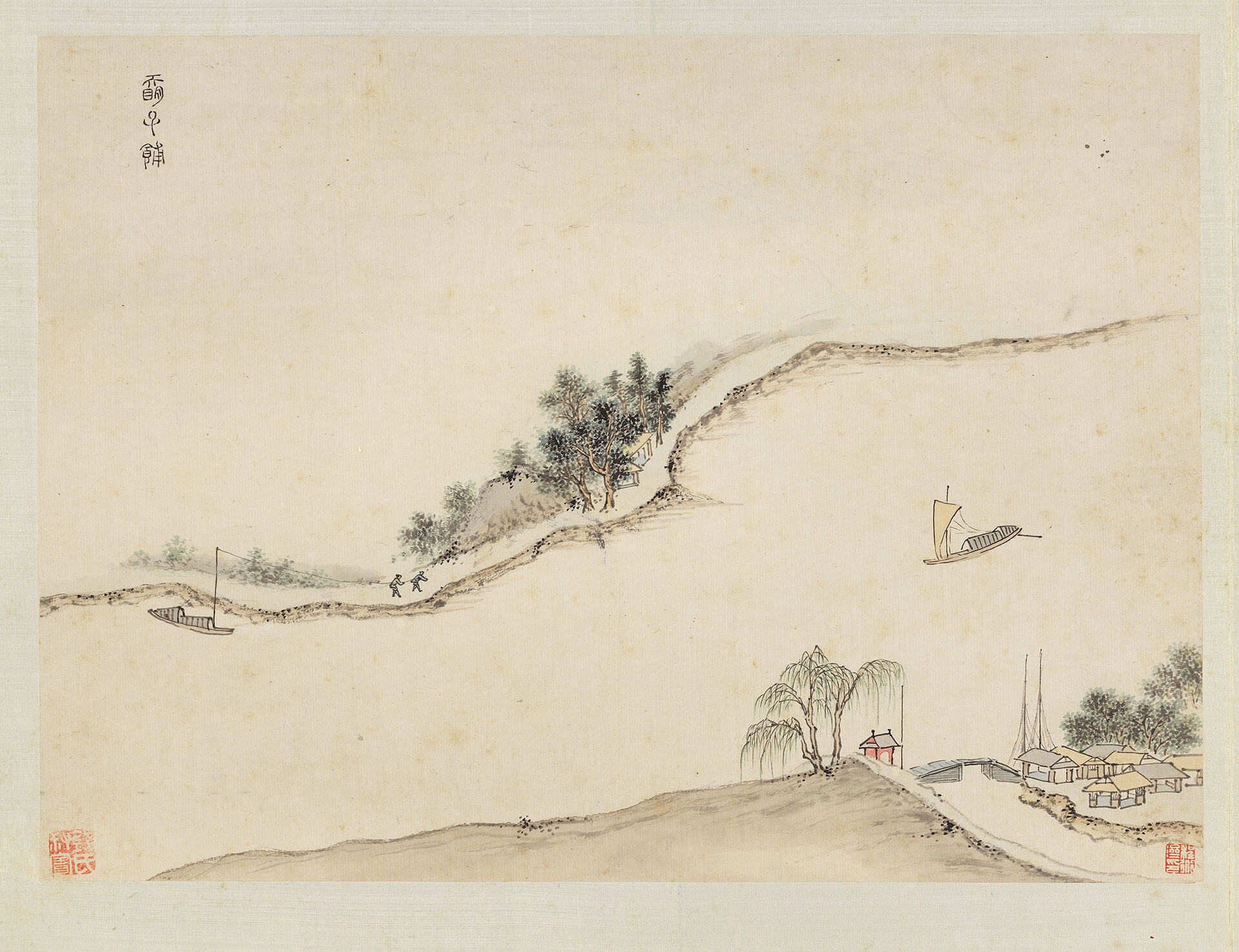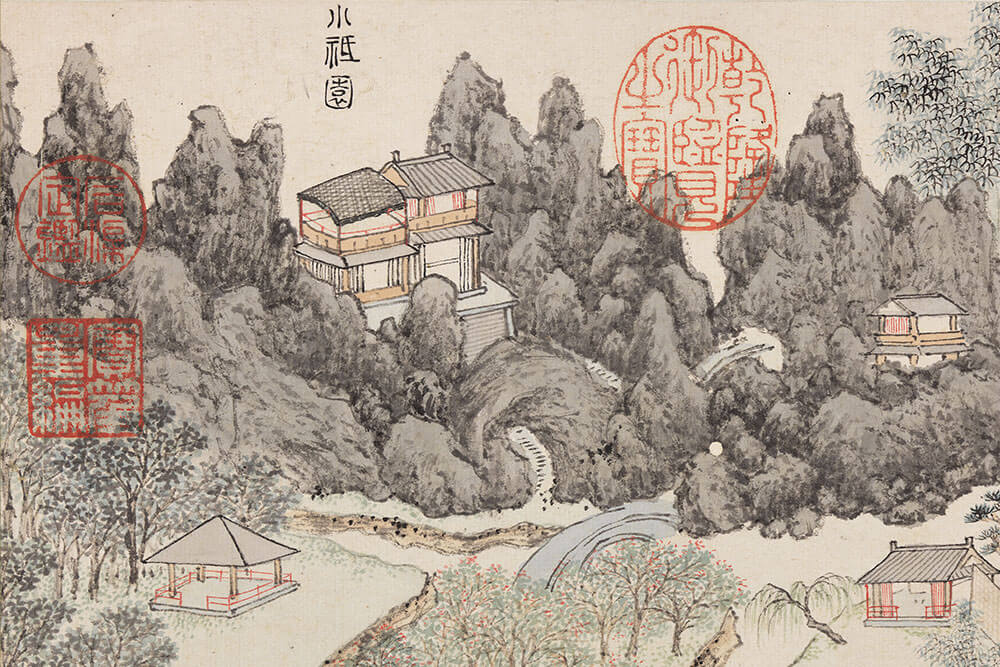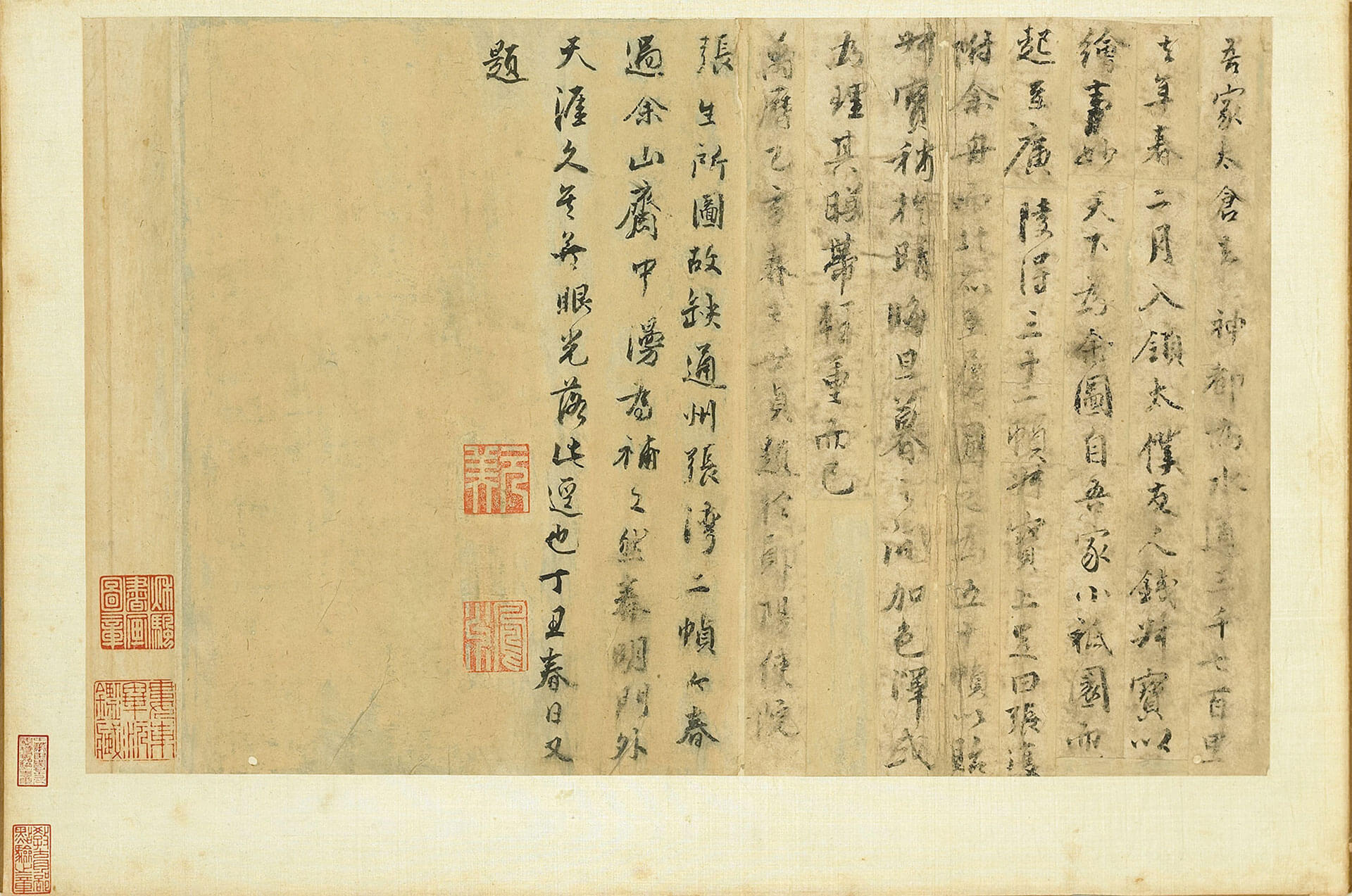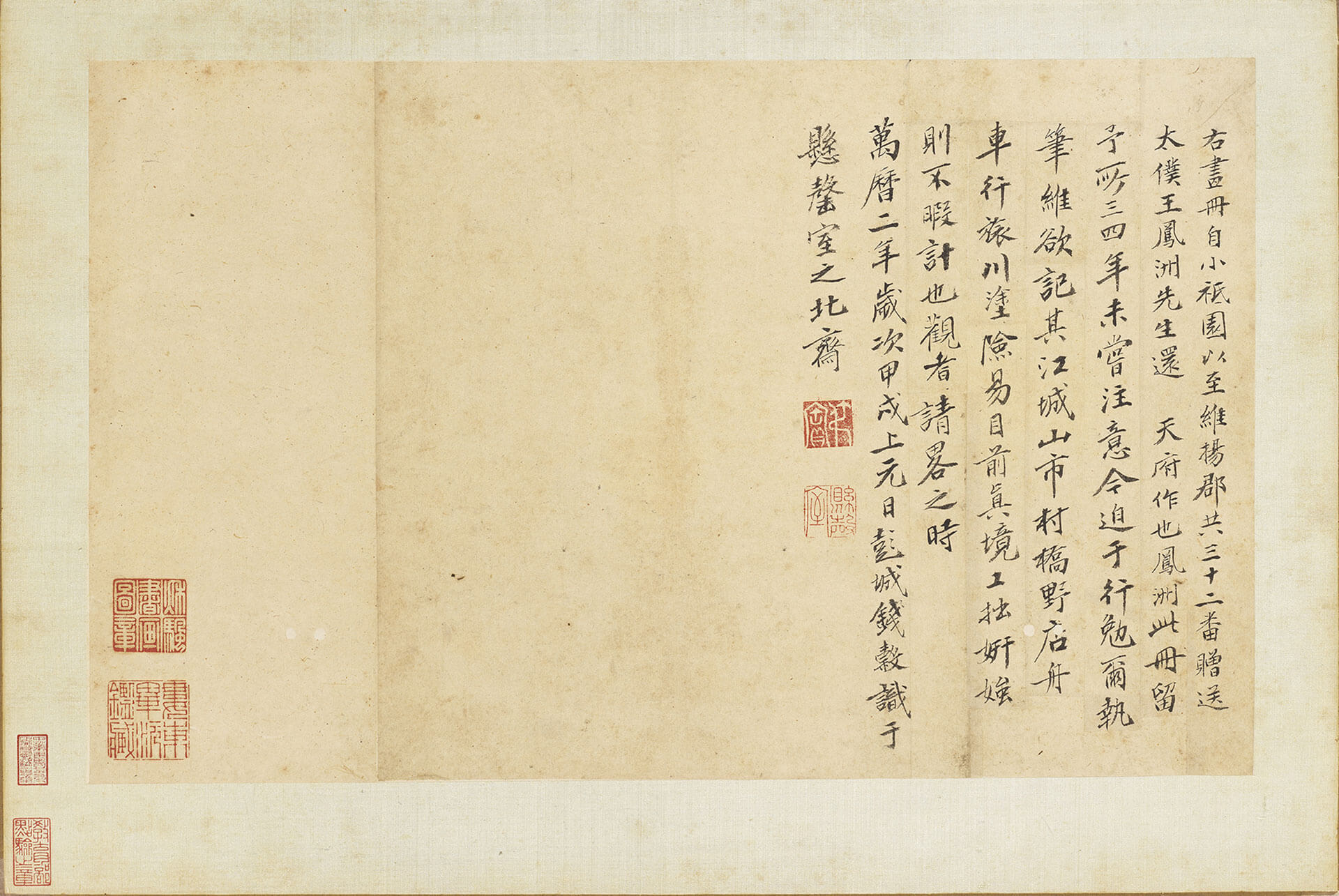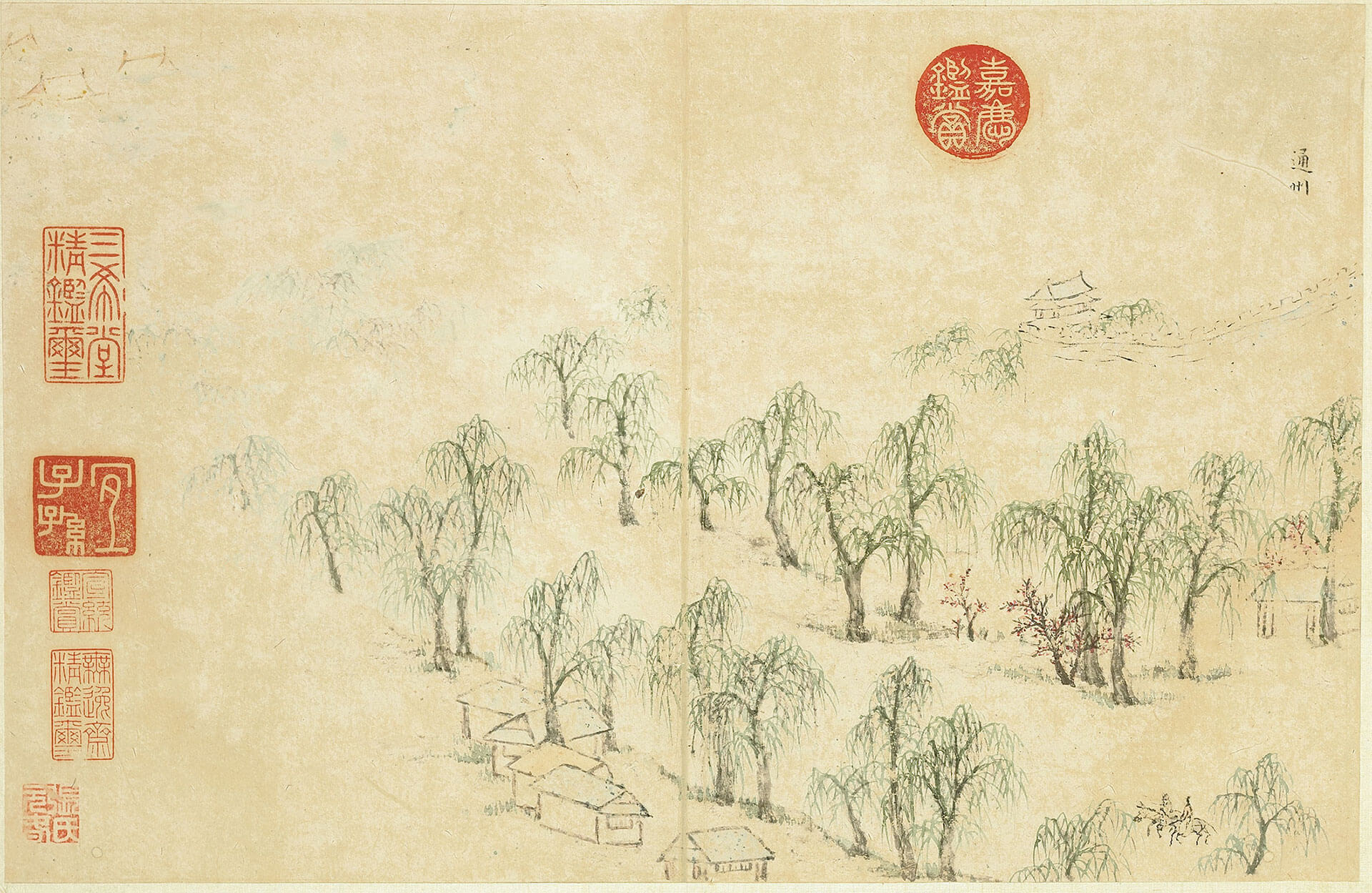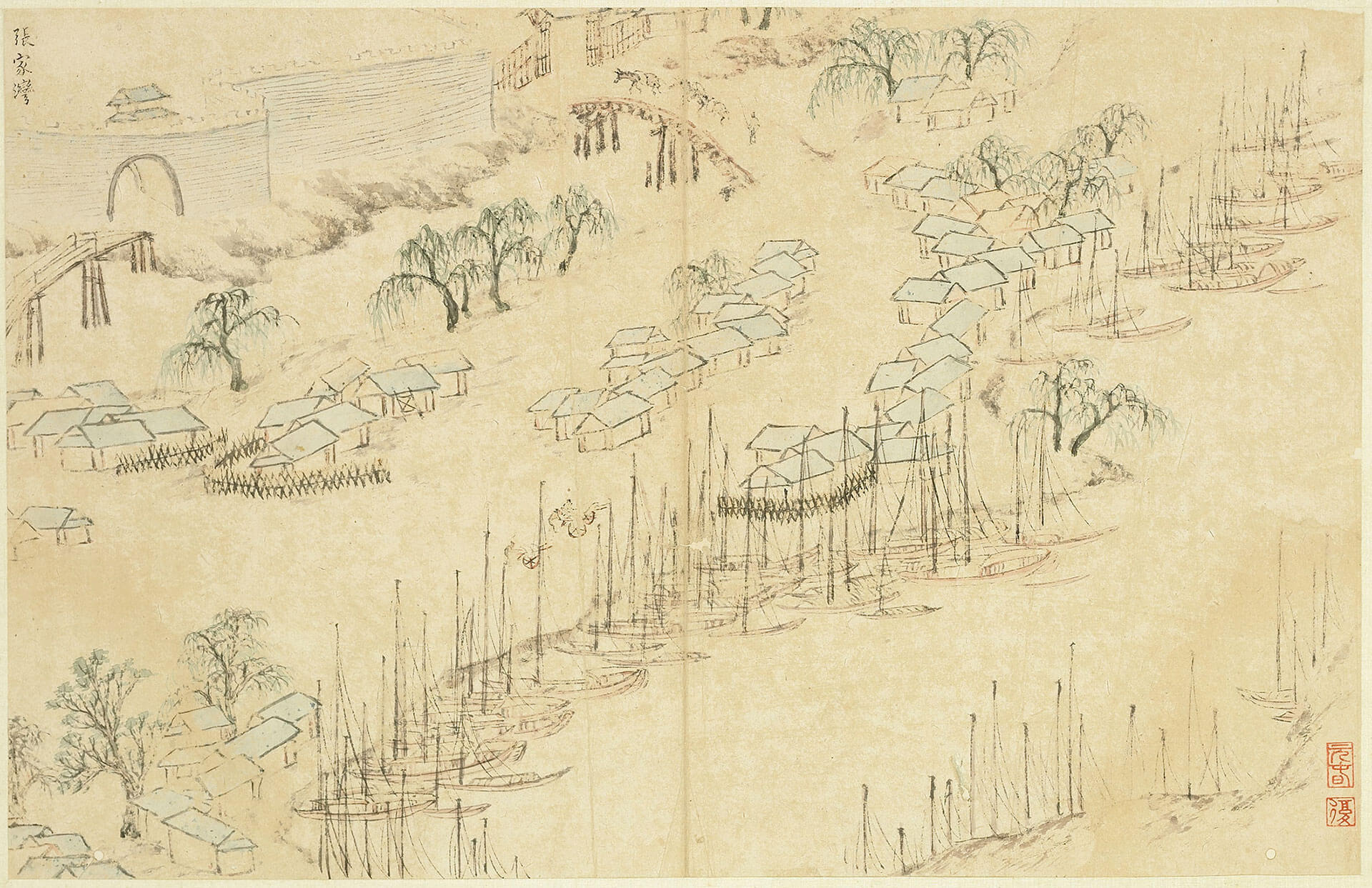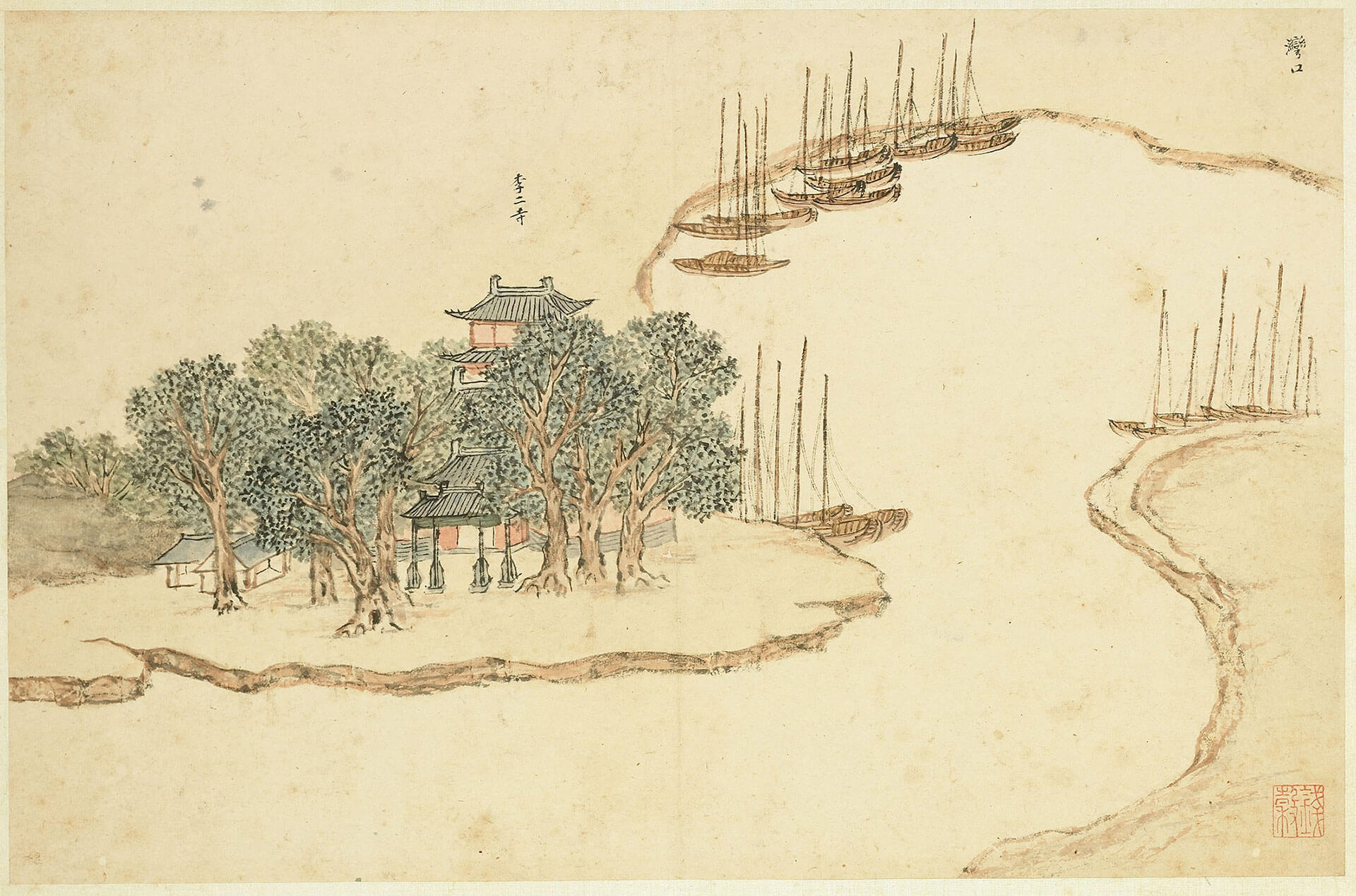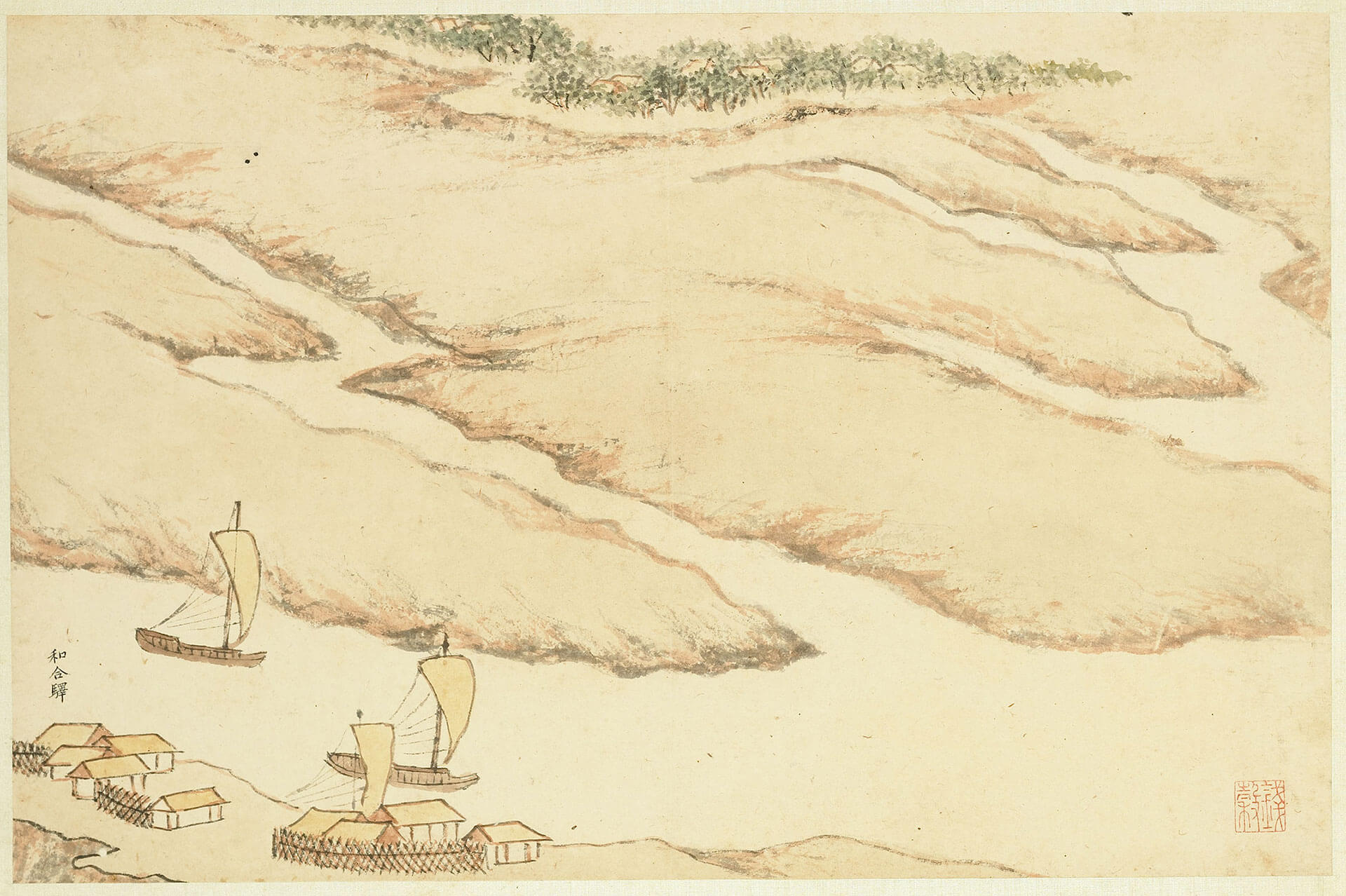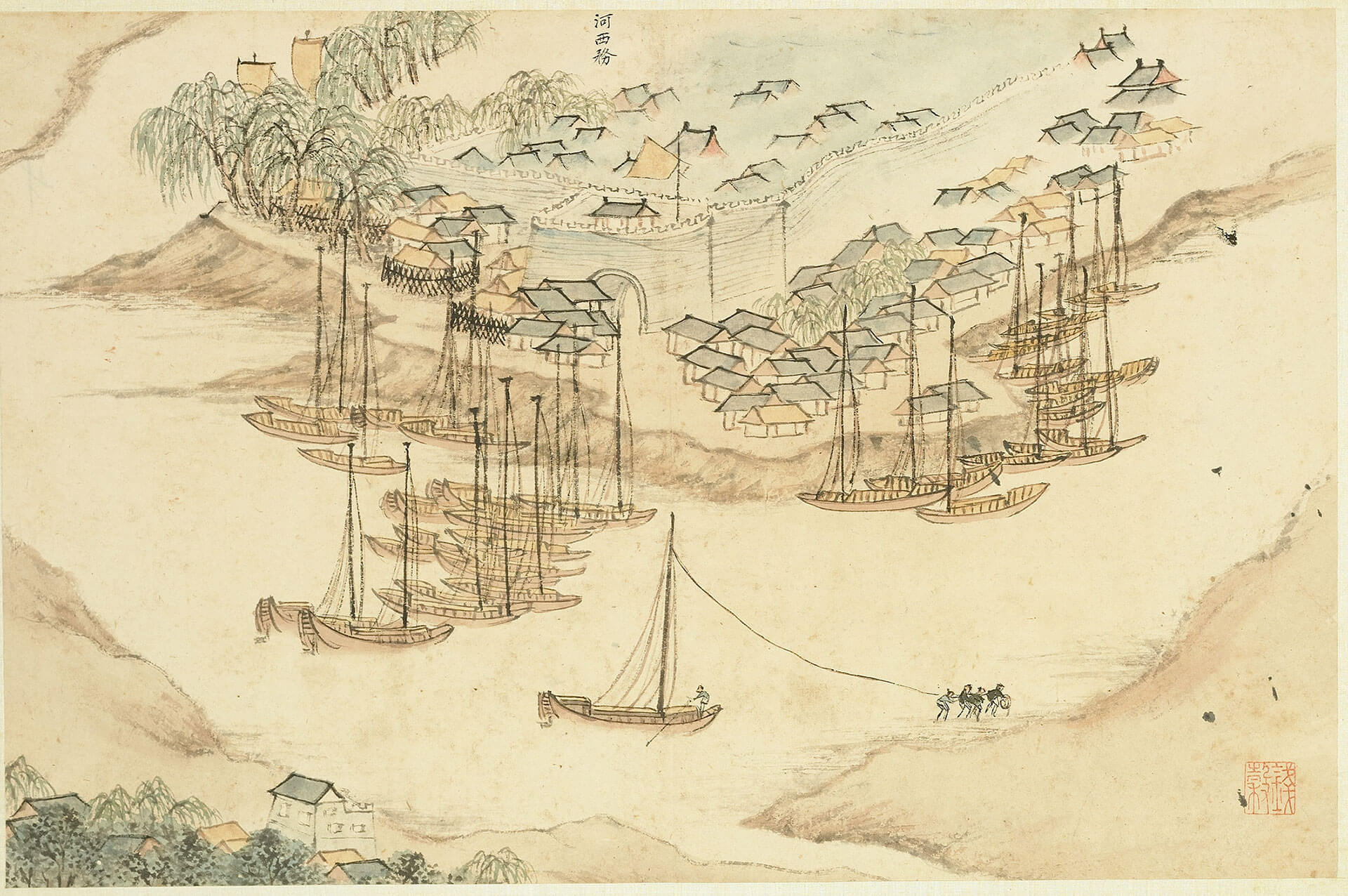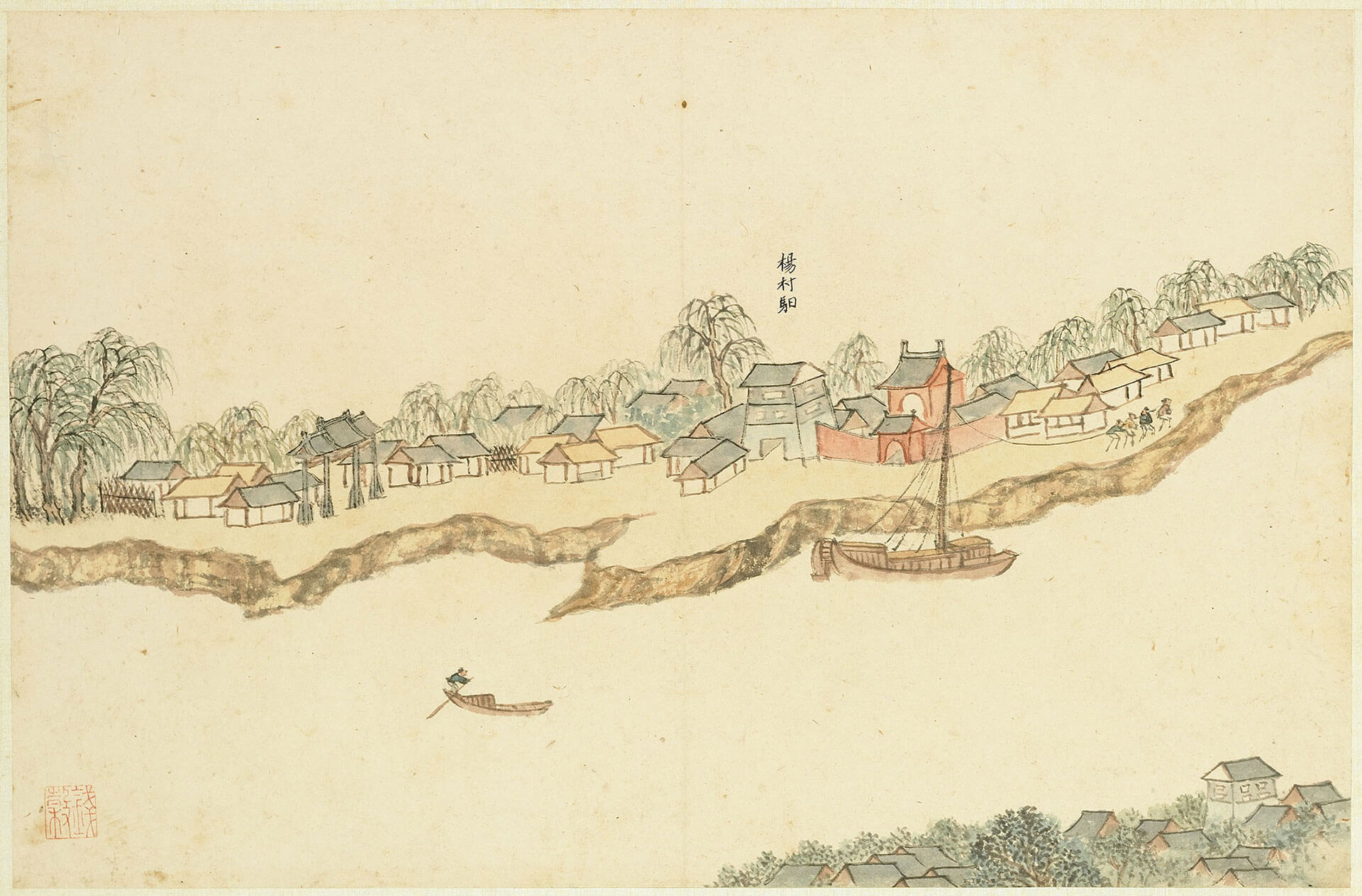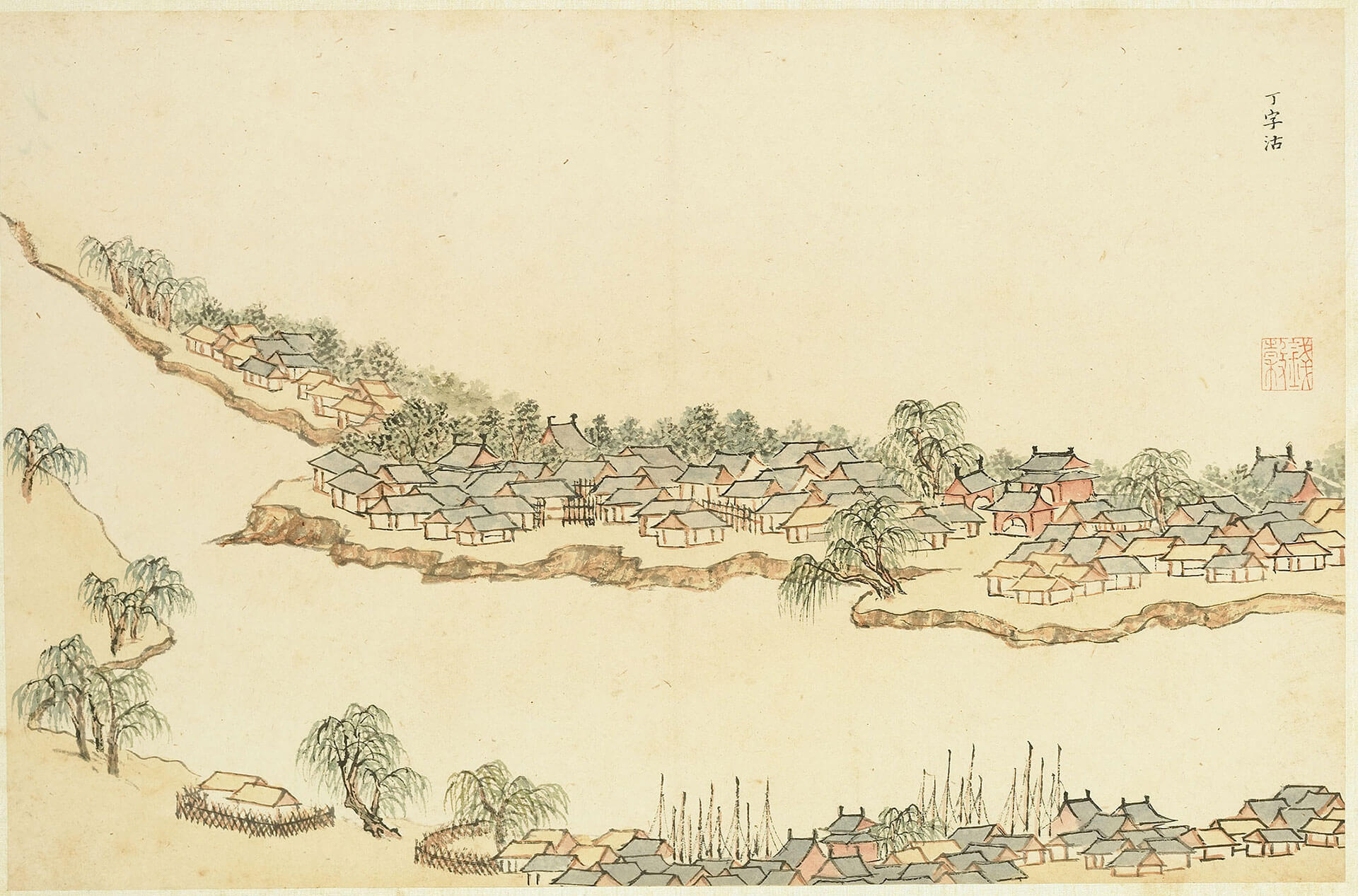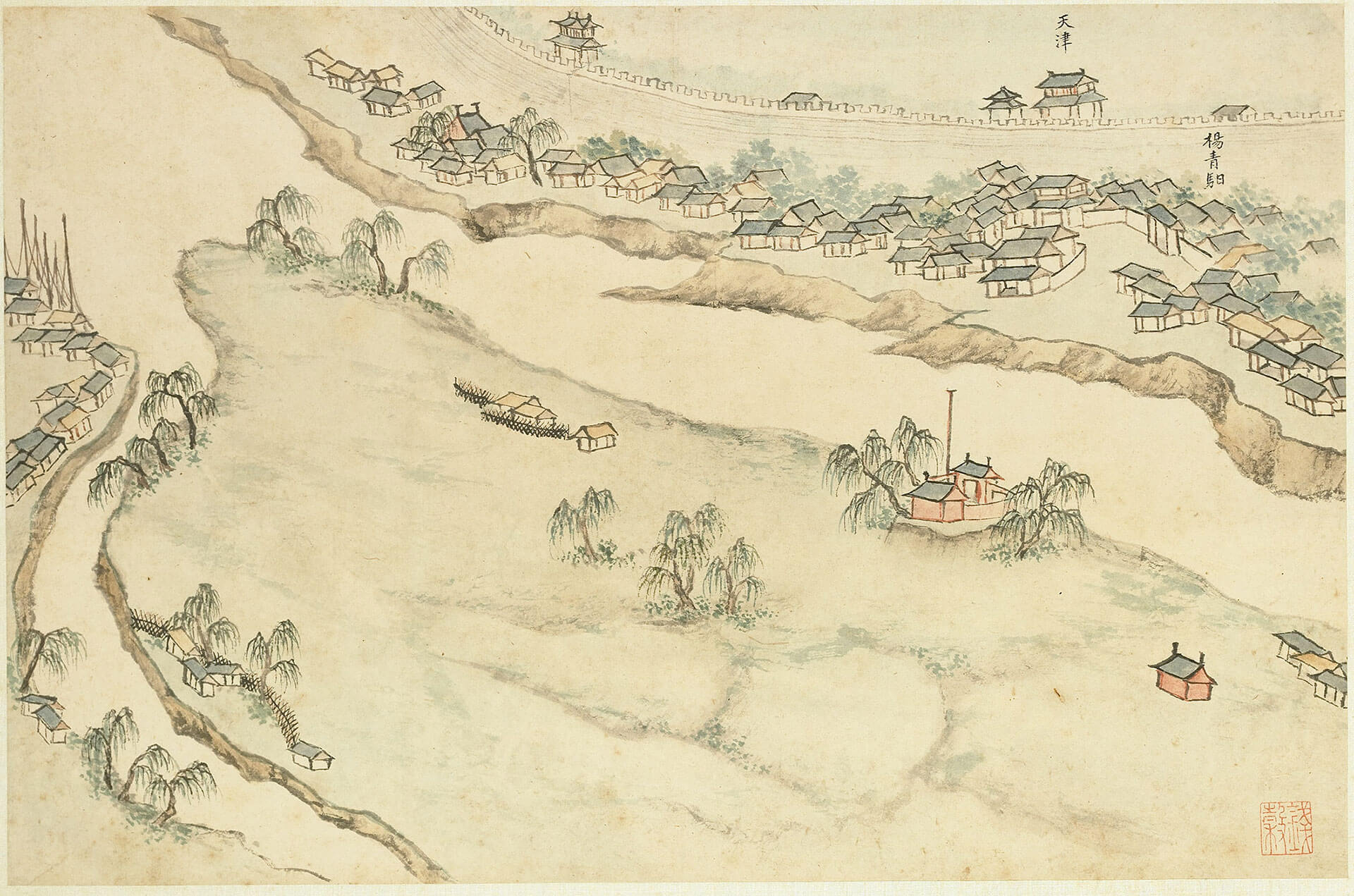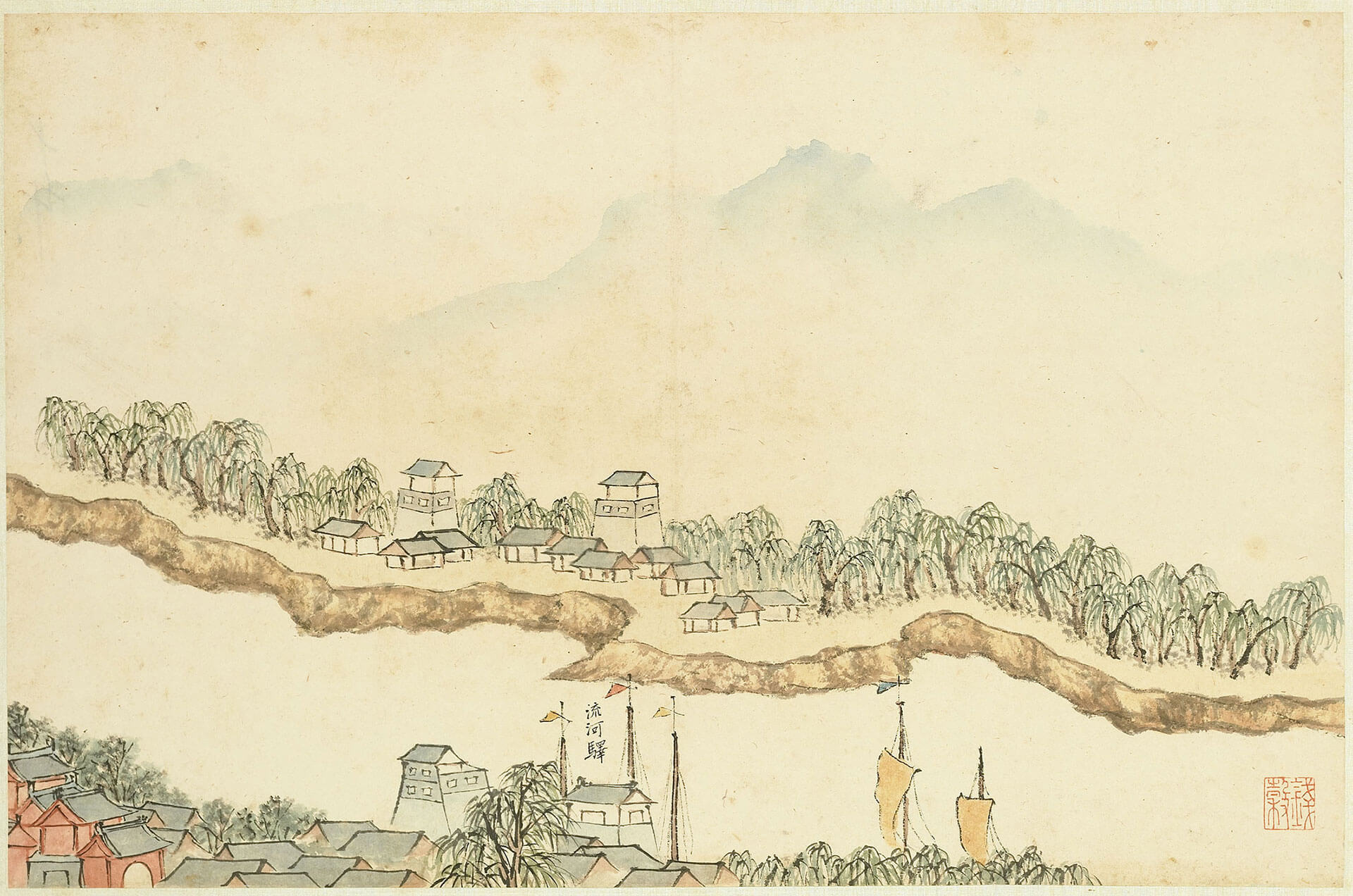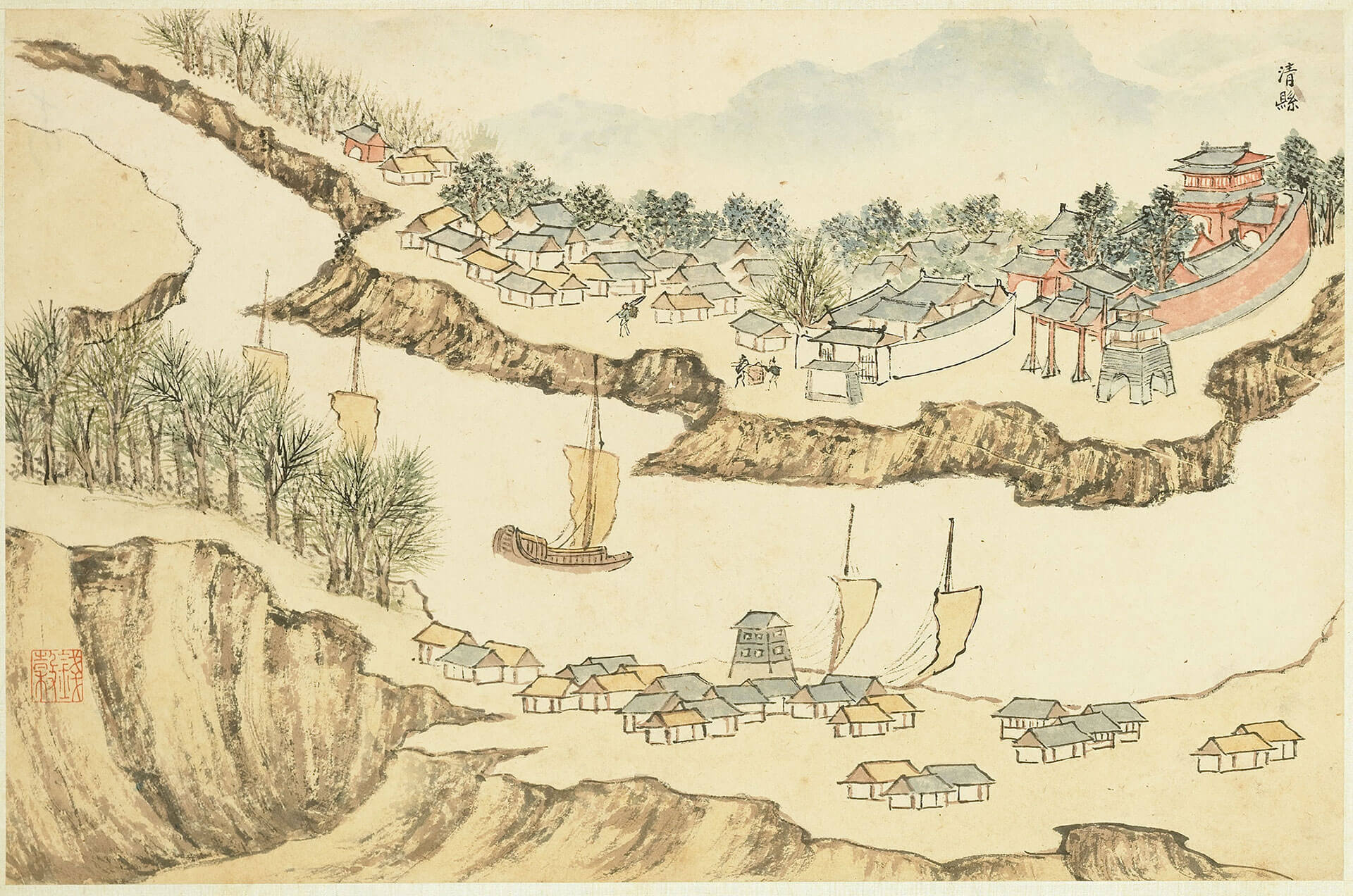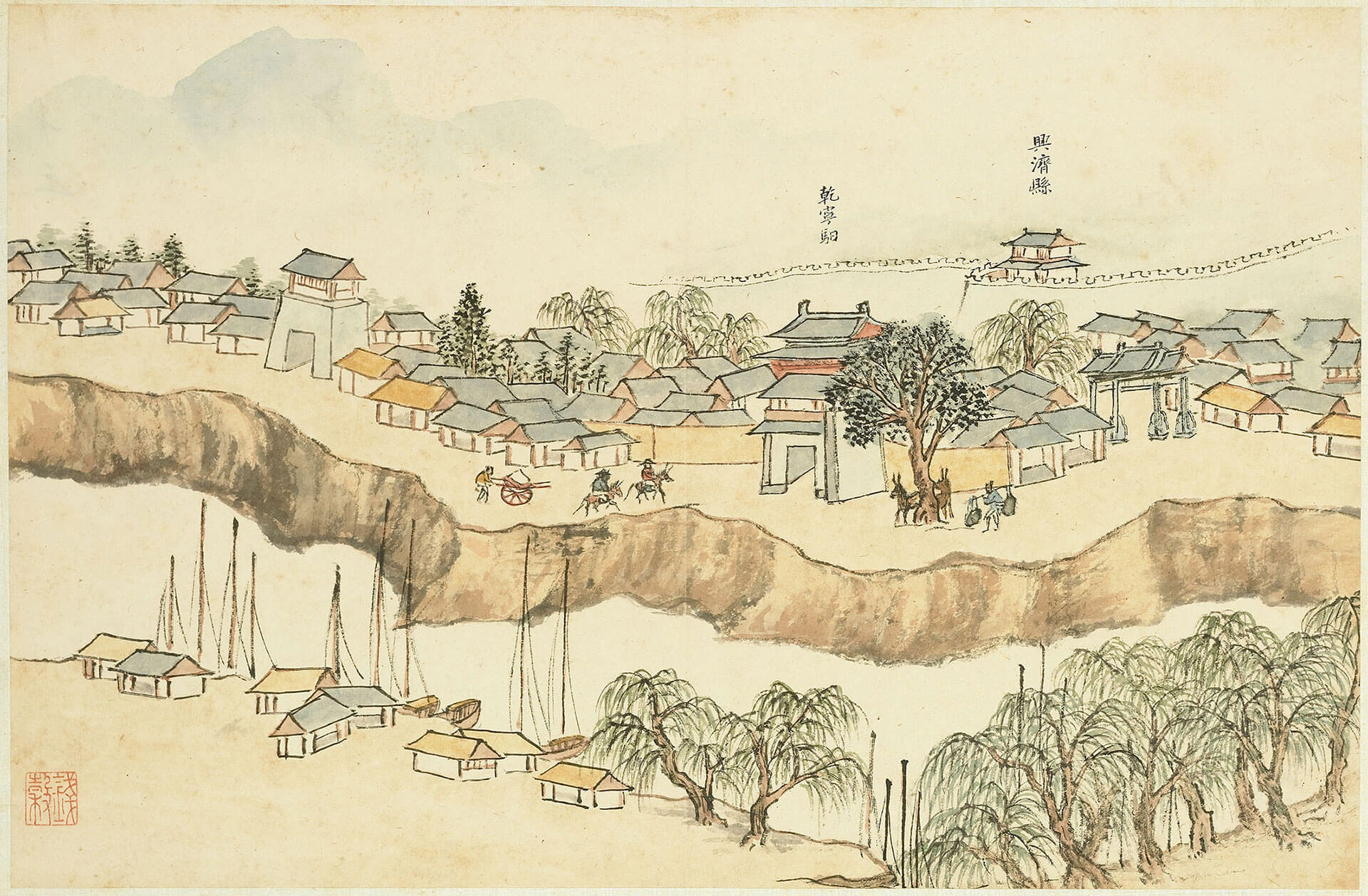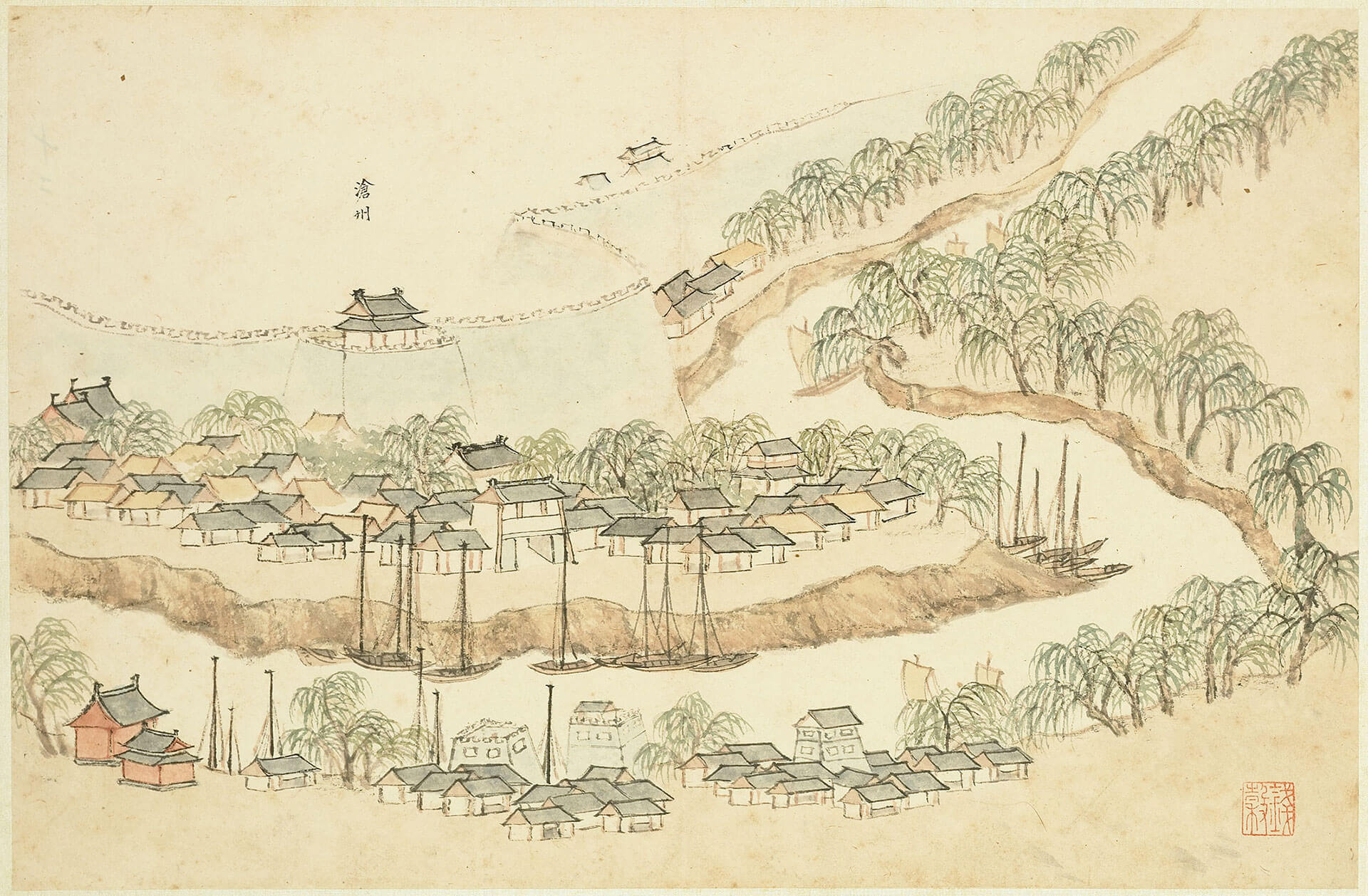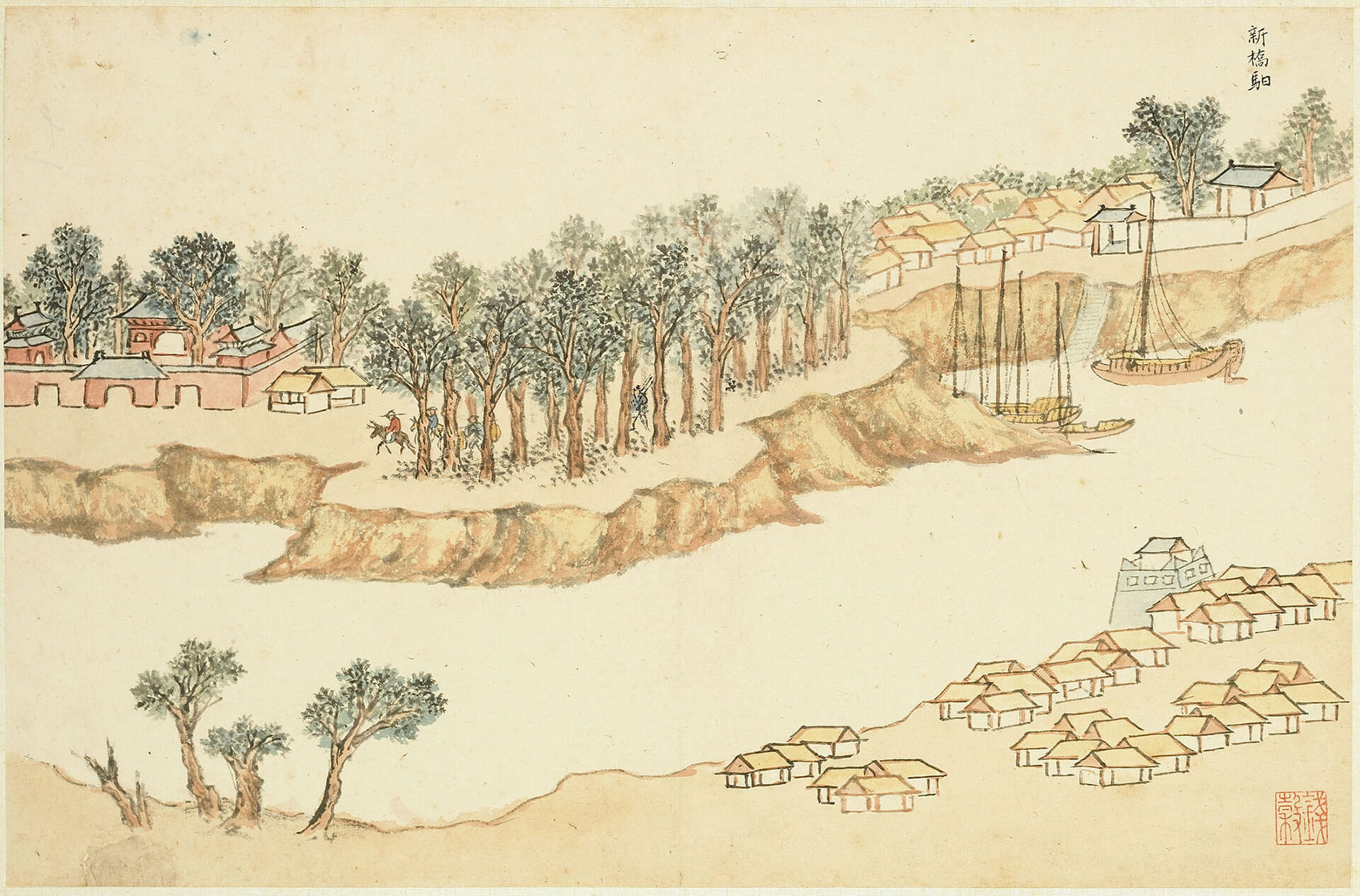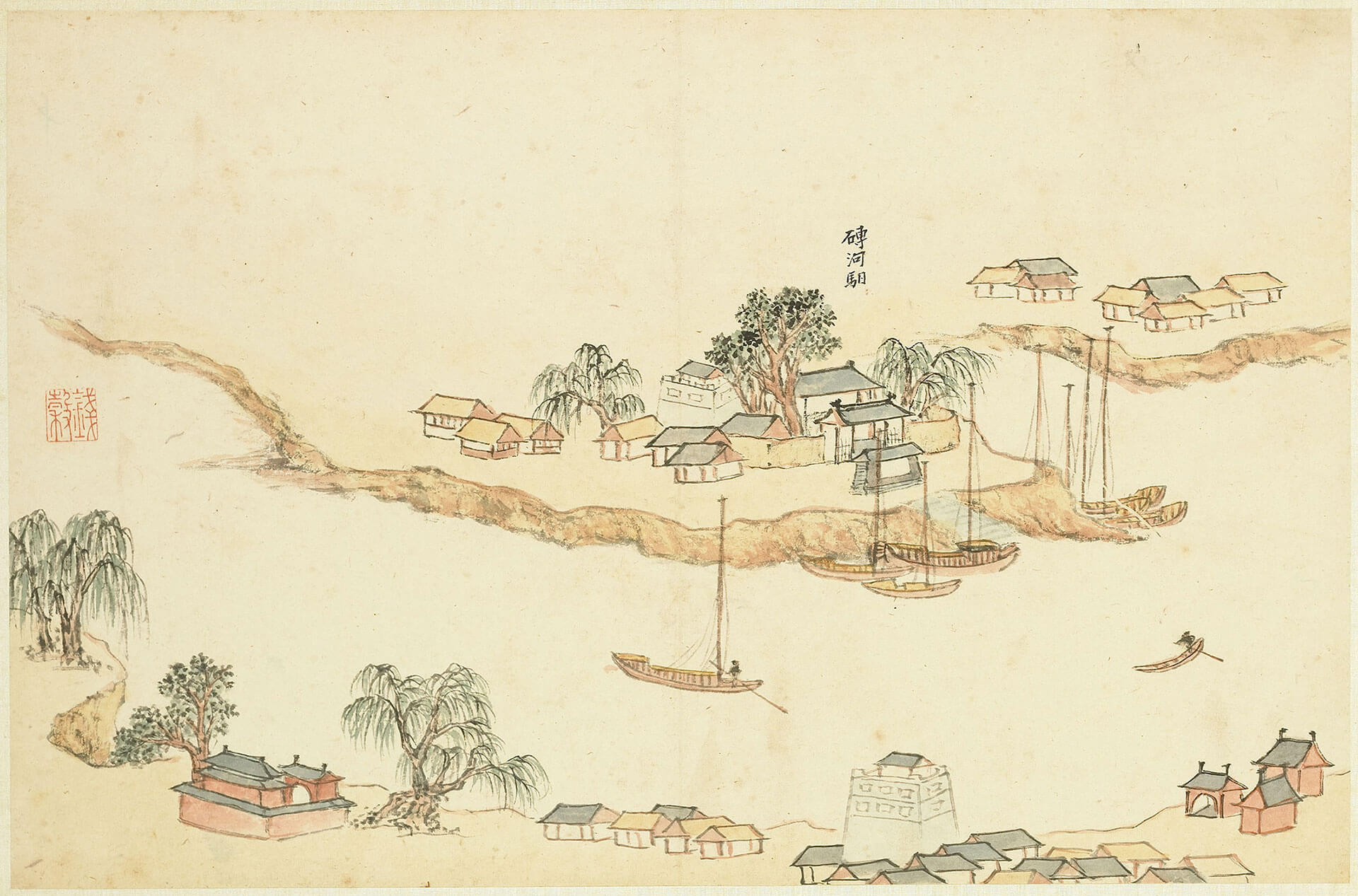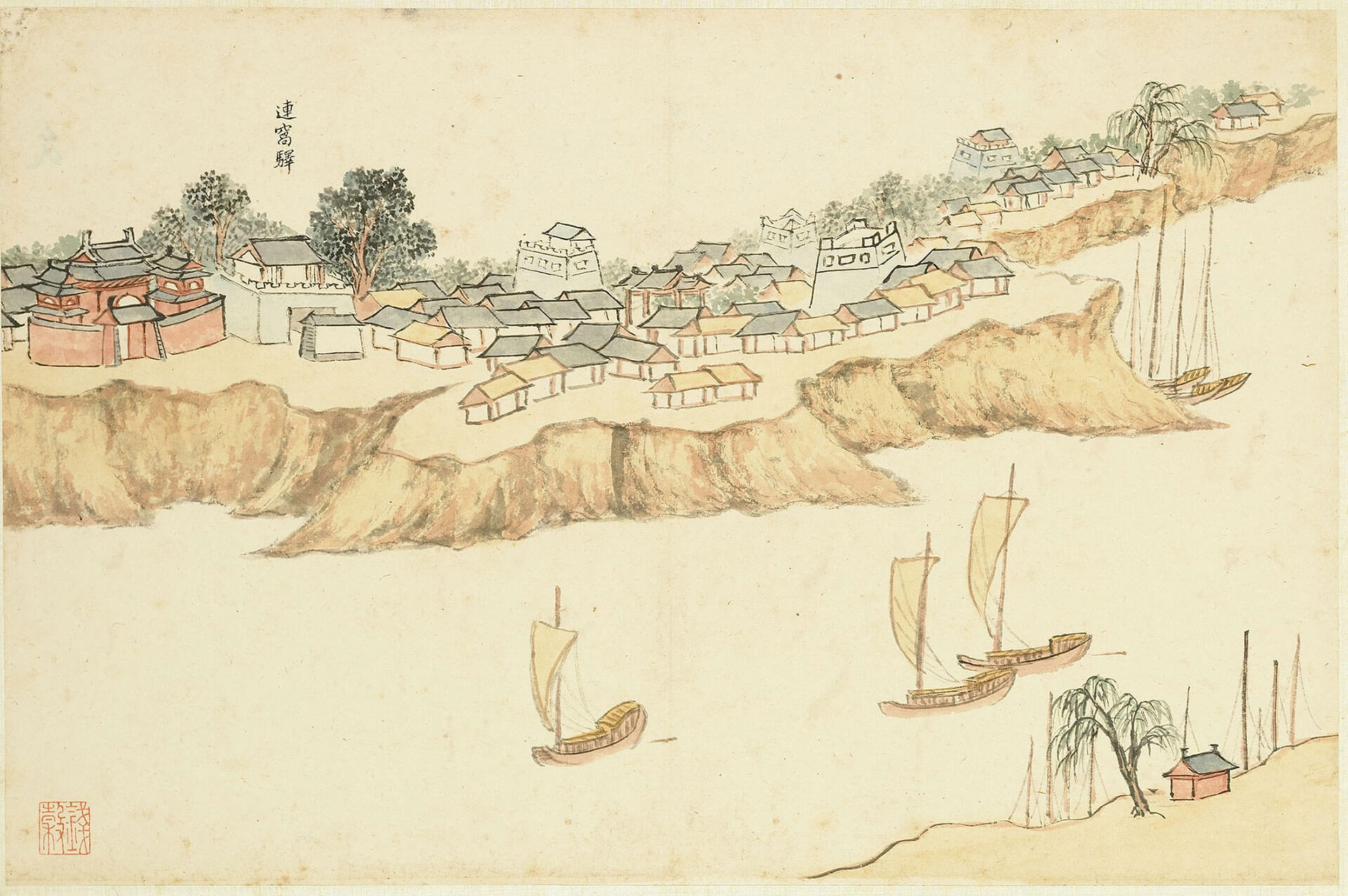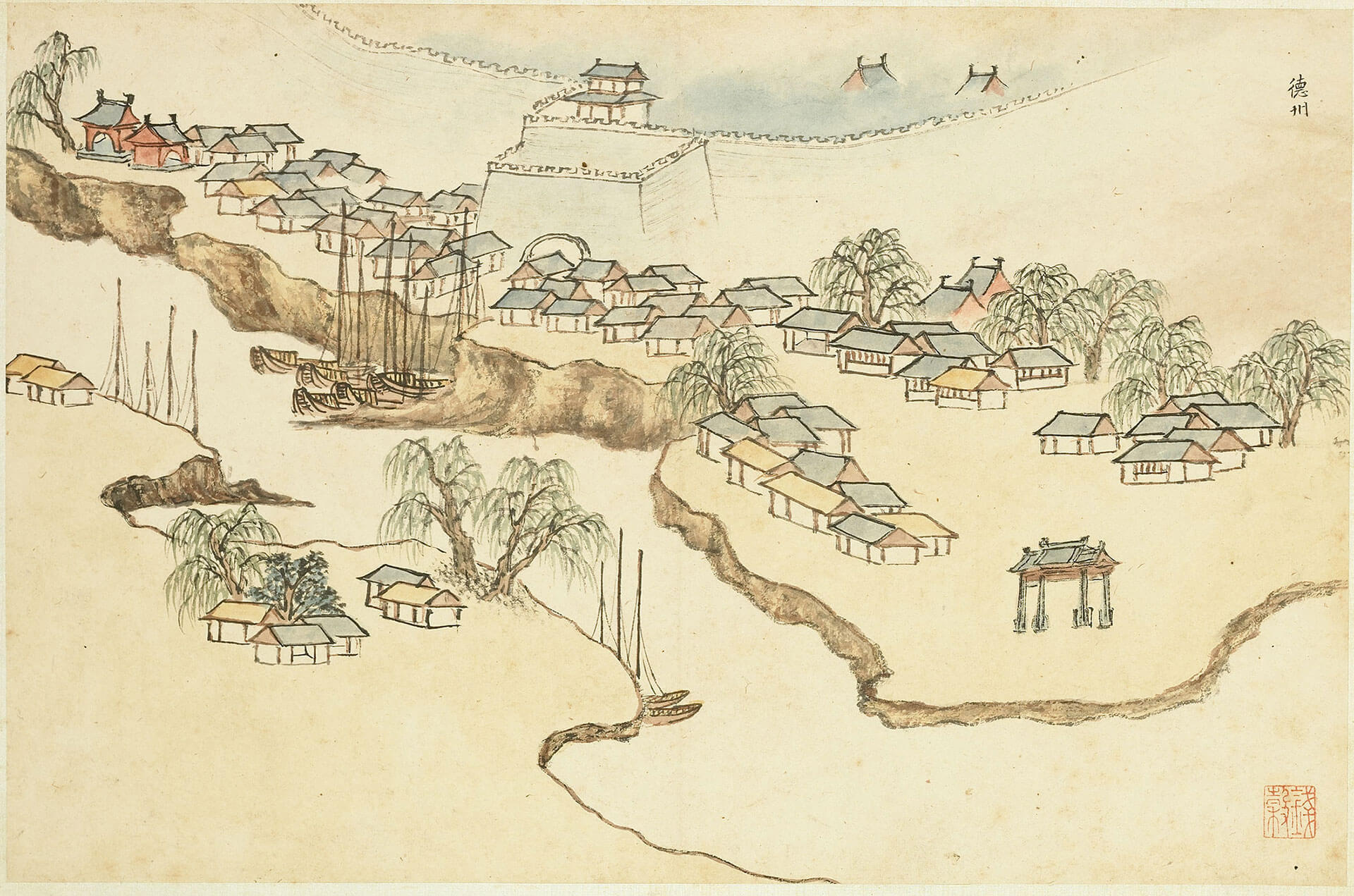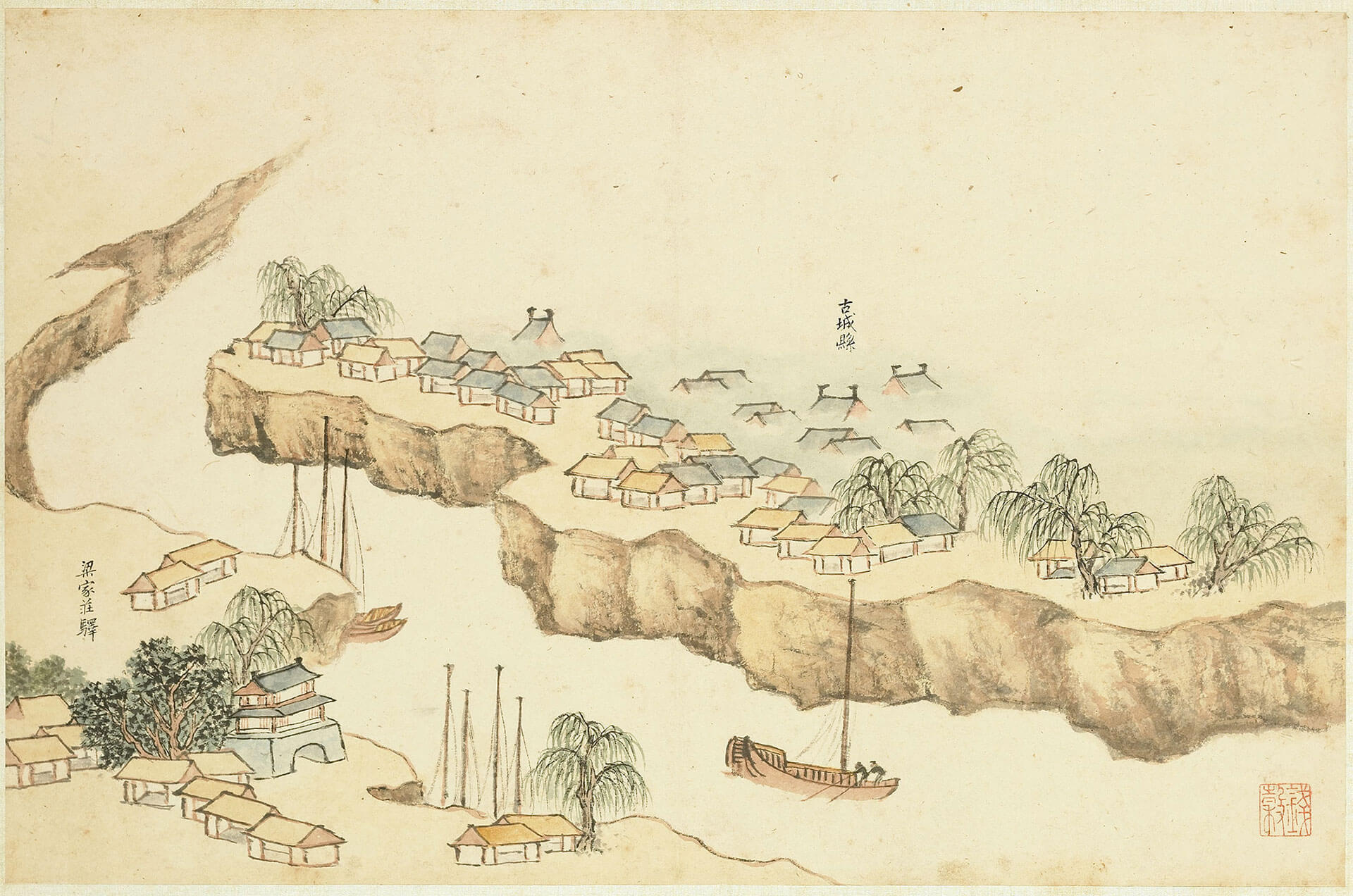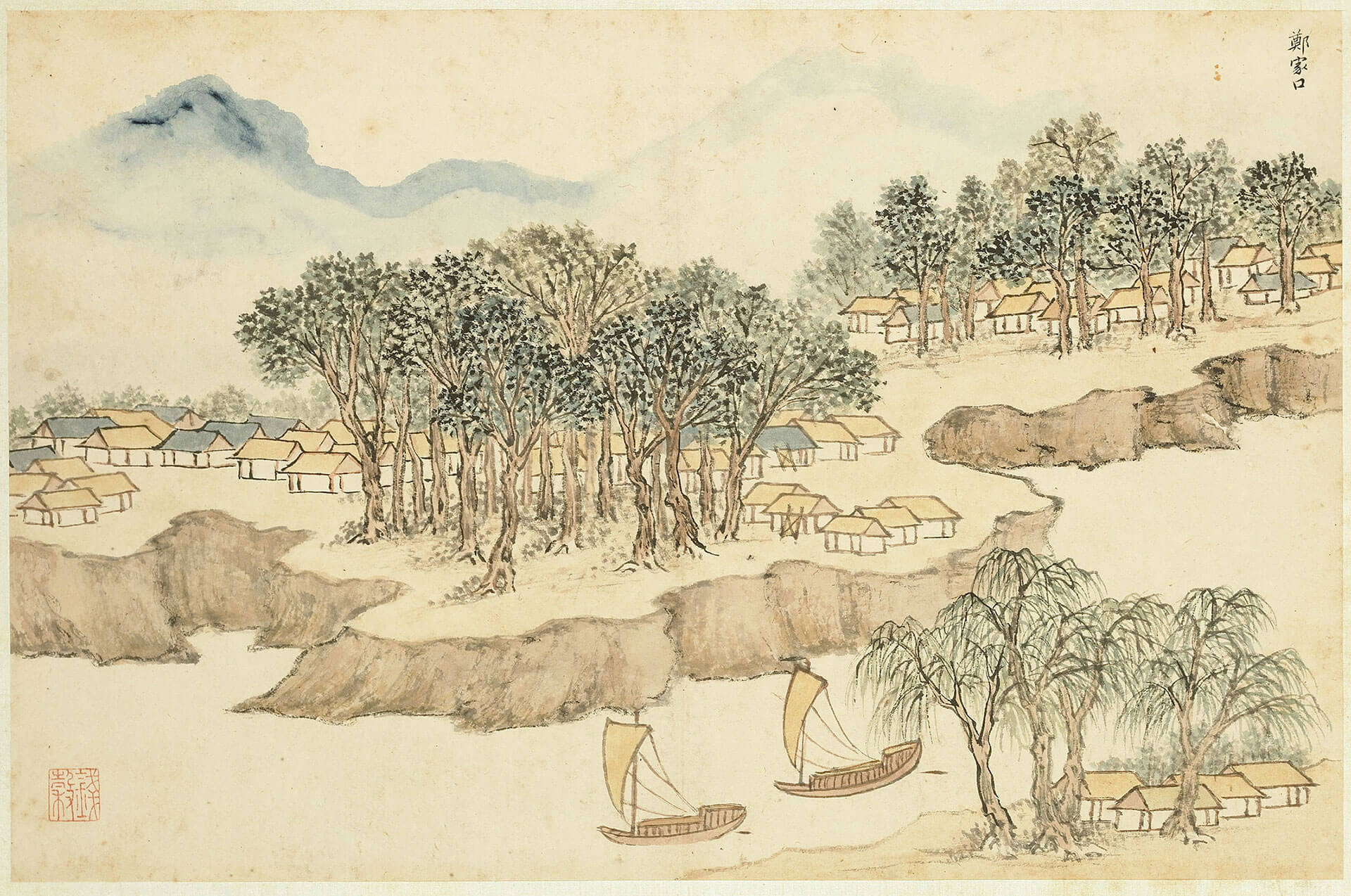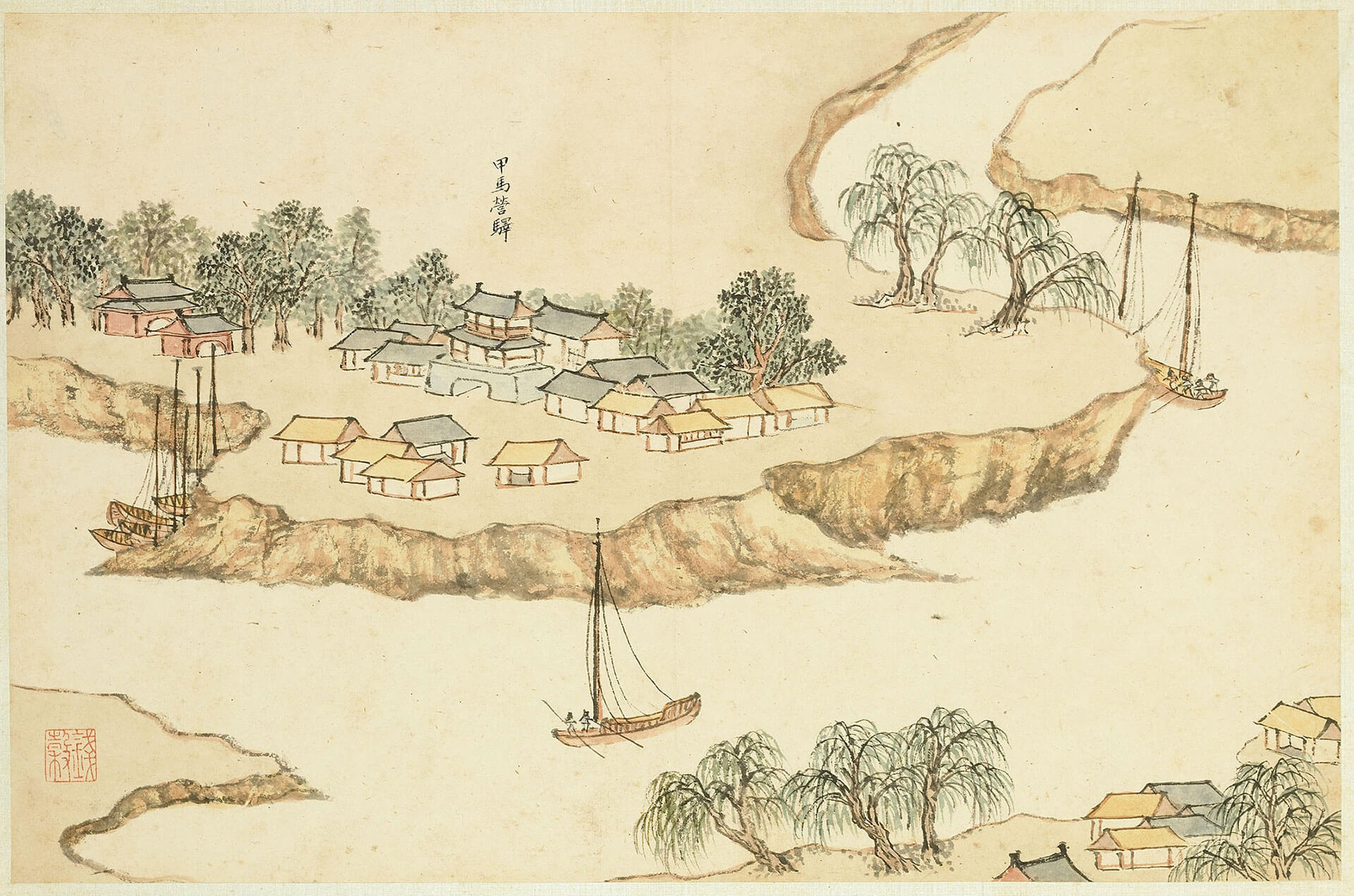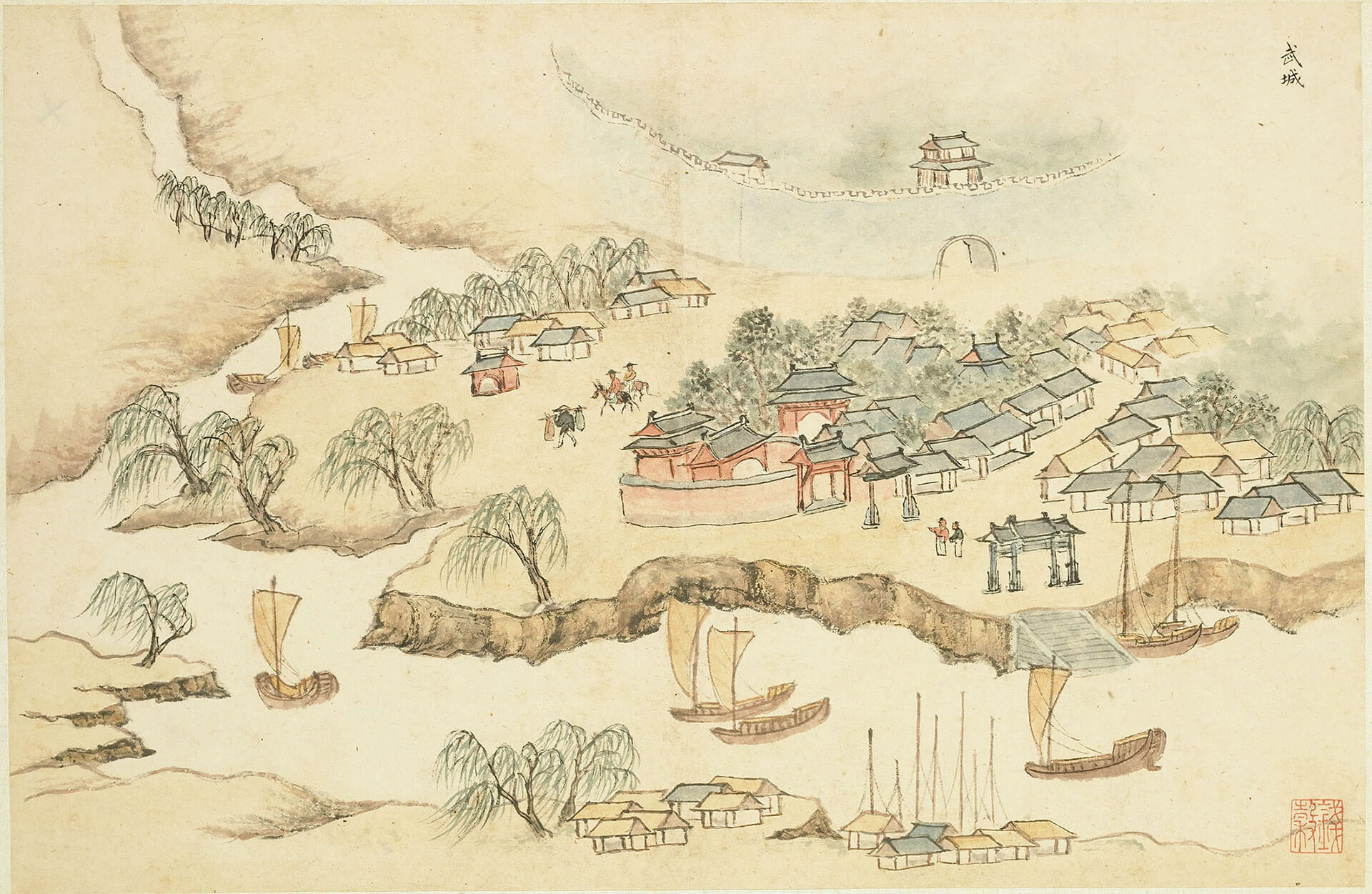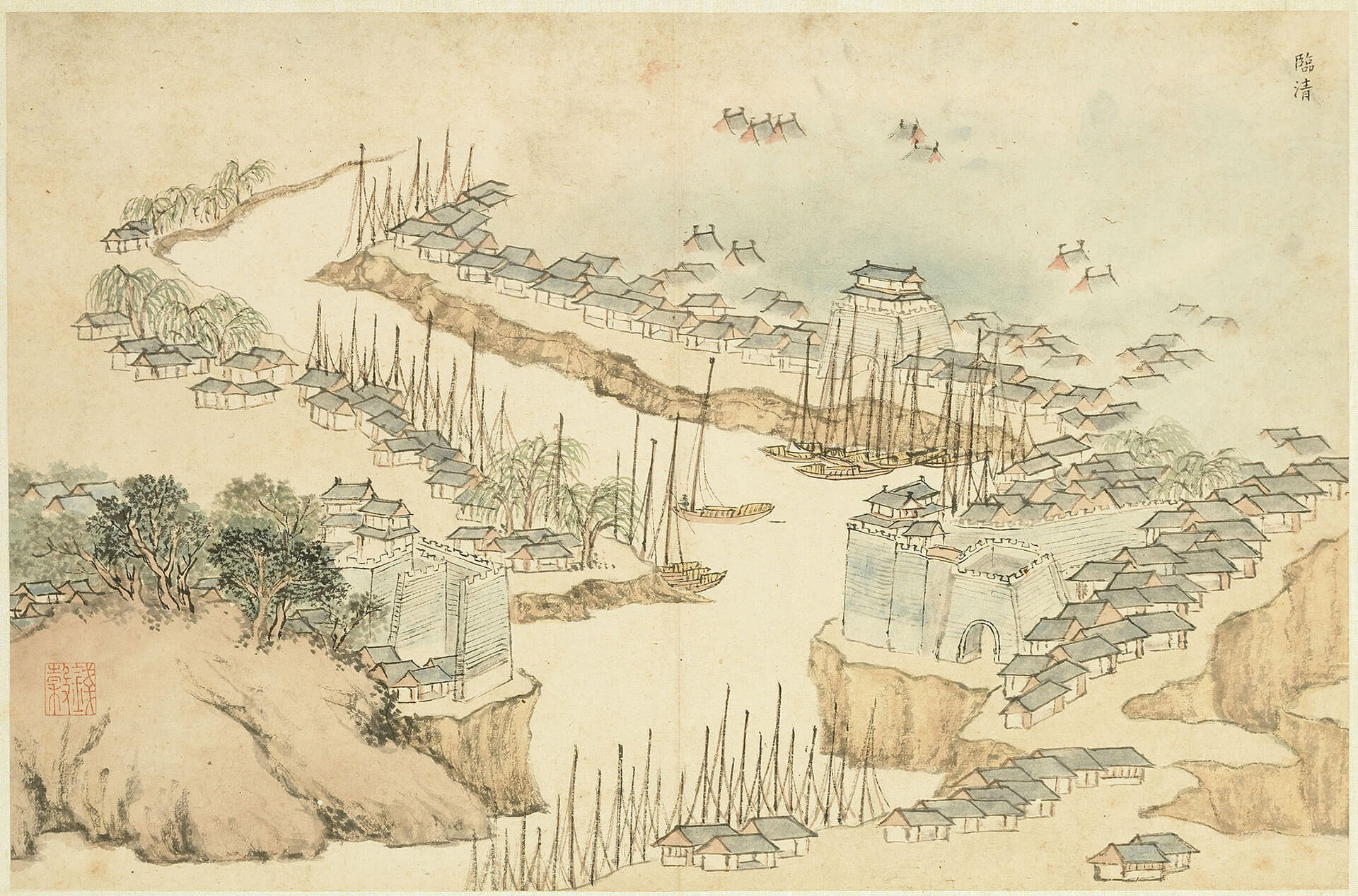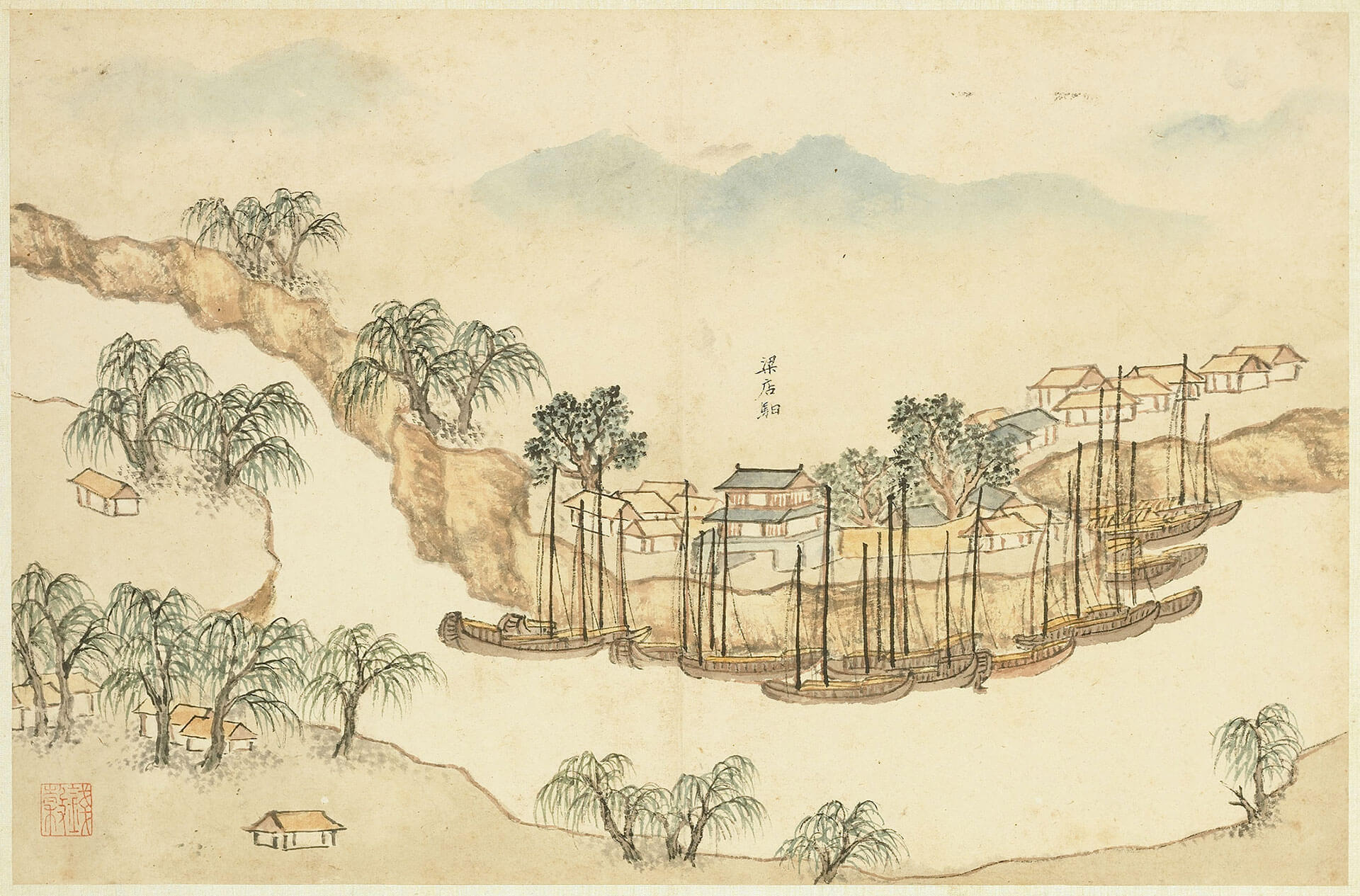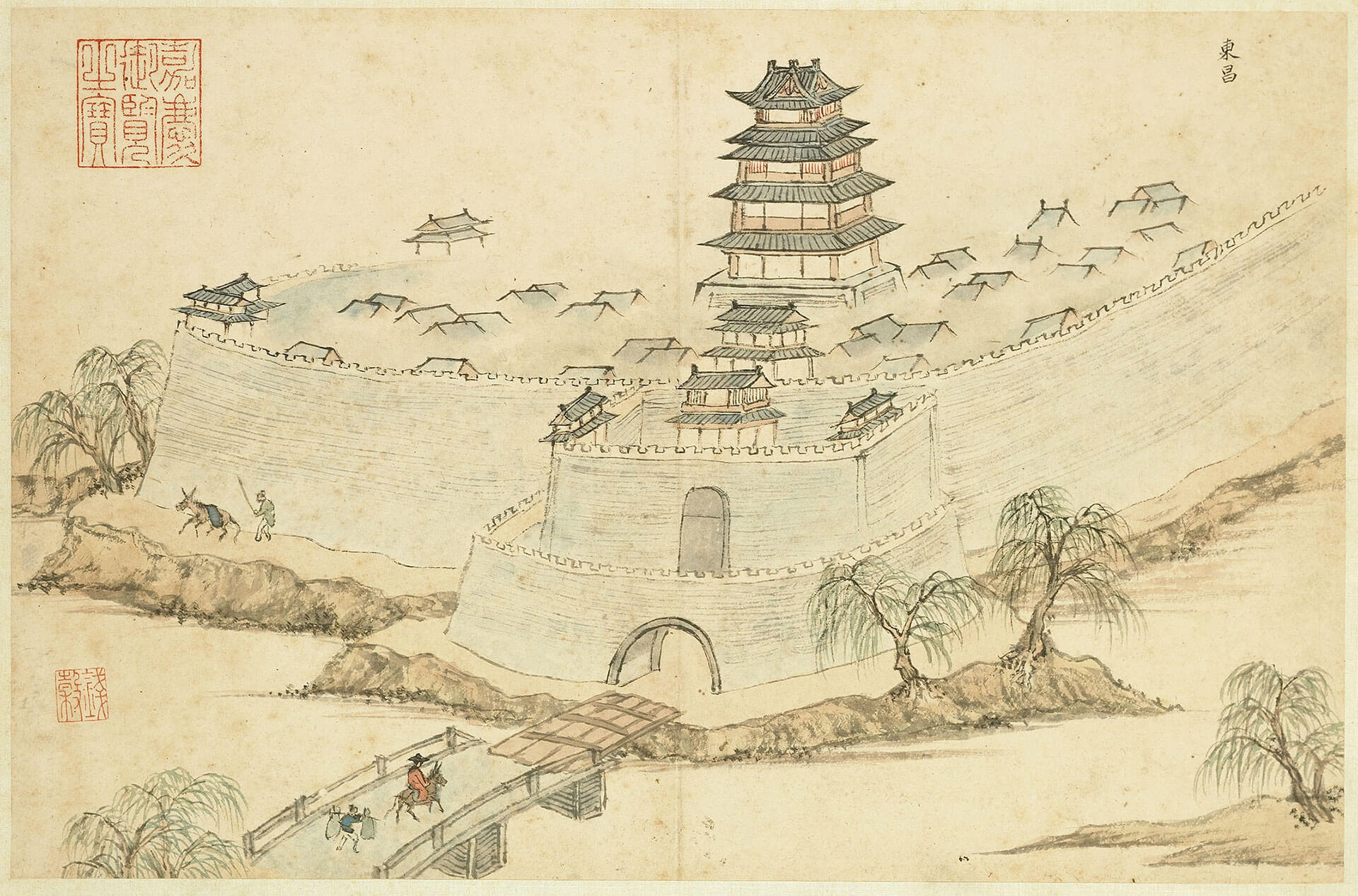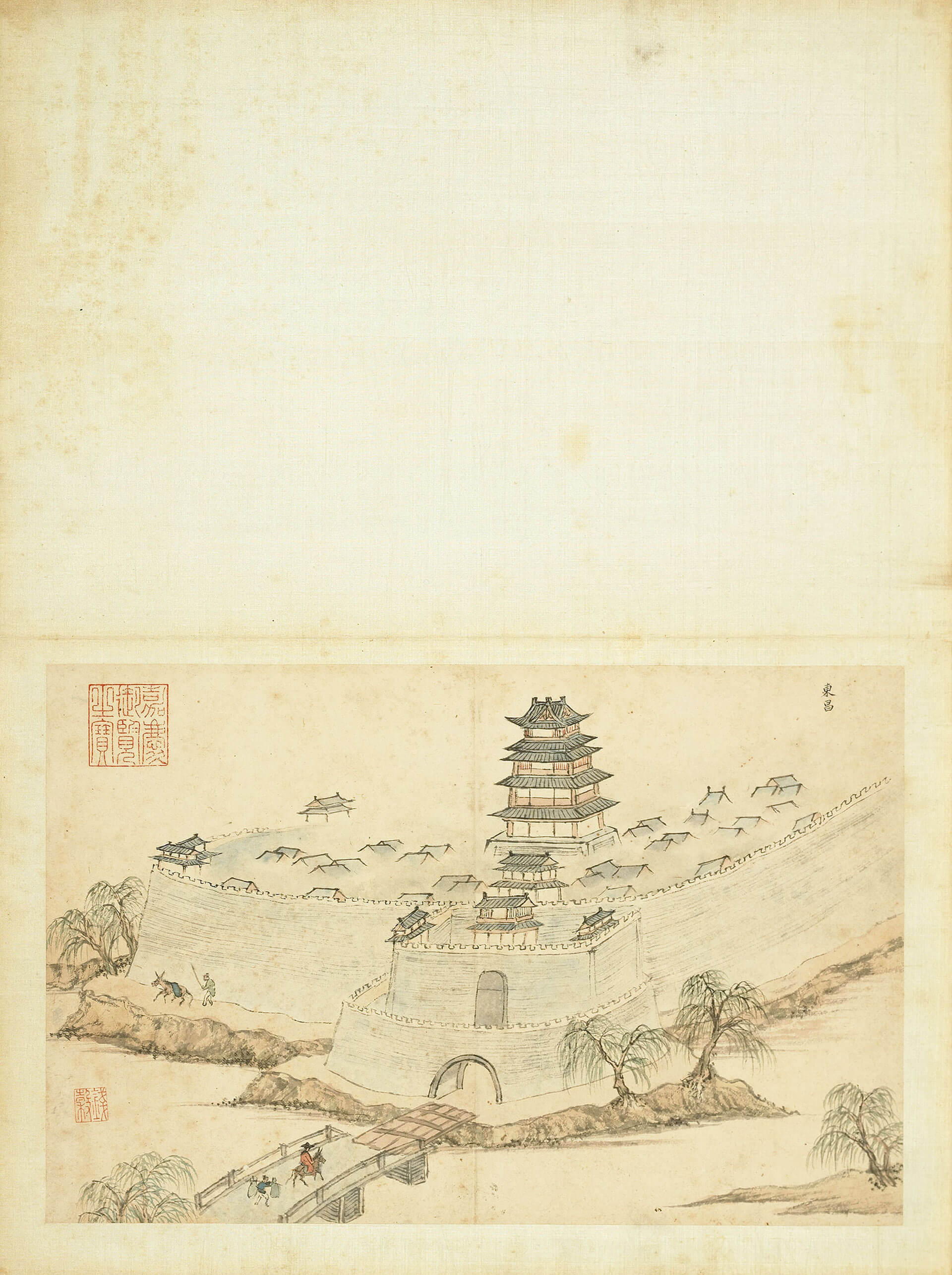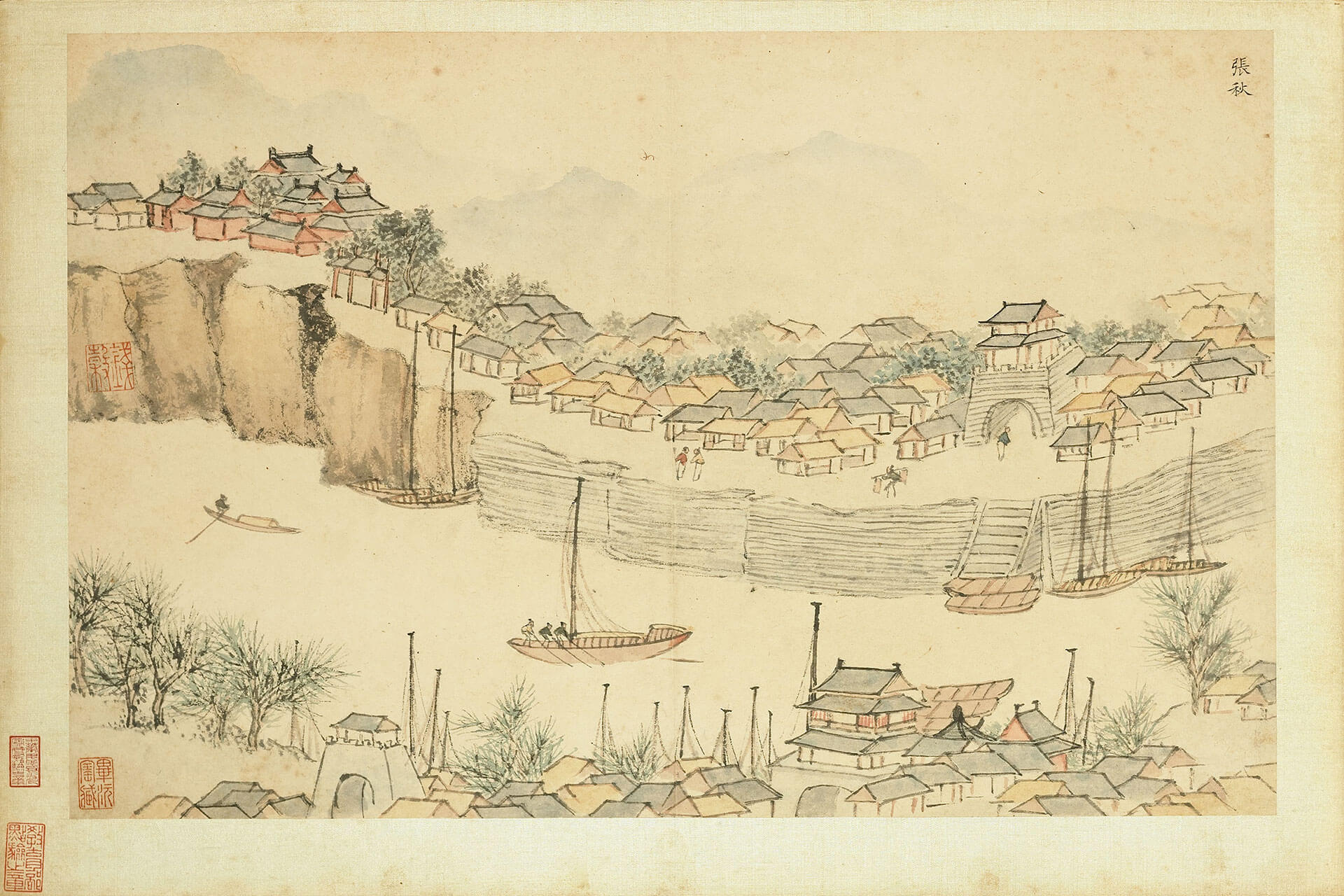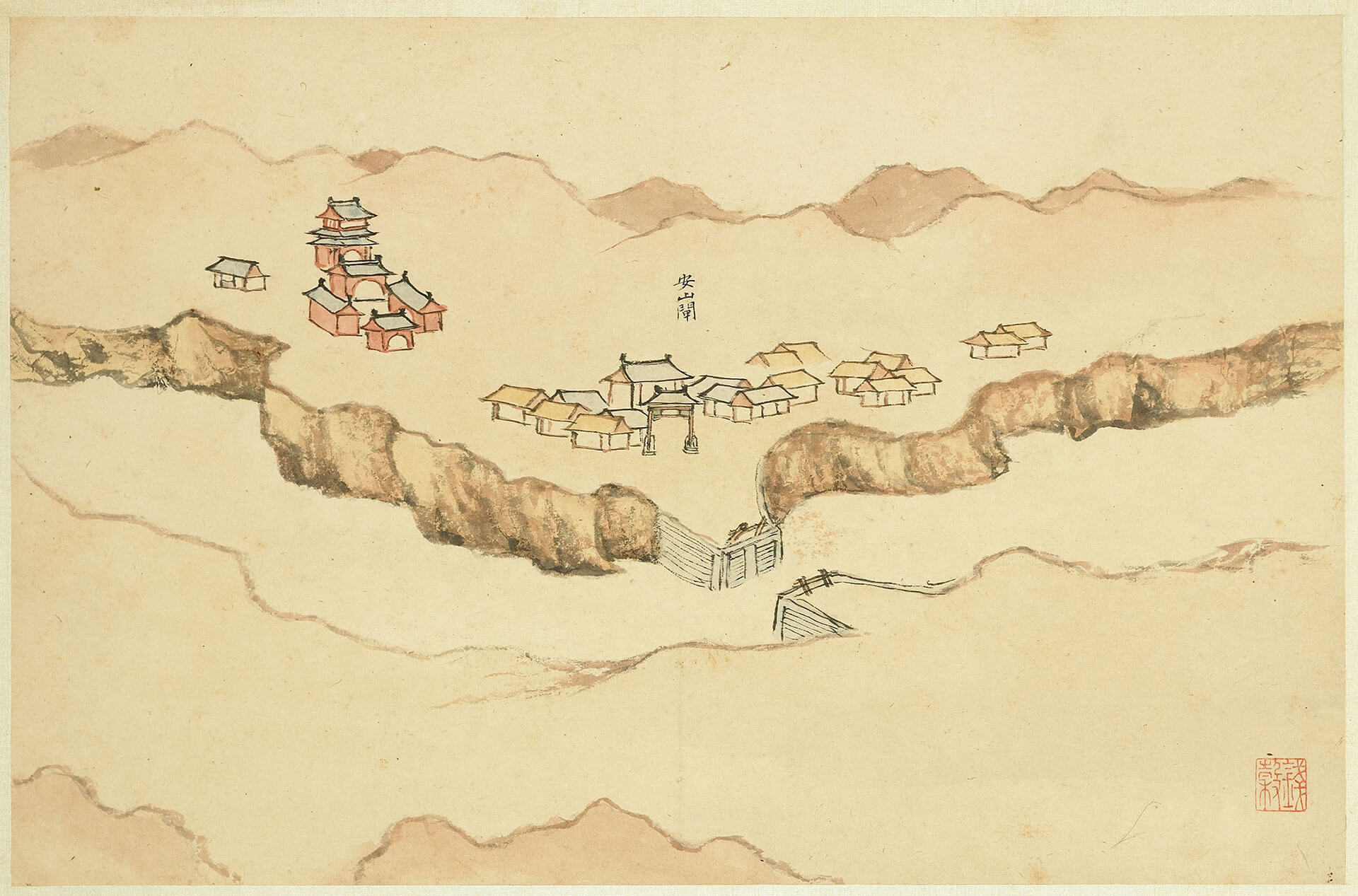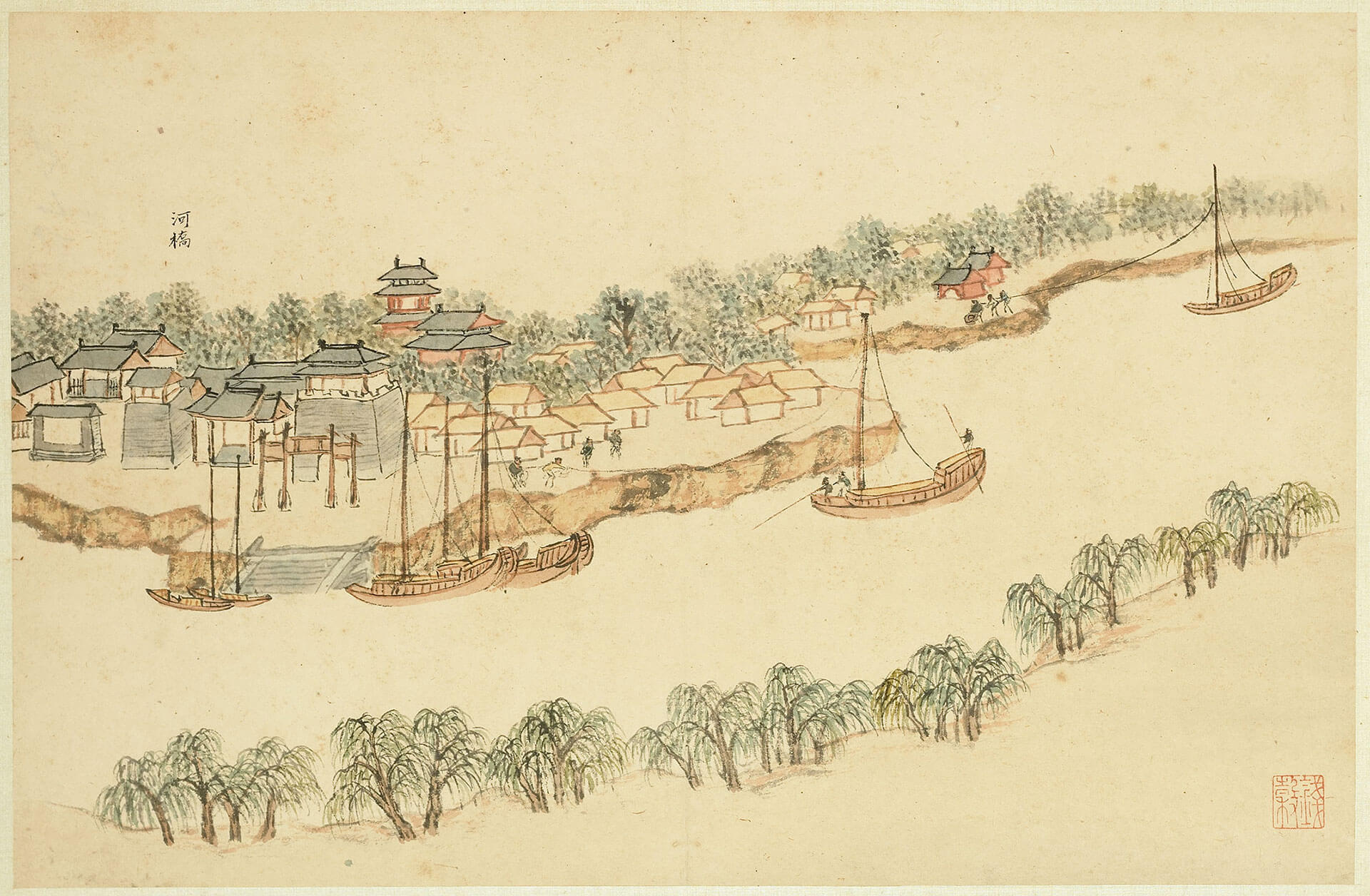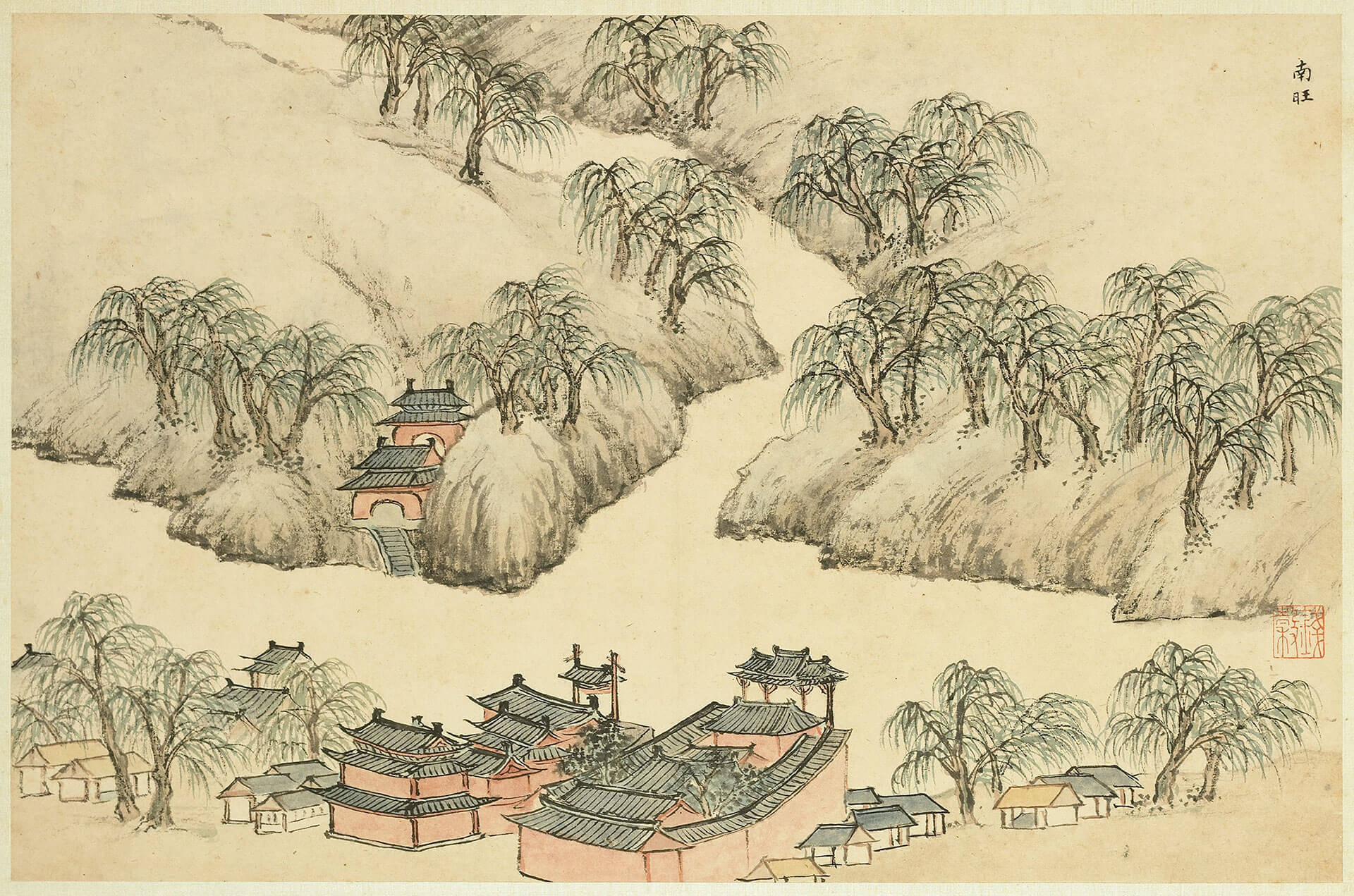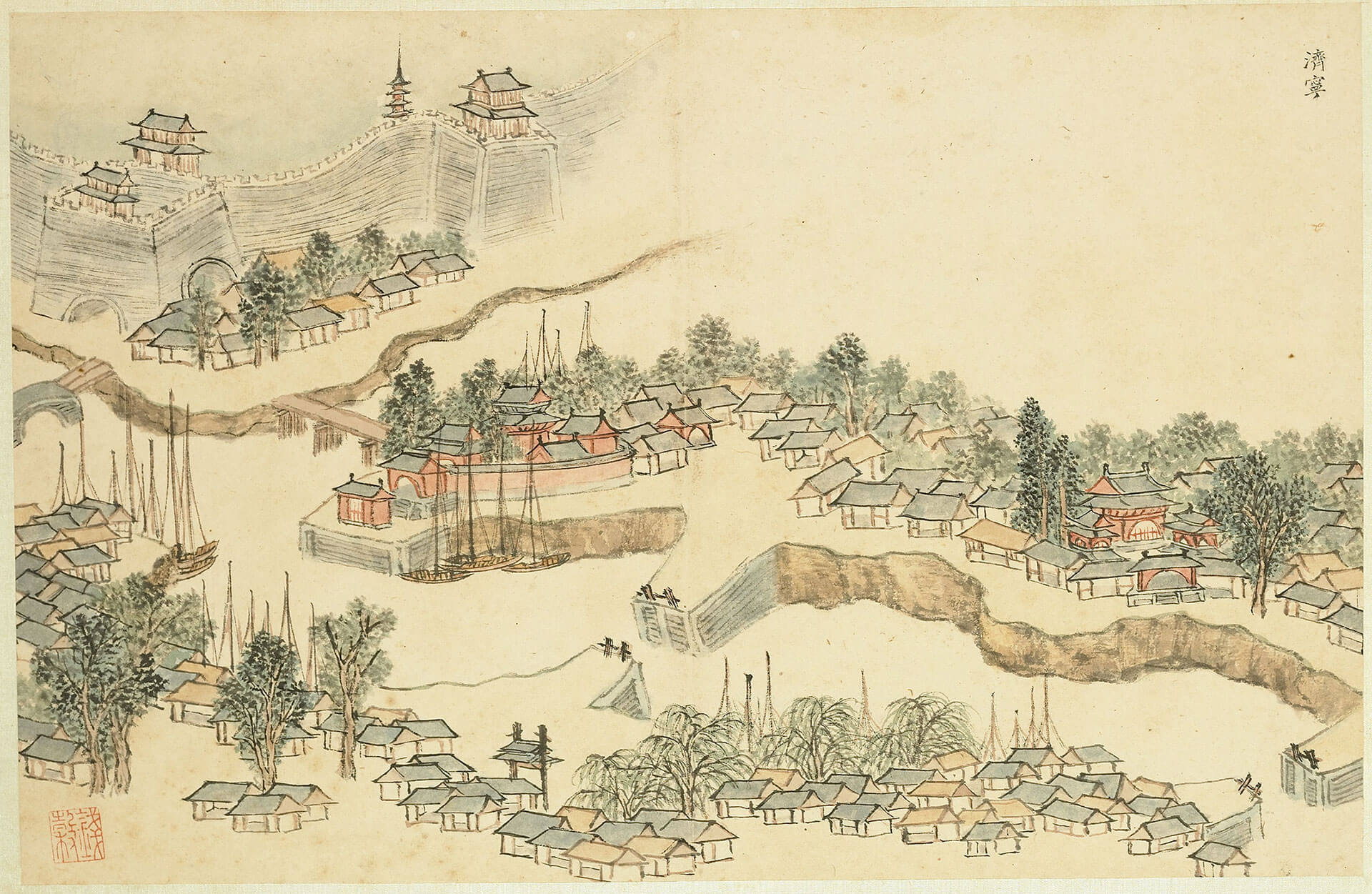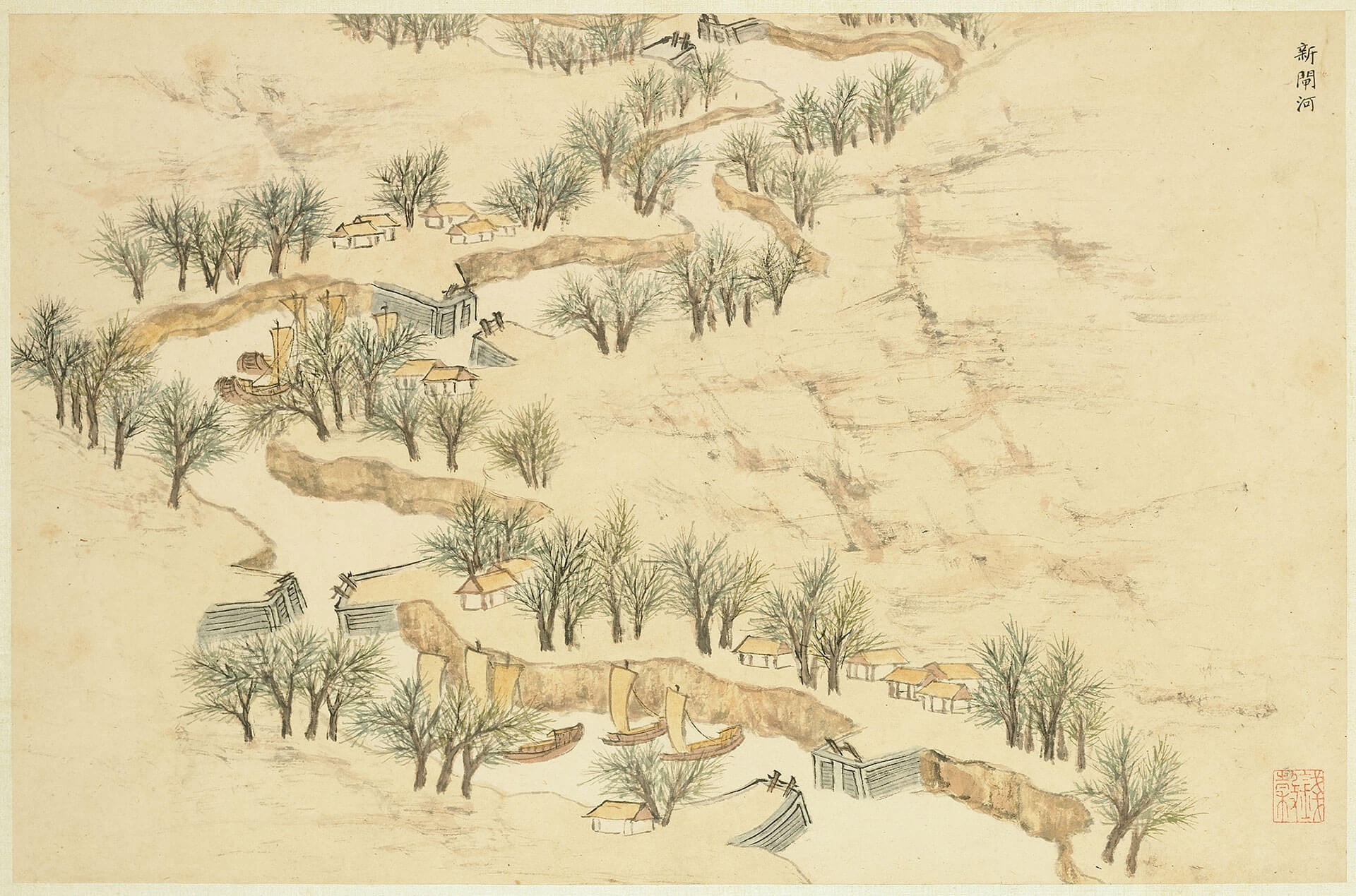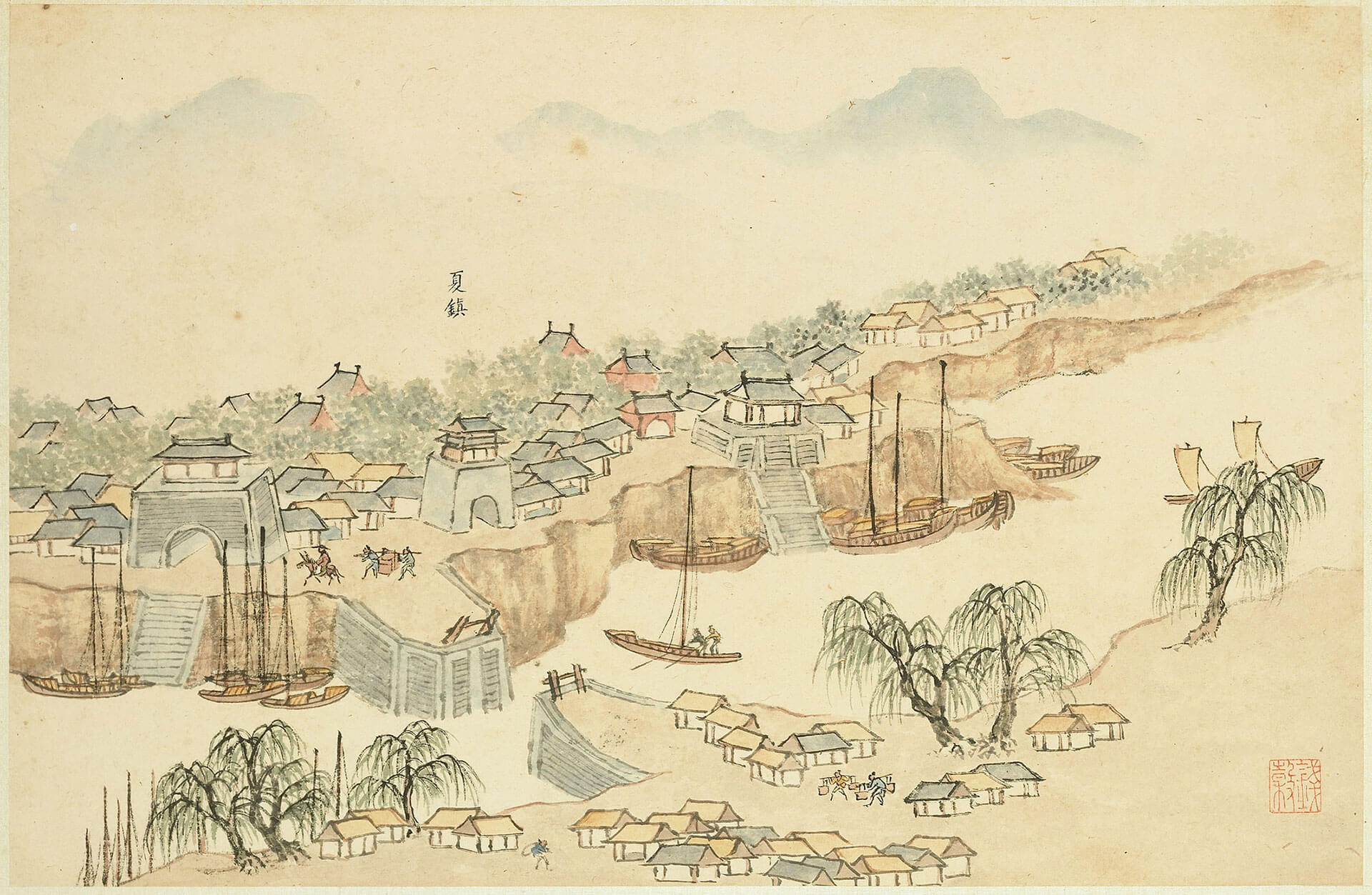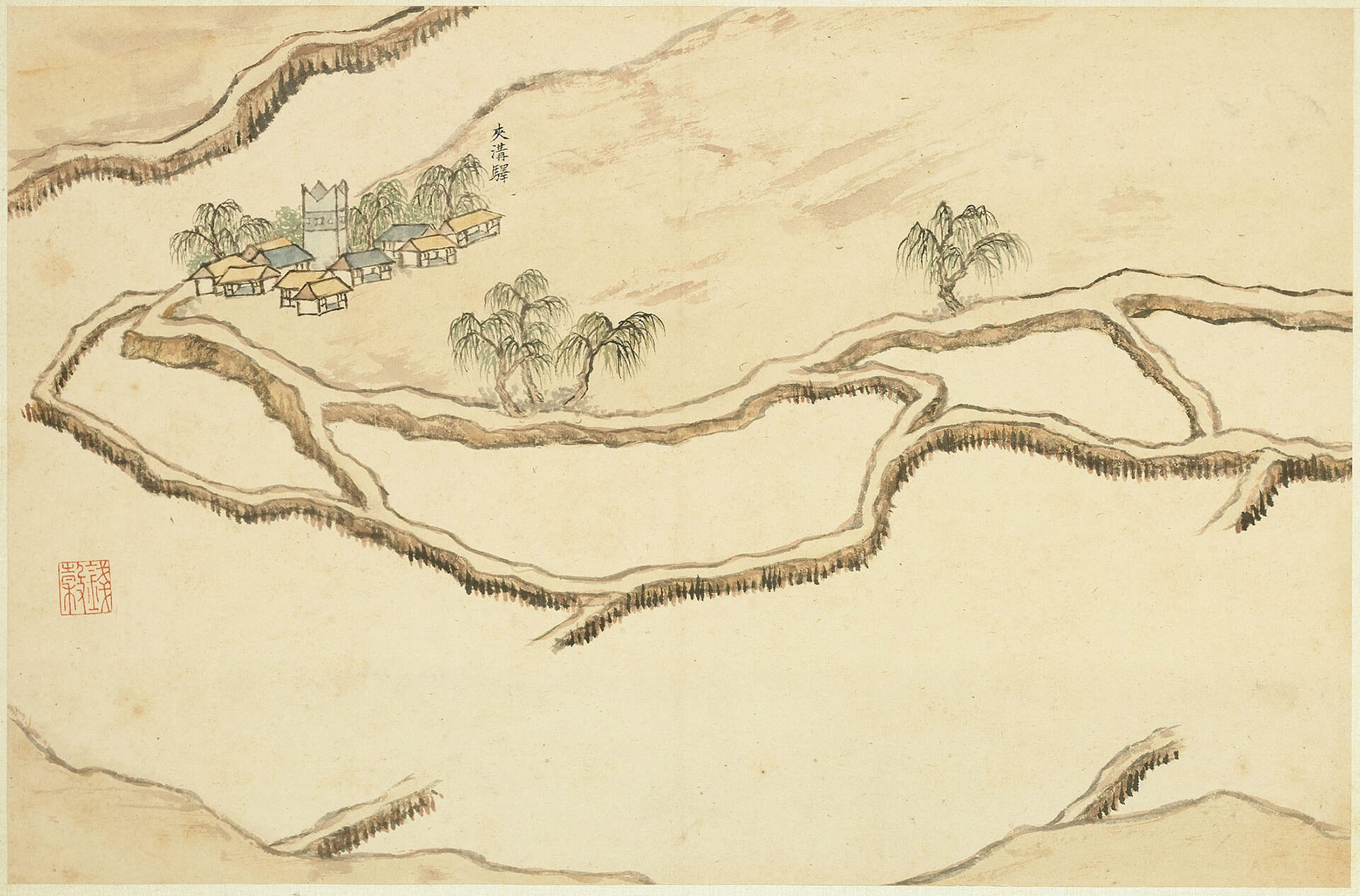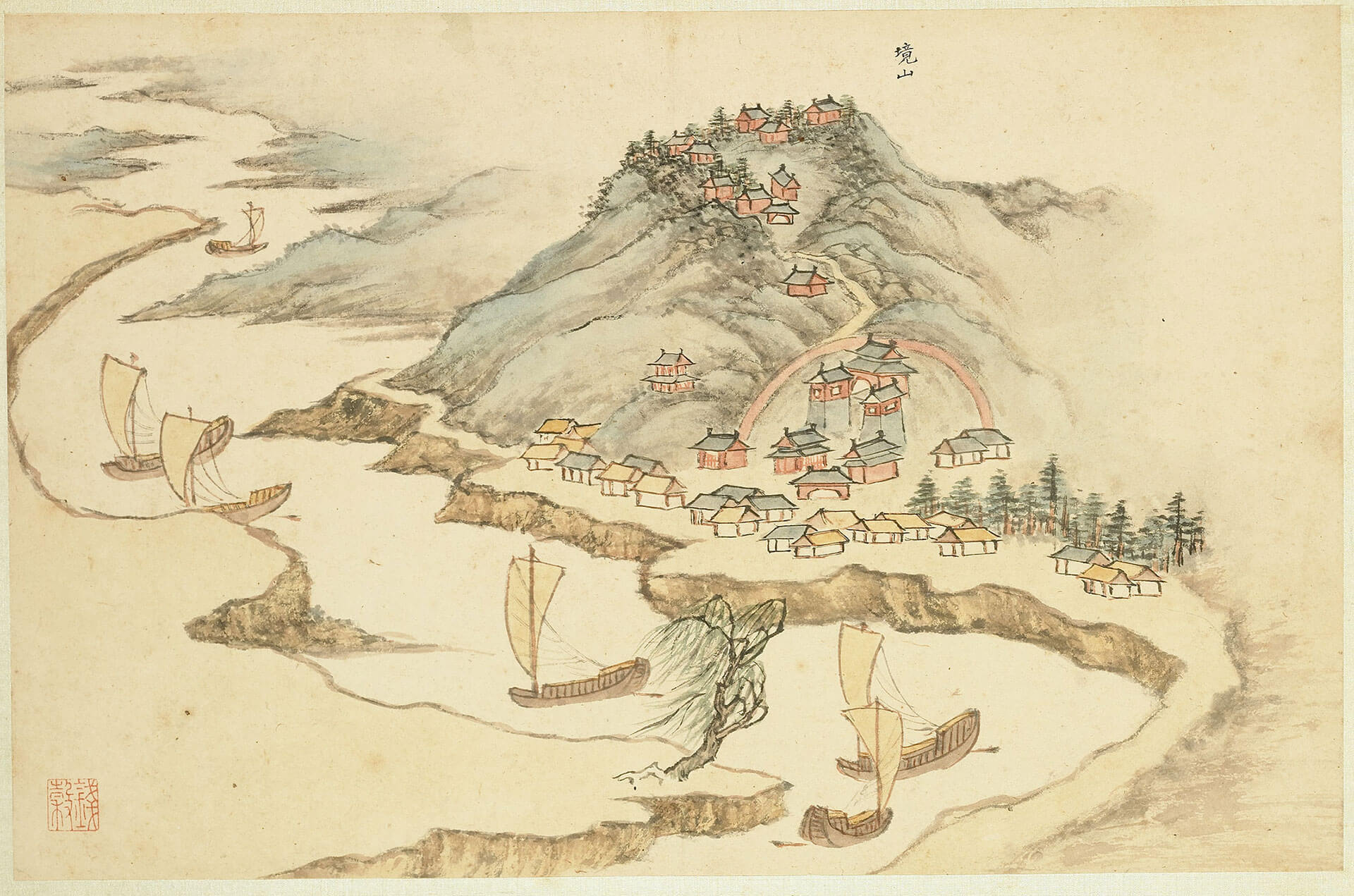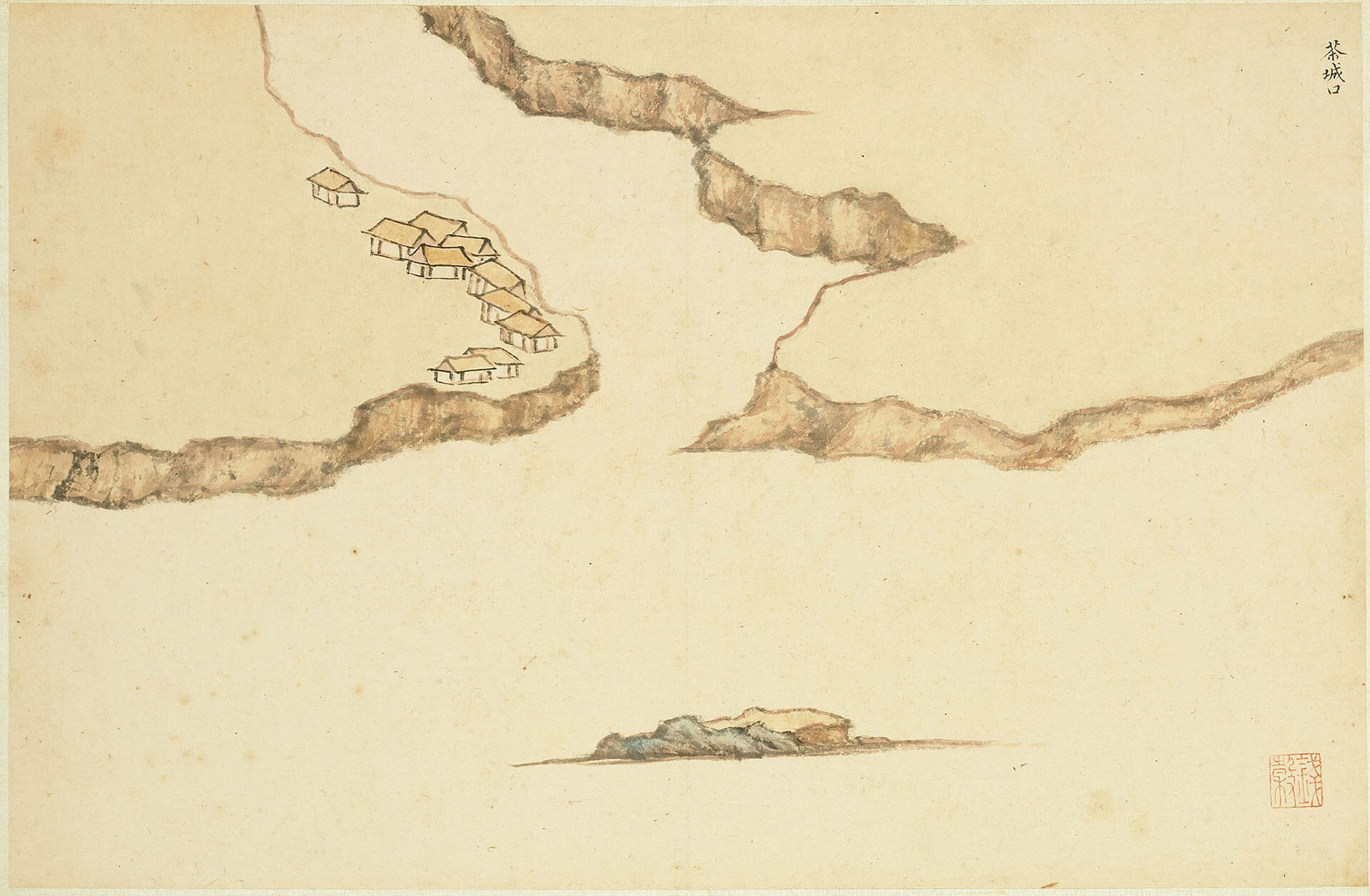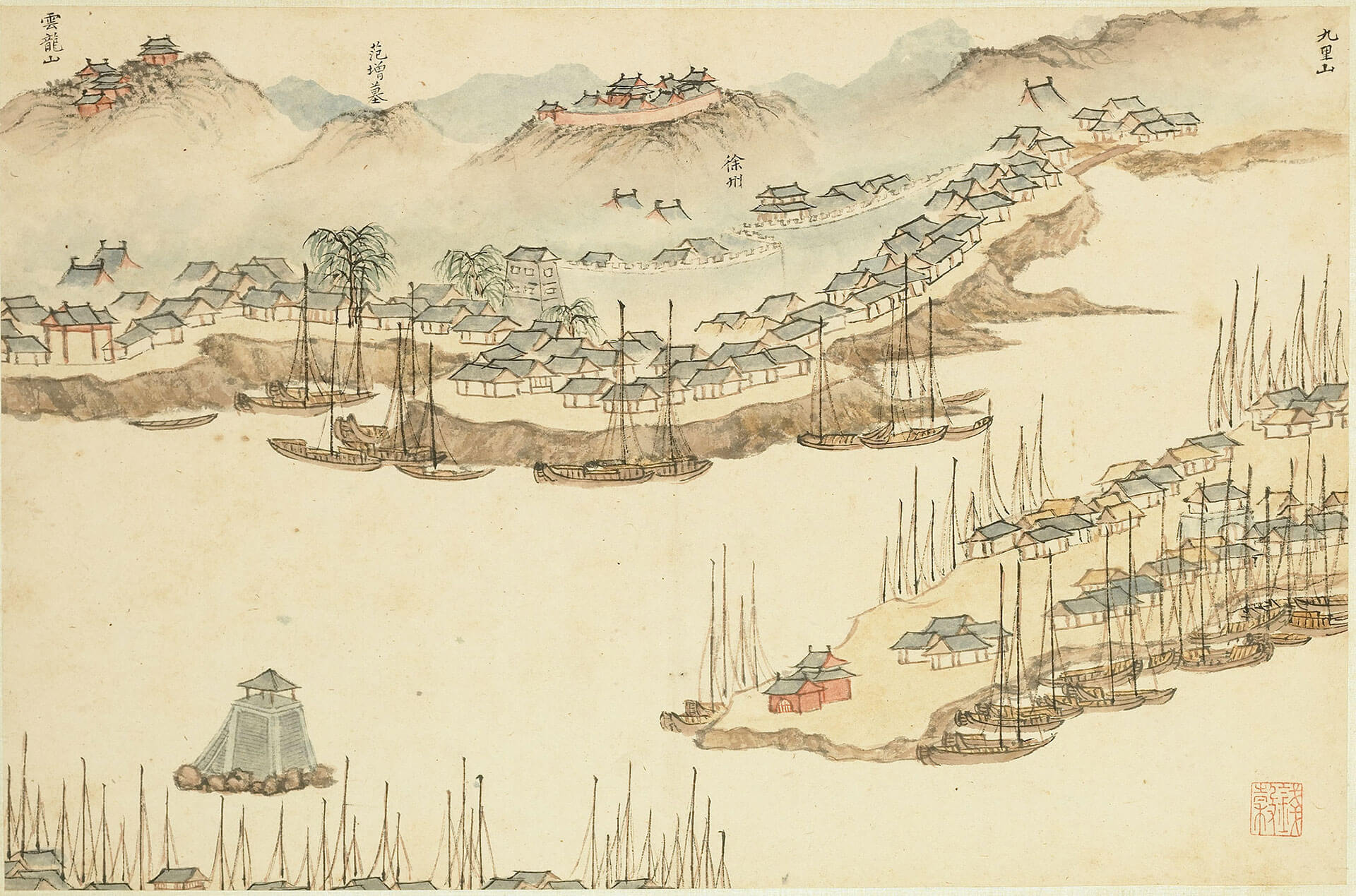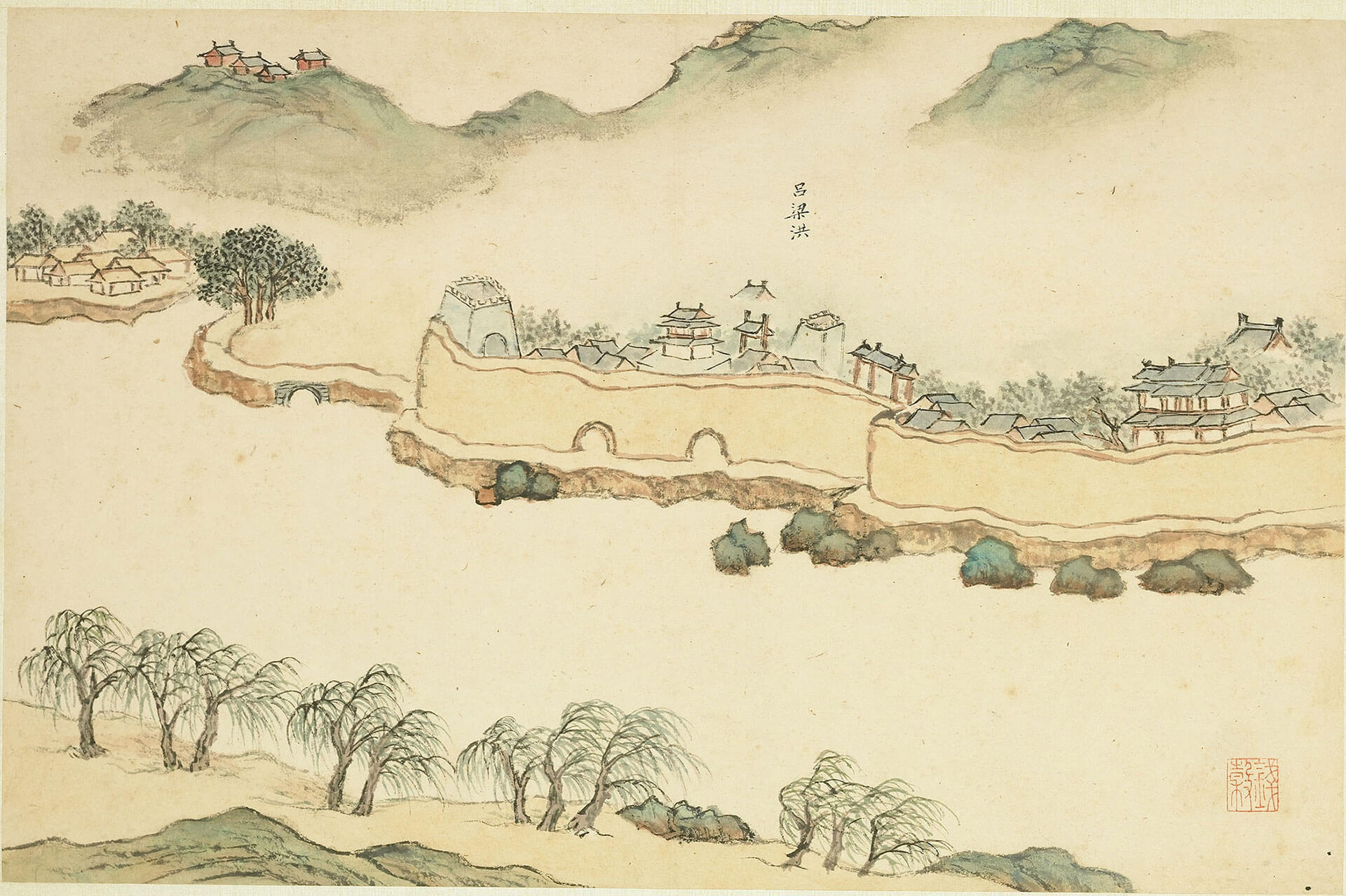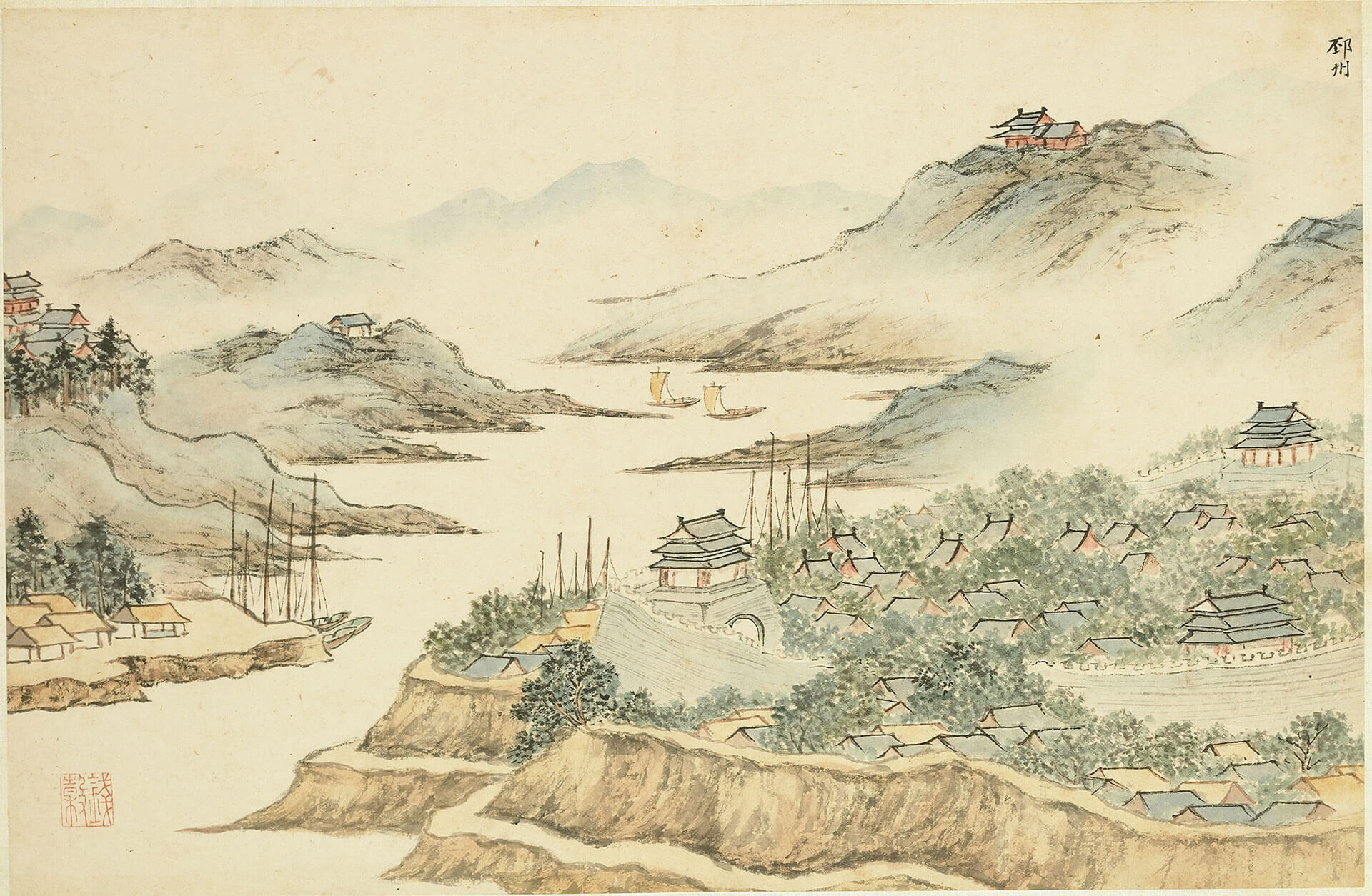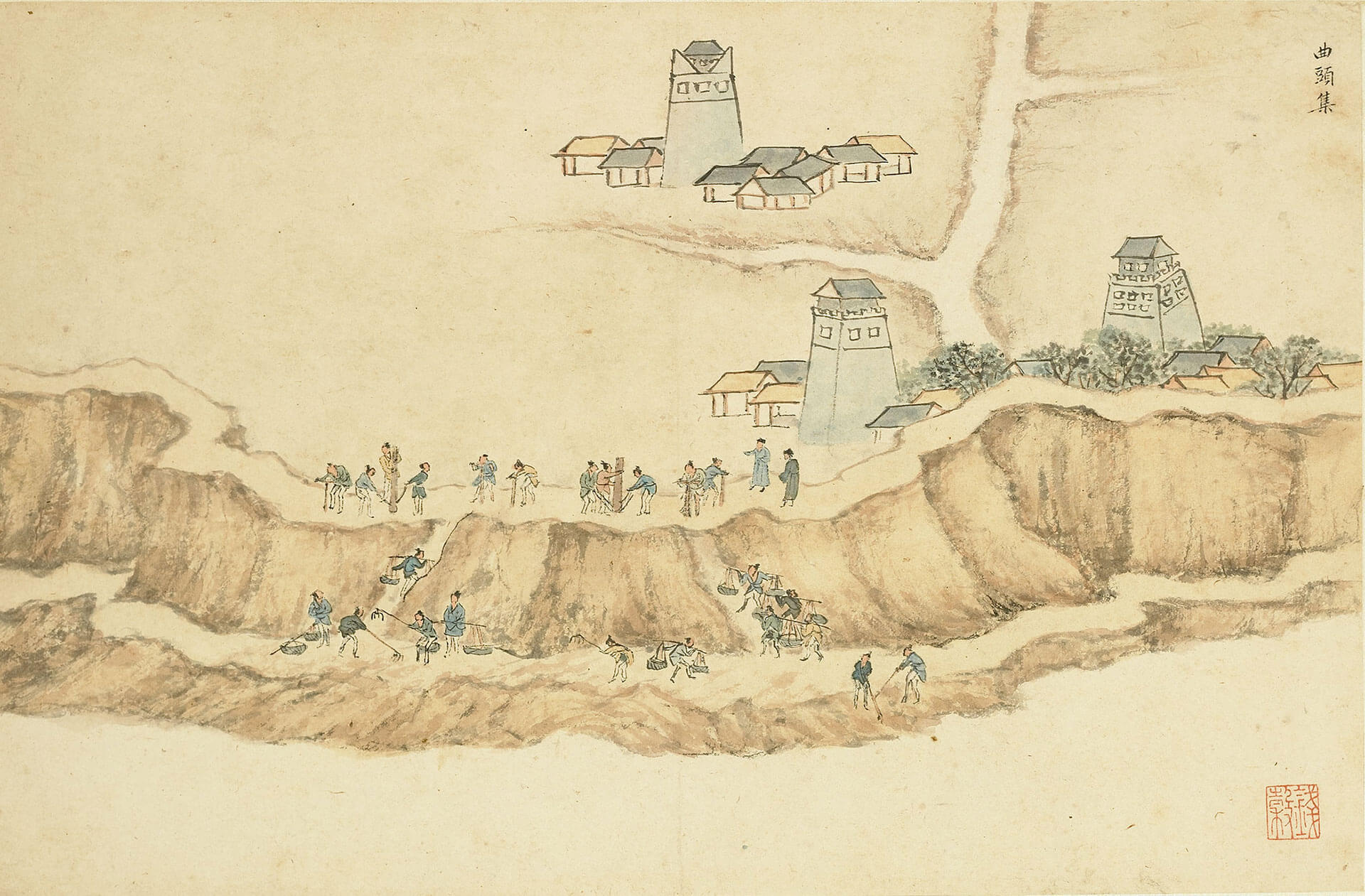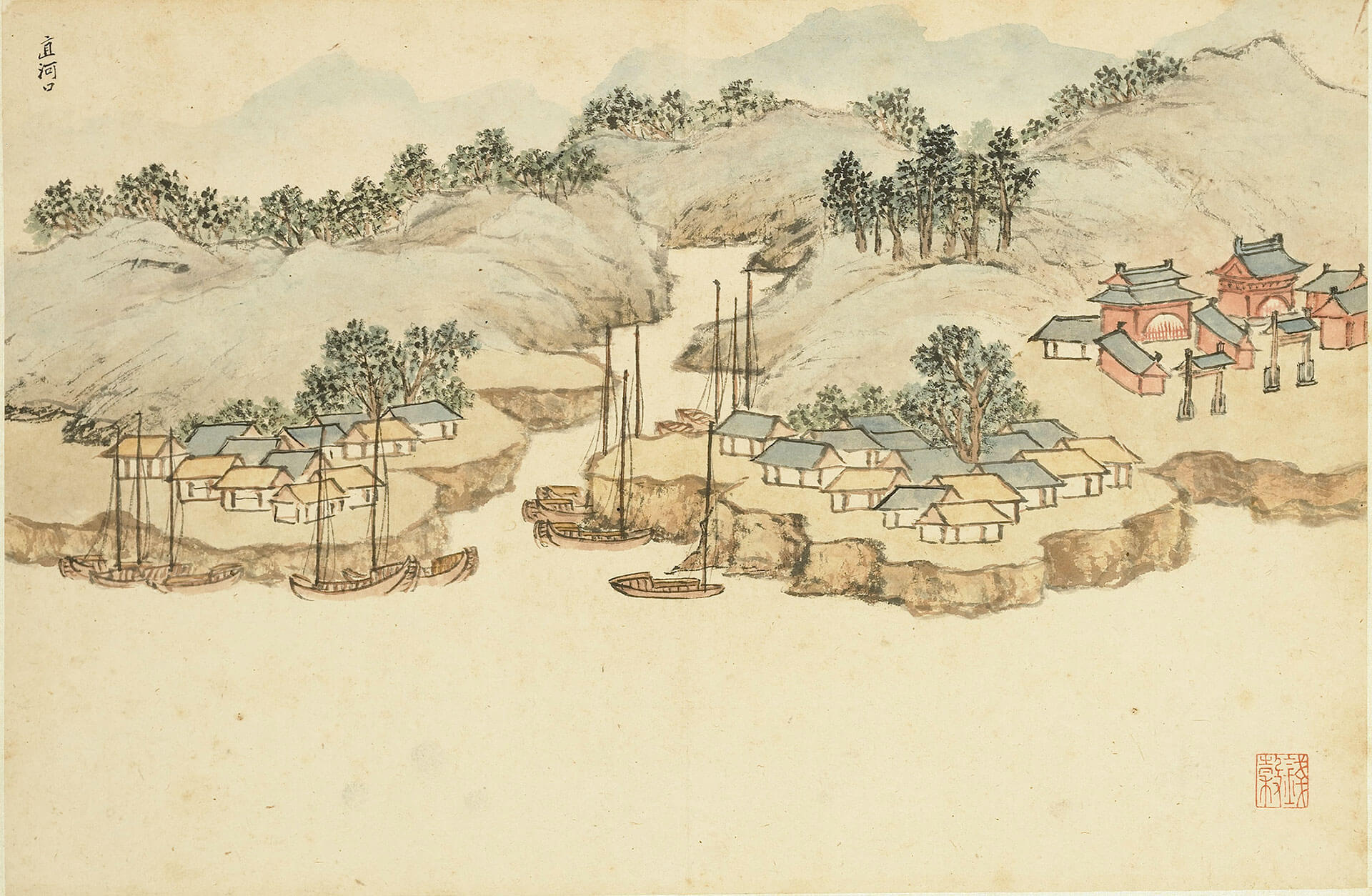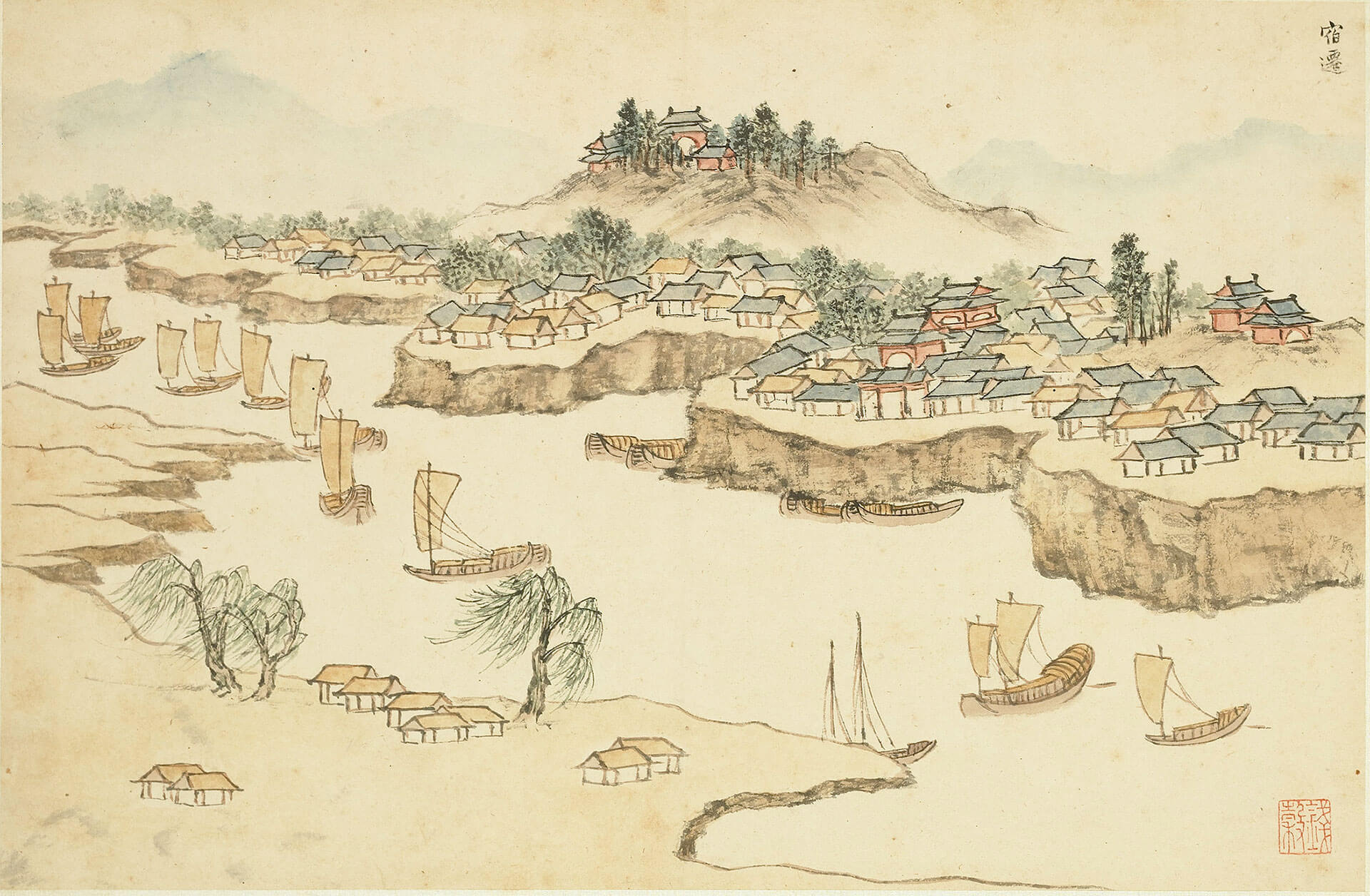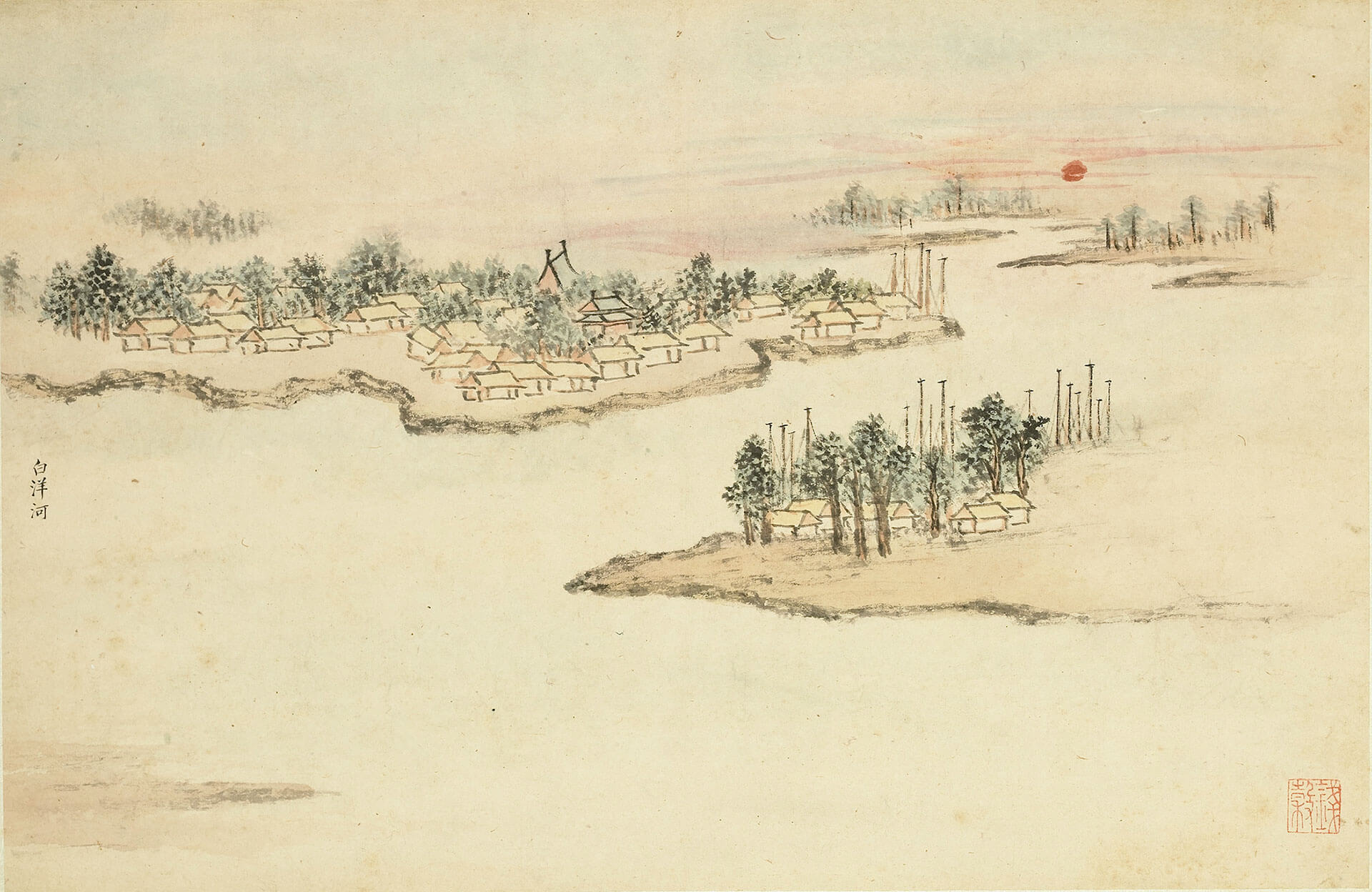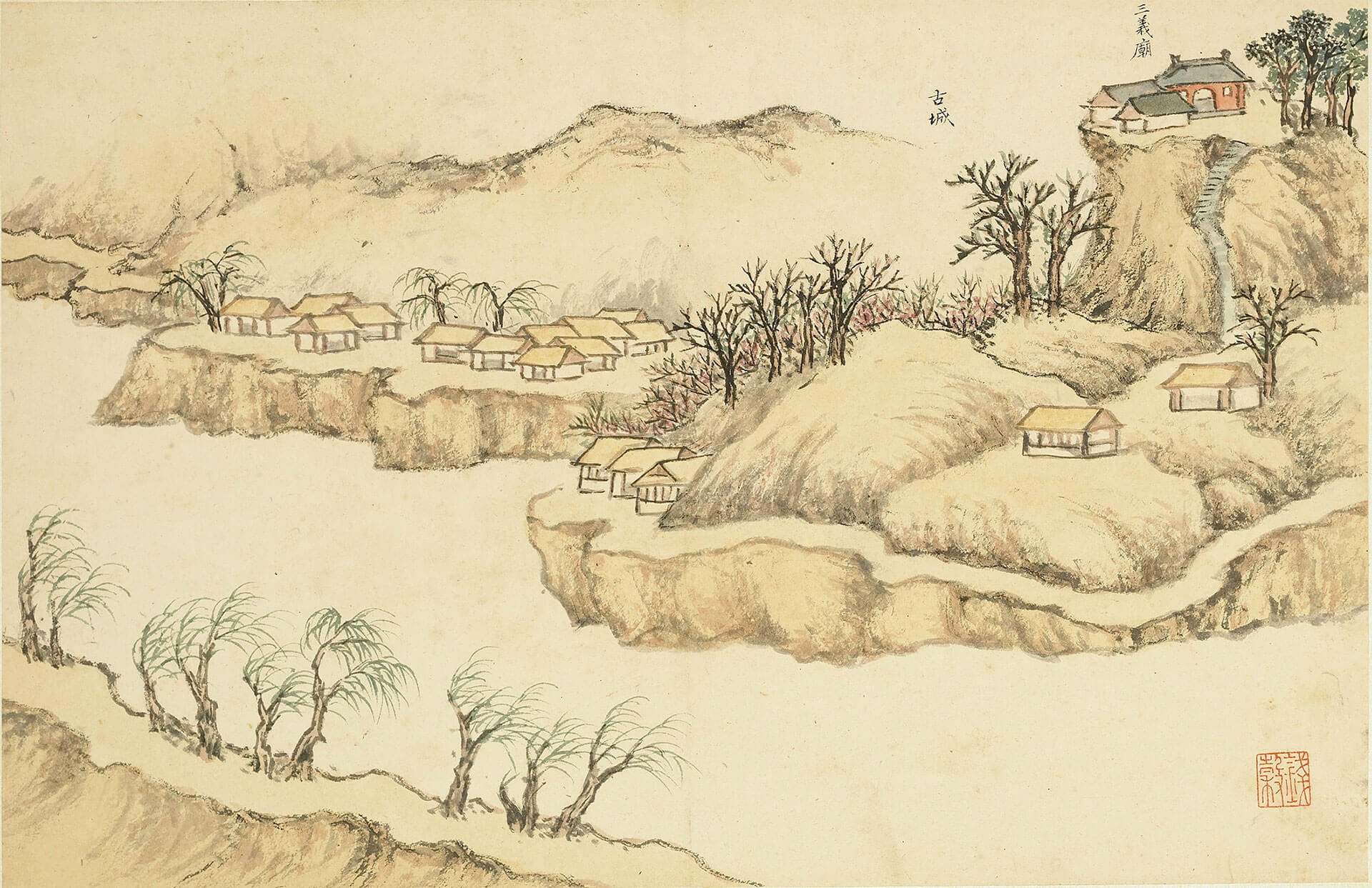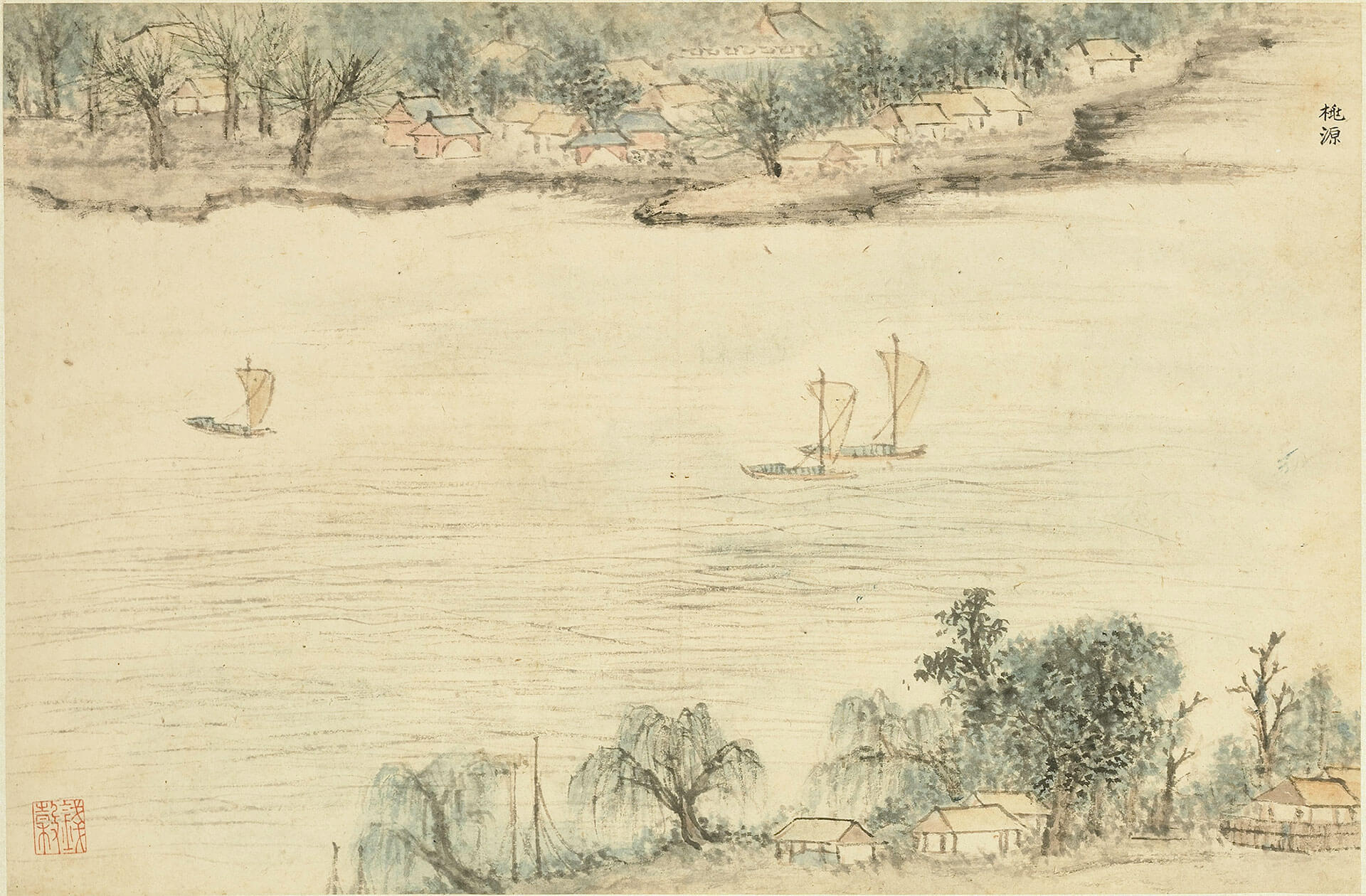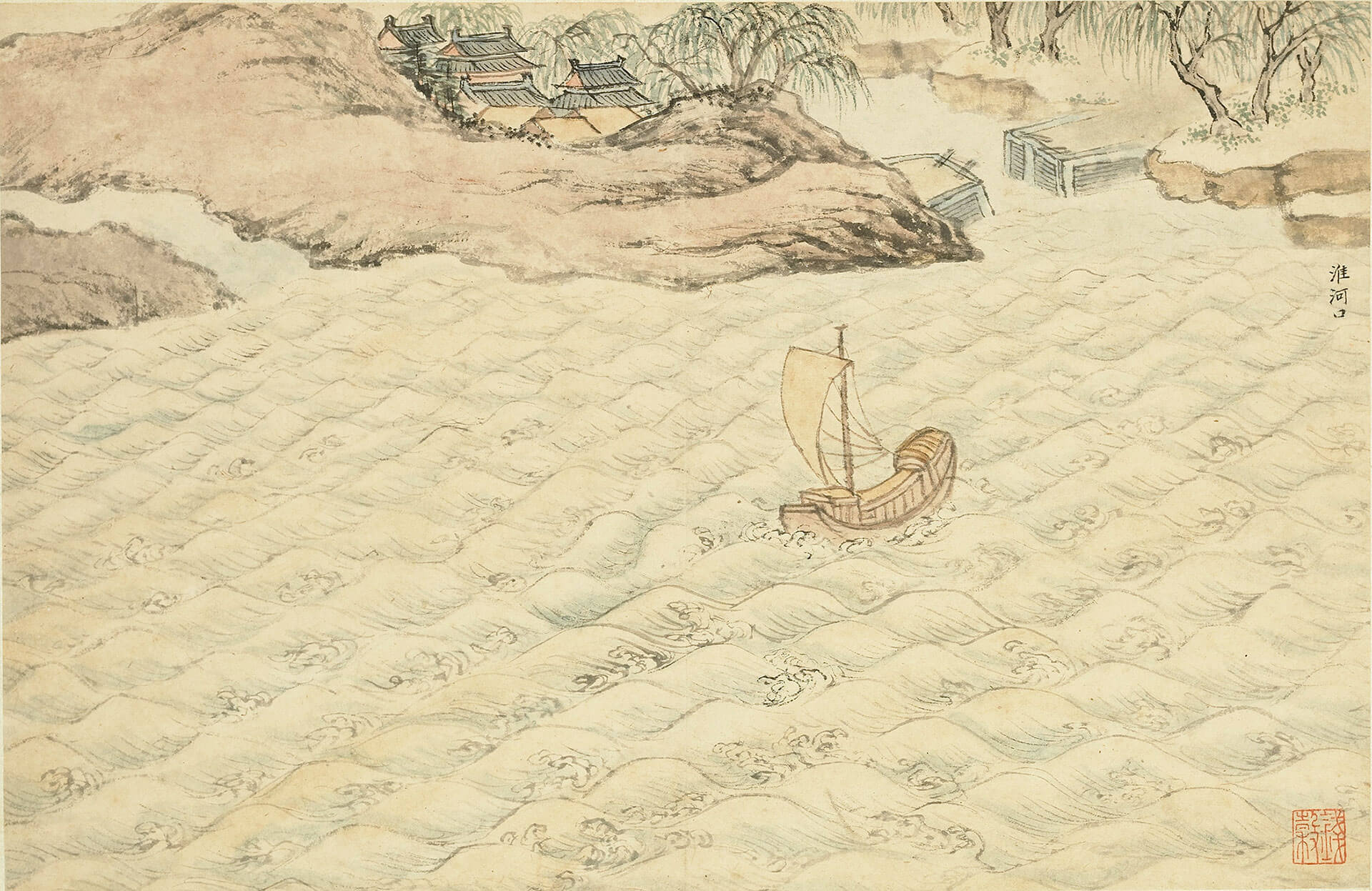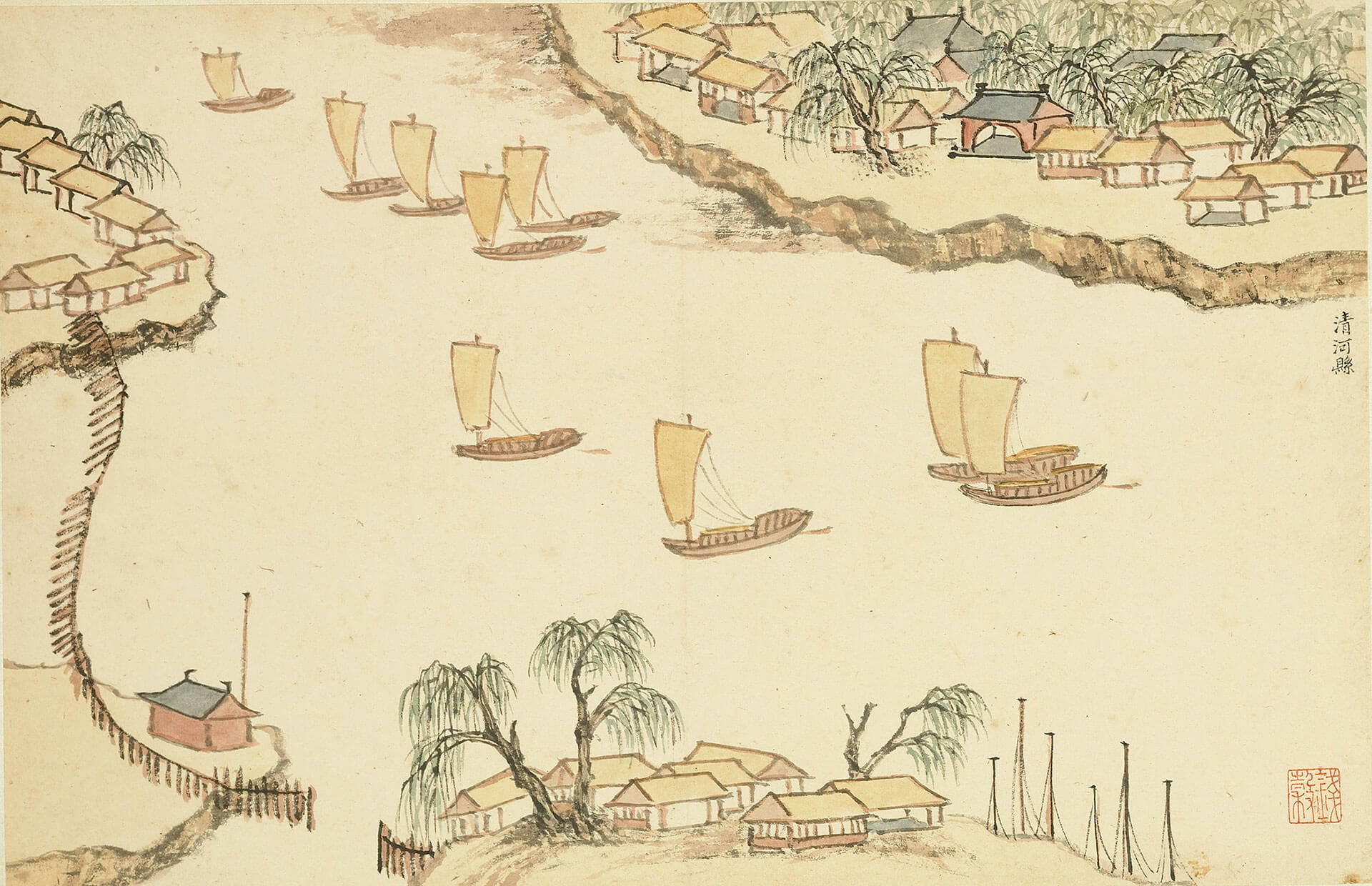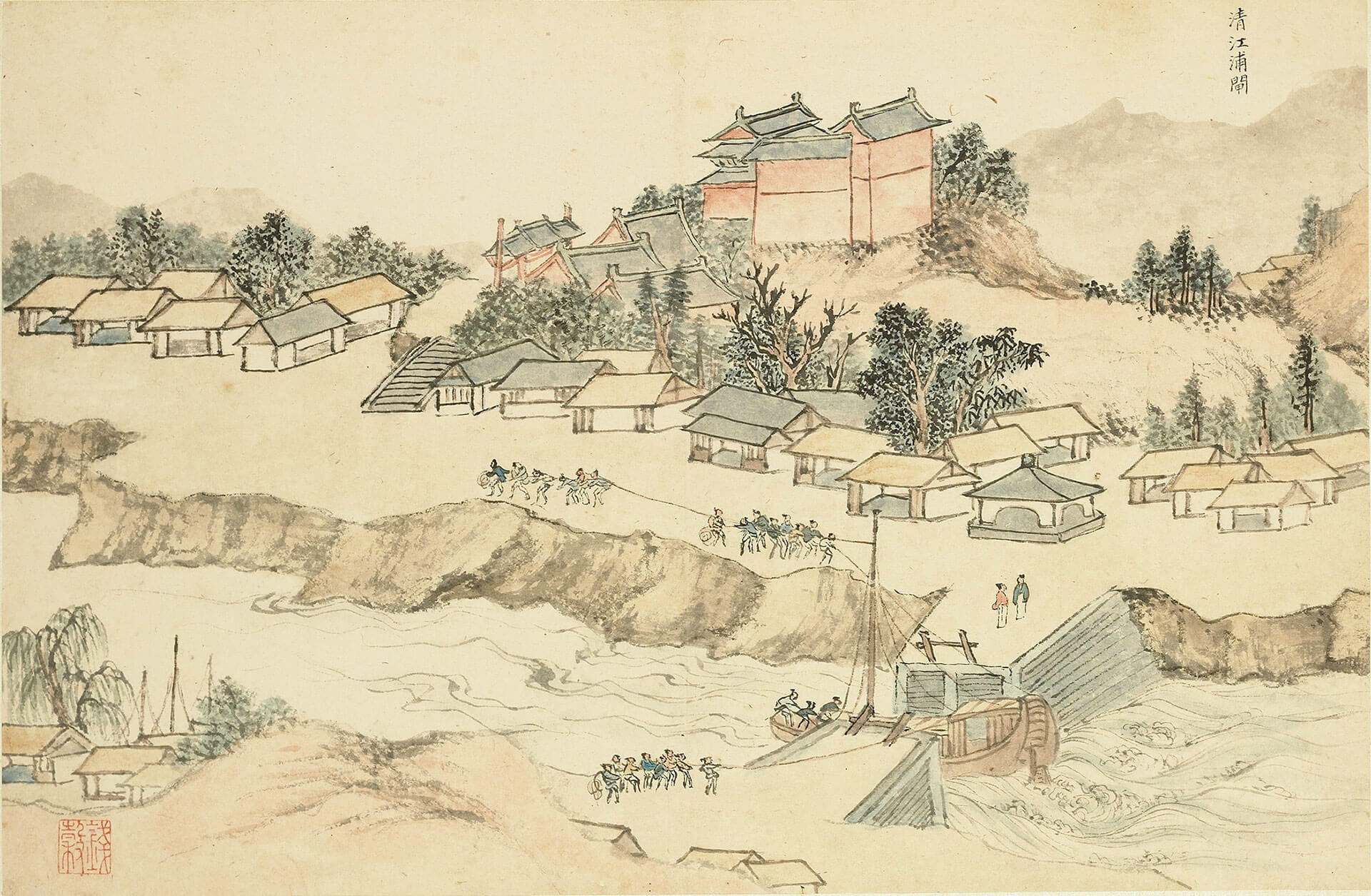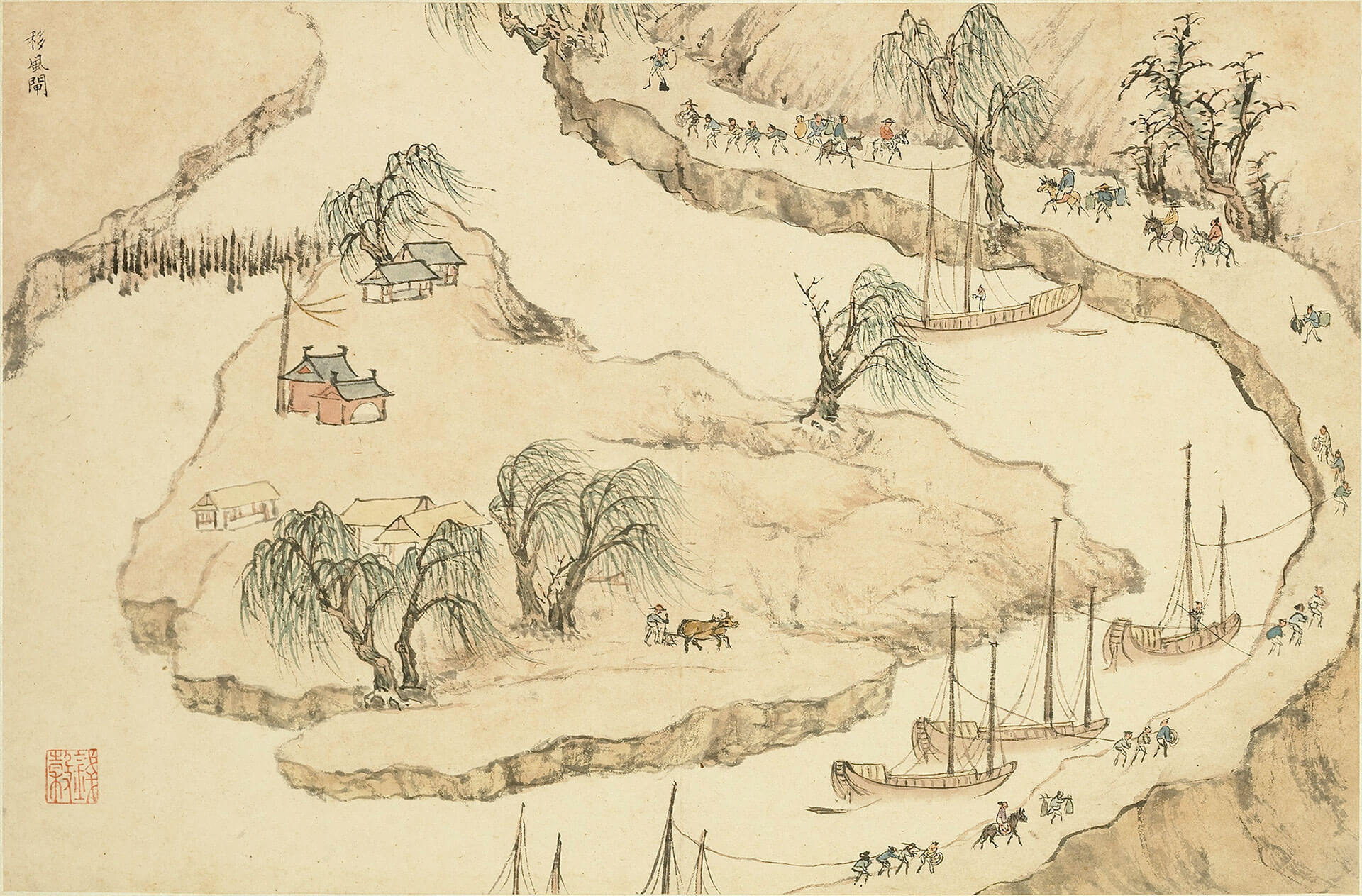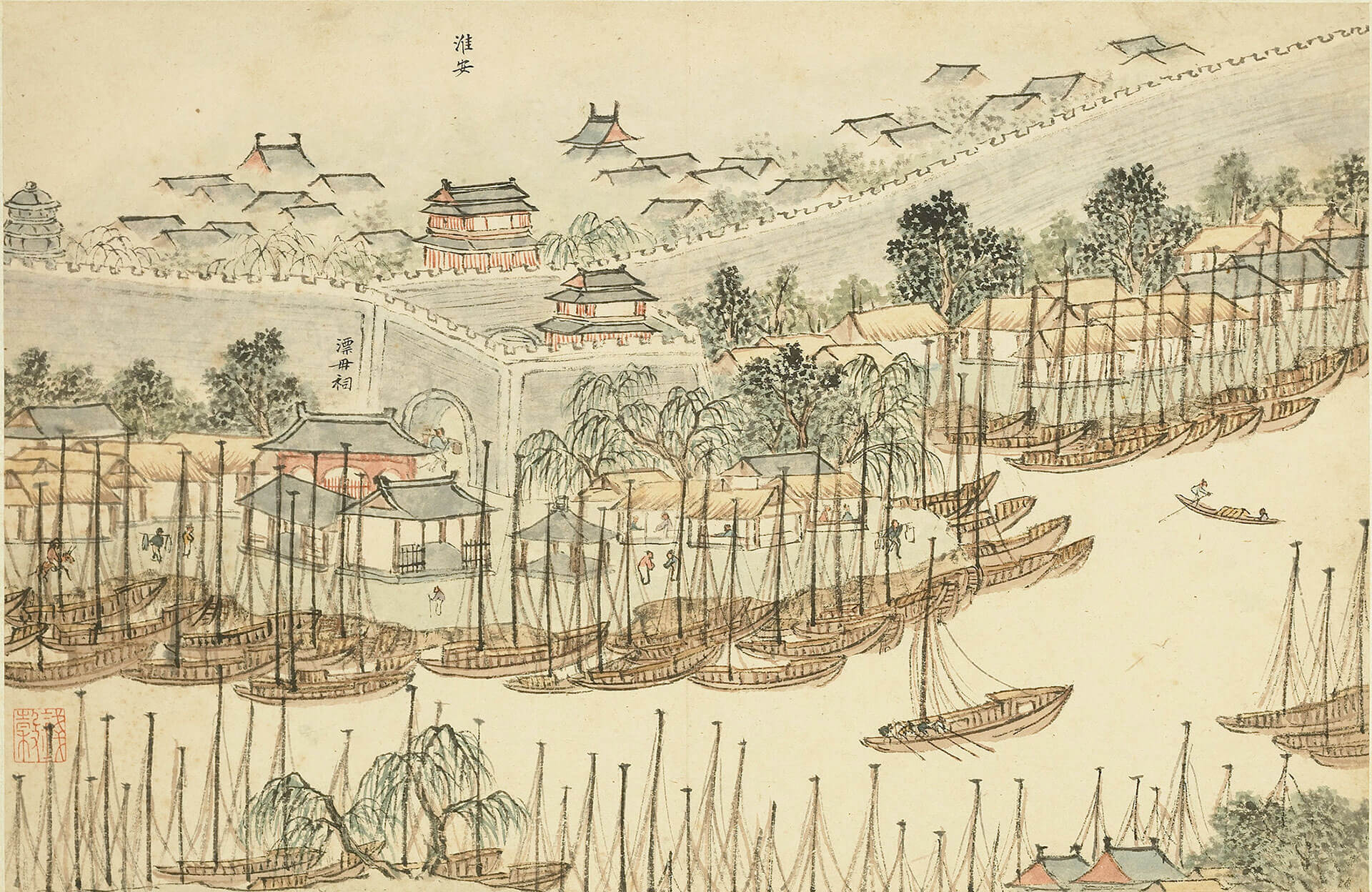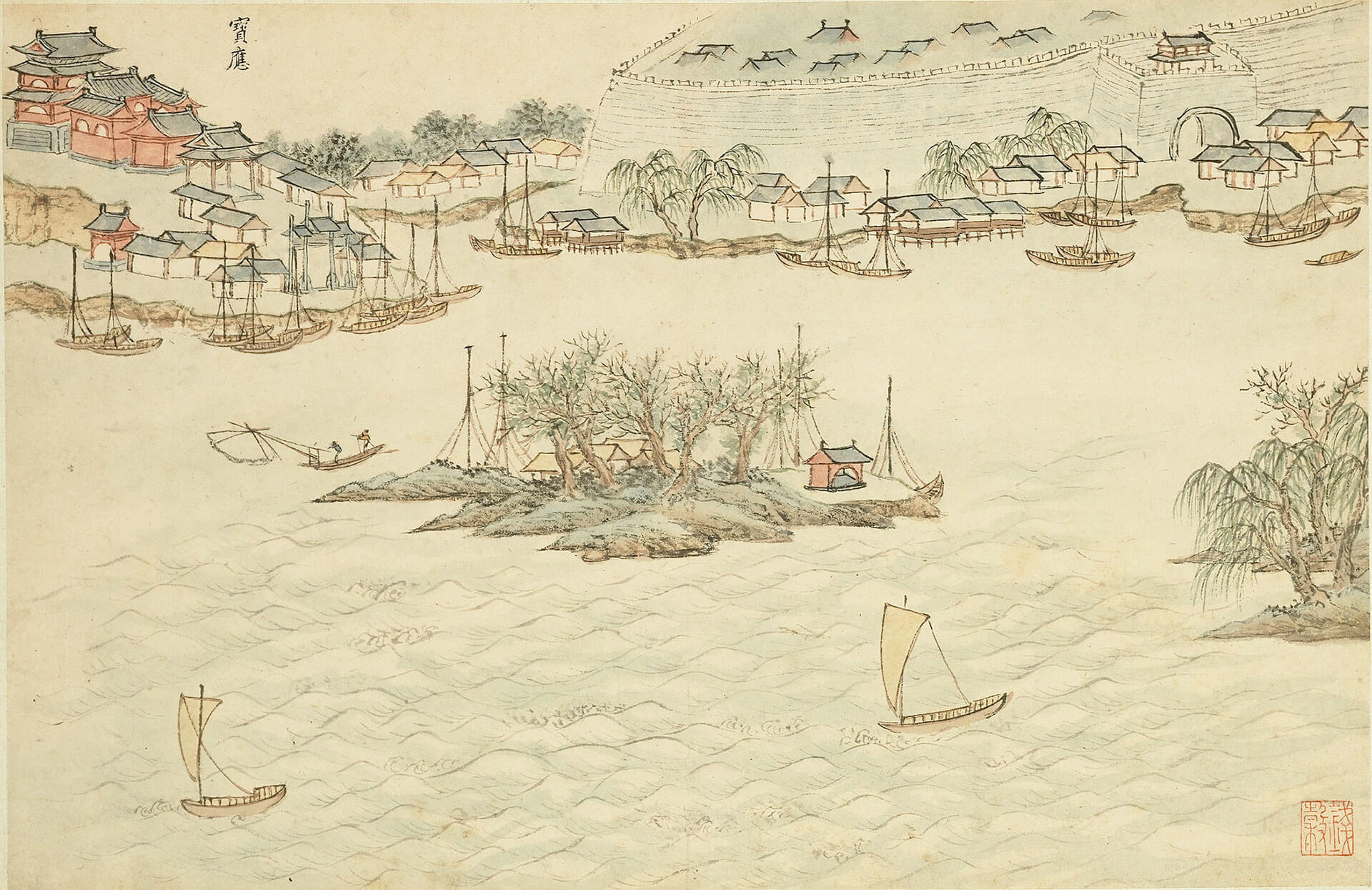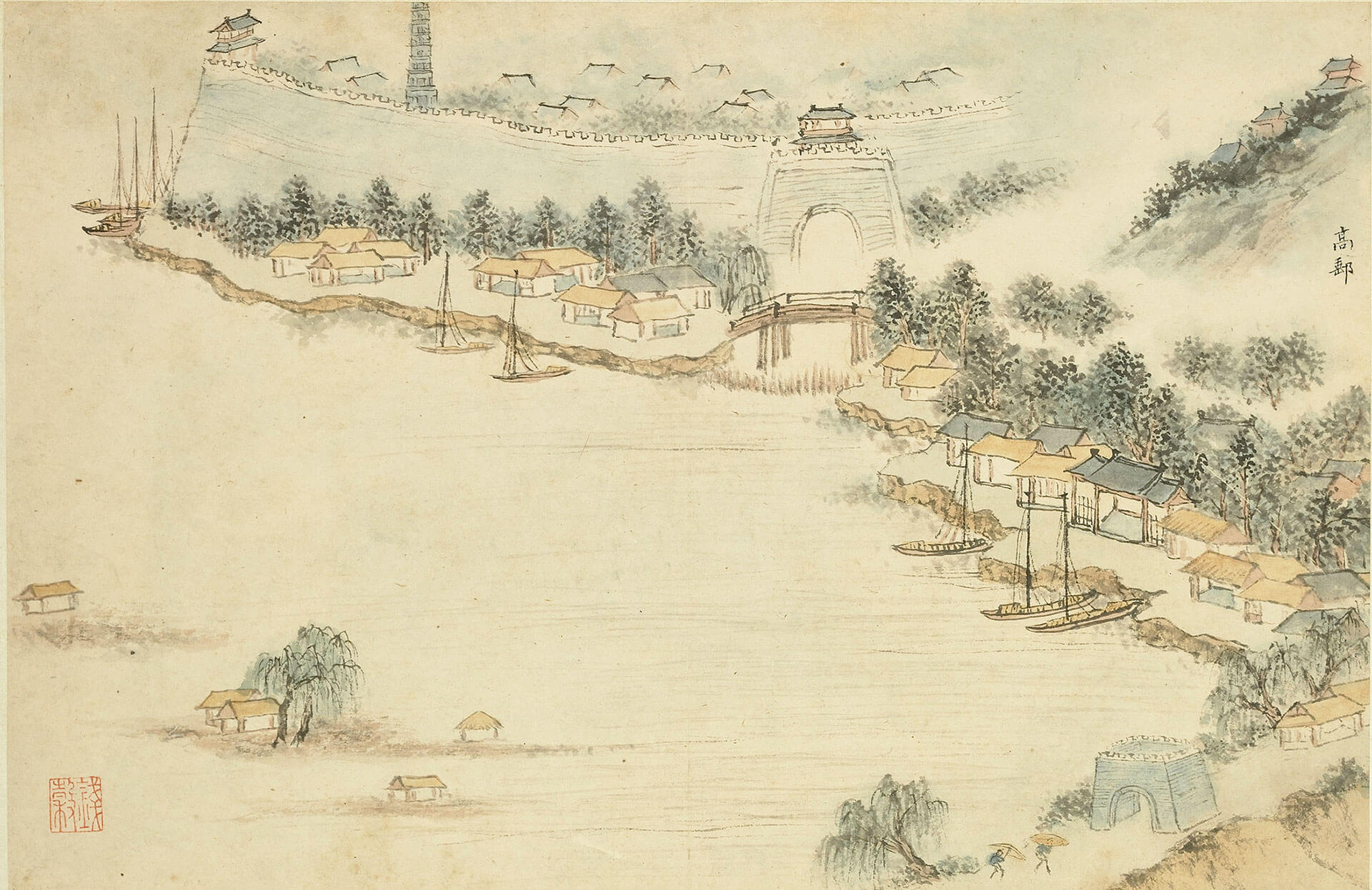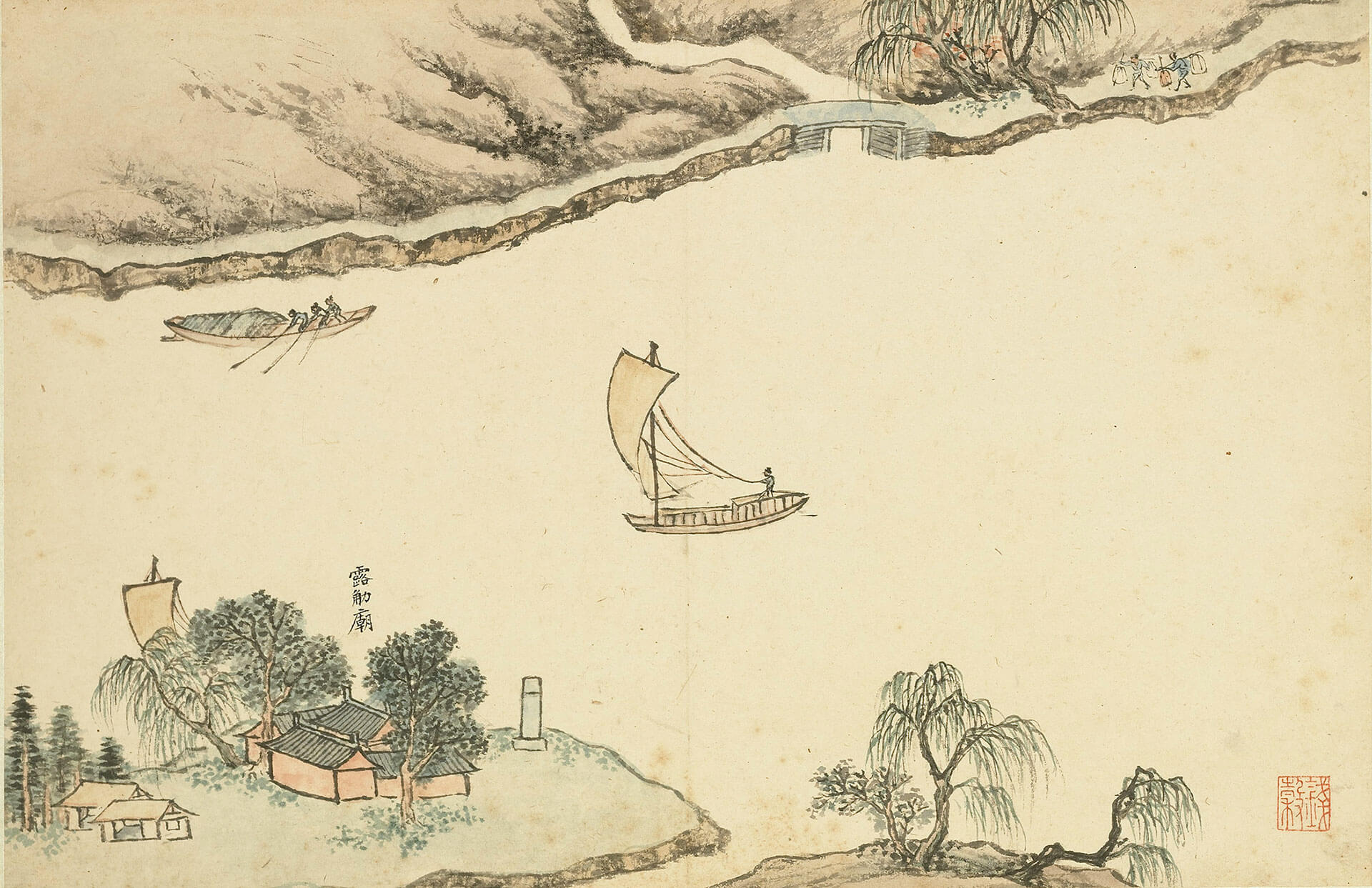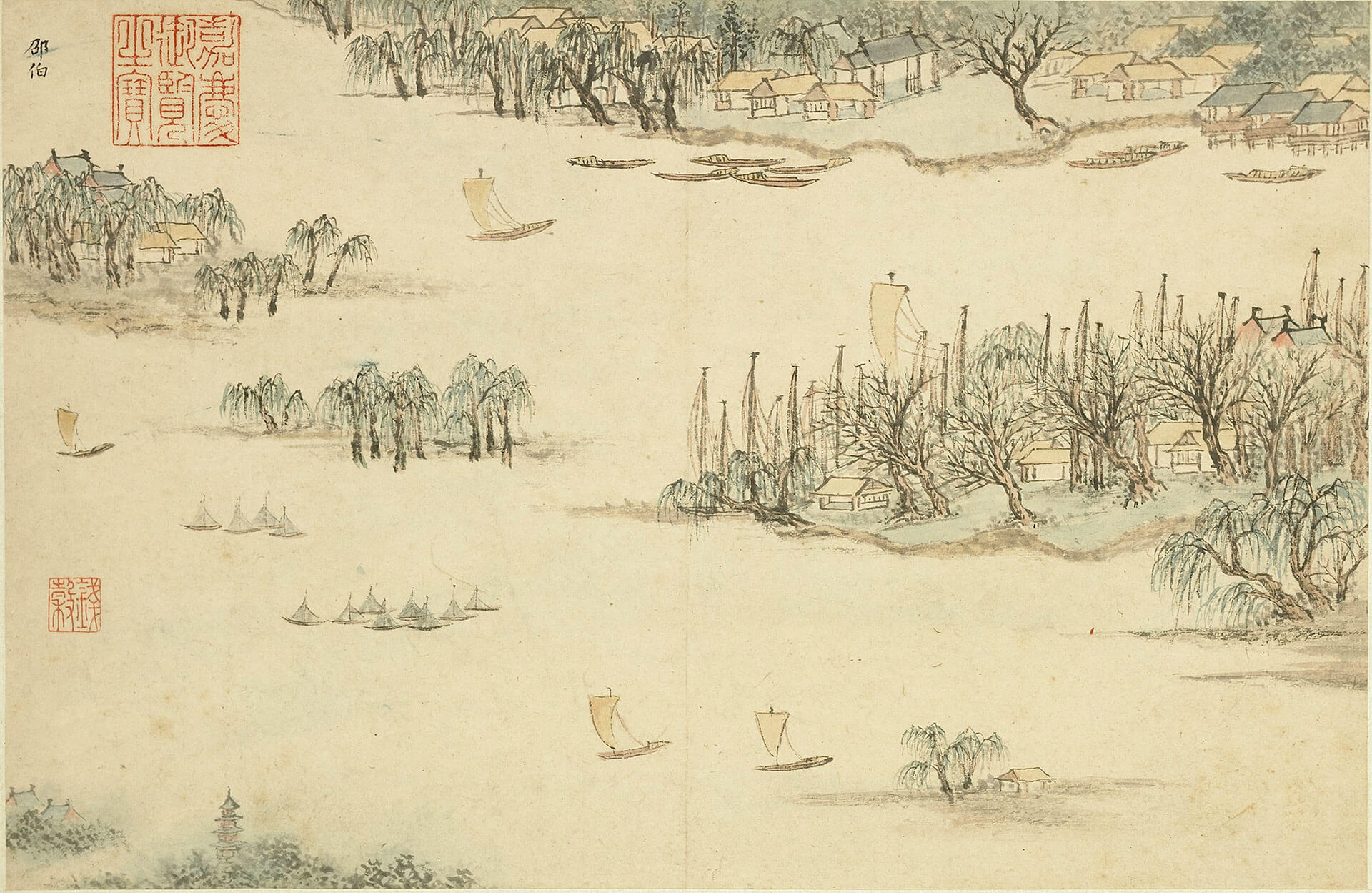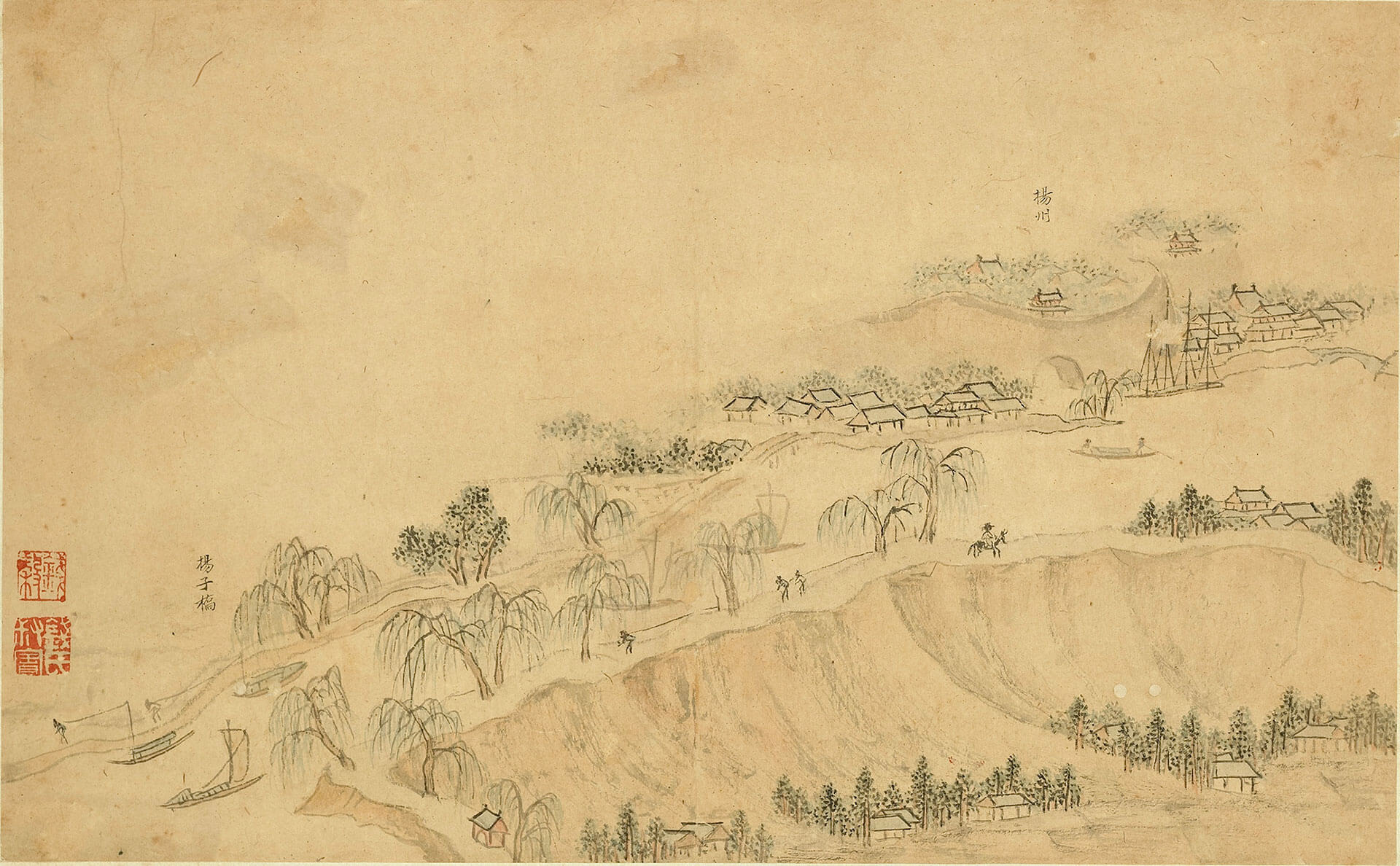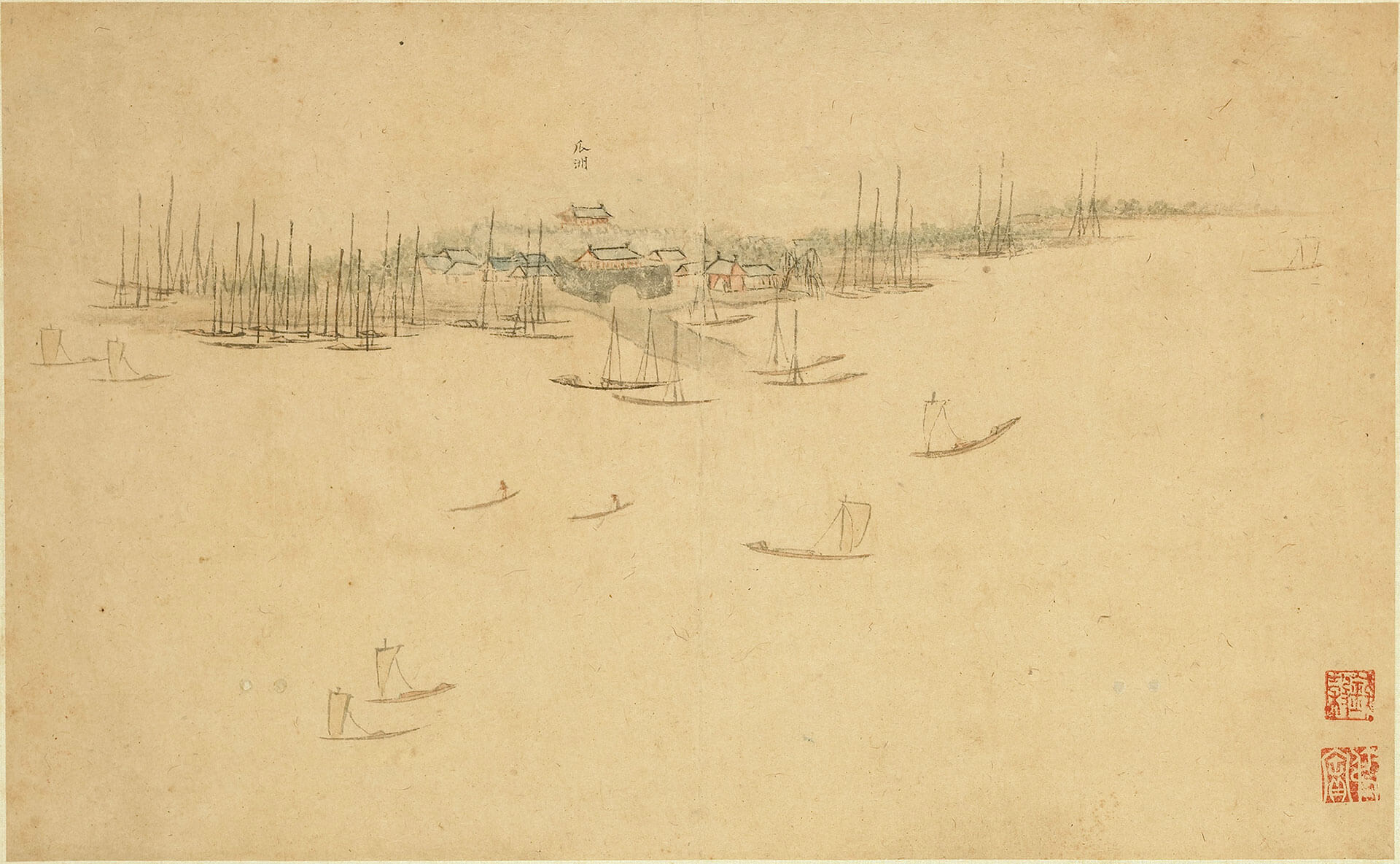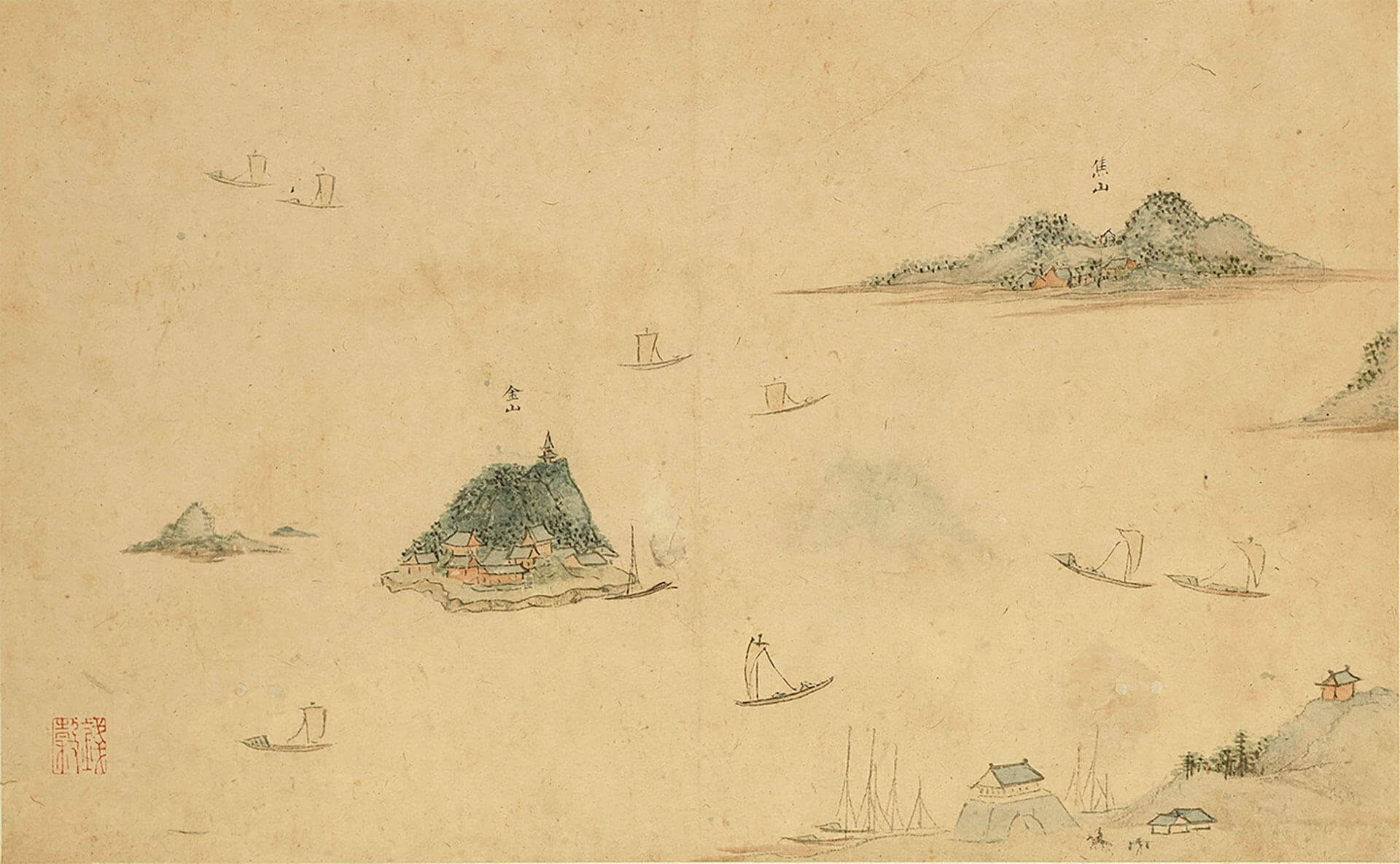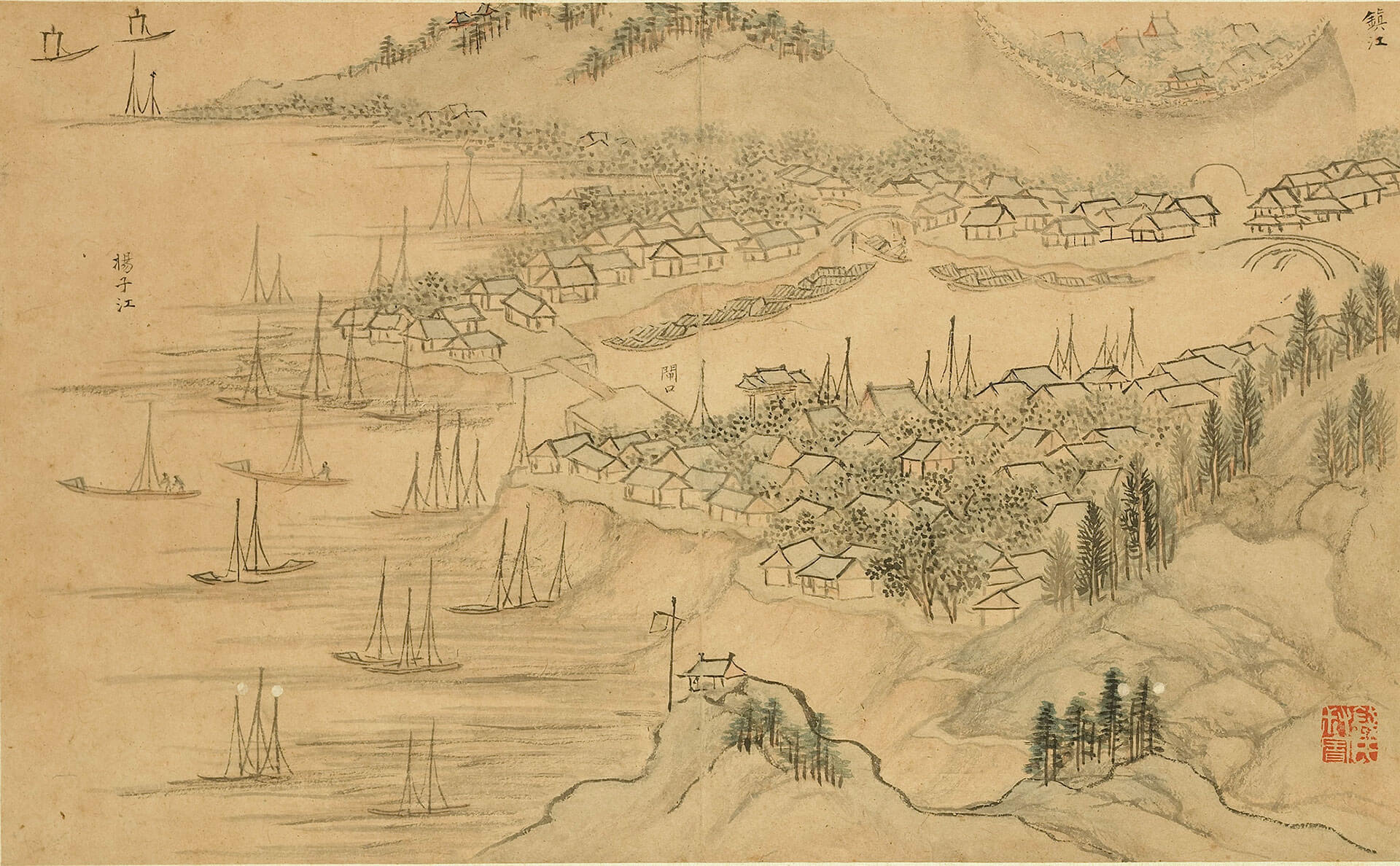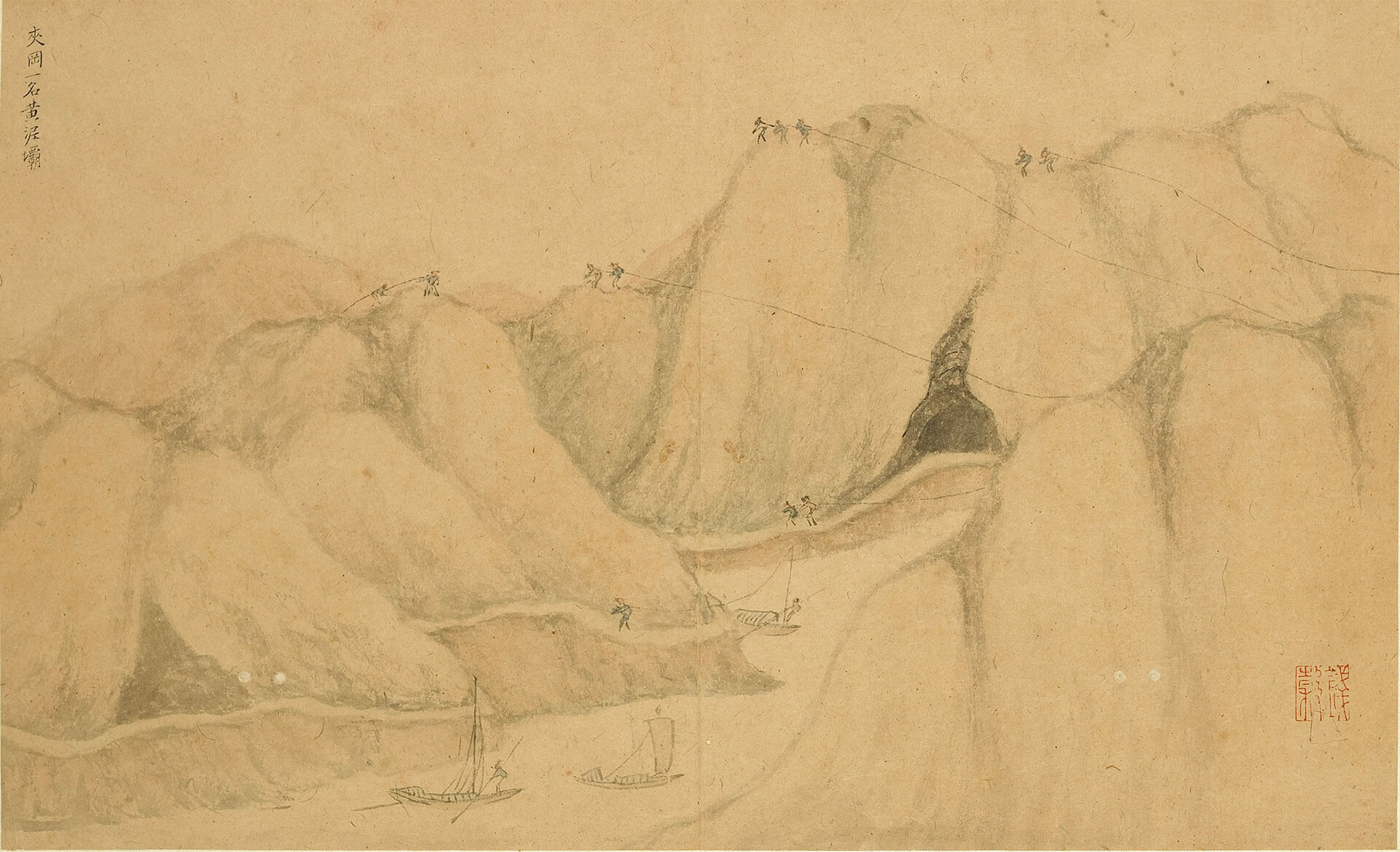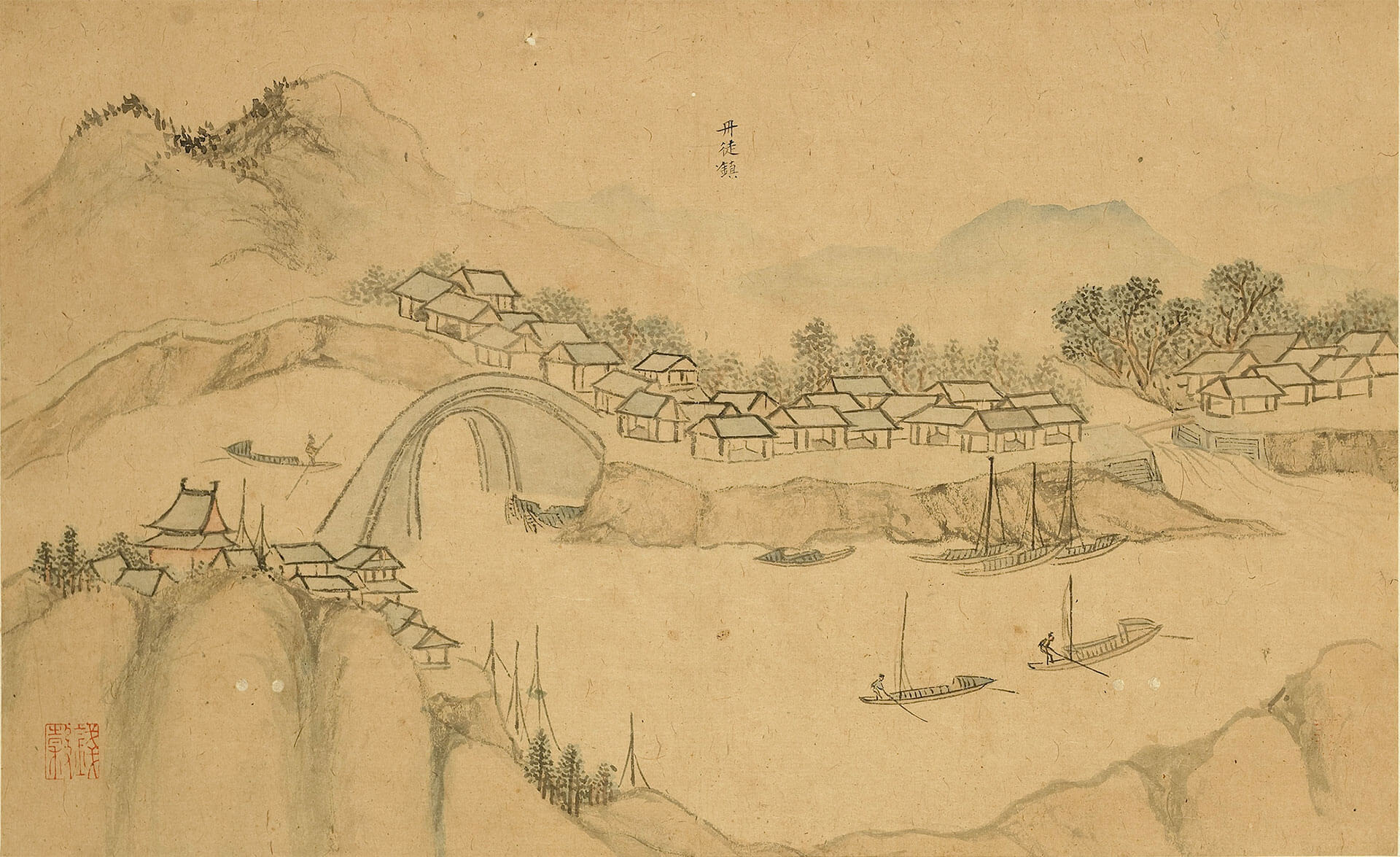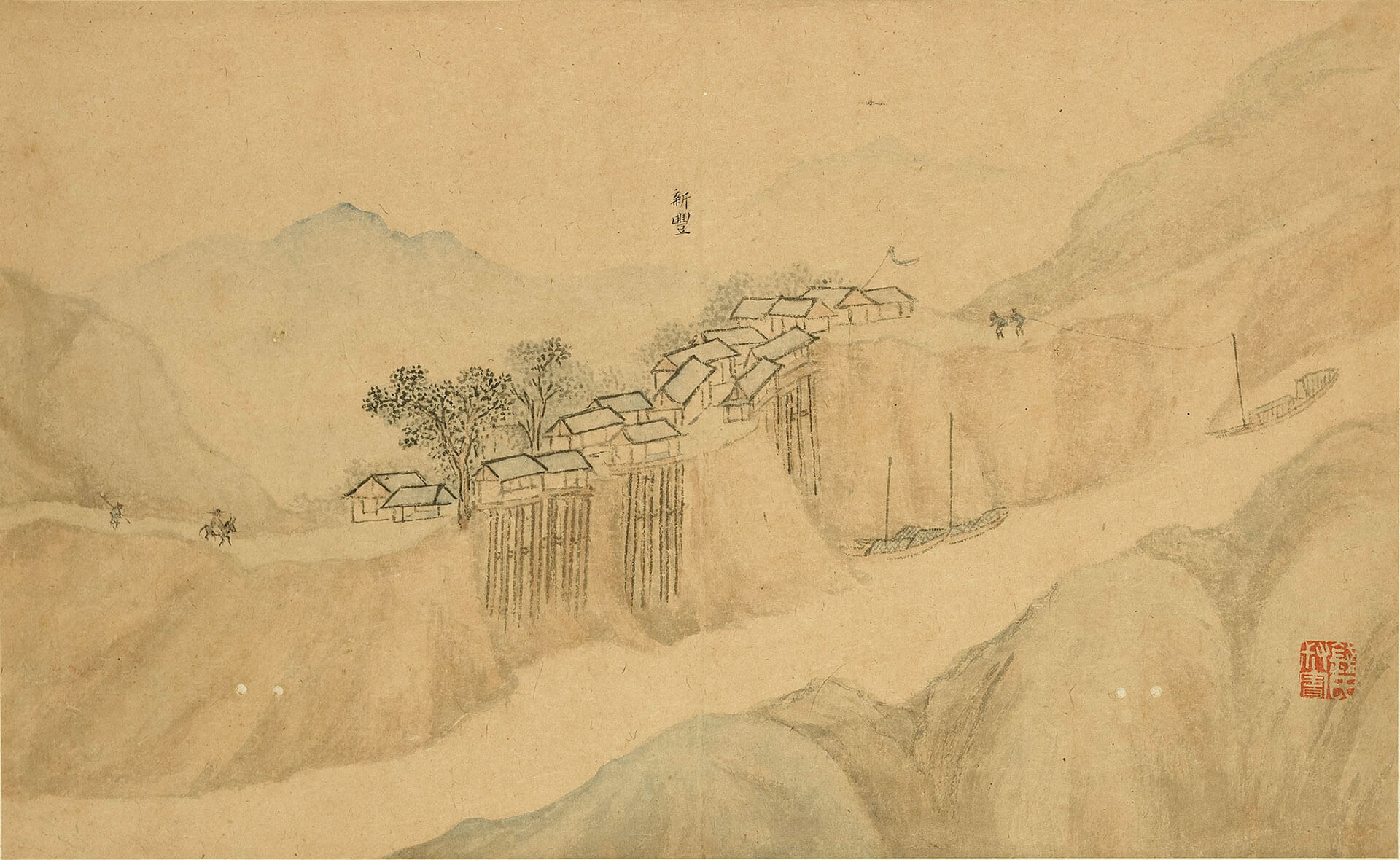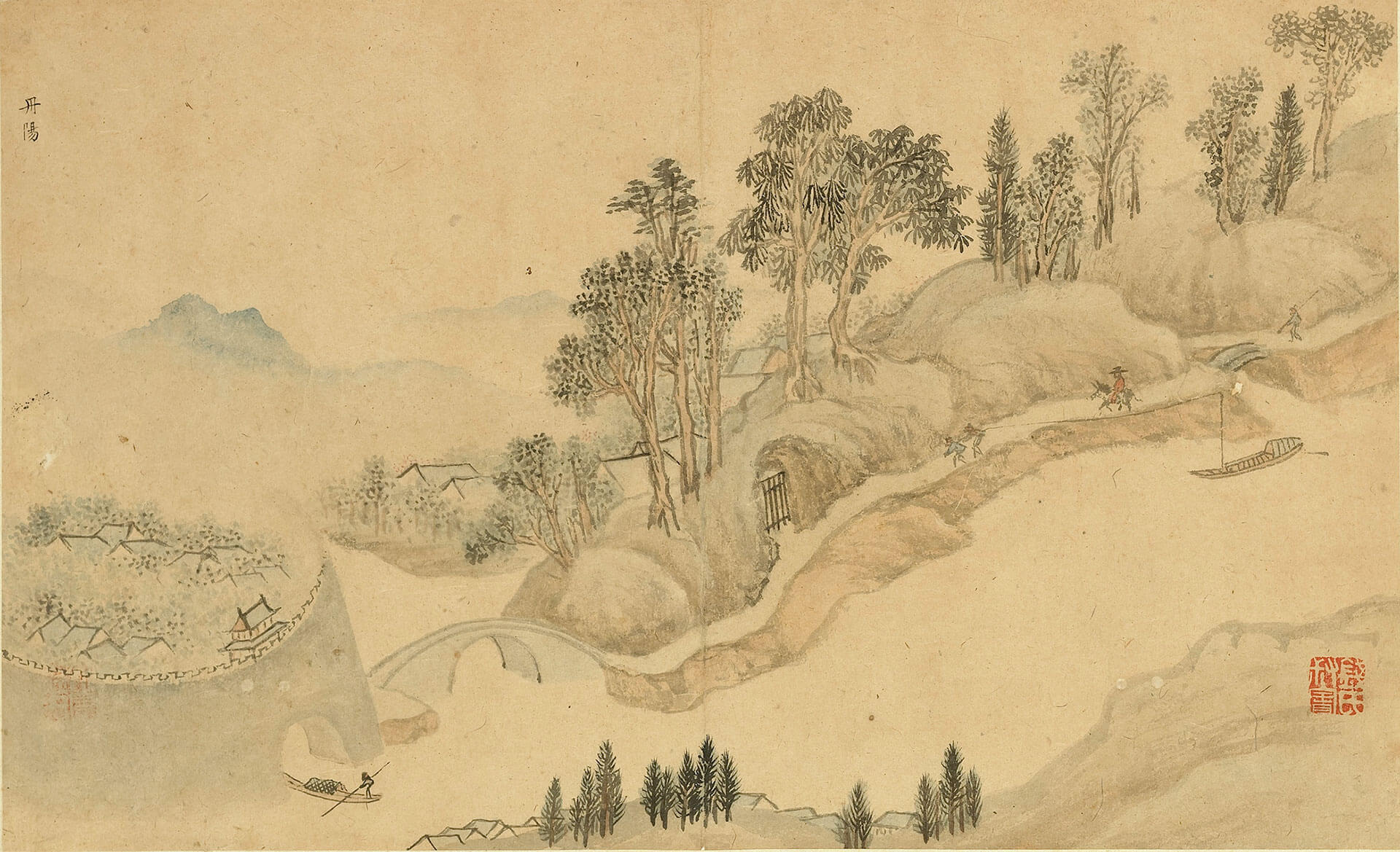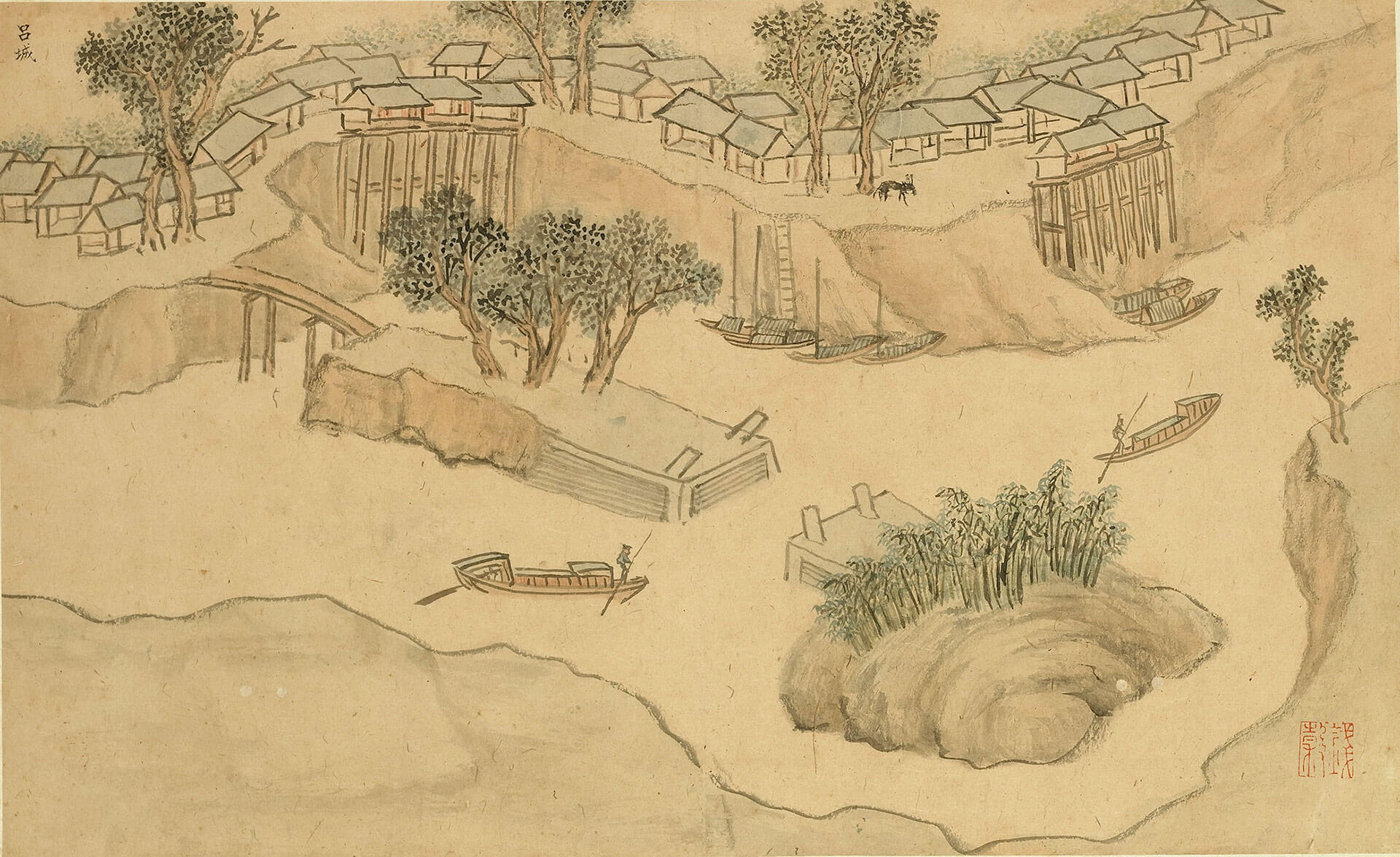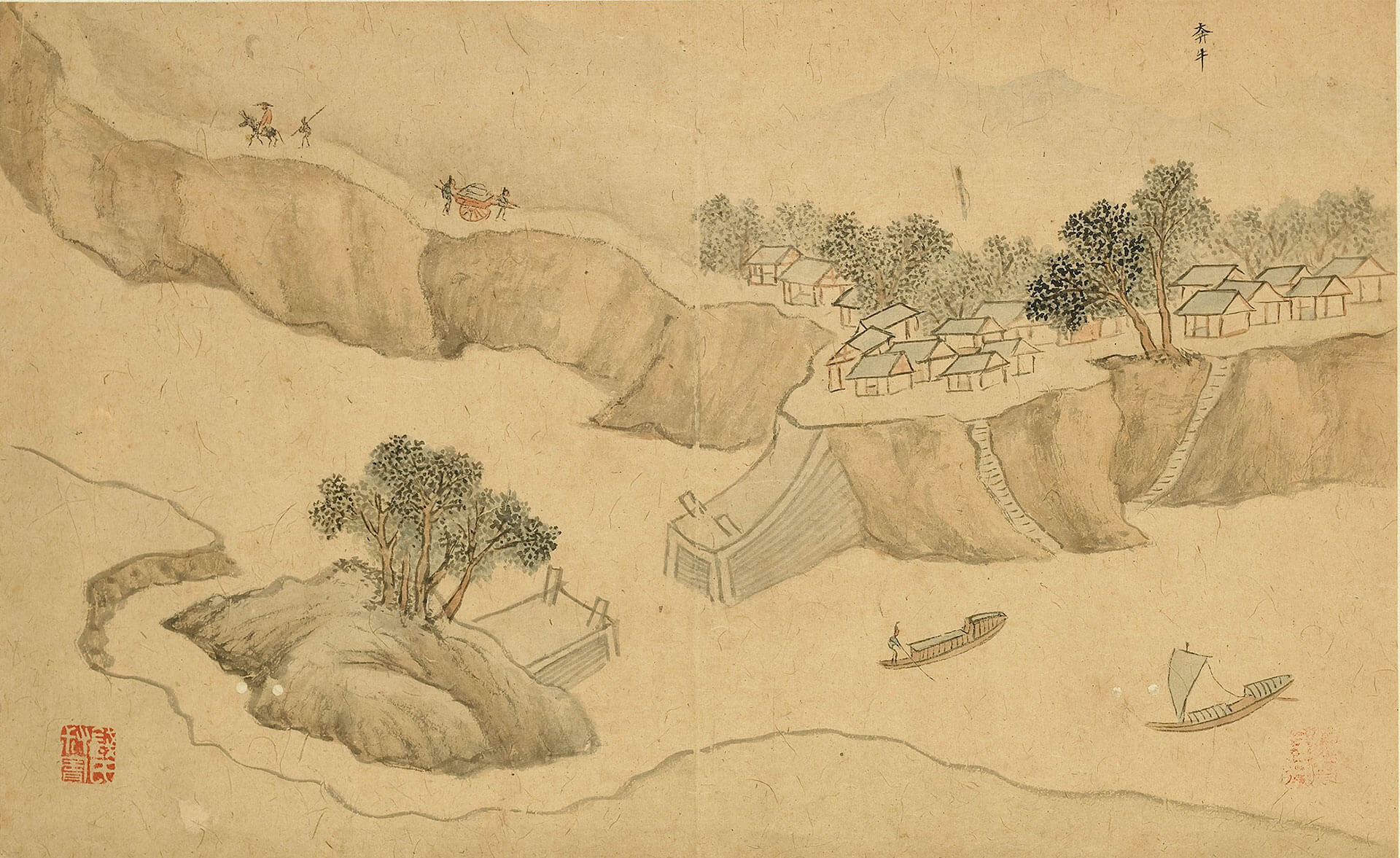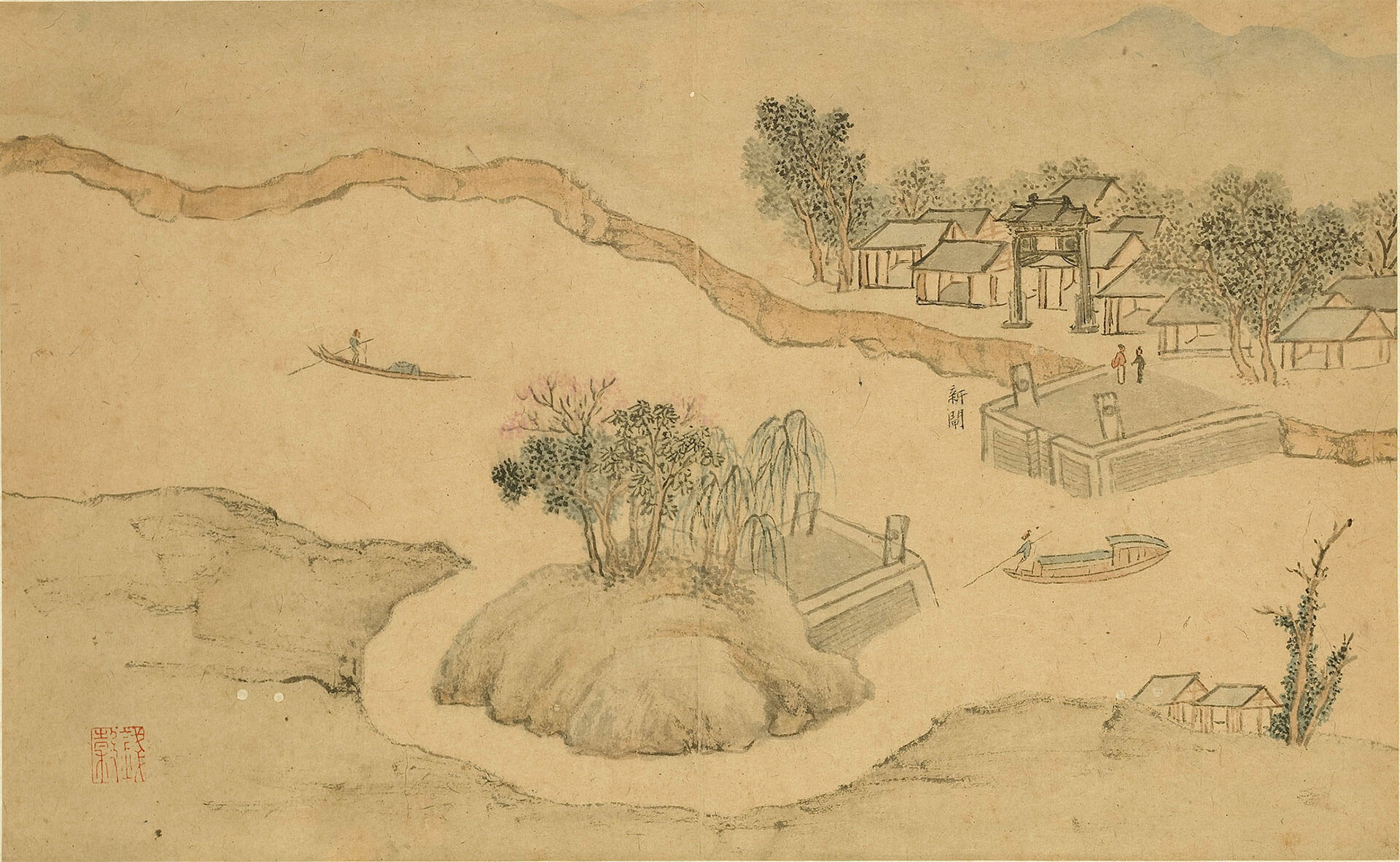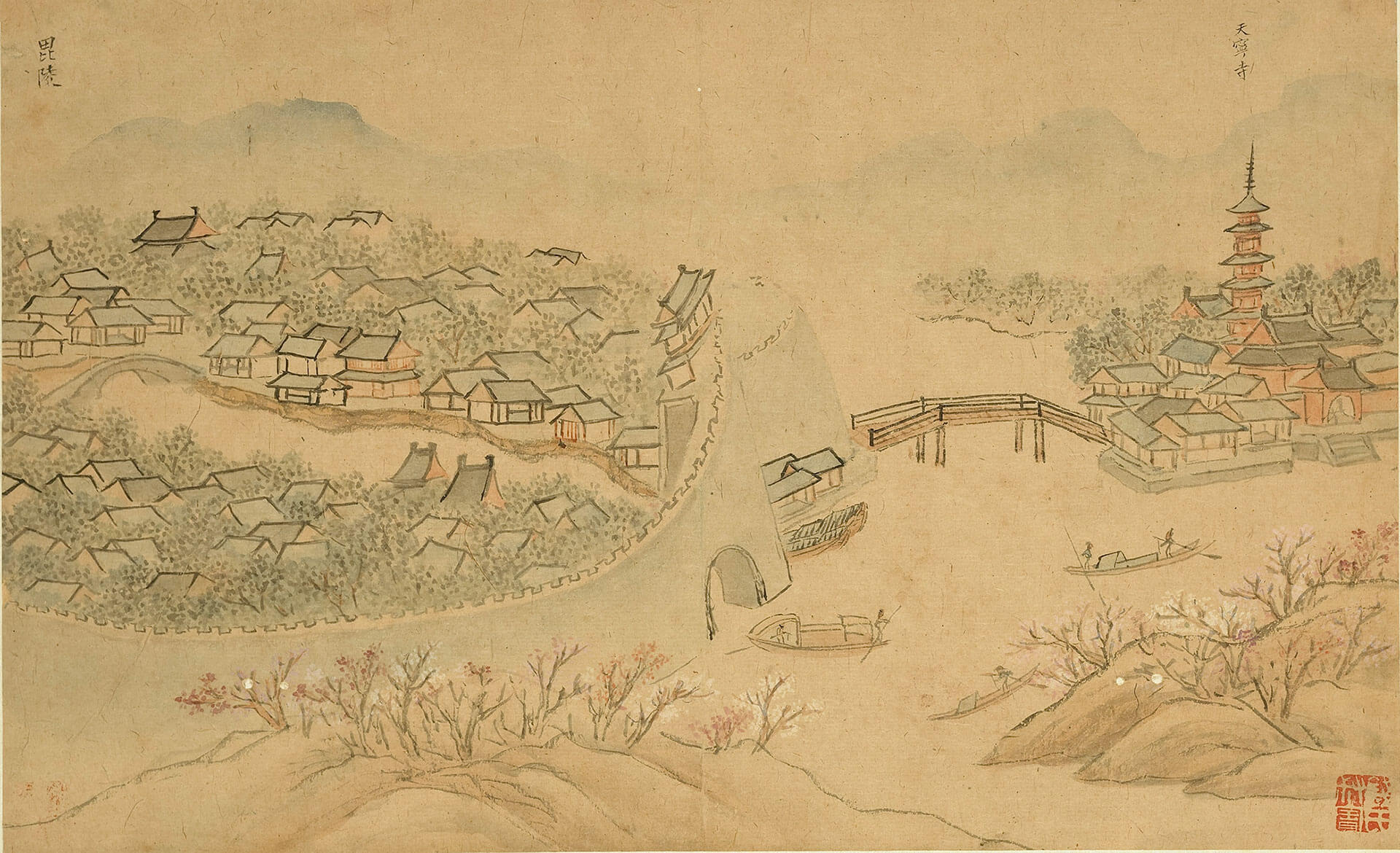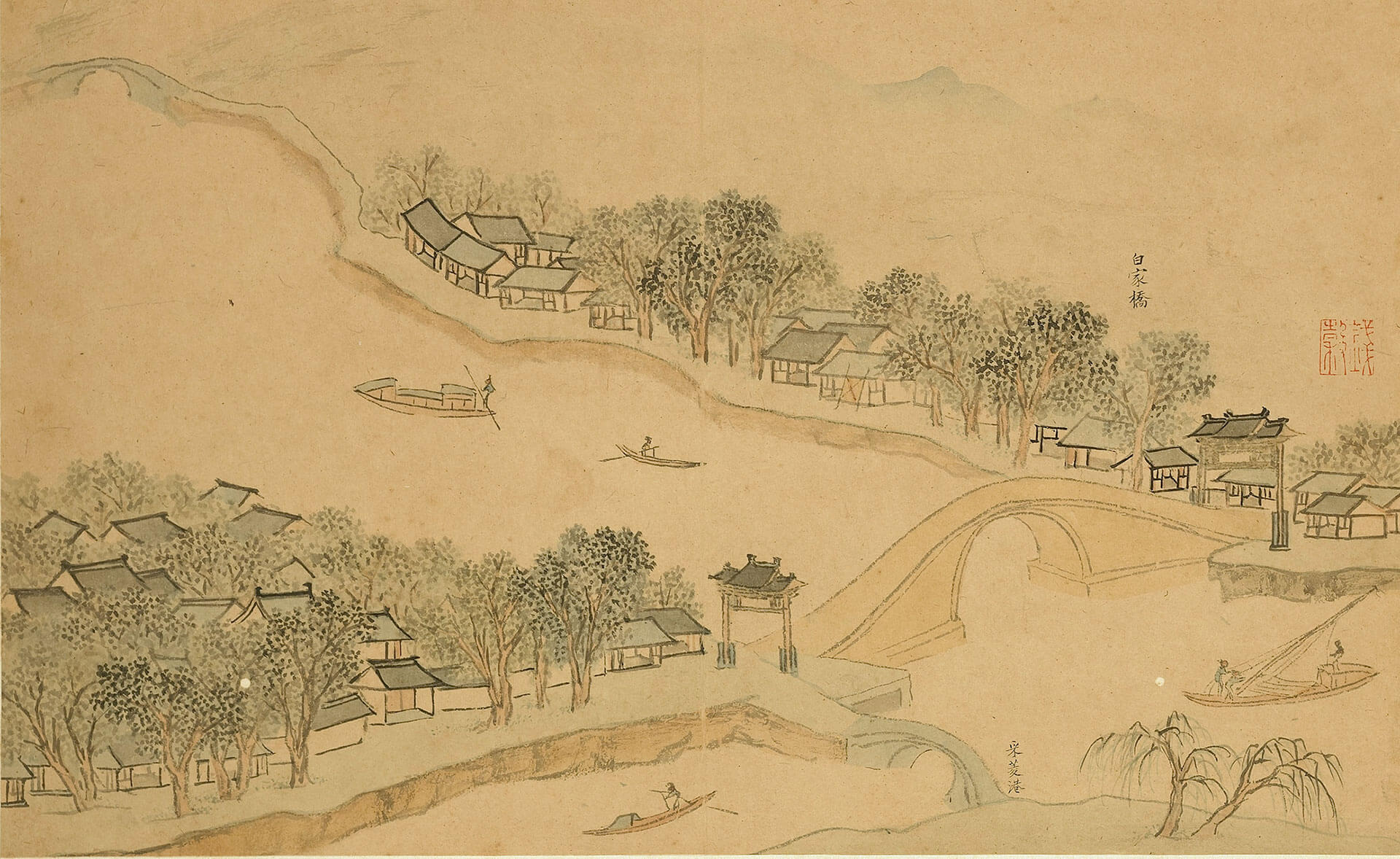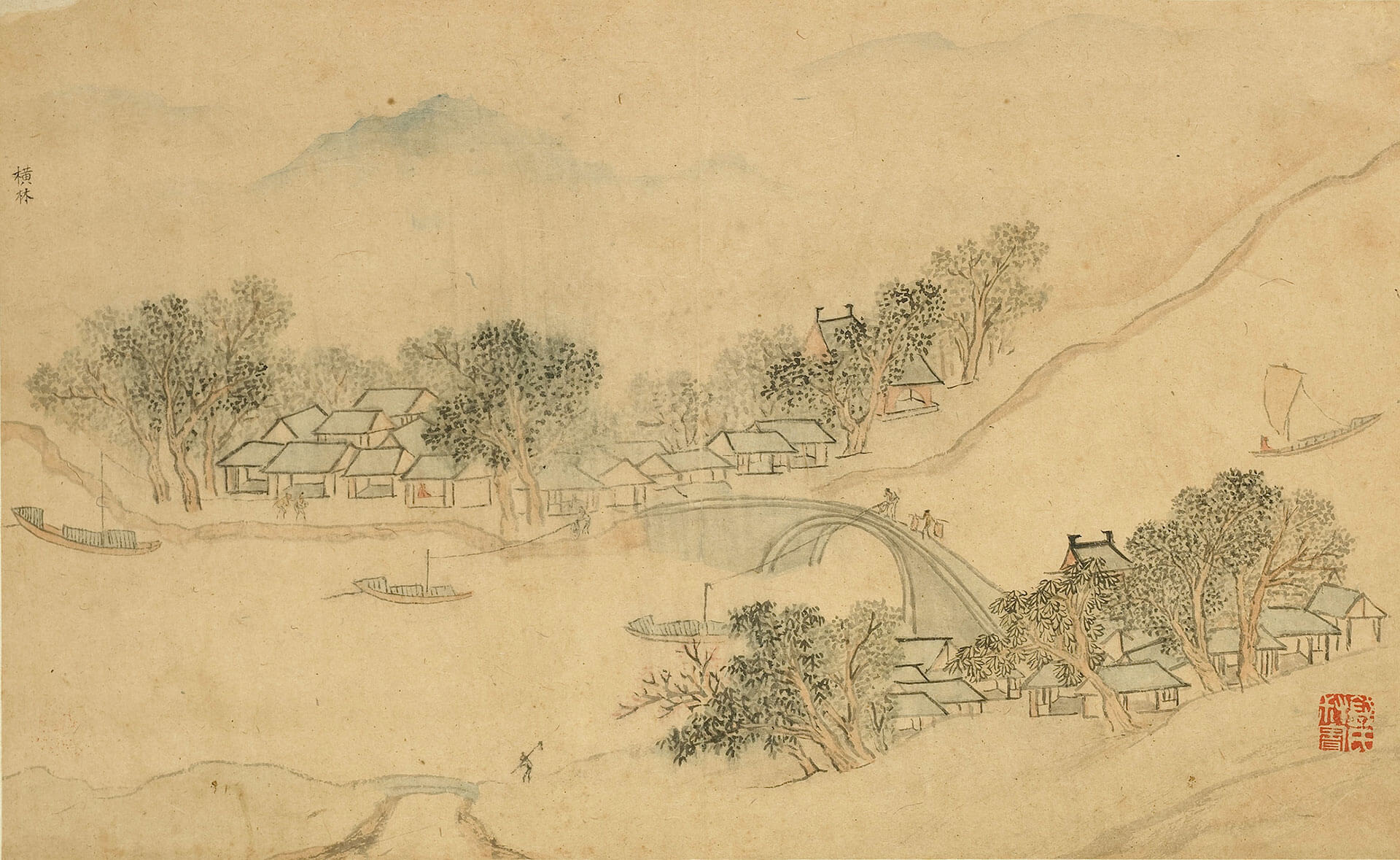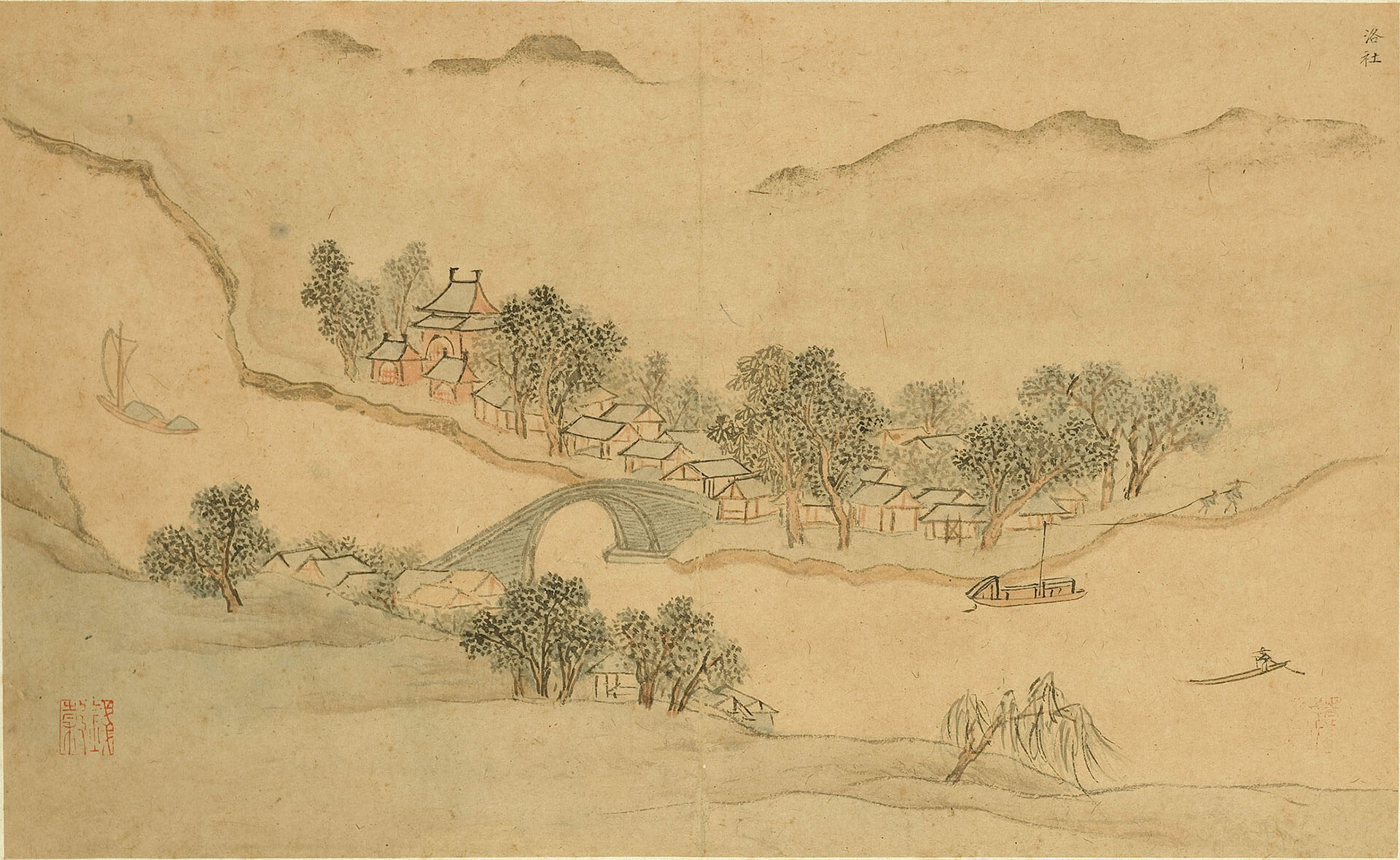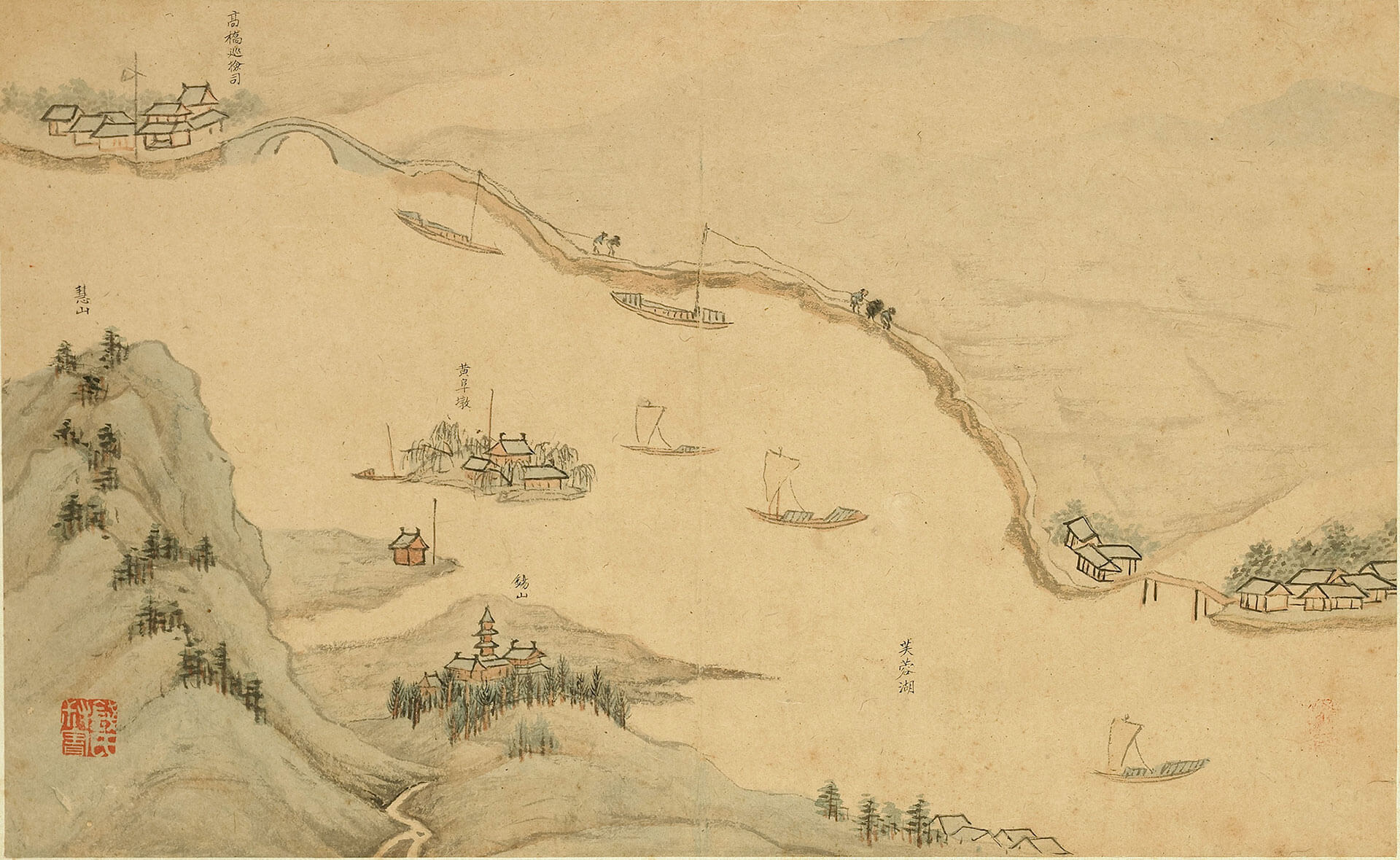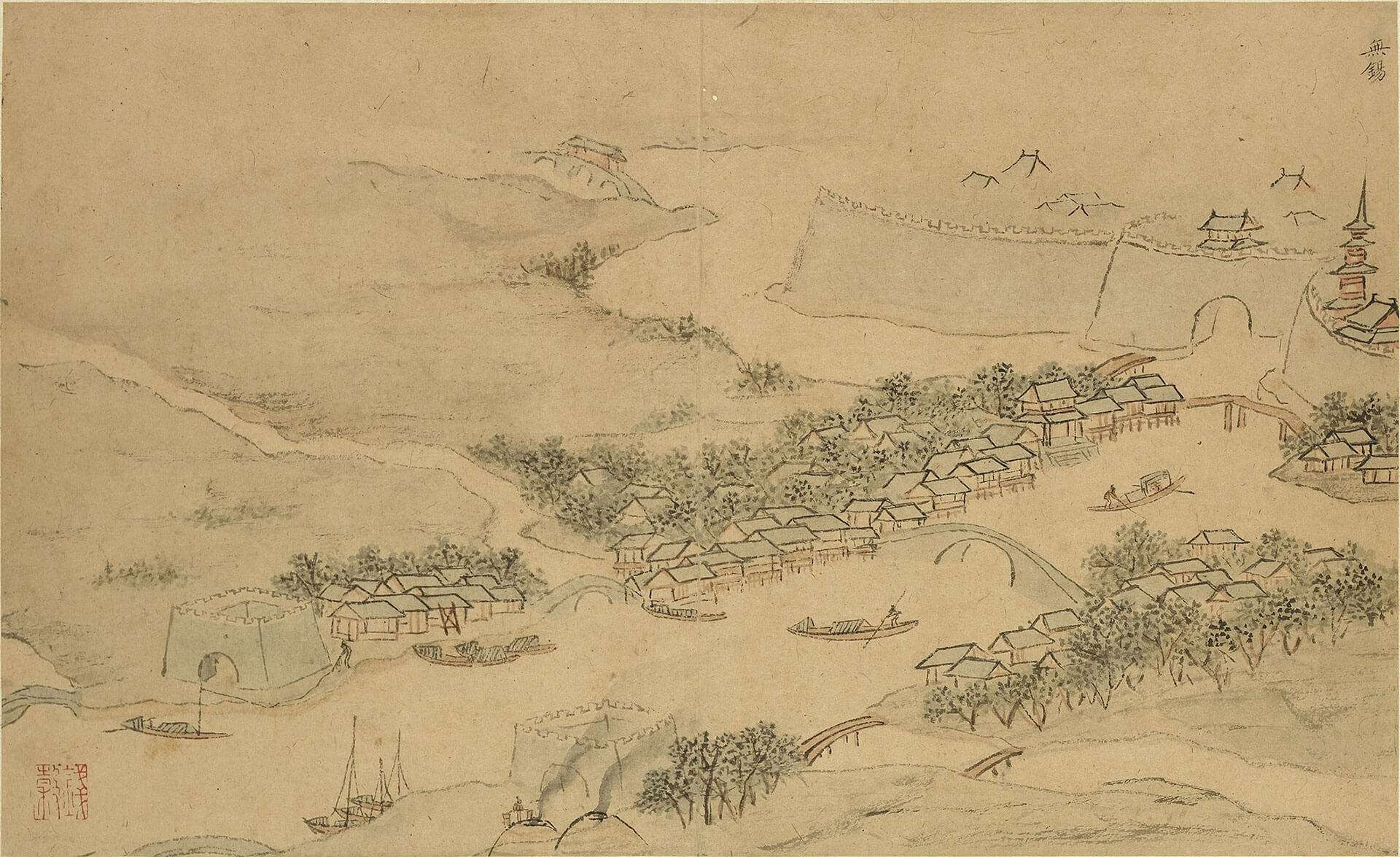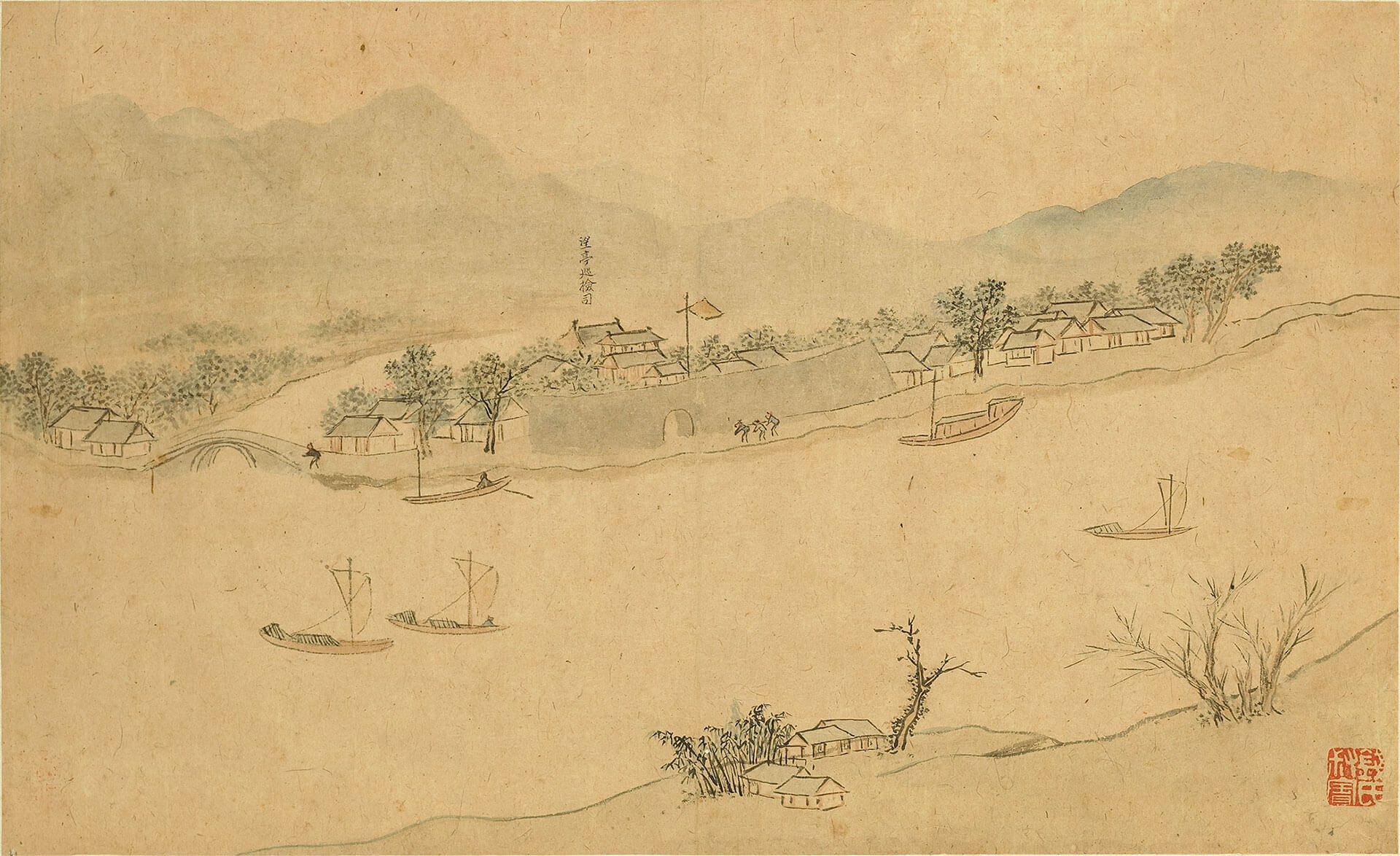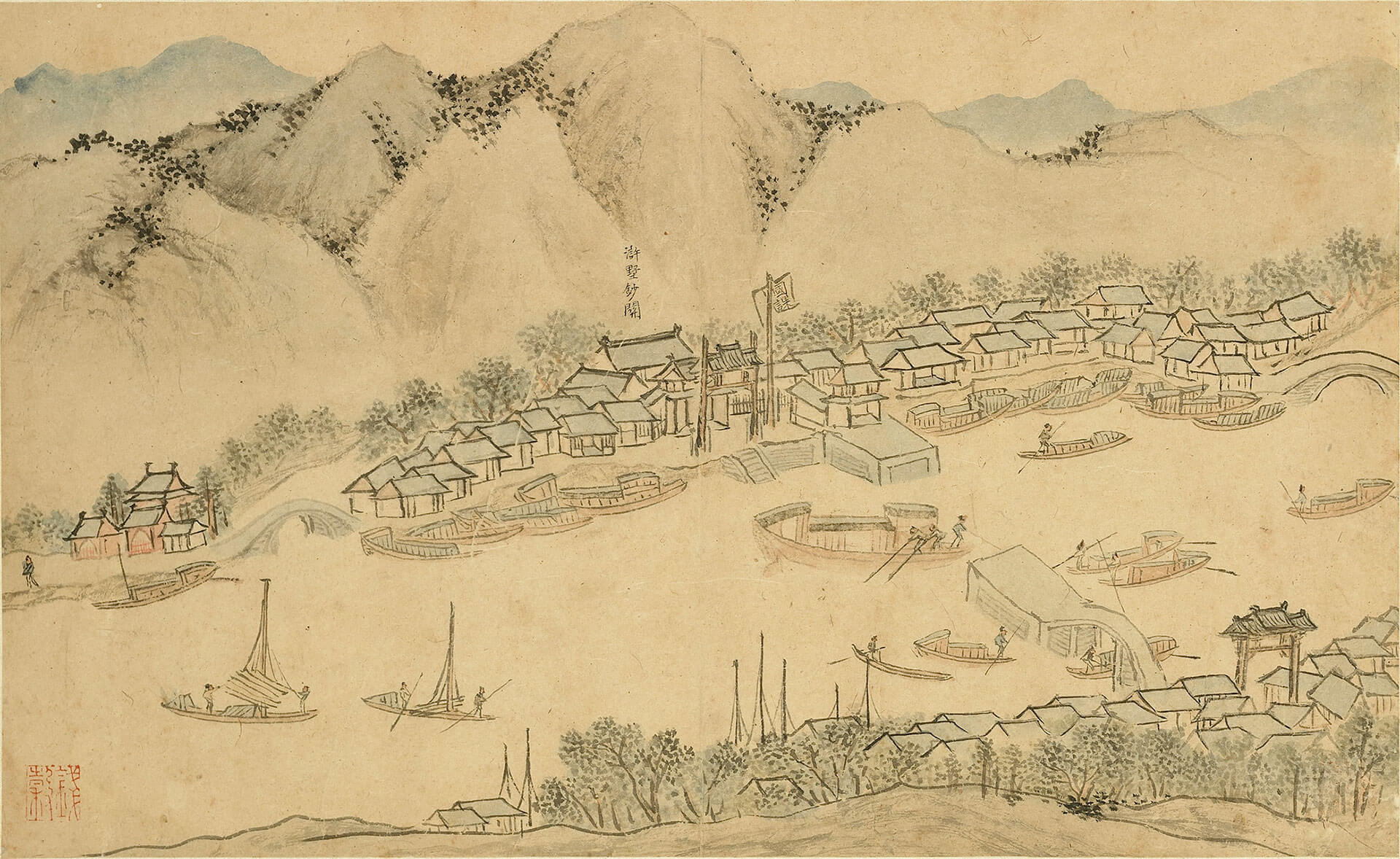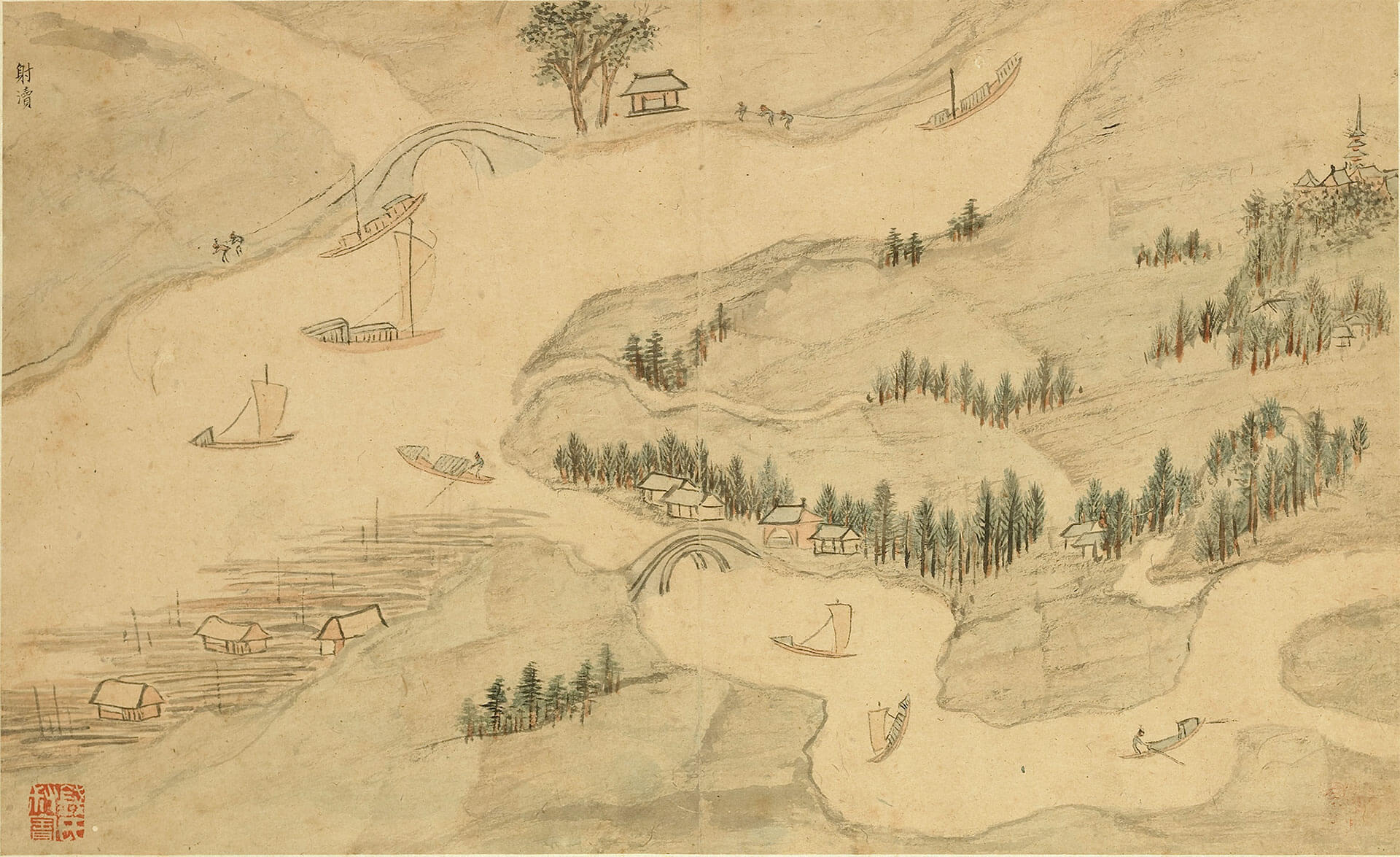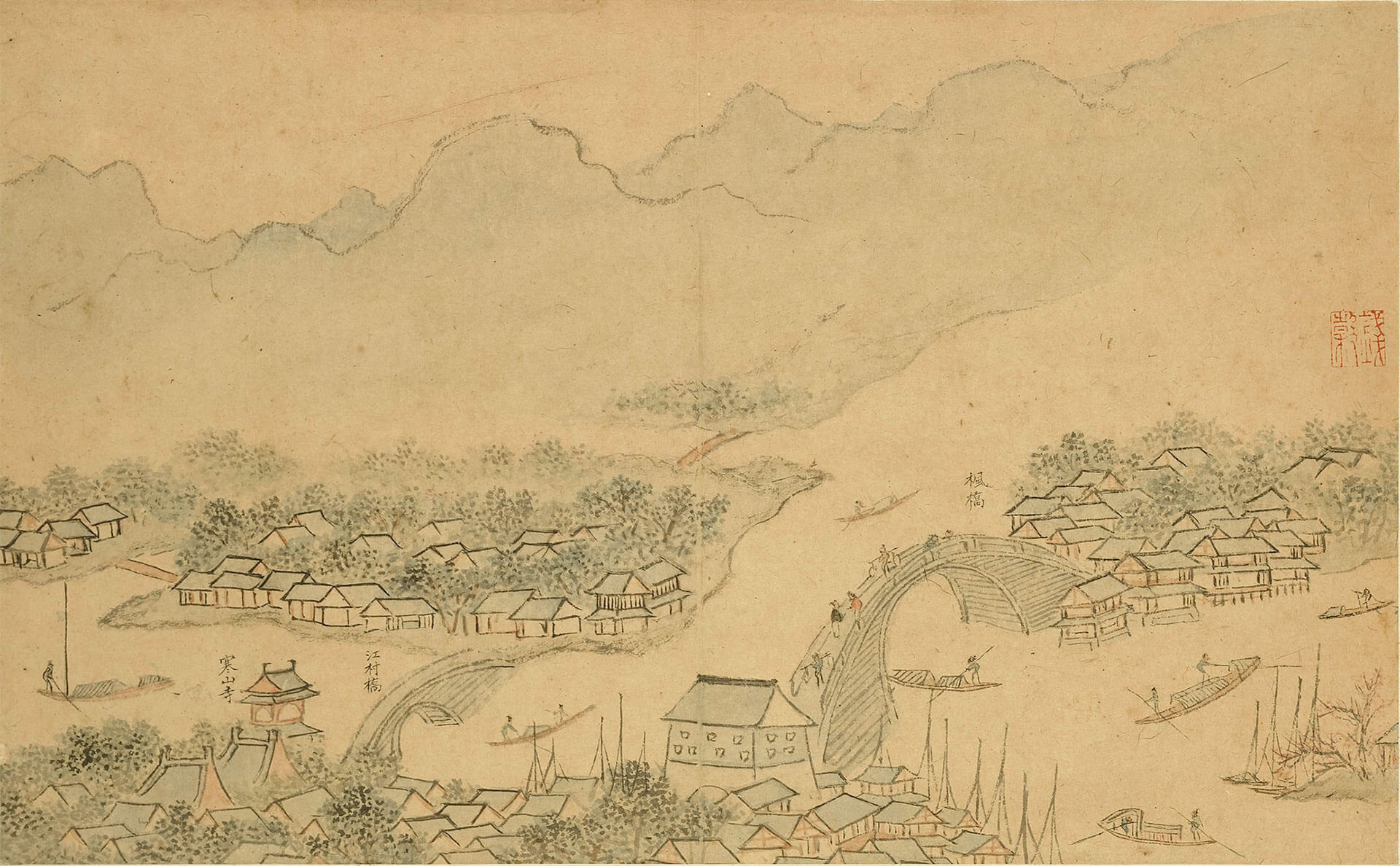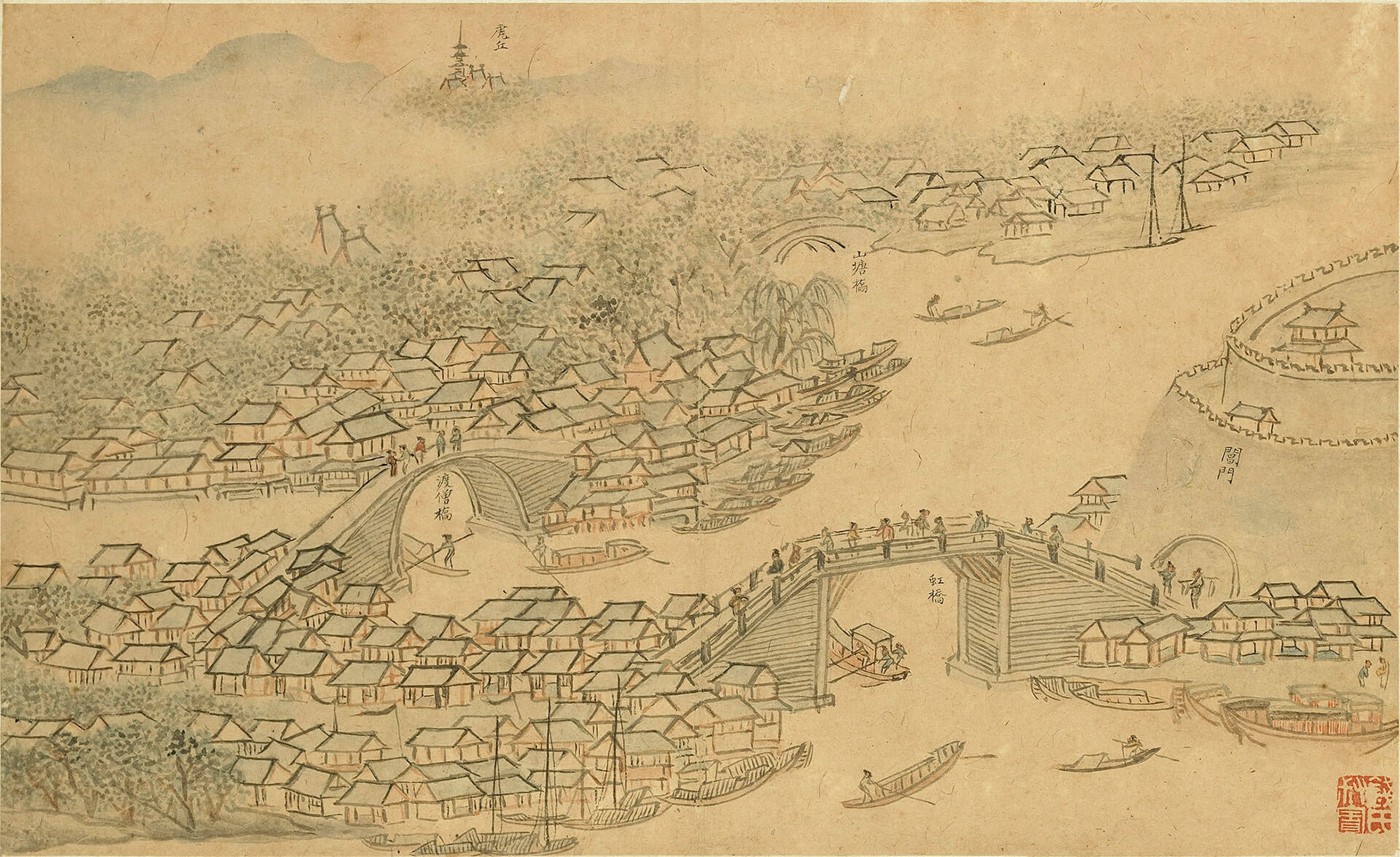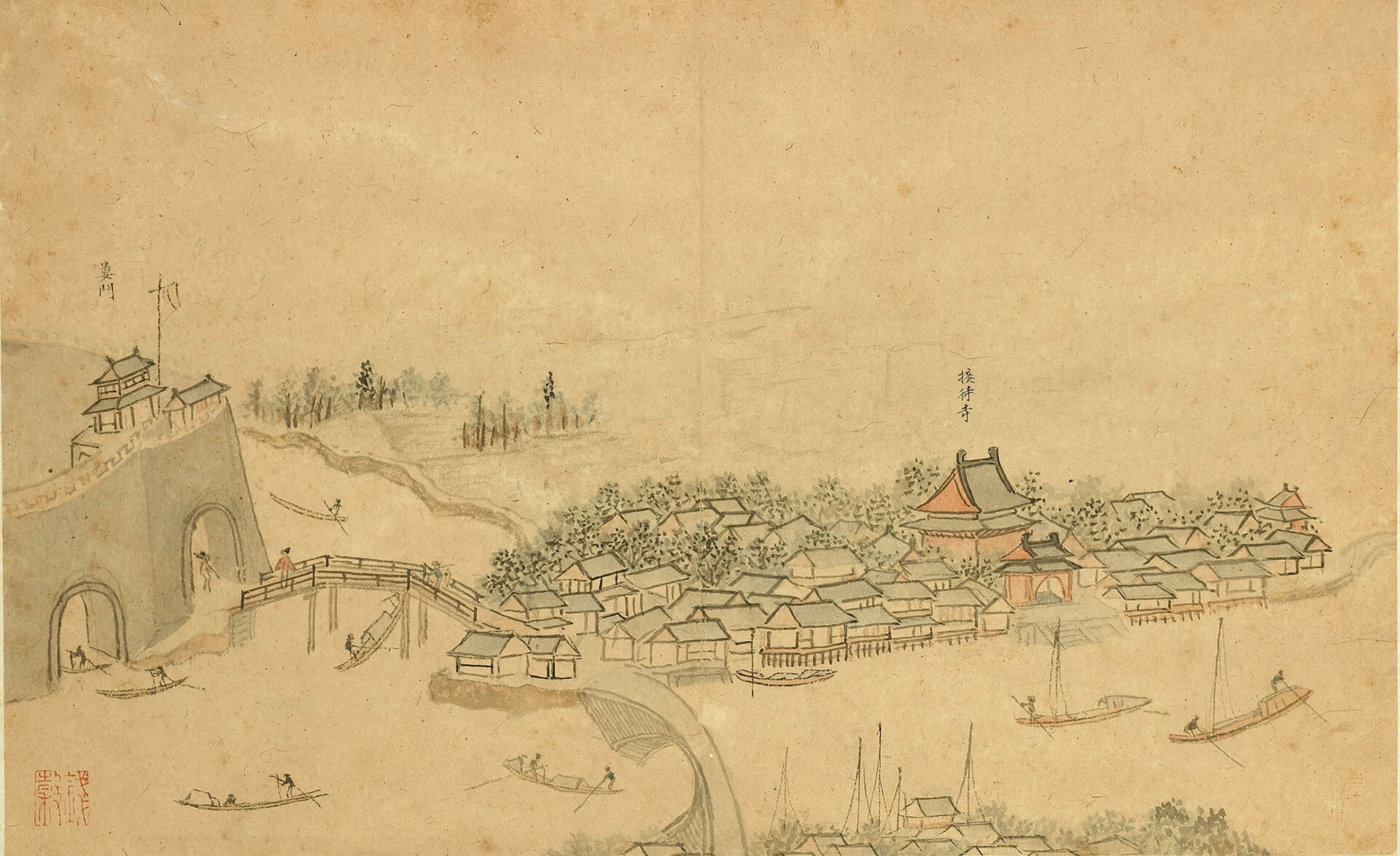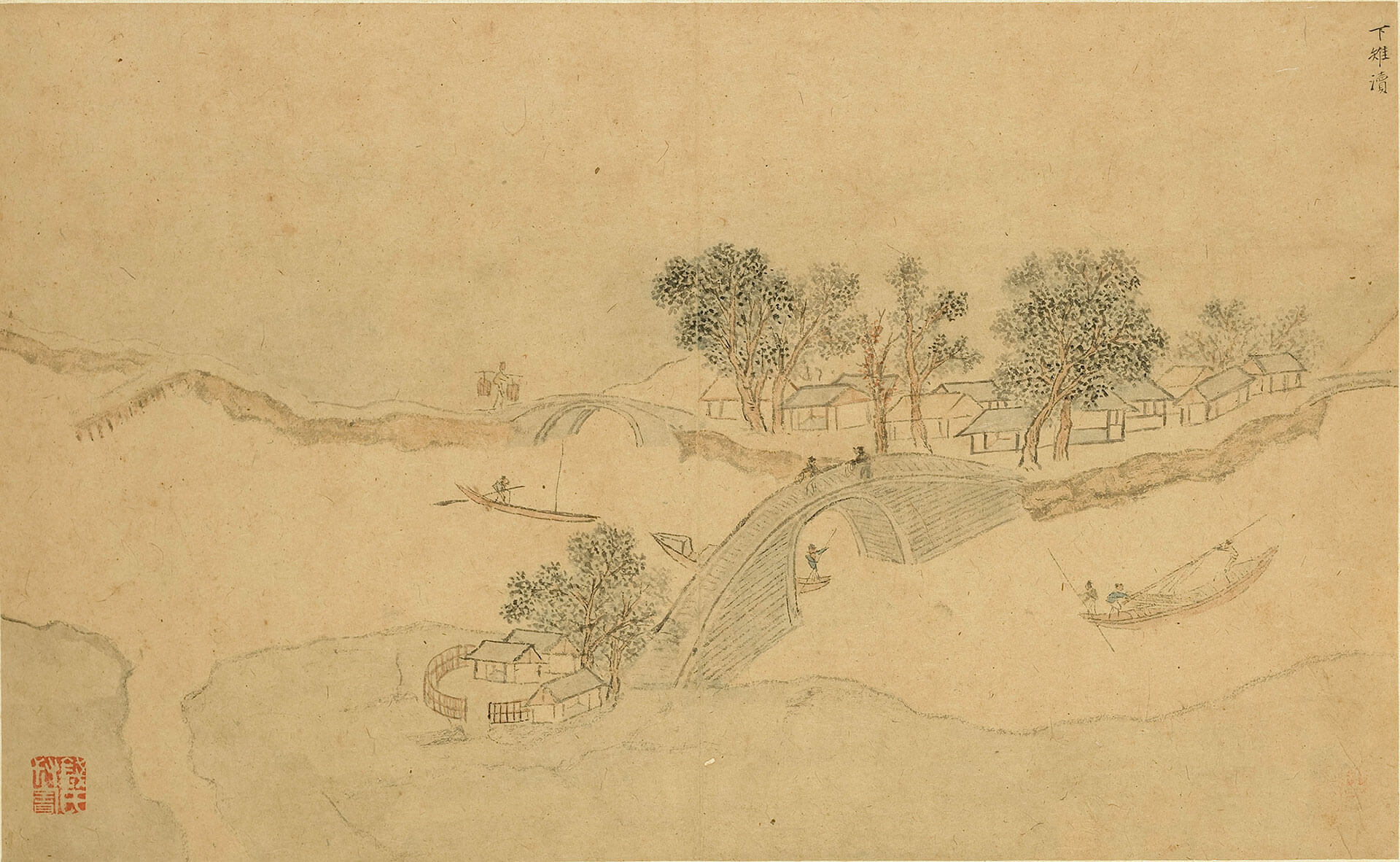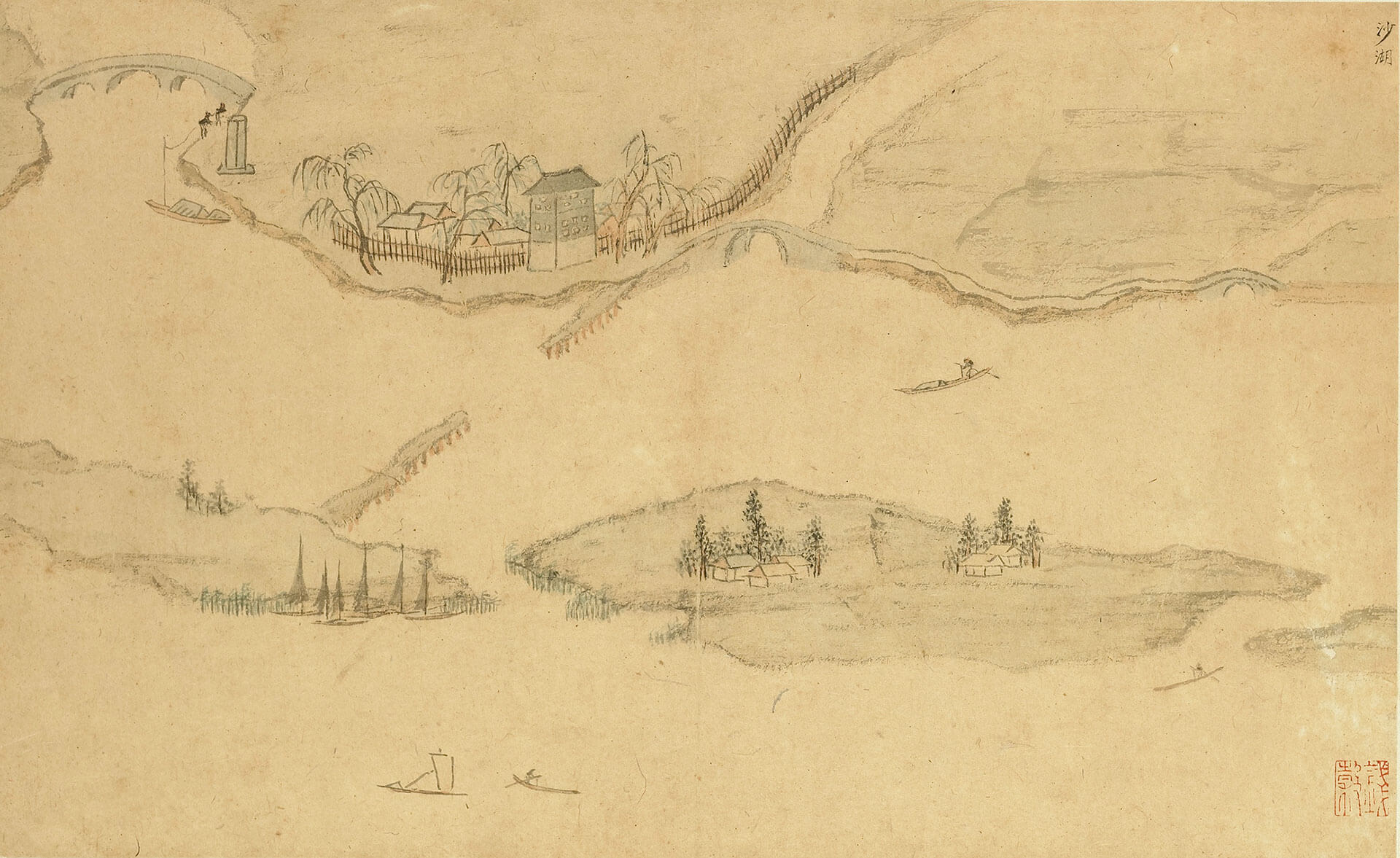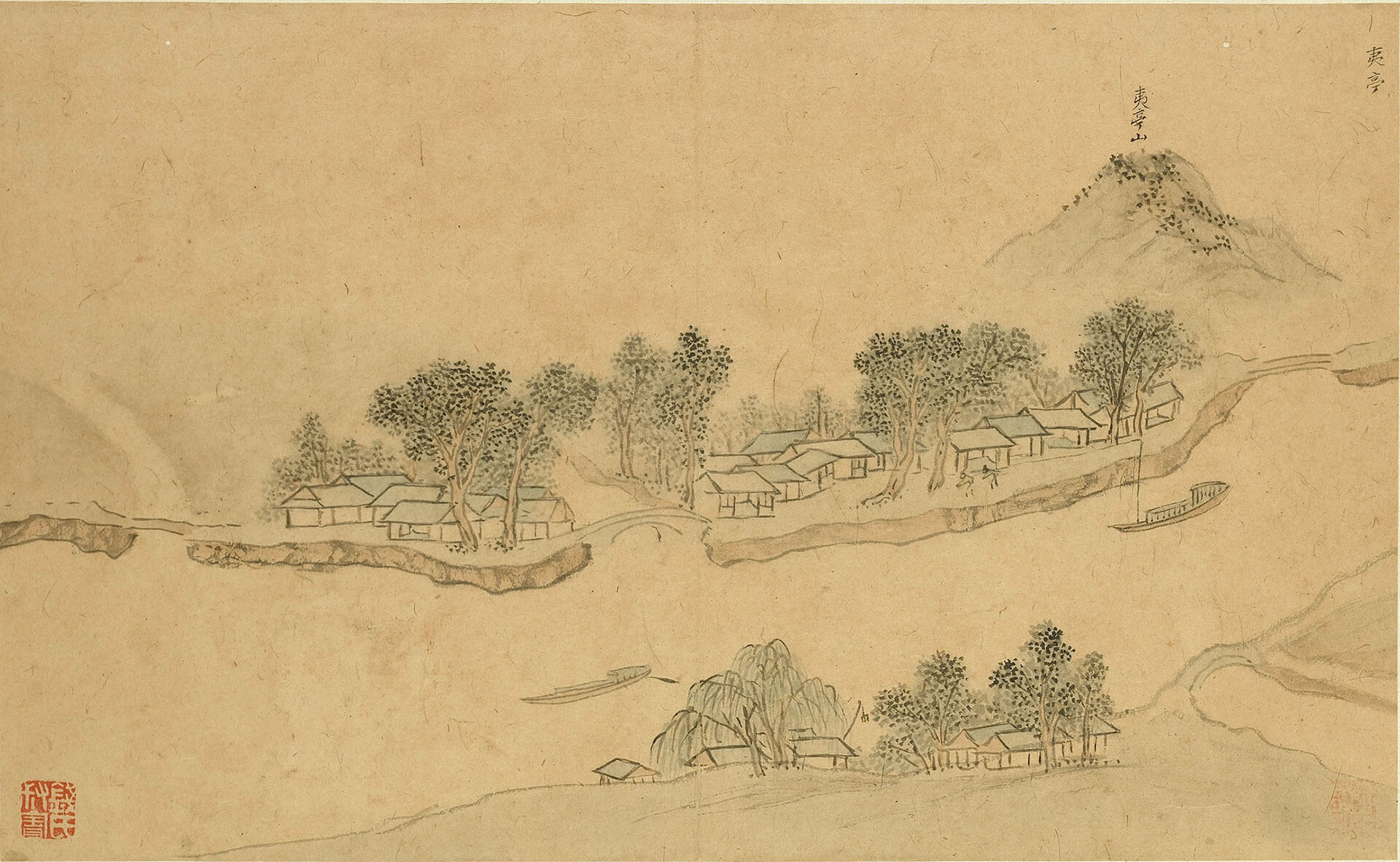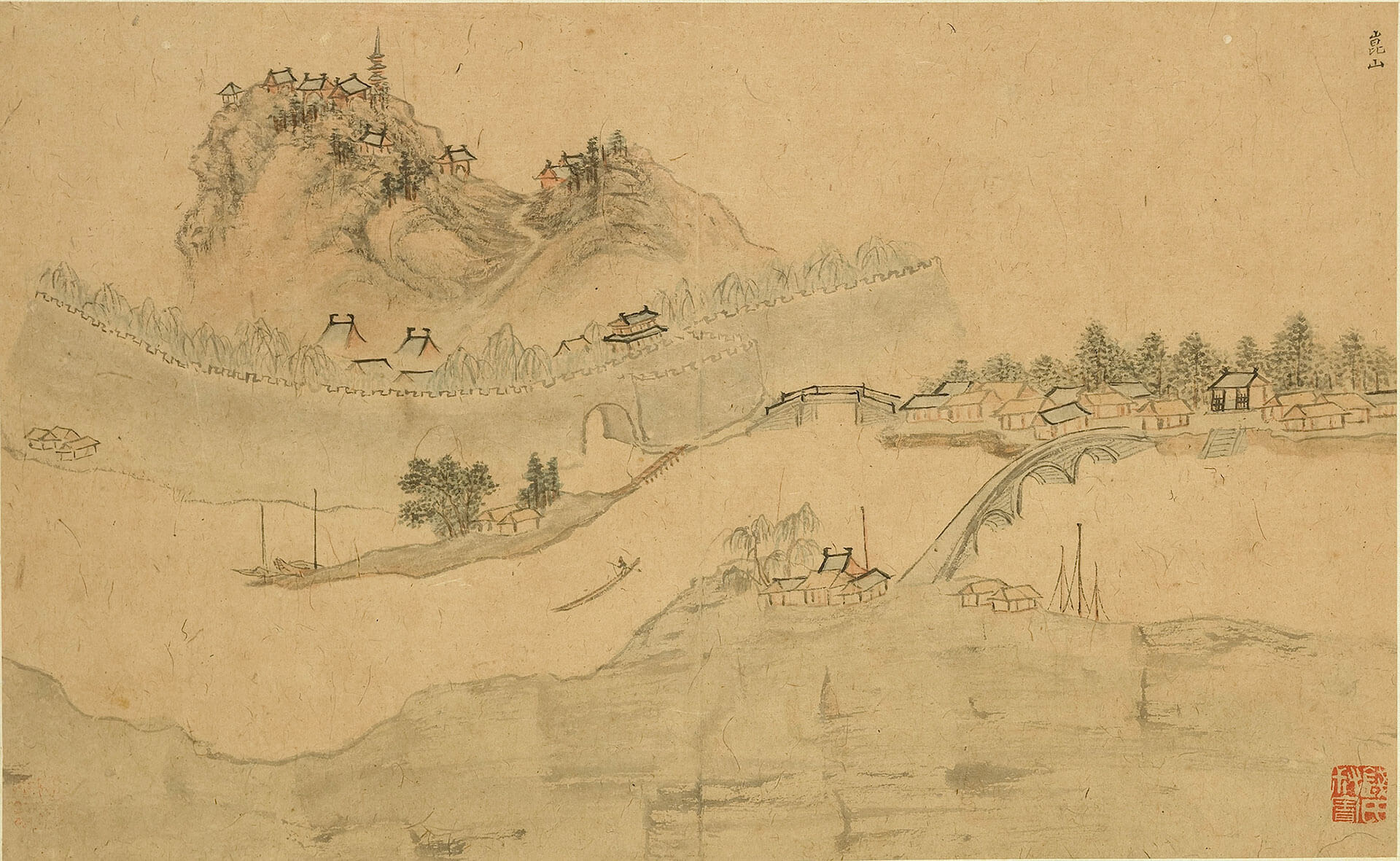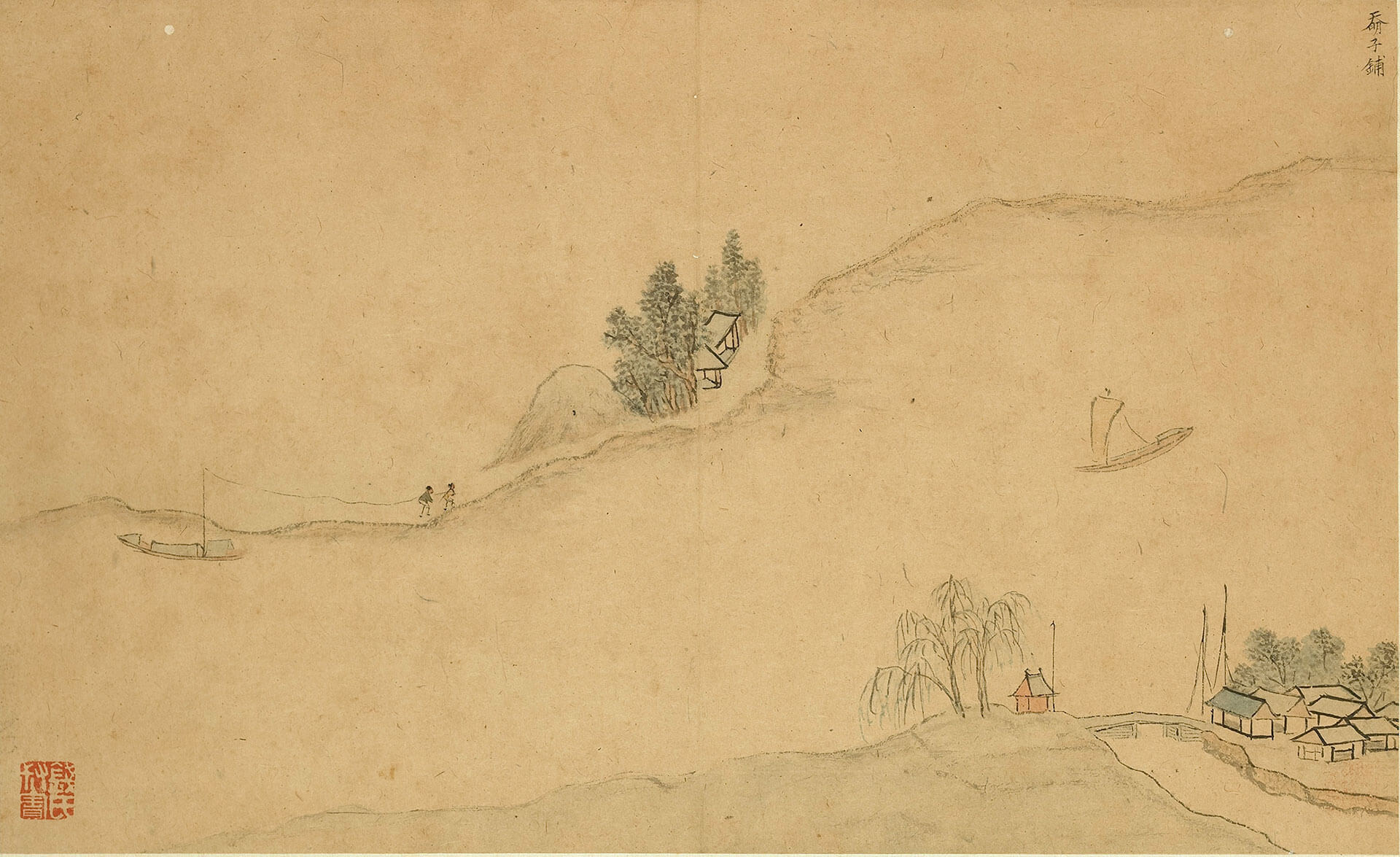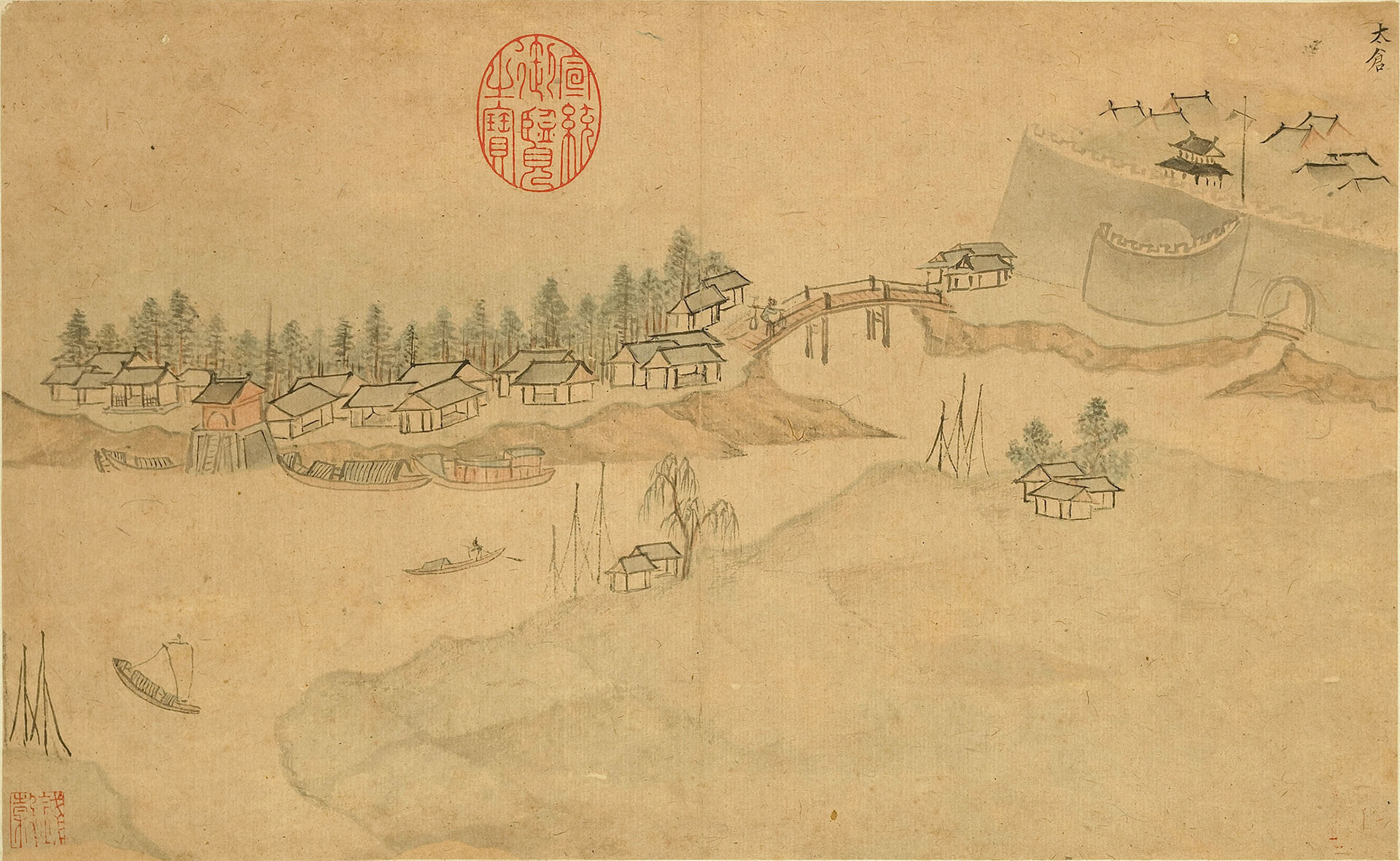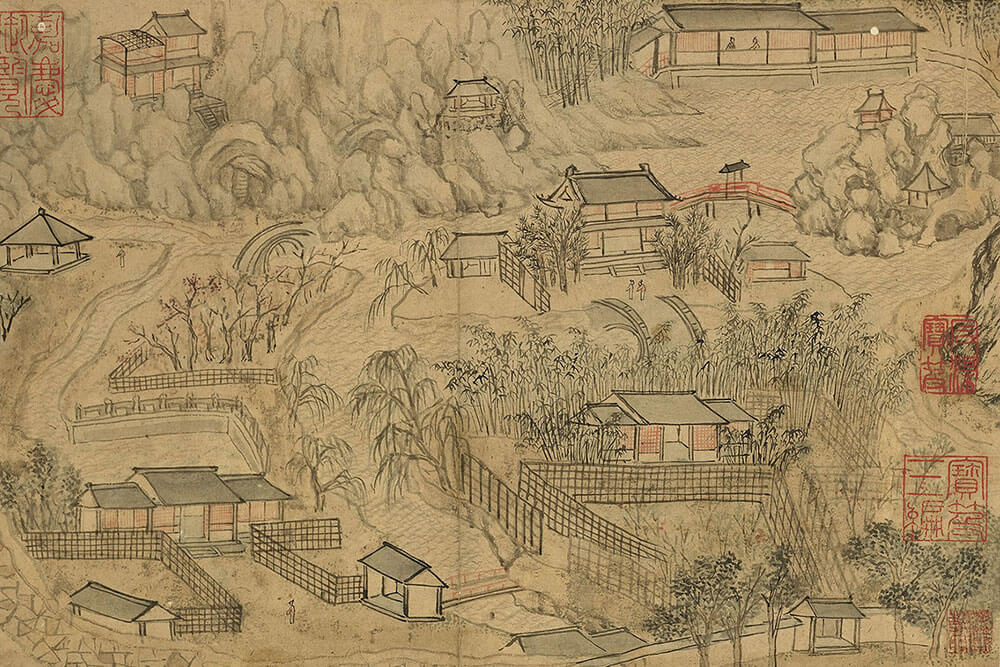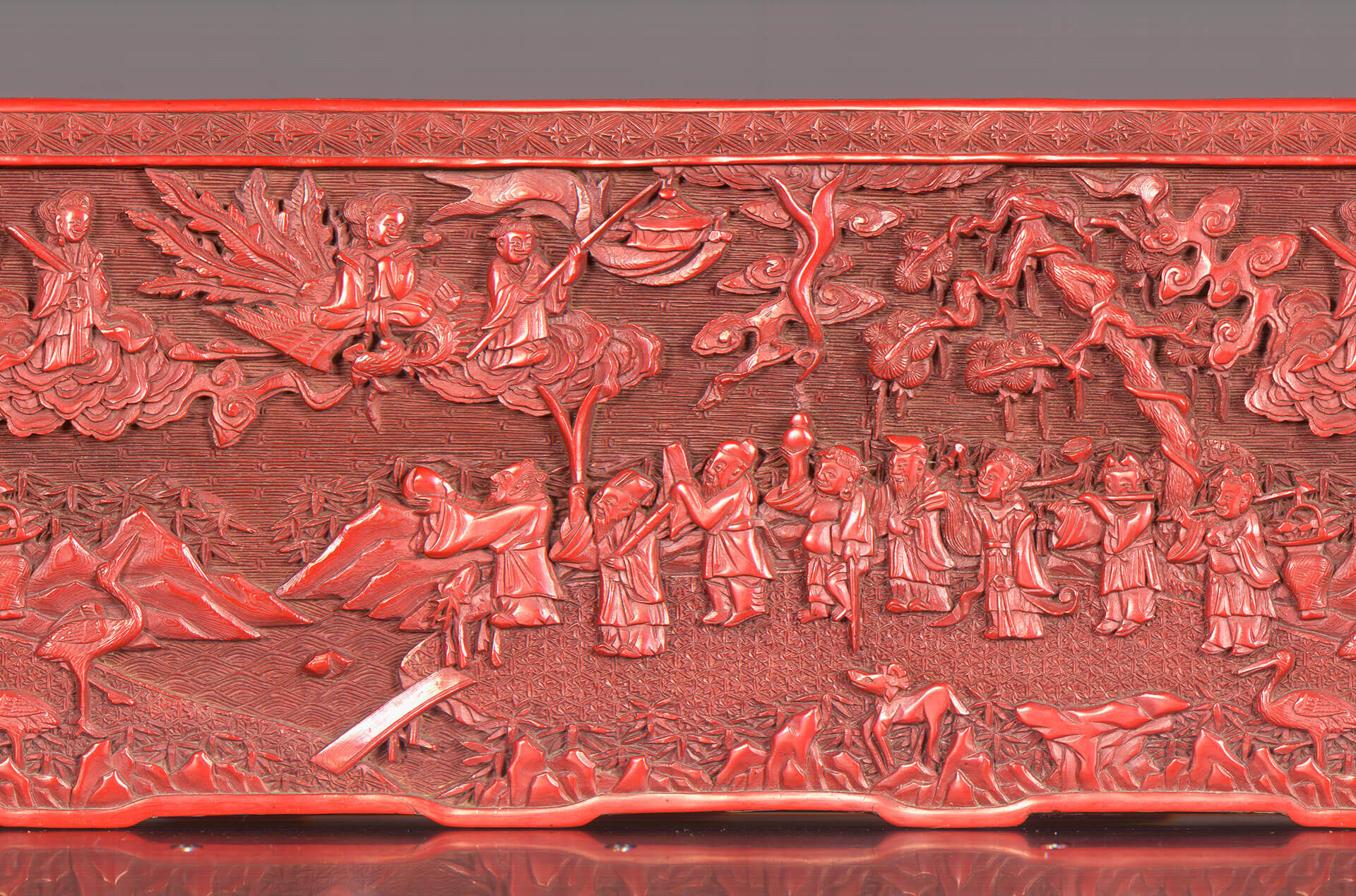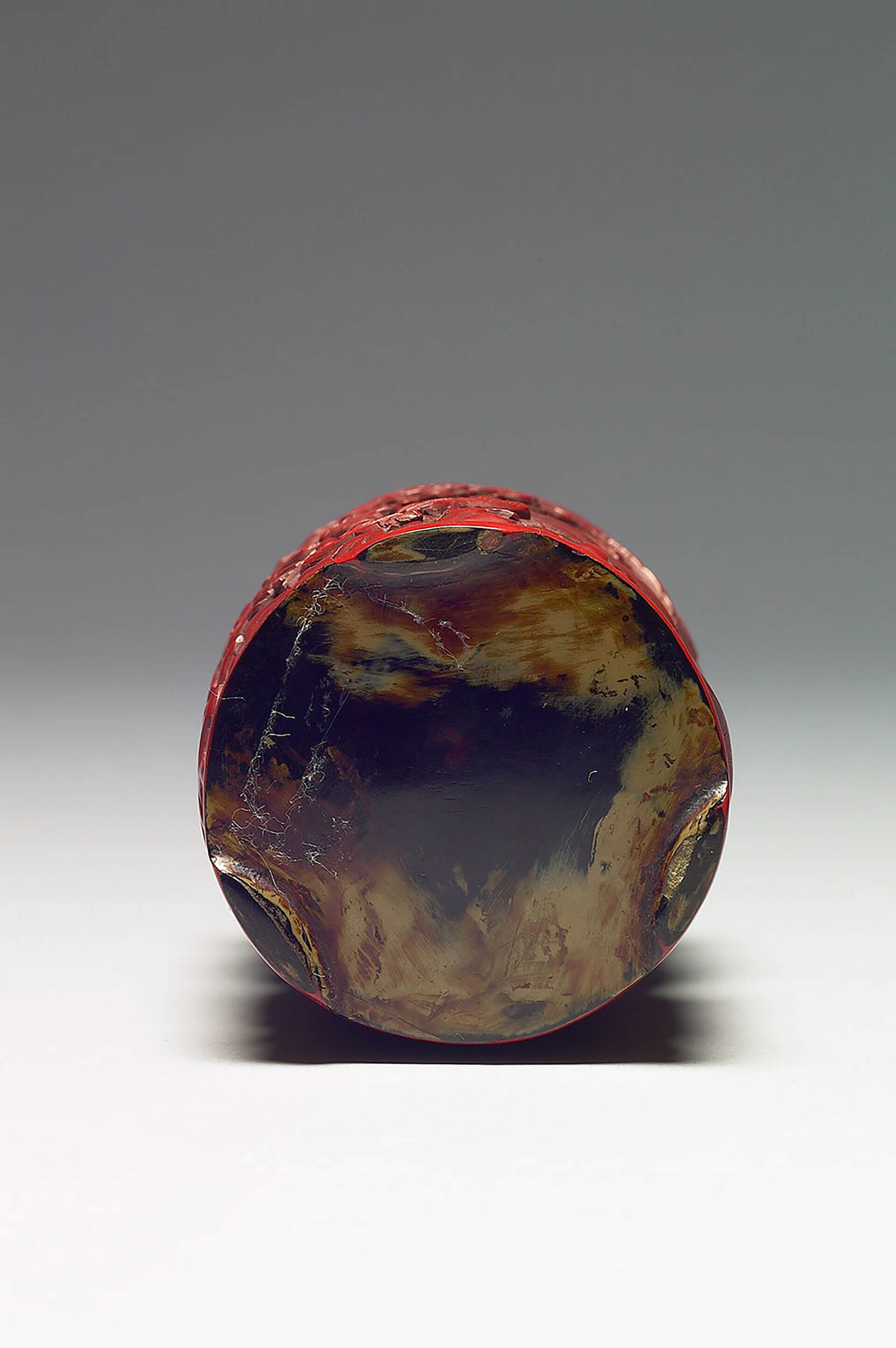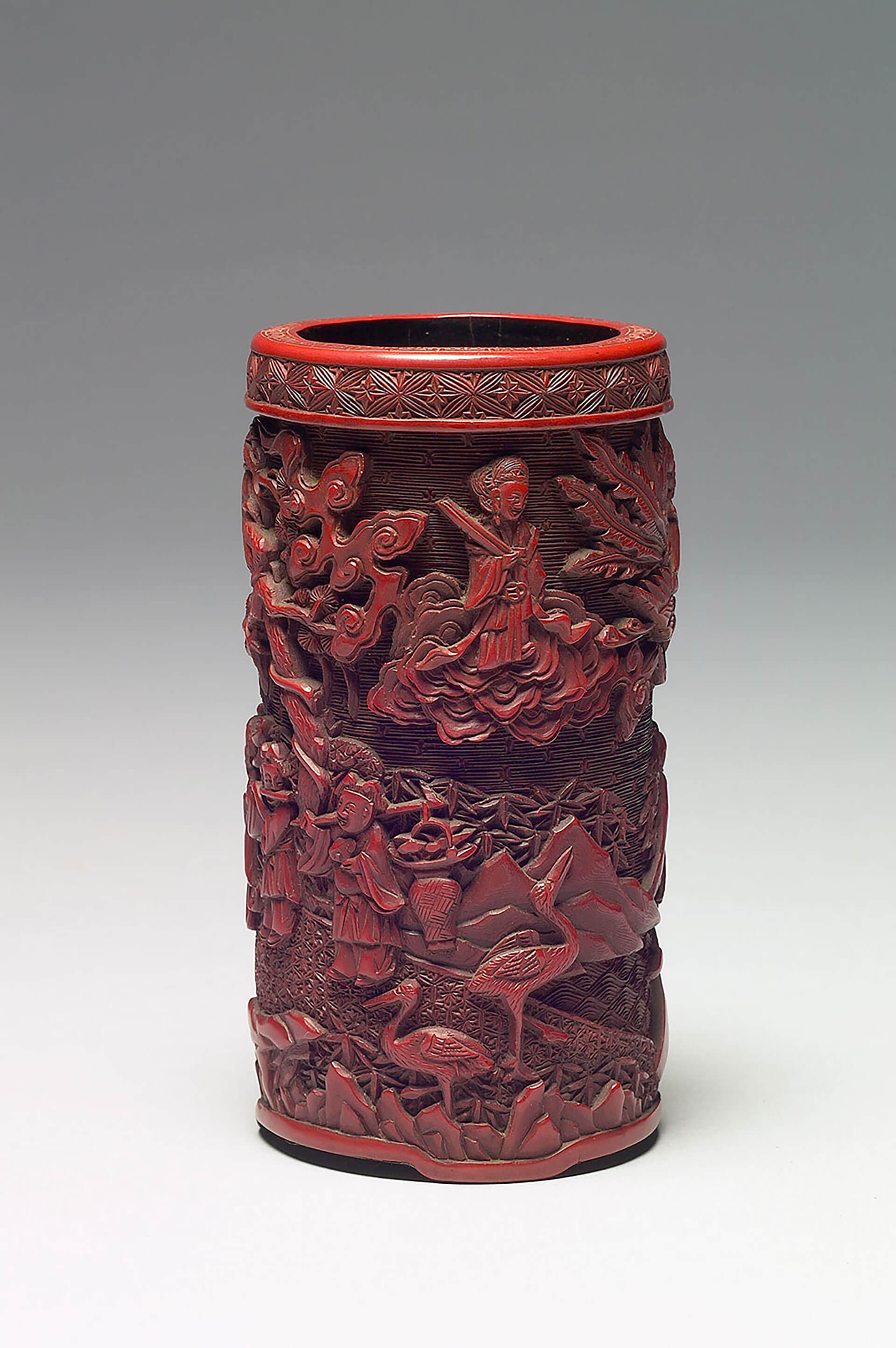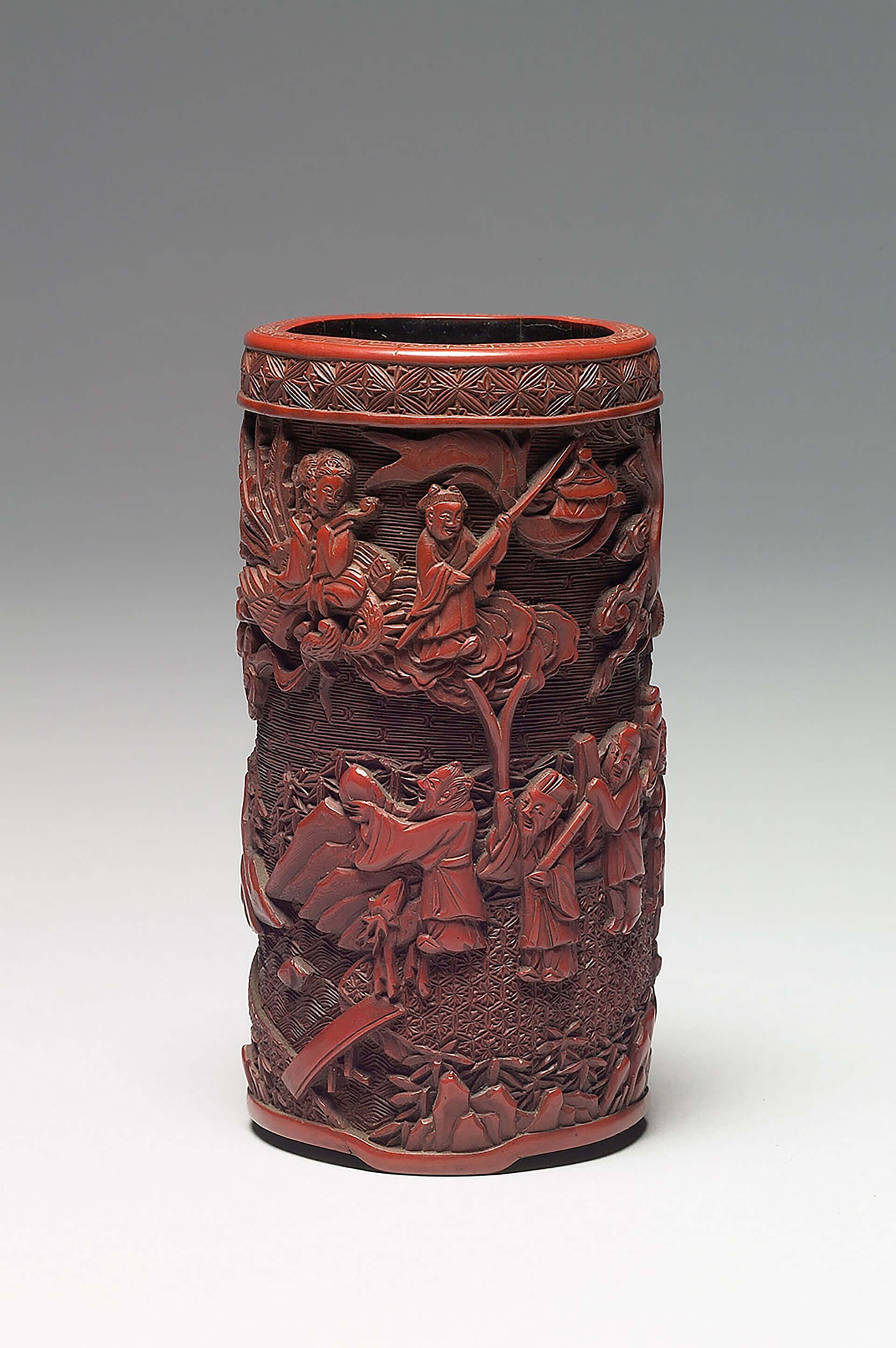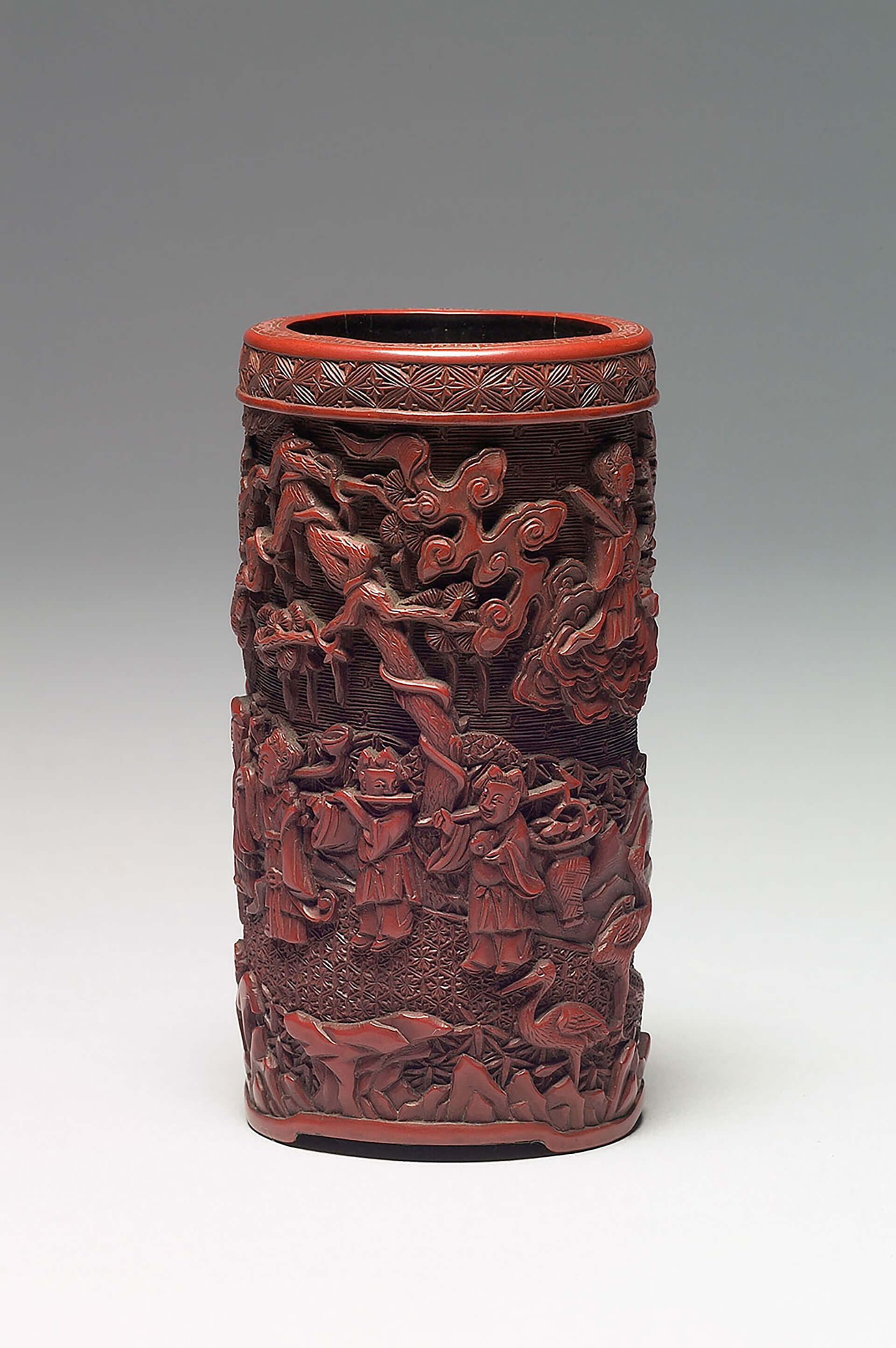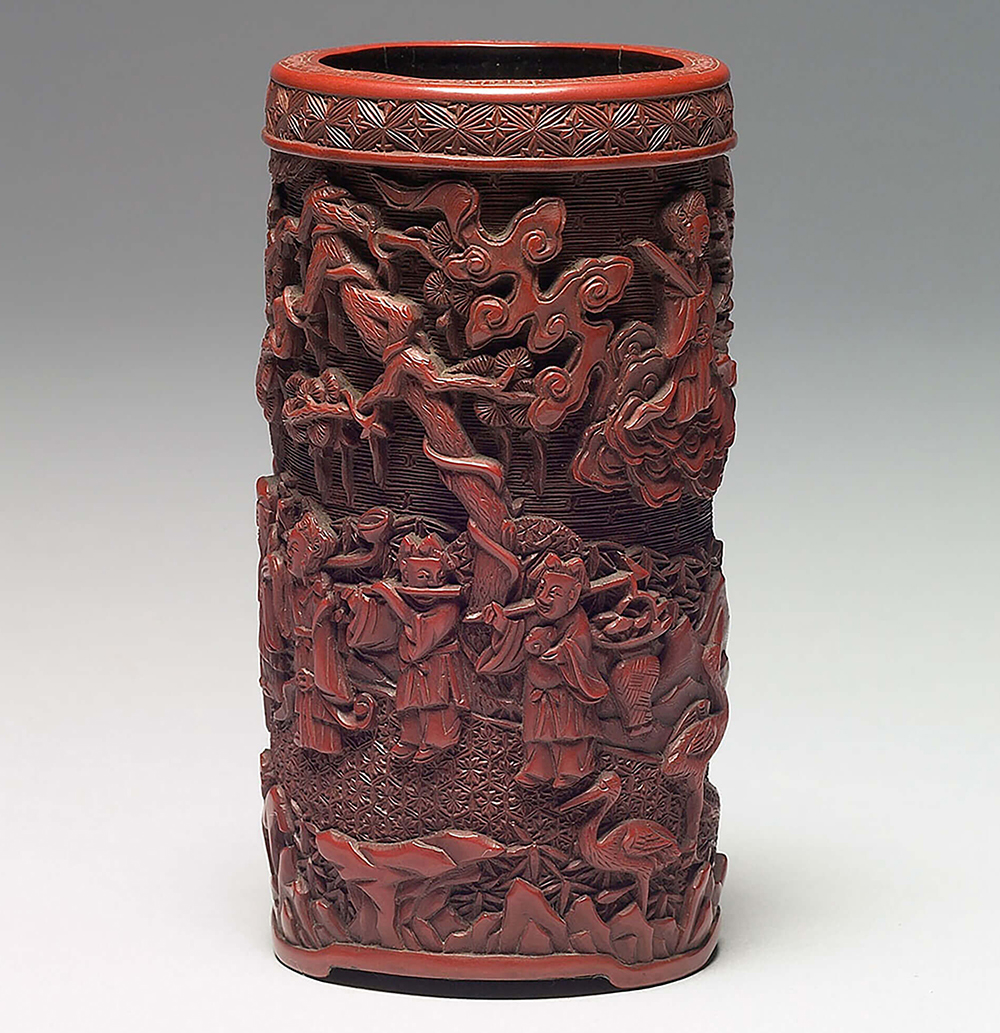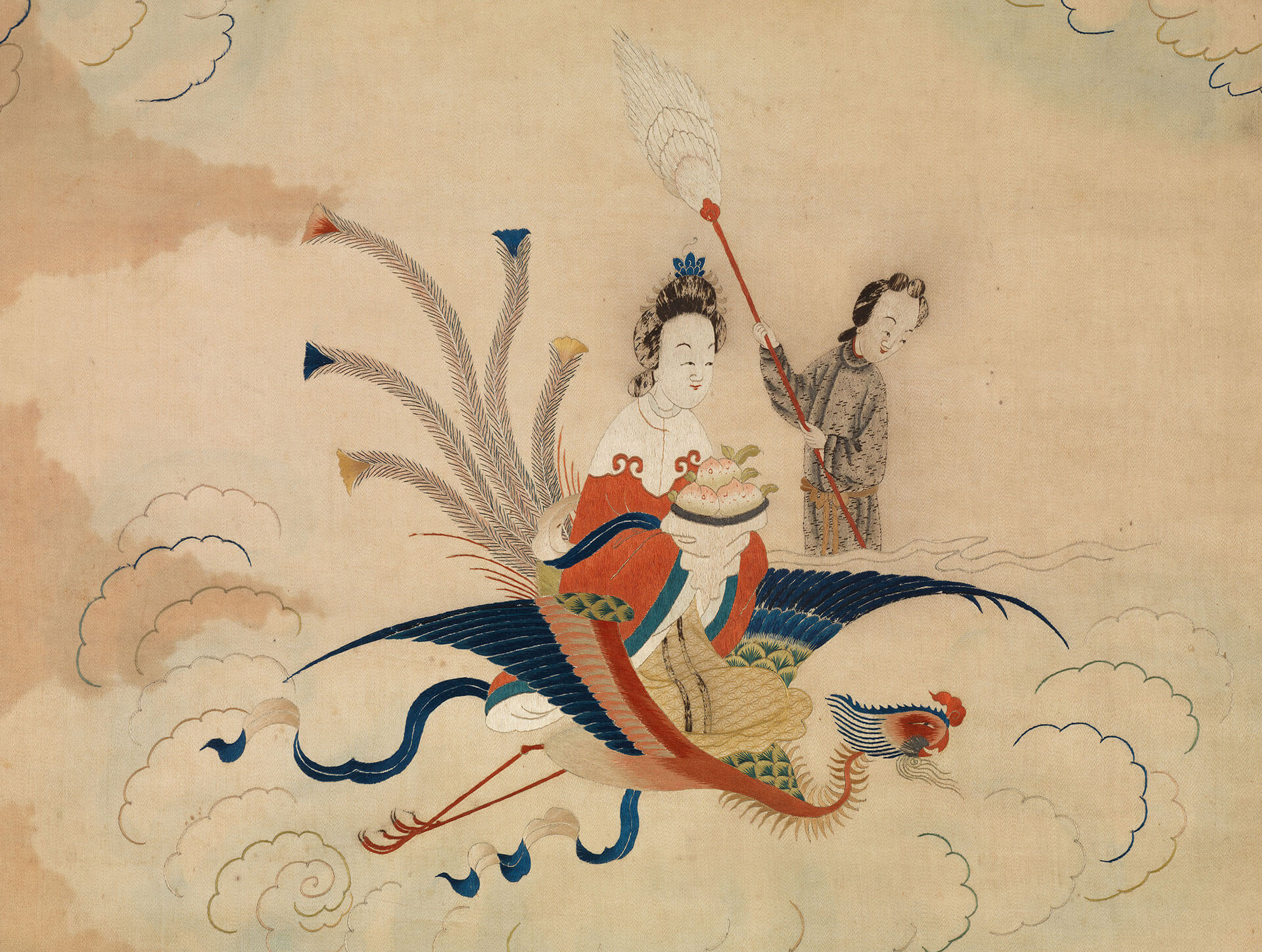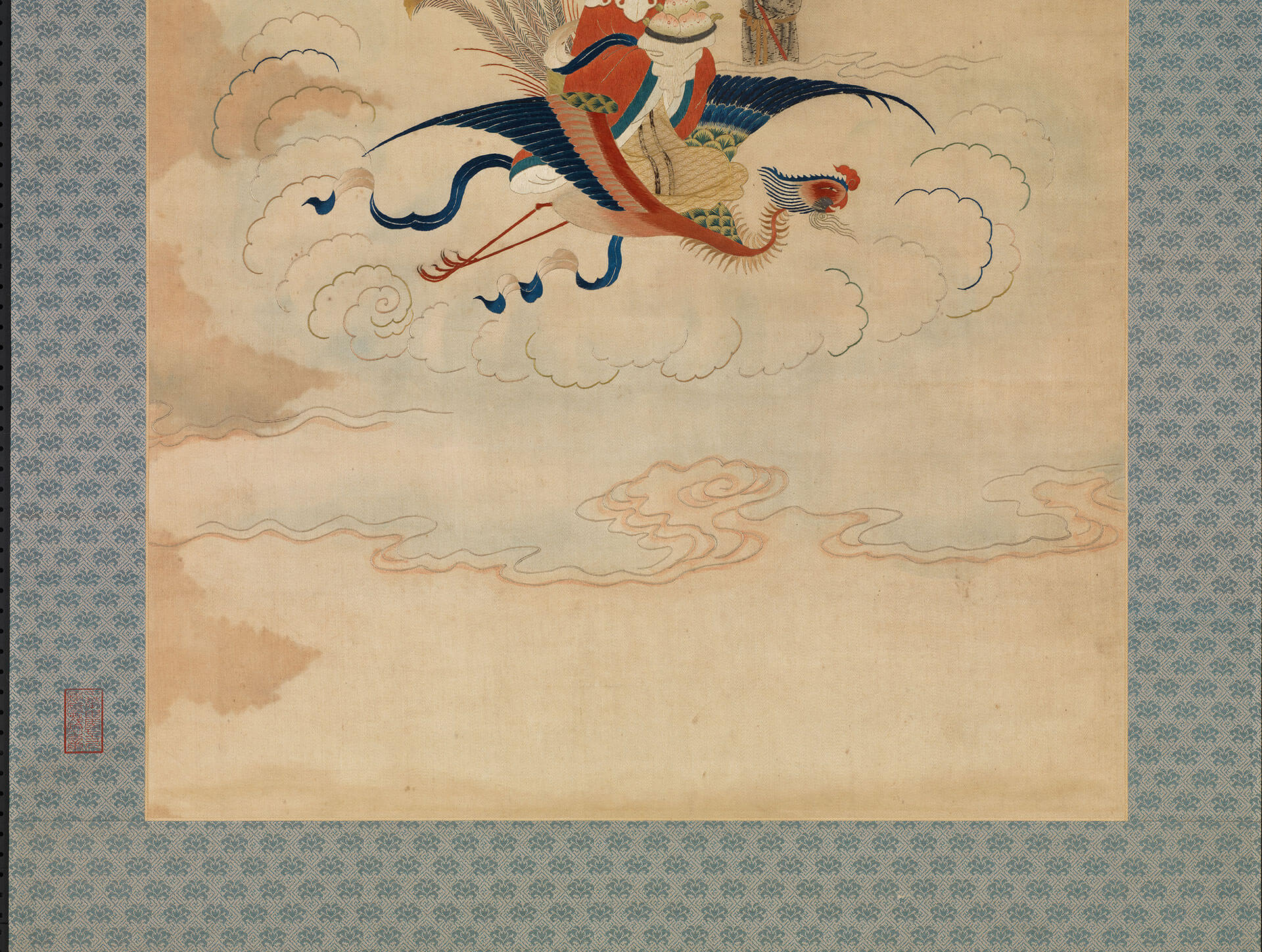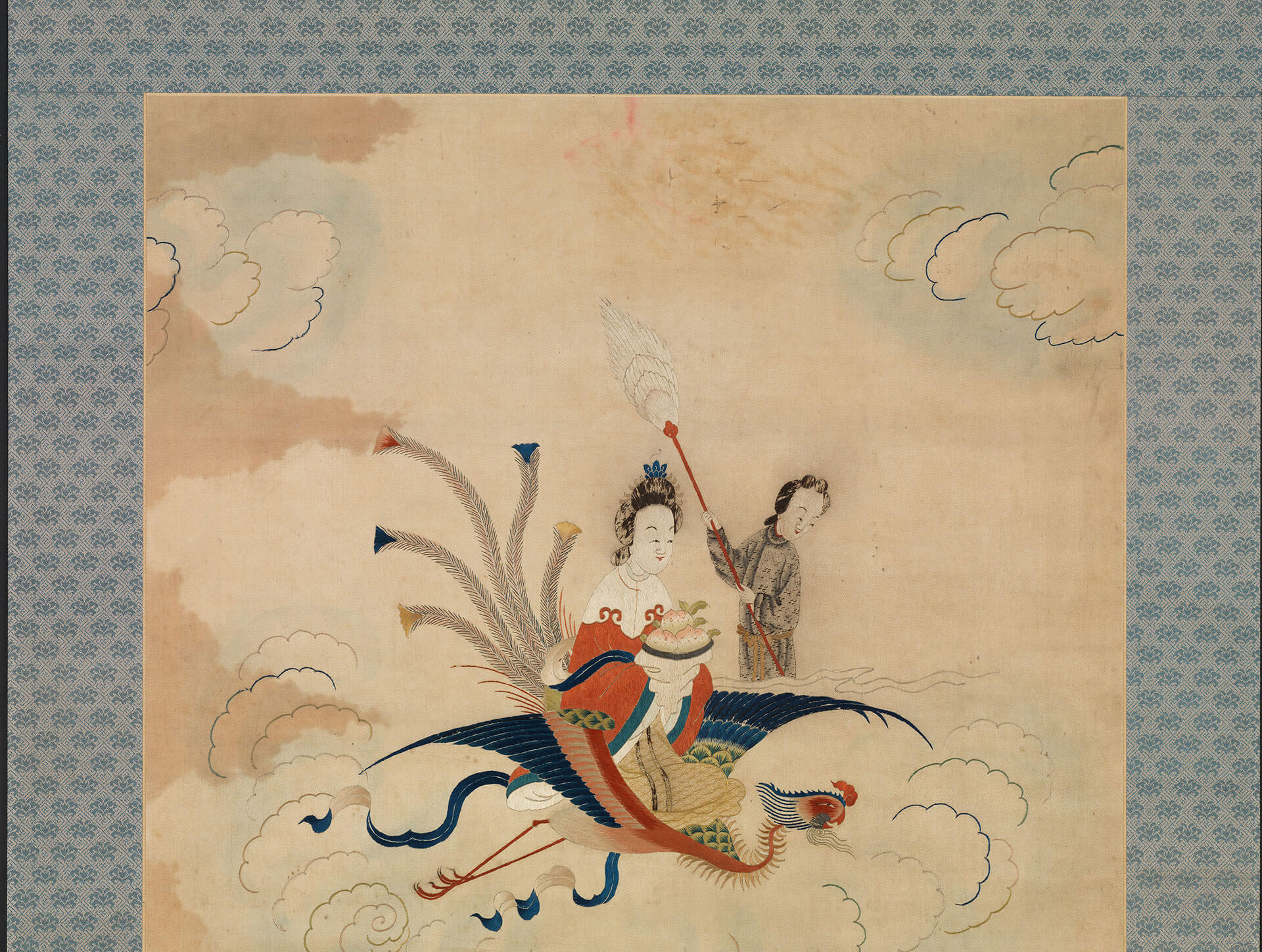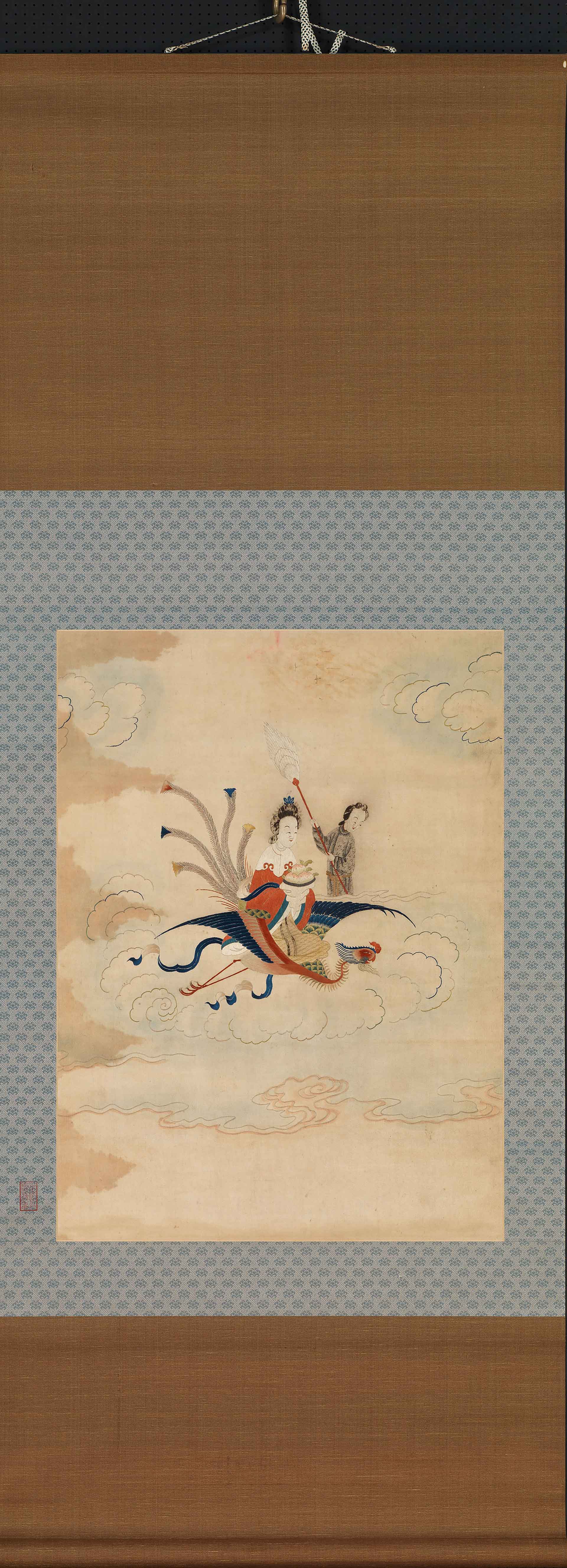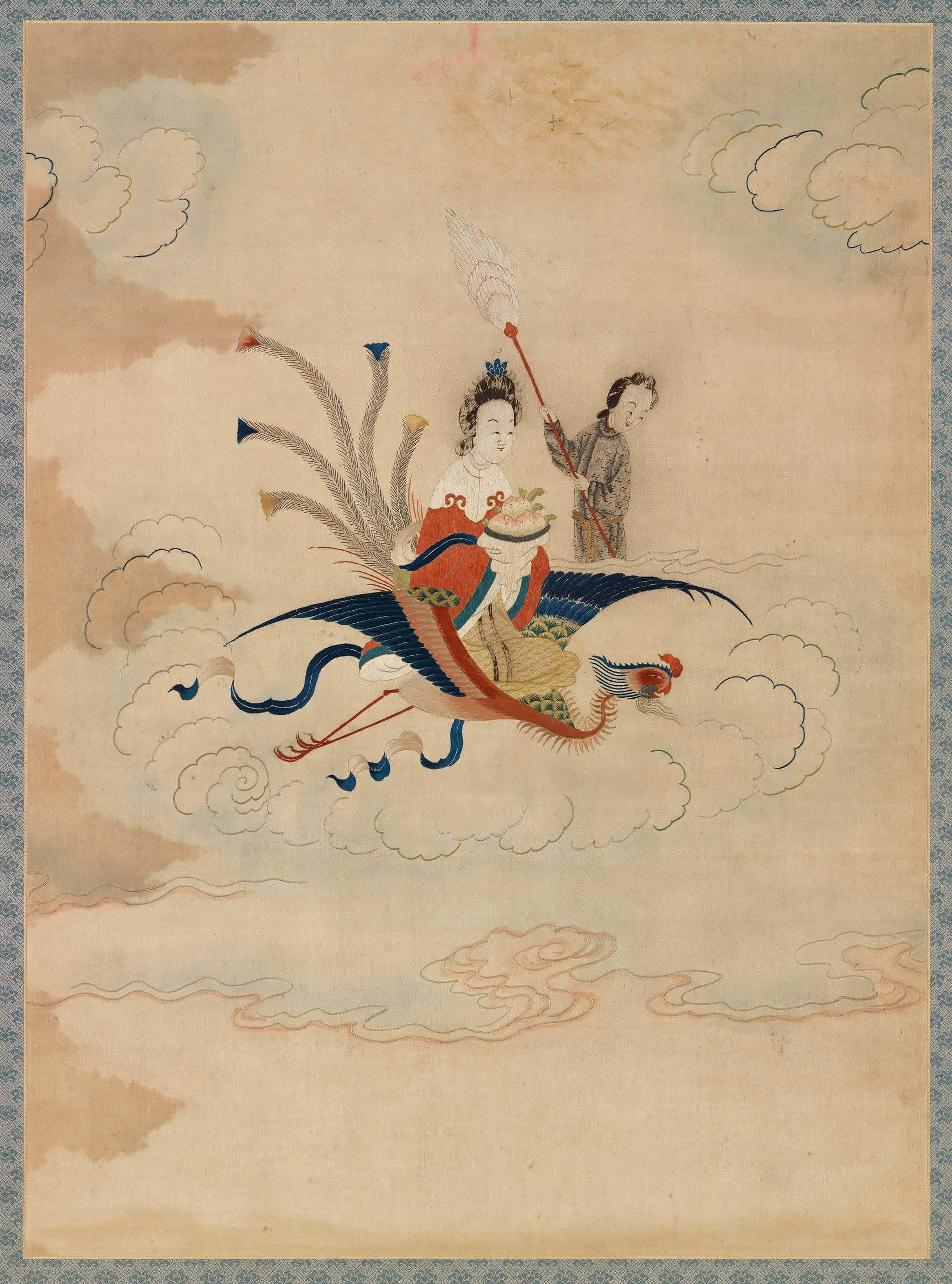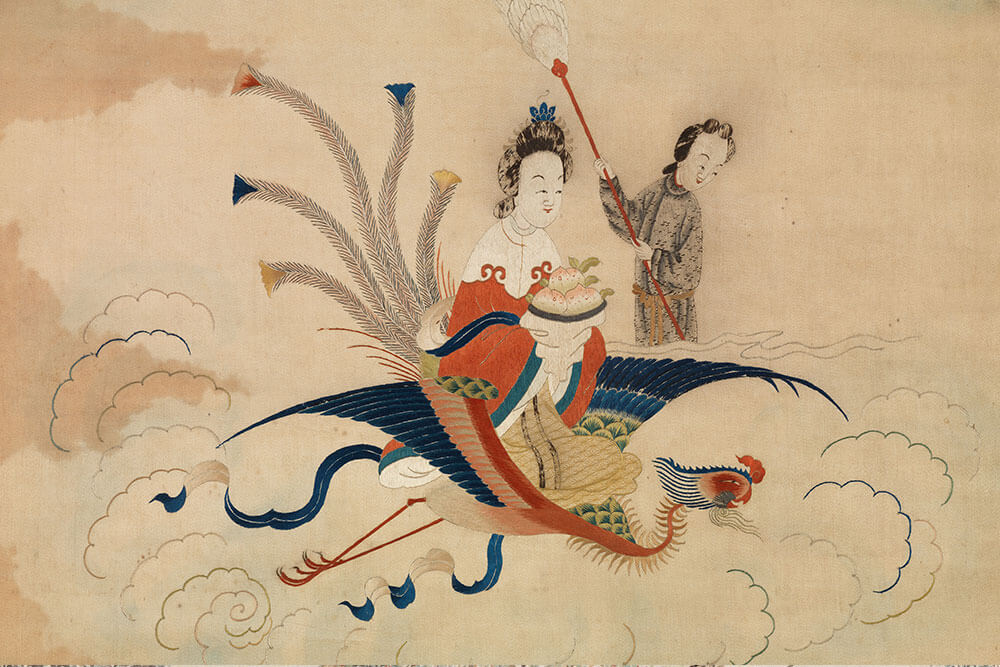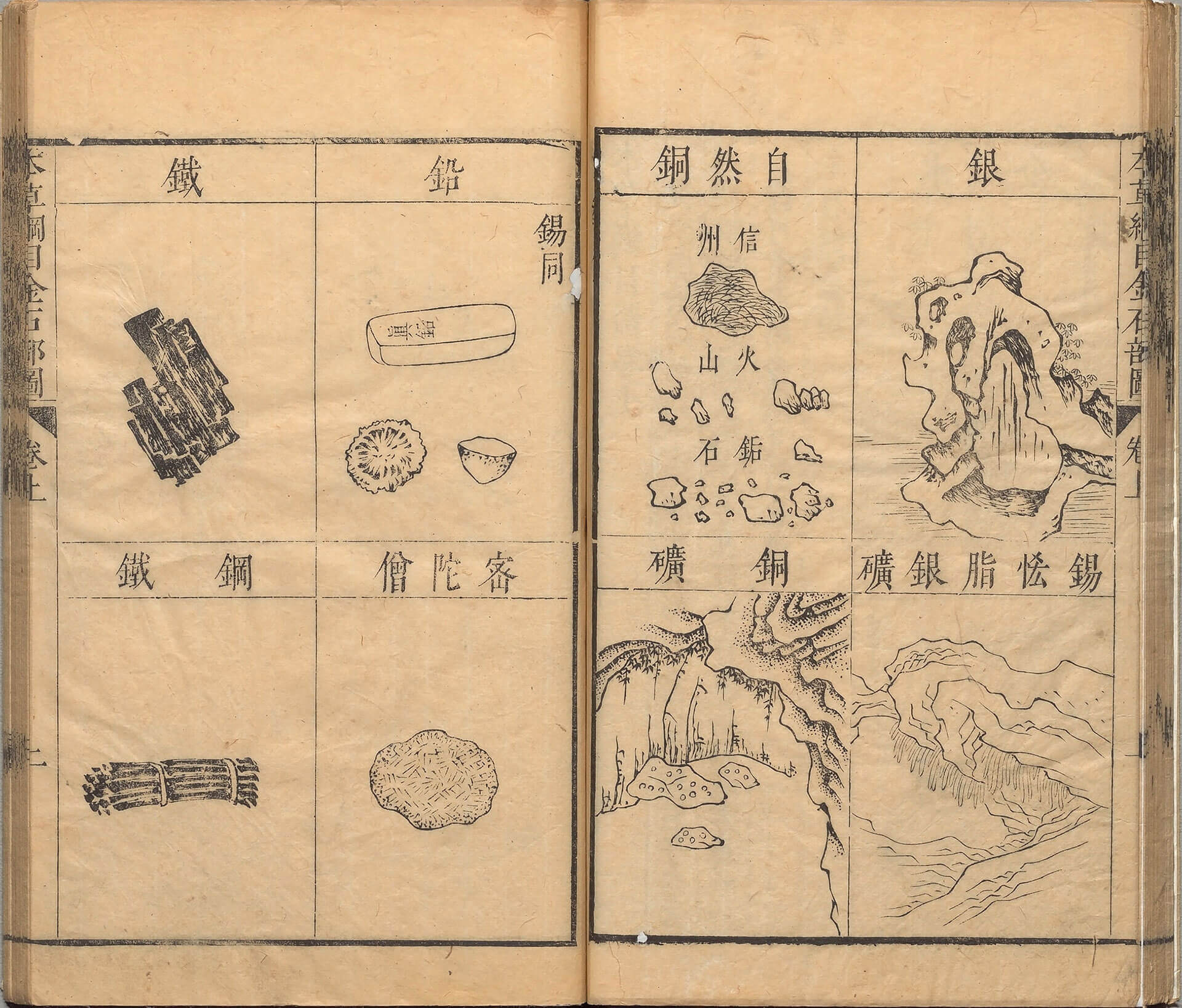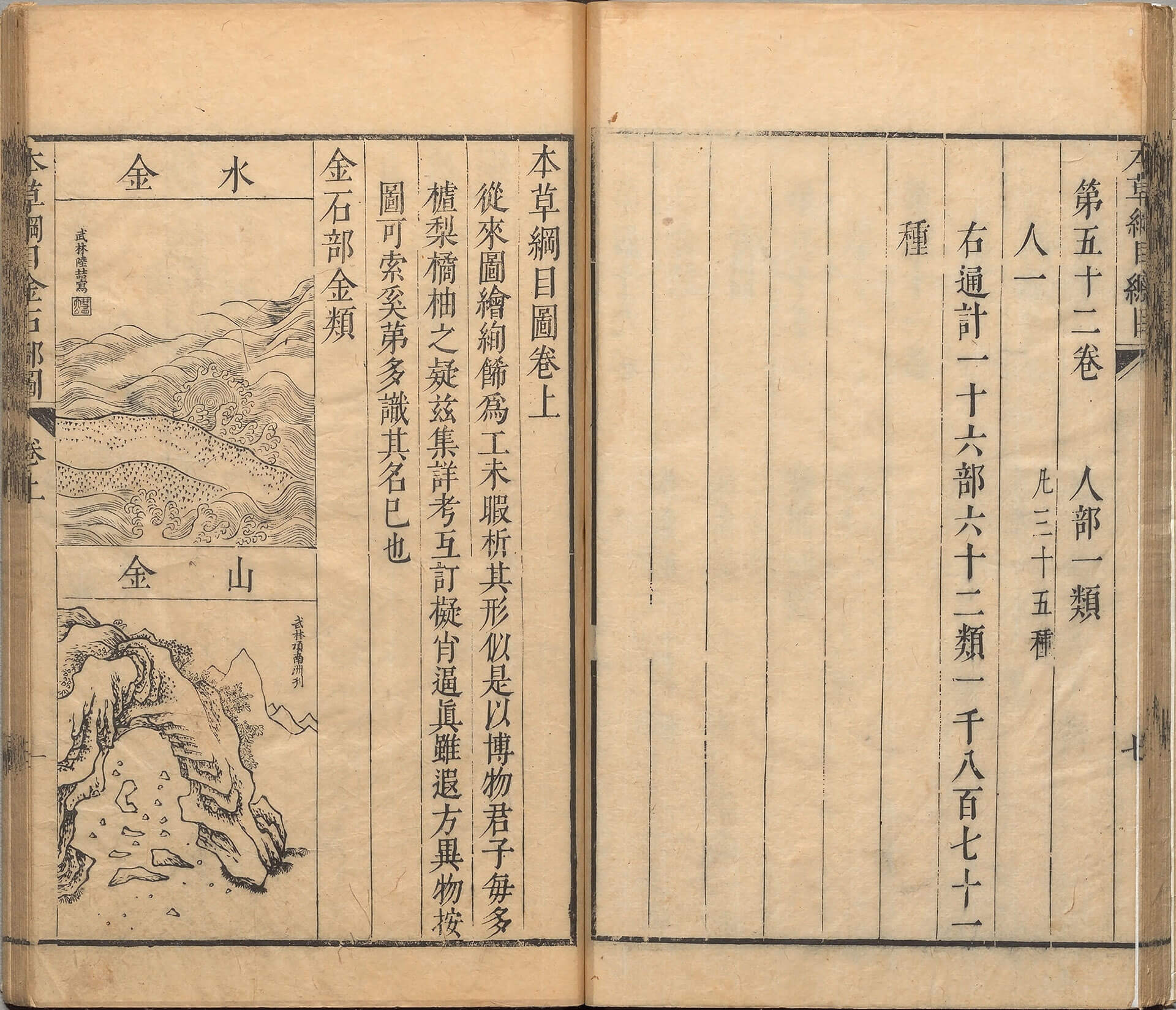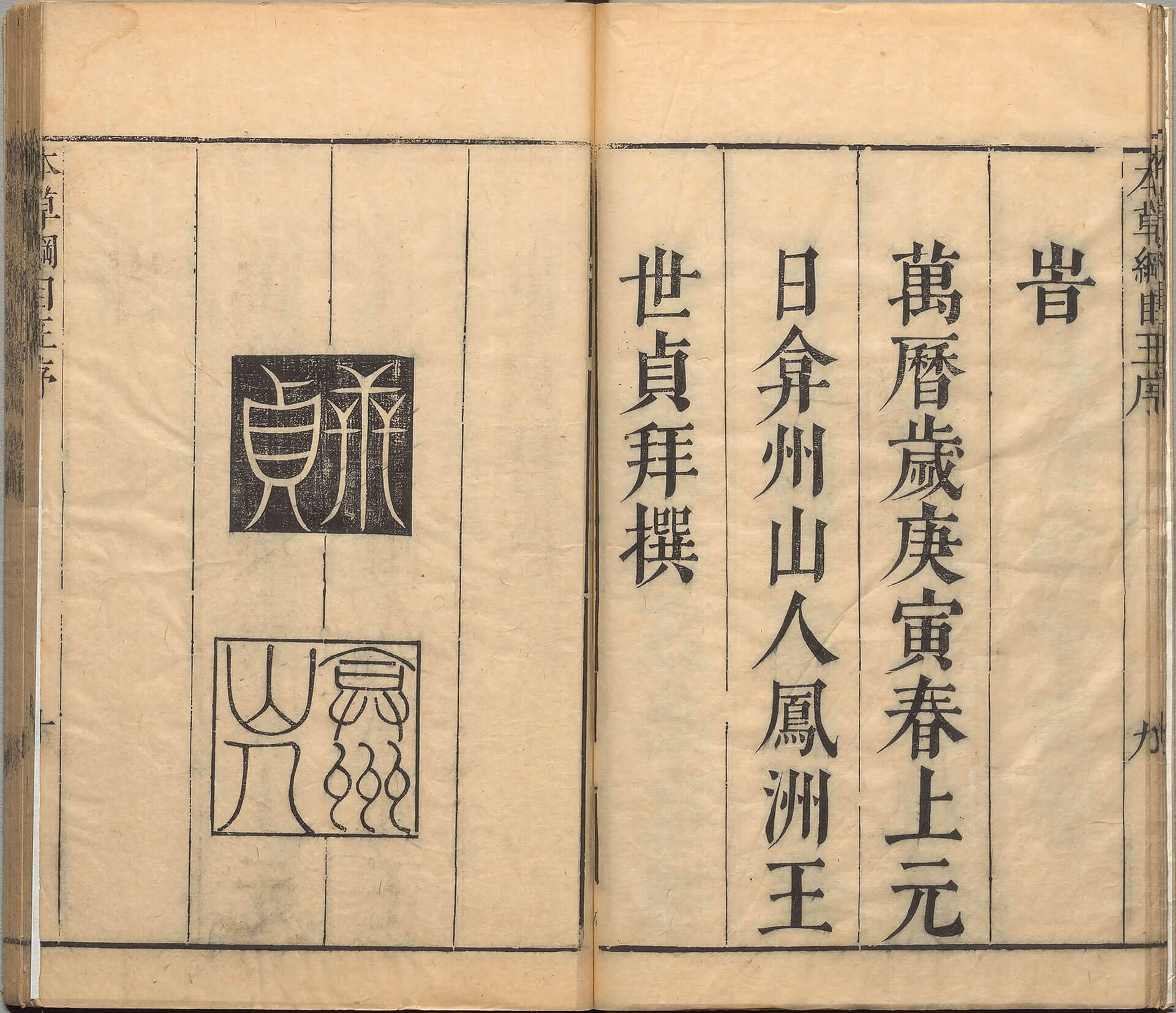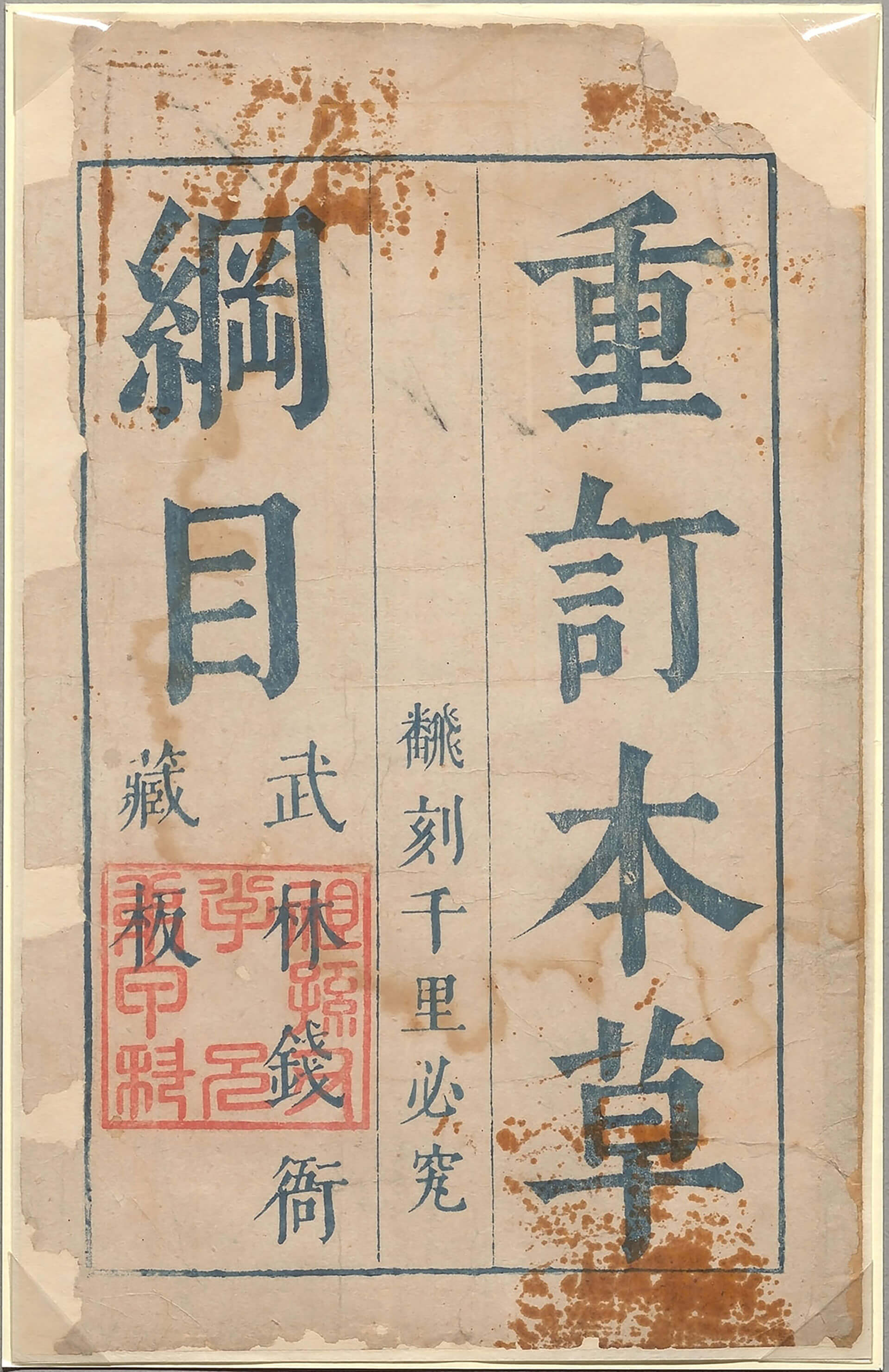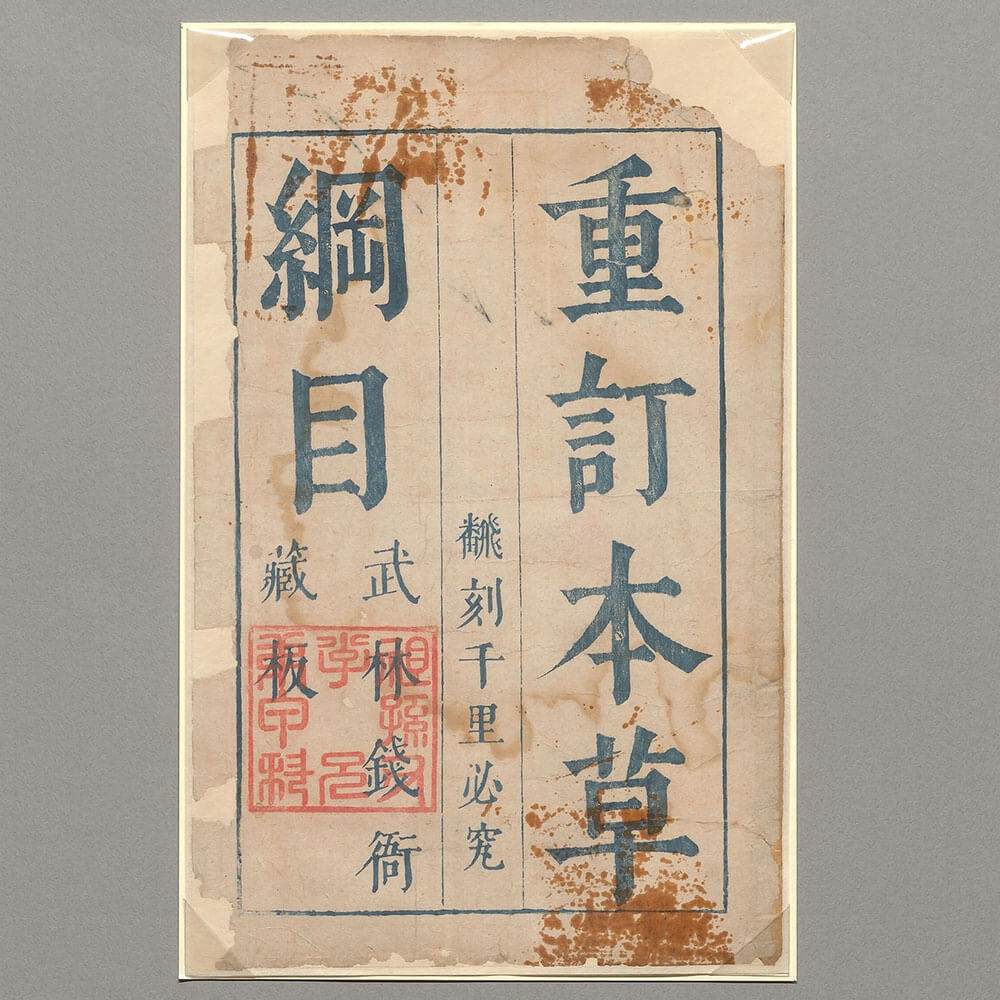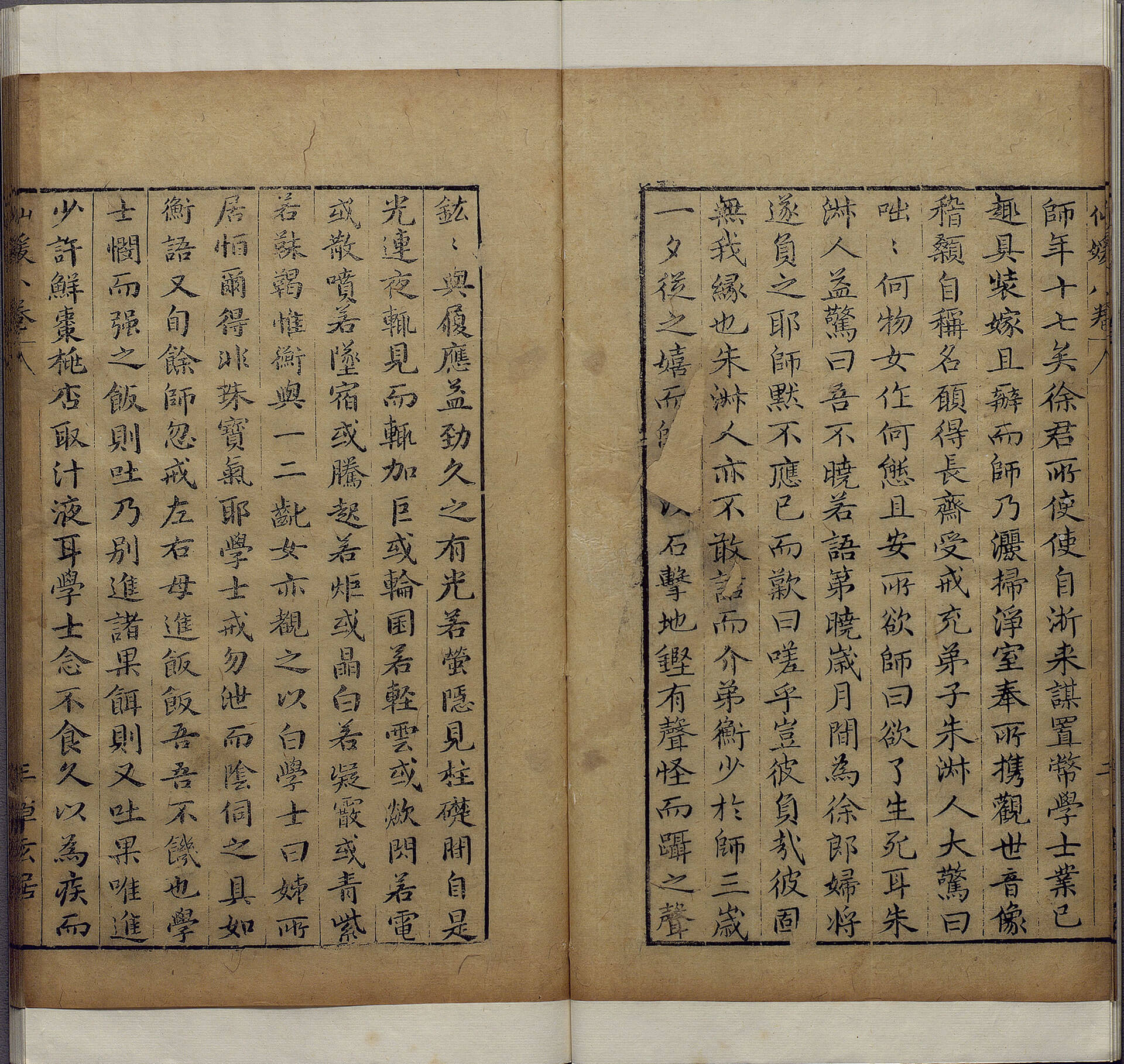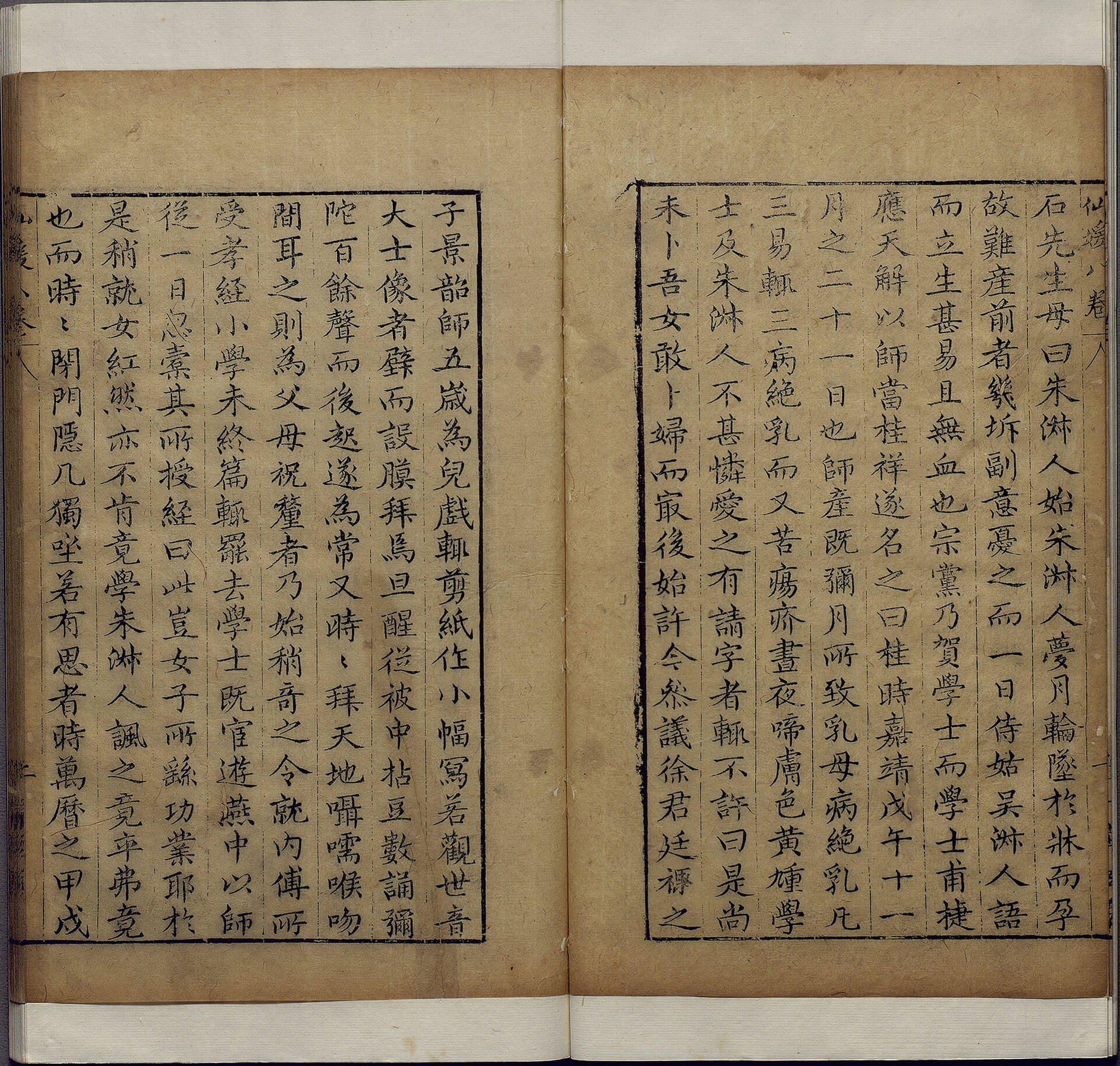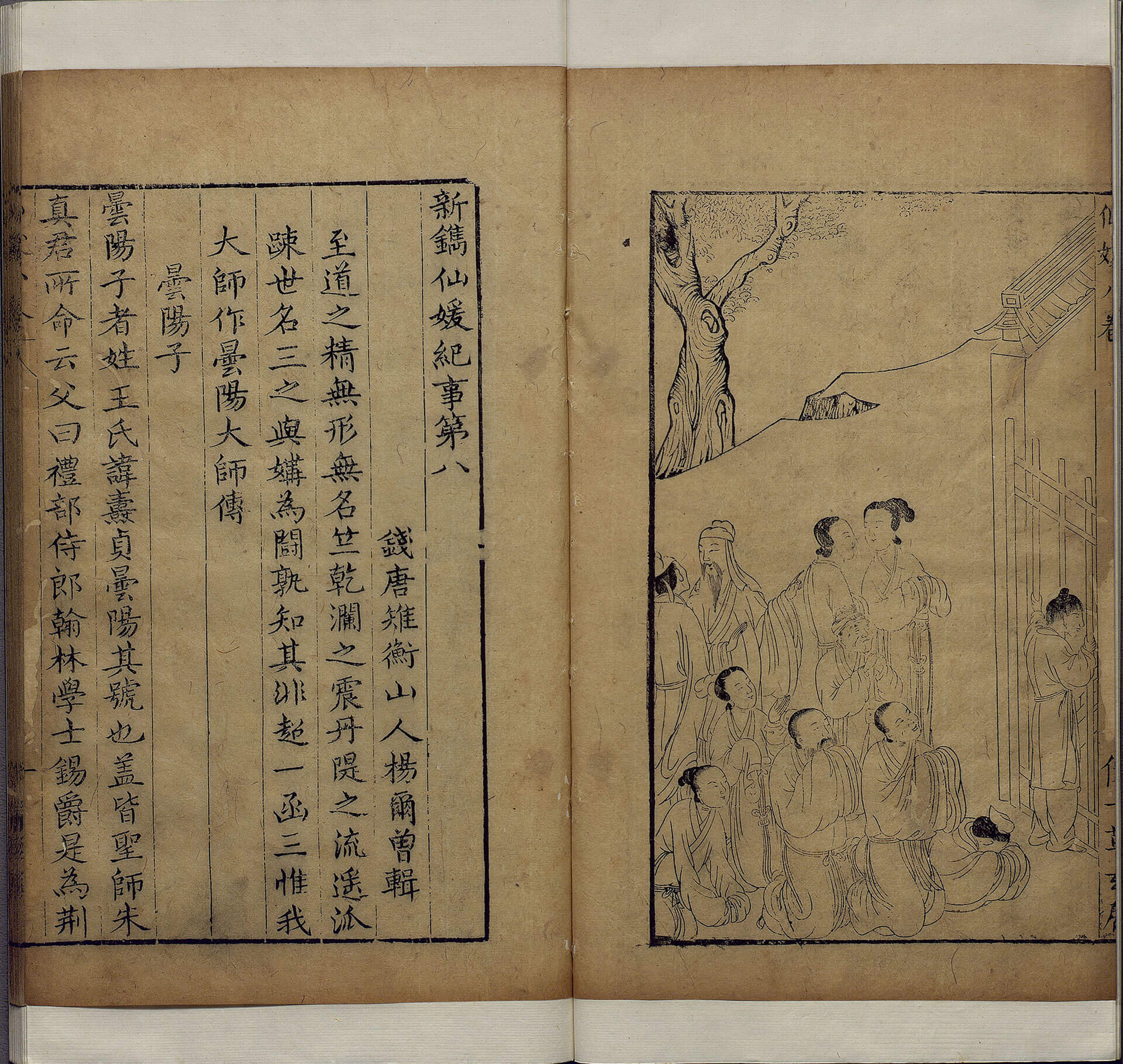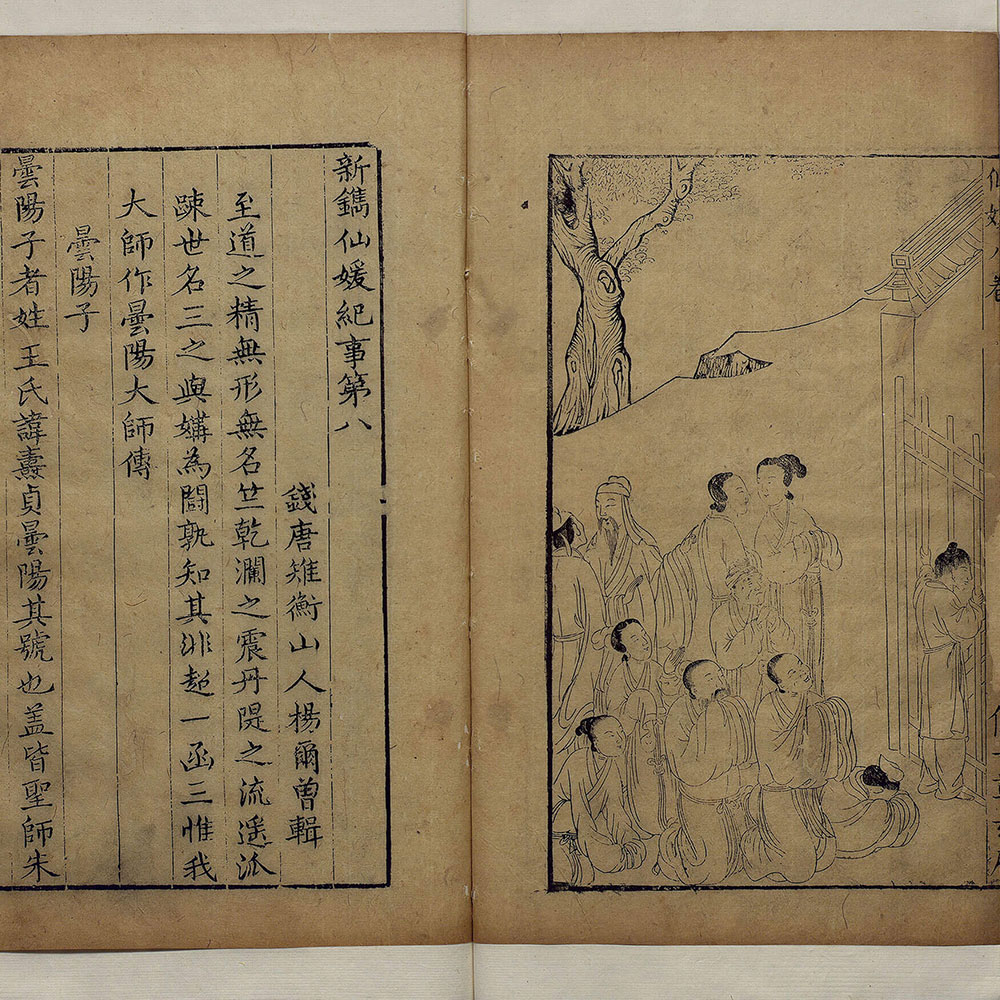Trendsetter in the Definition of Prosperity
As the leader of art circles at the time, Wang Shizhen was a driving force behind several new trends and helped define the level of prosperity seen in late Ming society. With a passion for the art of garden design, he invested a considerable portion of his assets during his lifetime into the building of gardens. He also wrote a travel diary of appreciating gardens and included illustrations of them as well, serving to further fuel the production of garden paintings. Following the trend in traveling, he inaugurated the custom of bringing along artists to create albums of travel paintings differing in style and meaning compared to previous ones, exemplifying a patron's actual influence on the arts and serving as a precedent for similar paintings in the following Qing dynasty. And when speaking of the now-famous Compendium of Materia Medica (Bencao gangmu) on traditional medicine, it was Wang Shizhen's recognition and preface of recommendation for this text that finally led to its successful publication. Wang Shizhen also highly praised Tang Yangzi, the daughter of Wang Xijue, leading to the rapid rise of religious belief in this young Taoist adept. Finally, the later "Biography of the Queen Mother of the West" attributed to Wang as its author led to the imagery of the Queen Mother of the West circulating even more widely. This section of the exhibit, based on trends that Wang Shizhen spurred or inaugurated, thus clearly reflects the "aura of his fine reputation spreading throughout the land" and the efflorescence of a prosperity and level of cultural refinement in society that he so proudly defined.
Visual Travelogue of A Journey Through the Waterways
- Qian Gu (1508-1578), Ming dynasty
This set album project was originally commissioned by Wang Shizhen (1526-1590) to record his boat trip to Beijing in 1574. However, it appears that Qian Gu (1508-1578) was reluctant to travel that far, and only painted the waterway scenery from Wang Shizhen's Small Zhi Garden to Yangzhou. This album comprises 32 leaflets, which are almost the same as the first volume of the collection of Memorizing a Boat Journey by Qian Gu and Zhang Fu. Nonetheless, the tone in this album is more refined and elegant; perhaps this is a copy made by Qian Gu at a later time. Qian Gu (style name Shubao), a native of Wu County in Suzhou, was uneducated as a youth but later came to study under Wen Zhengming (1470-1559). Qian excelled at landscapes and orchid-and-bamboo subjects. In his later years, he often painted for Wang Shizhen, and Wang also wrote biographies for Wu painters such as Qian Gu and Lu Zhi (1496-1576) in return to show courtesy.
Painting Album of the Great Canal Journeys
- Qian Gu (1508-1578), Zhang Fu (1546-1631), Ming dynasty
This set of paintings comes in three volumes with a total of 84 leaflets. The painters Qian Gu (1508-1578) and Zhang Fu (1546-1631) were commissioned by Wang Shizhen (1526-1590). According to the postscript, the pictures depict a journey of Wang Shizhen as he went to Beijing from his hometown via the grand canal in 1574. The first 32 leaflets (from the Small Zhi Garden to Yangzhou) were painted by Qian Gu on the road, while the rest of the 52 leaflets were painted by Zhang Fu as he accompanied Wang on the way to Beijing. Zhang's work was later handed to his mentor Qian Gu for polishing. The content of this set album is different from traditional paintings of scenic spots. In addition to the coastal scenery, there are also administrative units and river facilities that had never been included in any painting before. Hence, it is a form of documentary painting under the instruction of Wang Shizhen, and this attempt reflects Wang's endeacvors to help preserve history.
Carved-red lacquer brush holder decorated with the eight immortals celebrating birthday
- Ming dynasty (1368-1644)
- Exhibition time I. 10.5(Wed.)-12.25(Sun.)
- Exhibition time II. 12.28(Wed.)-3.21(Tue.)
The cylindrical brush holder has a heavy lacquer coating in a dark and lustrous rouge, and carved trees, clouds, and figures sit upon the lacquered ground. The layering images and sharp carvings show the characteristics of Jiajing and Wanli reign. The middle scene has the Eight Immortals led by Zhang Guoliao presenting the longevity peach to the Holy Deity of the West above. The Eight Immortals was an adored theme in the late Ming dynasty, and the Eight Immortals Celebrating Birthday was an essential topic of Chinese operas during the Song and Yuan dynasties. However, seeing the Eight Immortals and the Holy Deity of the West was quite unusual. The Holy Deity sits upon the phoenix and holding a ruyi sceptre at hand, descending from the sky with companies of young lads in the front and girls at the back; her greeting with the Eight Immortals presents an auspicious and prosperous scene, which was a collaboration of literati and civil cultures.
Royal Mother of the West, from Eight Immortals Rejoicing in Longevity Series, panel 11
- Gu-family Style Embroidery
- Ming dynasty (1368-1644)
- Exhibition time I. 10.5(Wed.)-12.25(Sun.)
This is one of the twelve scrolls of the album Eight Immortals Celebrating Longevity, with the colored embroidery of the Royal Mother of the West. In addition to the Eight Immortals, the series also includes the Royal Mother of the West, the Old Man of the South Pole, and the Two Gods of Harmony and Union. Each scroll has one embroidered immortal on it.
The "Biography of the Royal Mother of the West" was written purportedly by Wang Shizhen, and this text helped shape the immortal's image which later spread widely in the society. In this text, the Royal Mother is no longer a combination of human and beast, but instead has the appearance of a graceful and elegant deity. In this embroidery, the Royal Mother descends from the sky on a phoenix with a maid by her side, surrounded by auspicious clouds. The ribbons of her attire are seen flying in the air. The embroidery is exquisite with fine details. The phoenix's tail was first dyed and then embroidered. The combination of embroidery and painting renders a novel effect. Also, various stitching methods, such as the long-and-short technique, split stitch, and web embroidery, were ingeniously incorporated with diverse elegant colors adopted. Such features vividly present the image of the Royal Mother which has prevailed since the late Ming dynasty.
Compendium of Materia Medica
- Li Shizhen (1518-1593), Ming dynasty
- Exhibition time I. 10.5(Wed.)-12.25(Sun.)
The Compendium of Materia Medica is a masterpiece of pharmacology by Li Shizhen, a Ming-dynasty pharmacologist, who incorporated his personal investigations on the basis of herbal and medicinal records from the previous dynasties. When Li completed the first draft of the book, he asked Wang Shizhen, the leader of the literary circles at that time, to write a preface to the book; however, Wang discovered the inadequacy of the manuscript and told Li to conduct revisions on it. Ten years later, Li Shizhen visited Wang Shizhen again with the carefully revised edition of the Compendium of Materia Medica. Wang was very satisfied with this edition and readily agreed to write a preface for Li. With the recommendation of Wang Shizhen in the preface, publishers in Nanjing were all trying to publish this edition with Wang's preface. In the end, the book was engraved and published by Hu Chenglong, a Nanjing-based bibliophile and publisher, and this edition has since ci
Newly Carved Chronicles of Female Transcendents
- Yang Erzeng (1575-?), Ming dynasty
- Exhibition time II. 12.28(Wed.)-3.21(Tue.)
Wang Taozhen, the second daughter of Wang Xijue (1534-1610) is perhaps better known by her monastic name Tanyangzi. She sat in front of her fiancé's tomb and underwent the process of transcendence in the presence of more than 100,000 people, which was a major social event in the late Ming dynasty and received much attention from the circles of artists and literati in southeastern China. Behind this fad, Wang Shizhen and his "Biography of Master Tanyang" were the most important elements which facilitated this "god-making campaign" and Wang also spurred the trend of publishing biographies of transcendents in his time. Yang Erzeng's Newly Carved Chronicles of Female Transcendents was written specifically under such a cultural background. This exhibited work records the stories of women who became immortals in the previous dynasties. Incorporating the illustrations and the excellent engraving of Huizhou printmaking artists, the book certainly facilitated the spread of its texts, beliefs, and aesthetics with its exquisite content and details.
